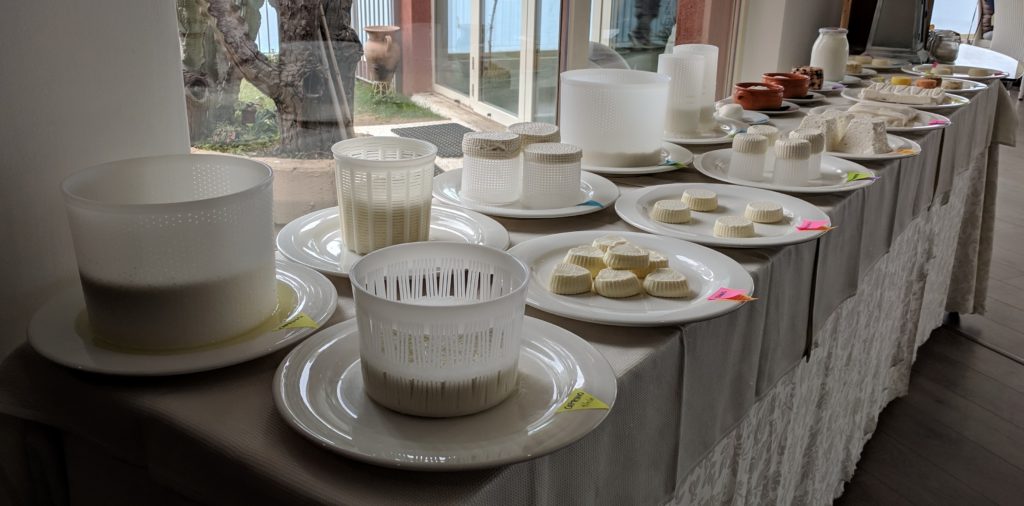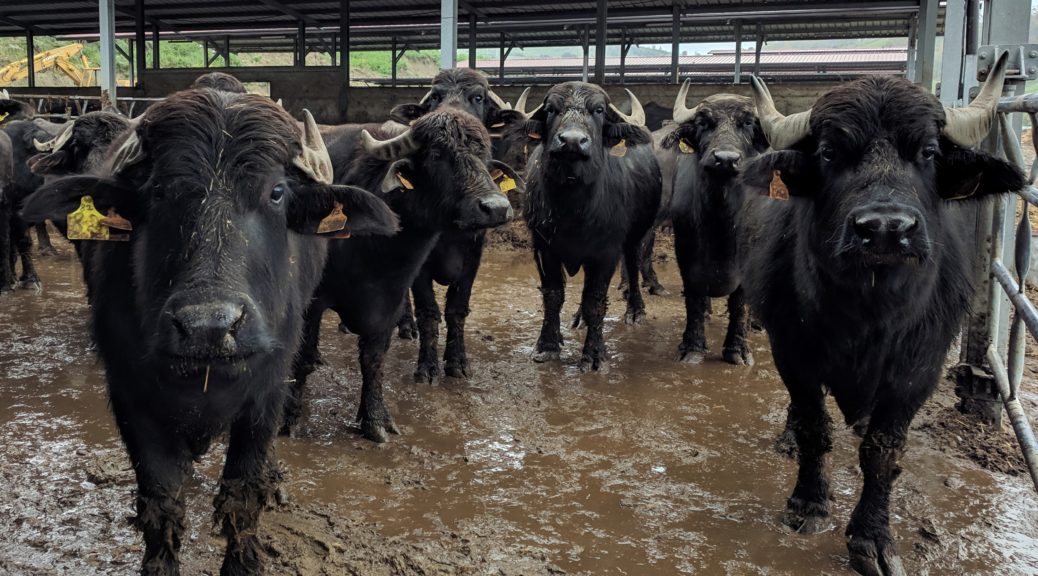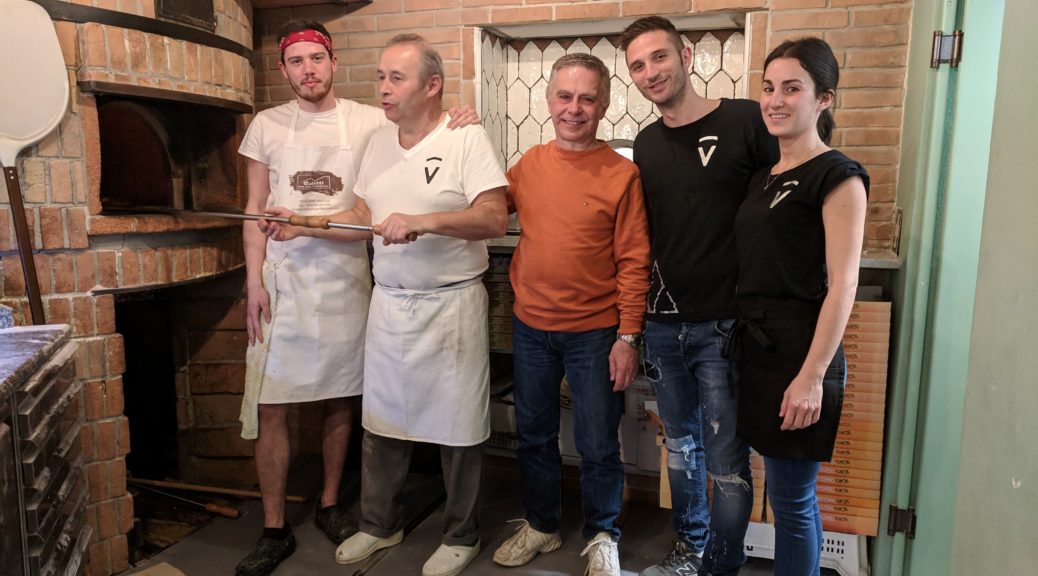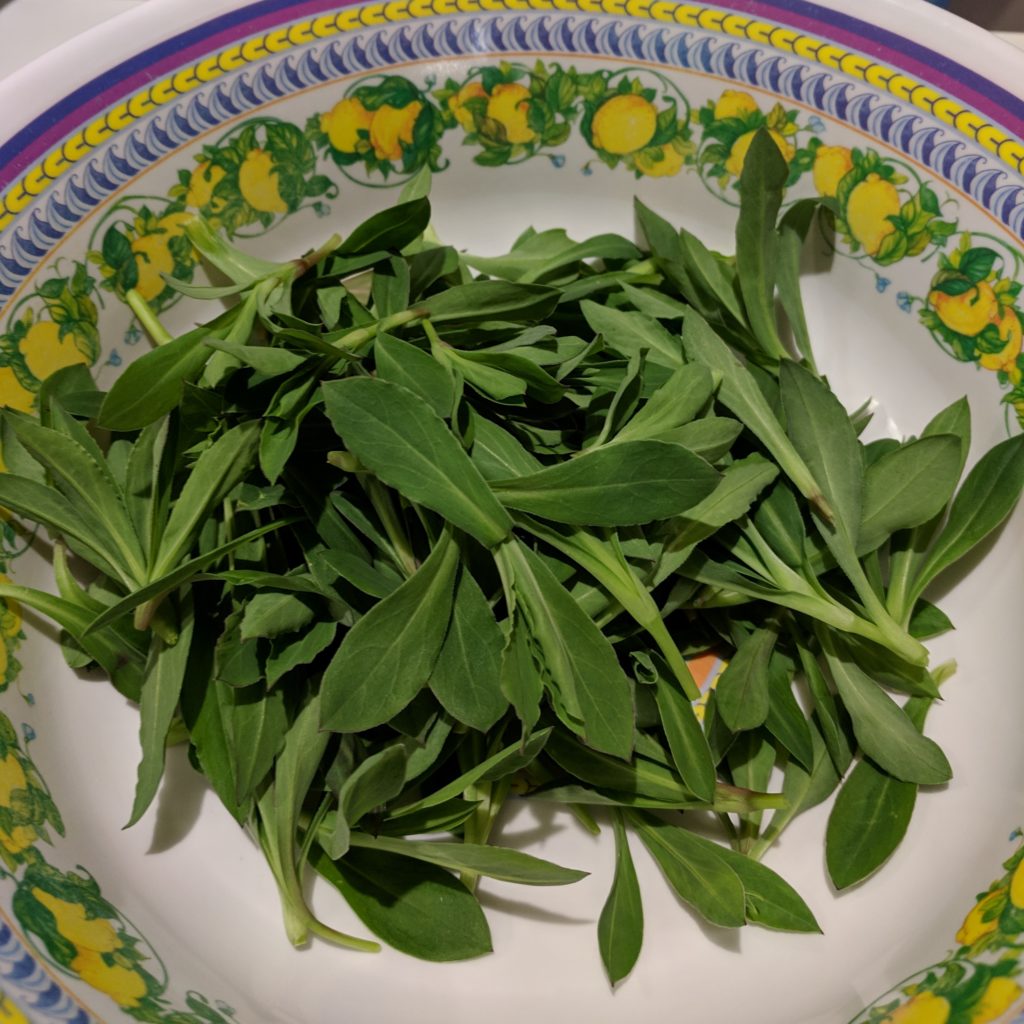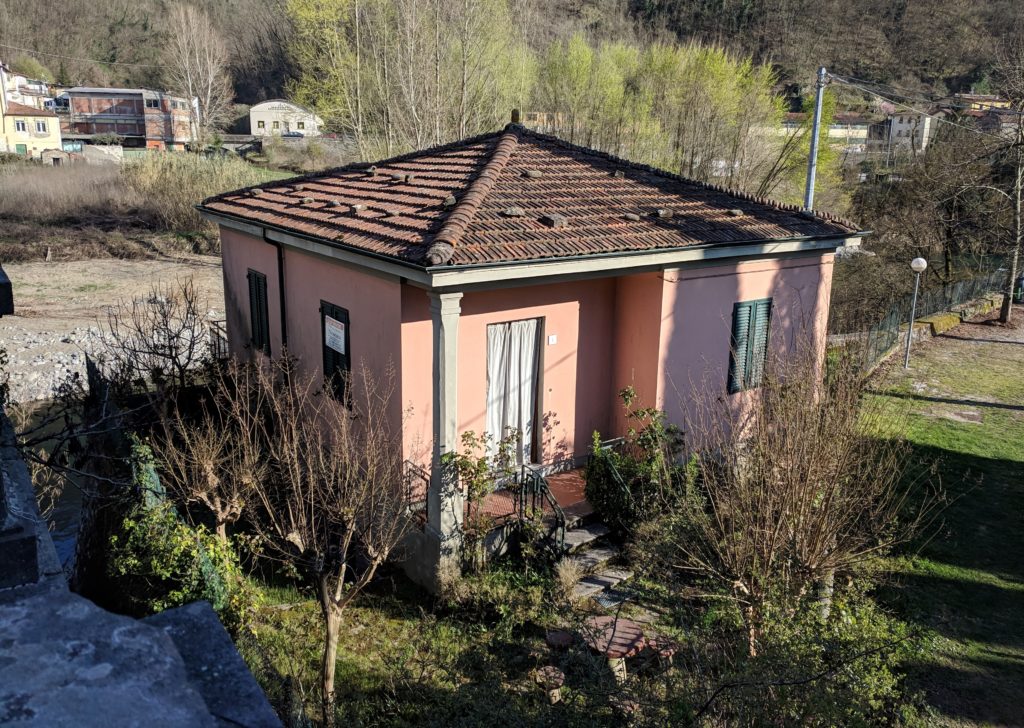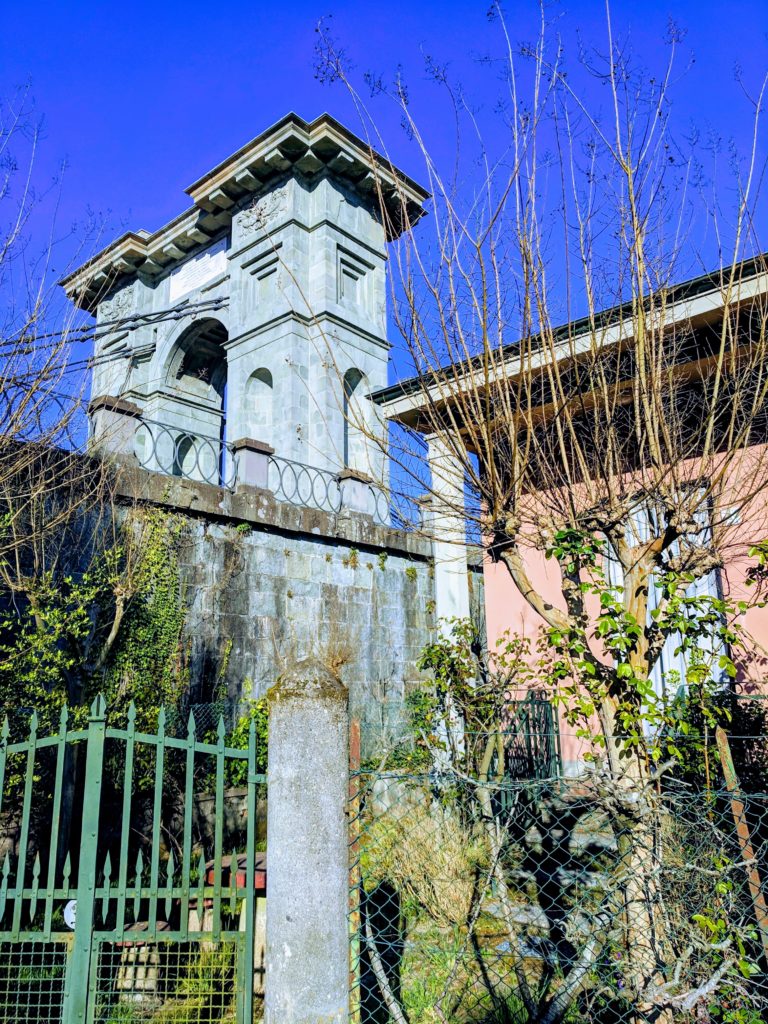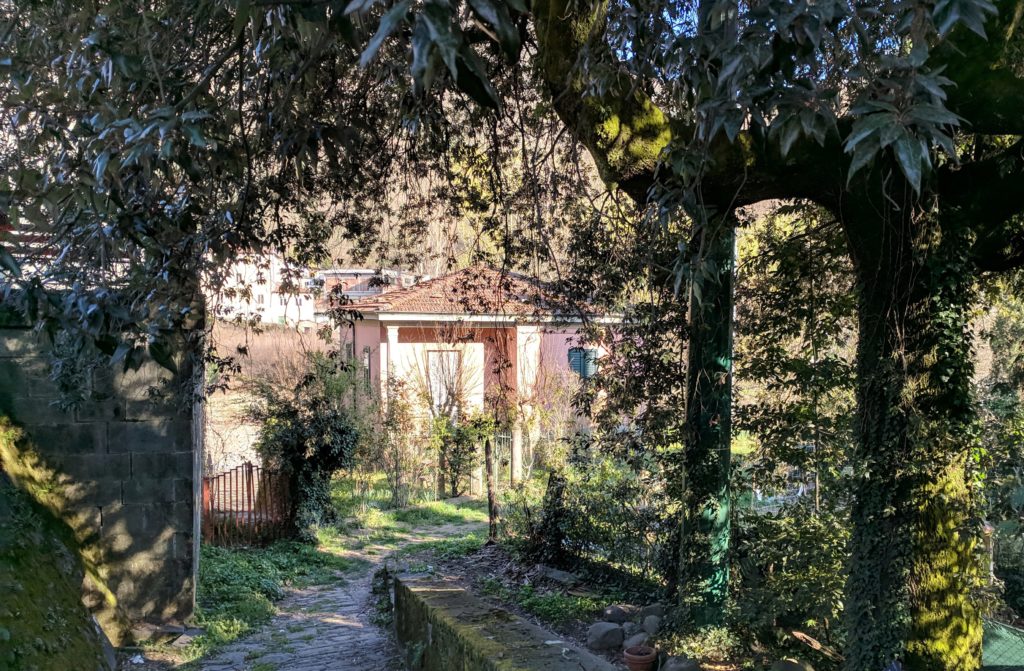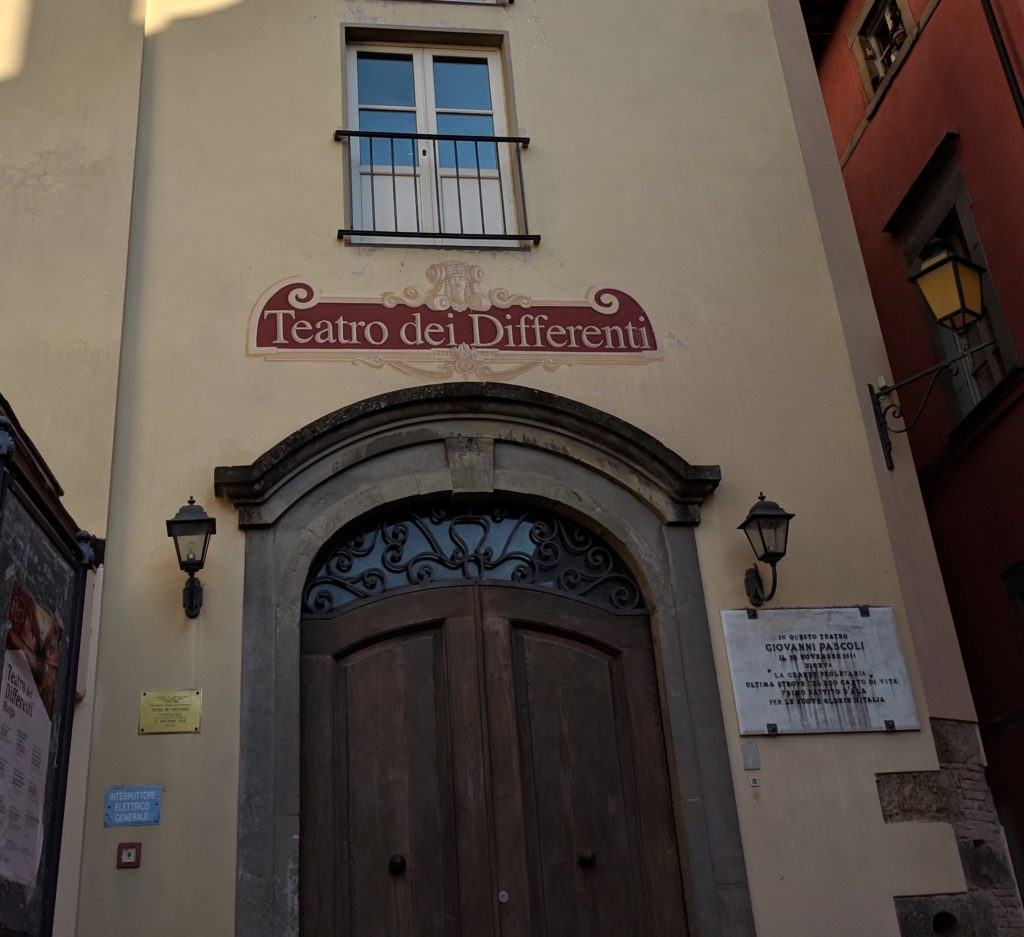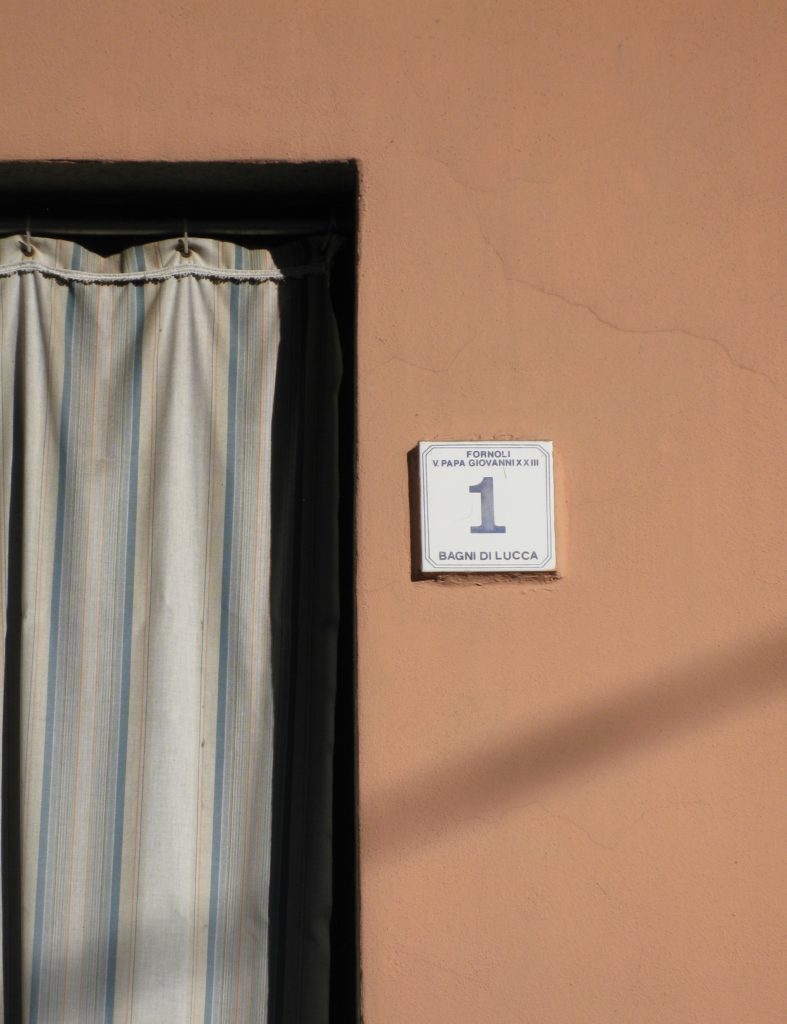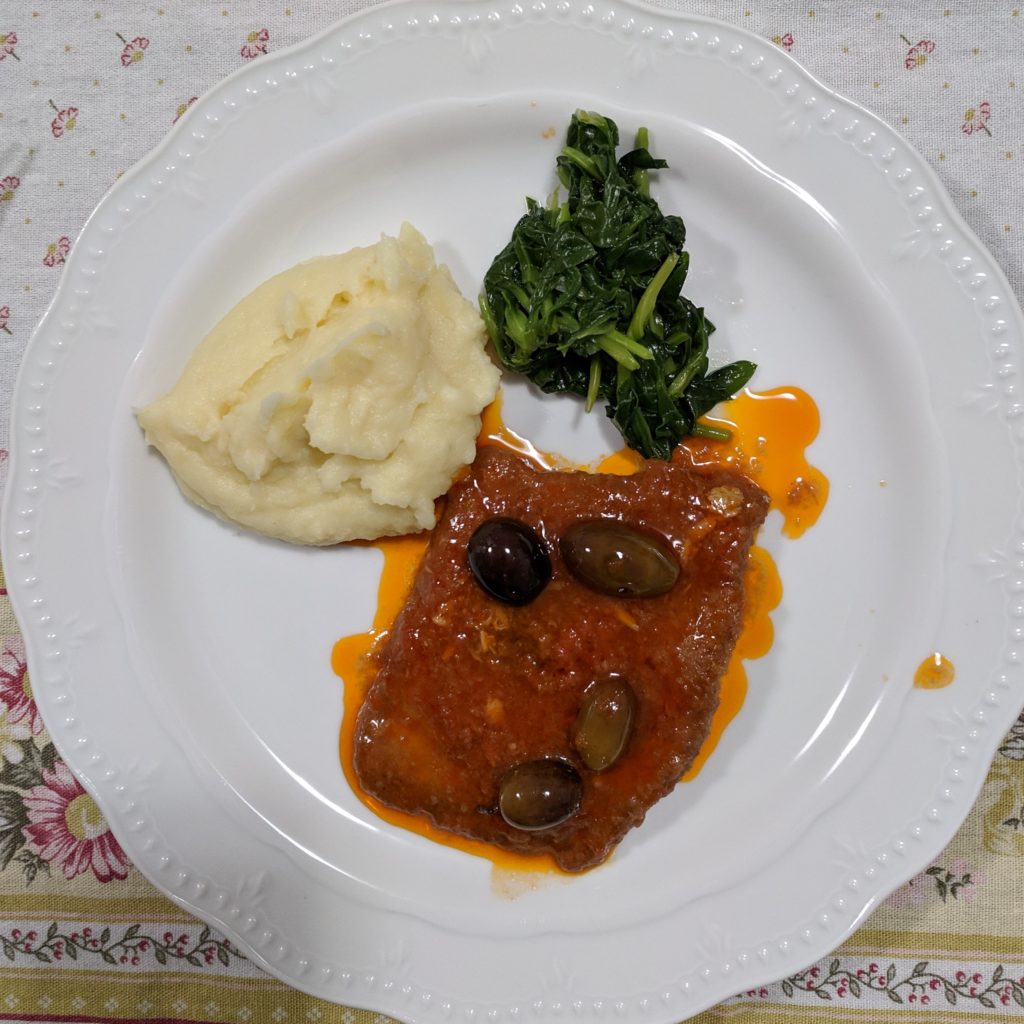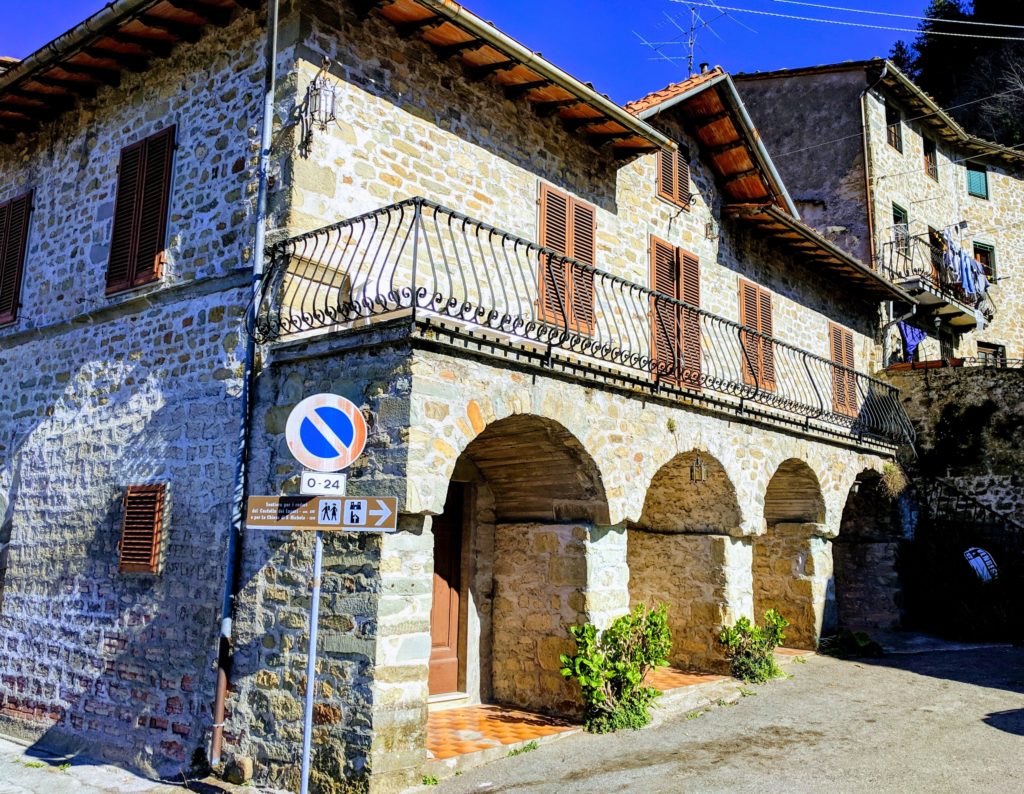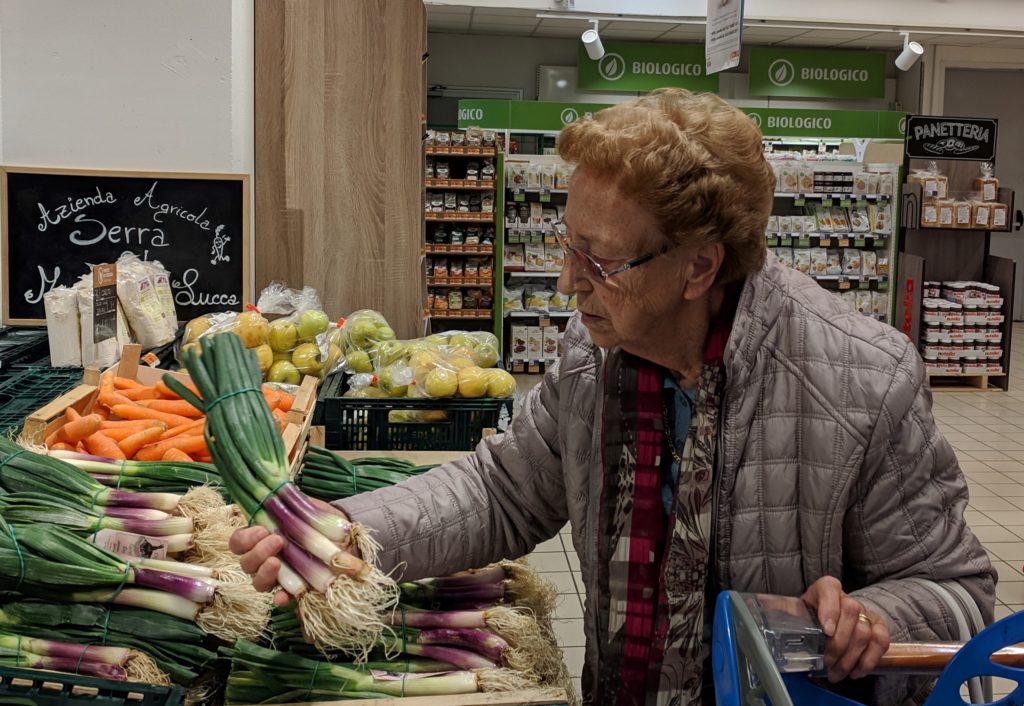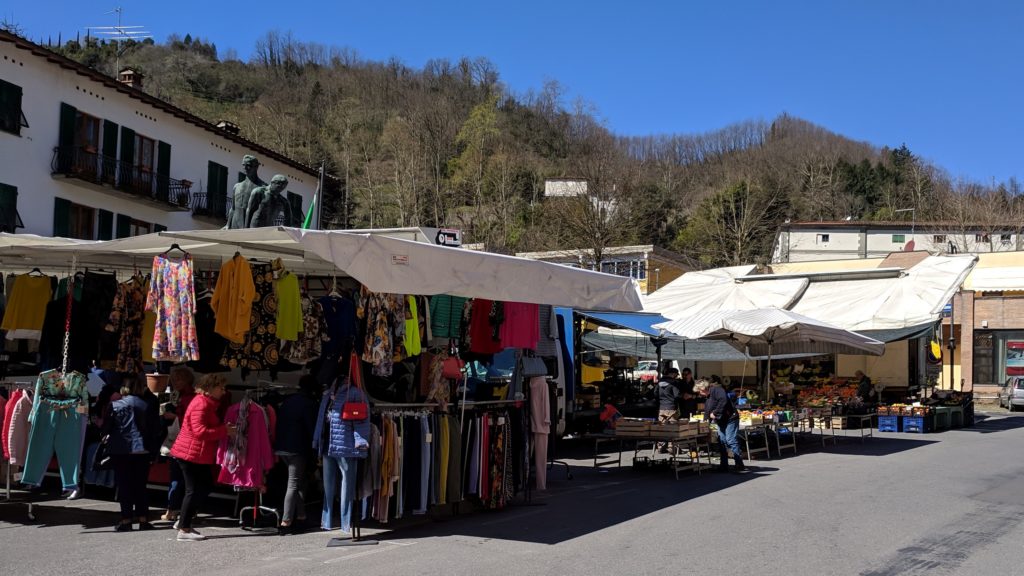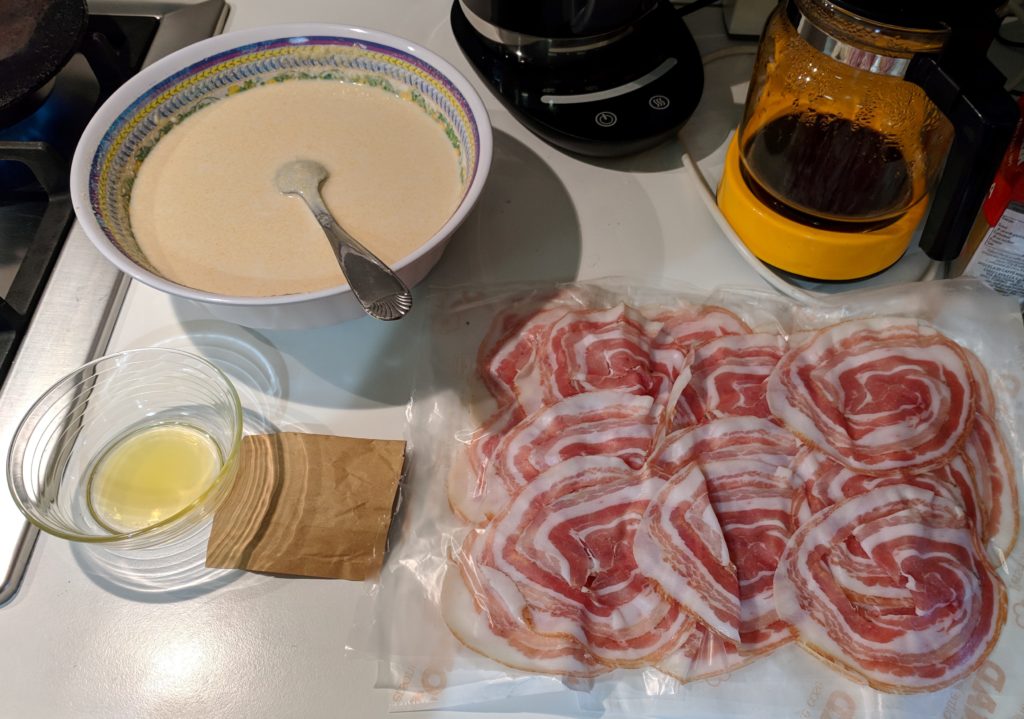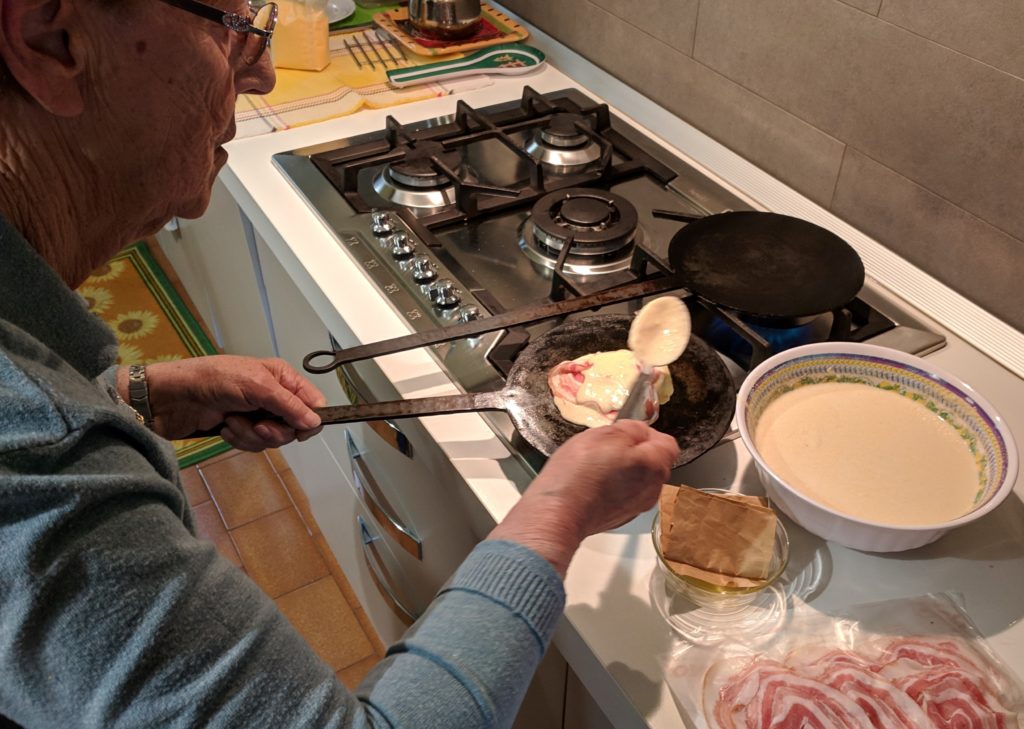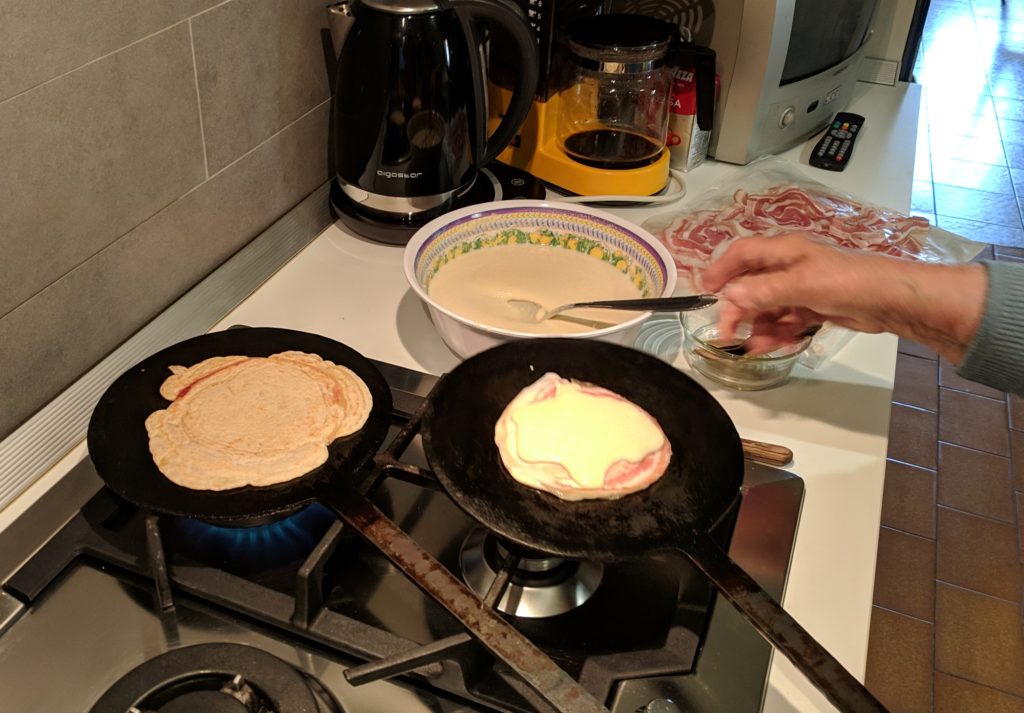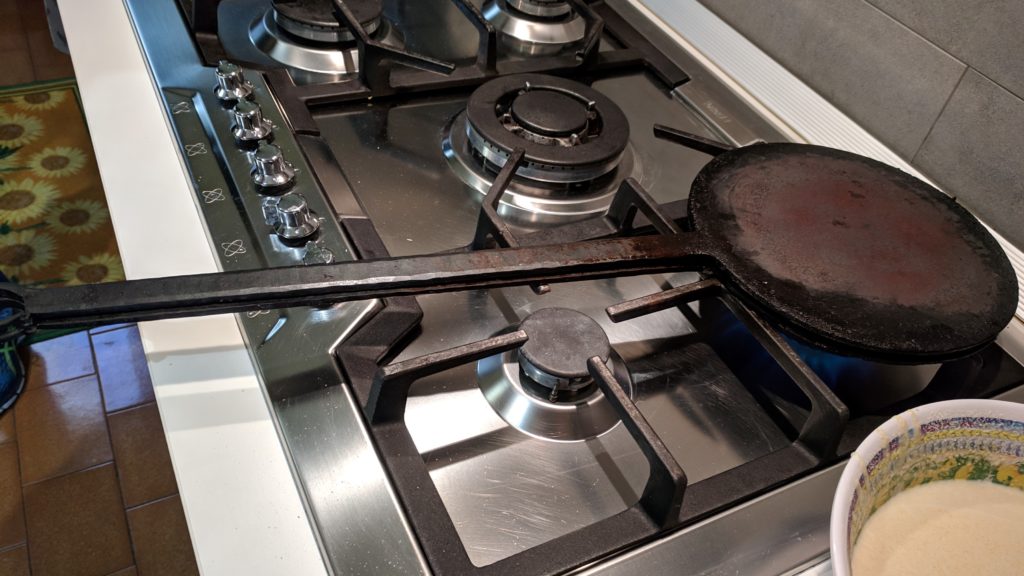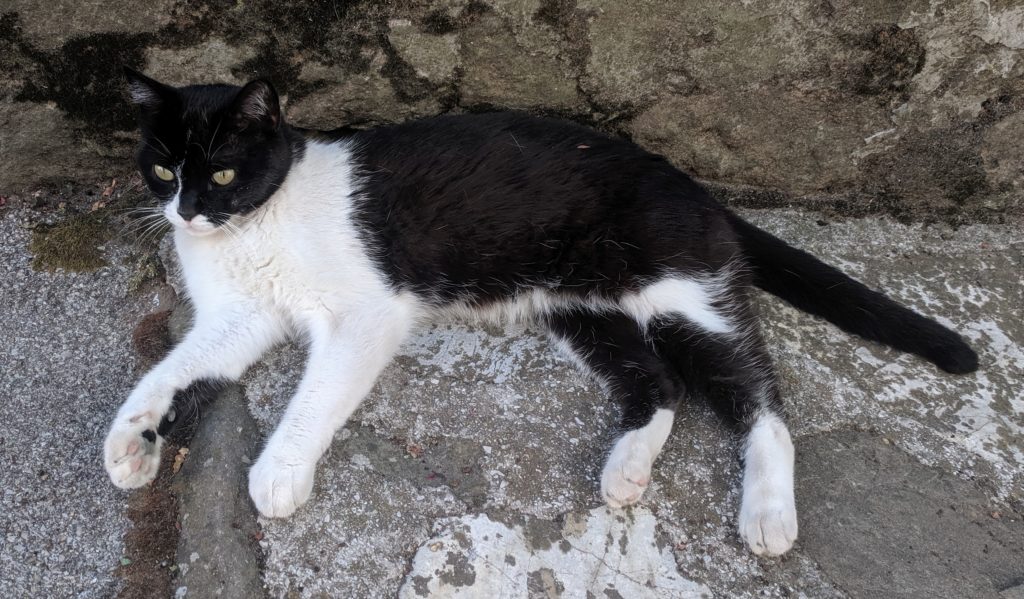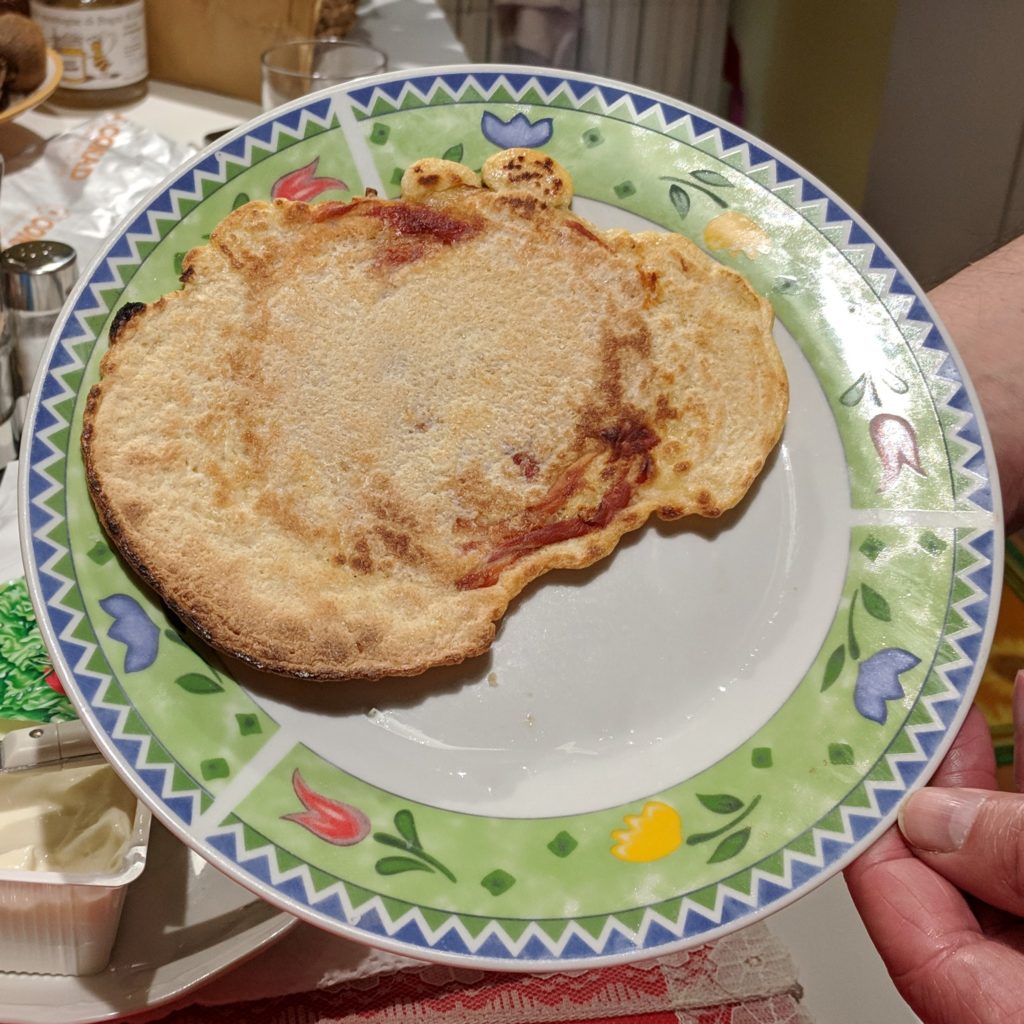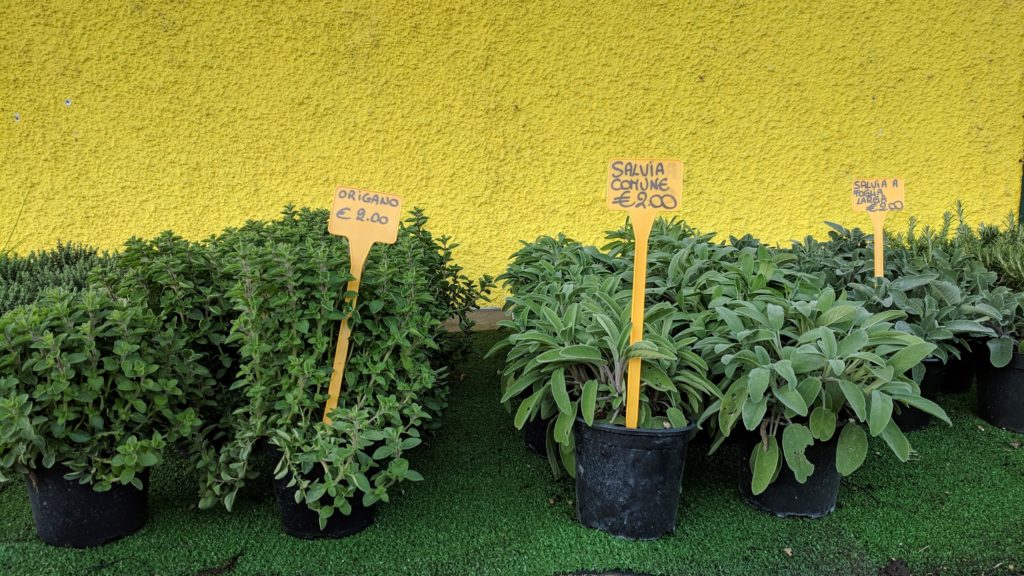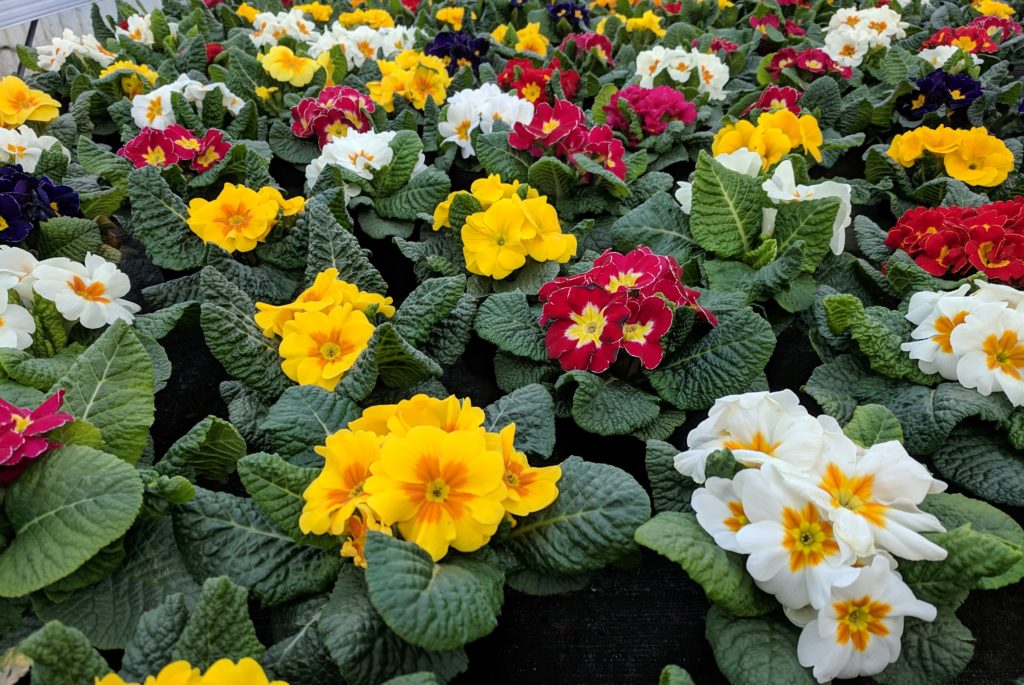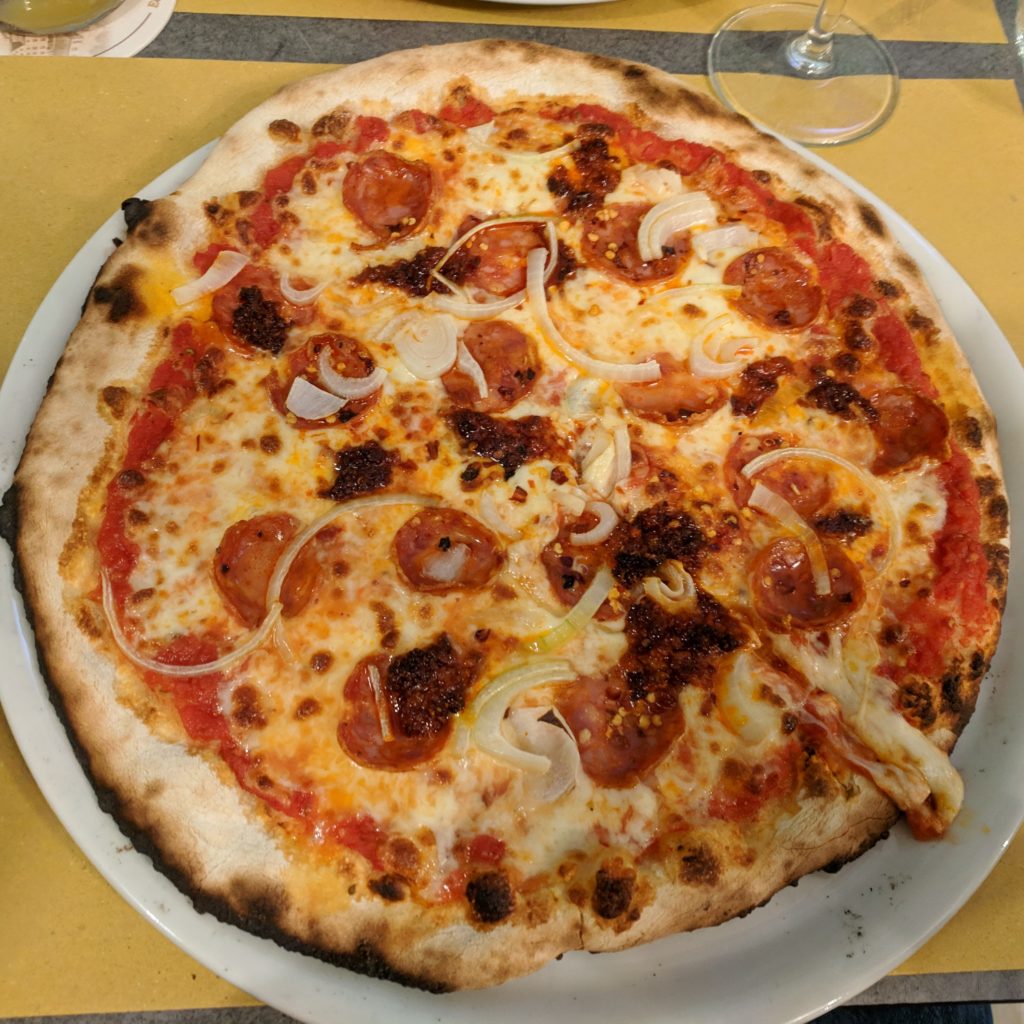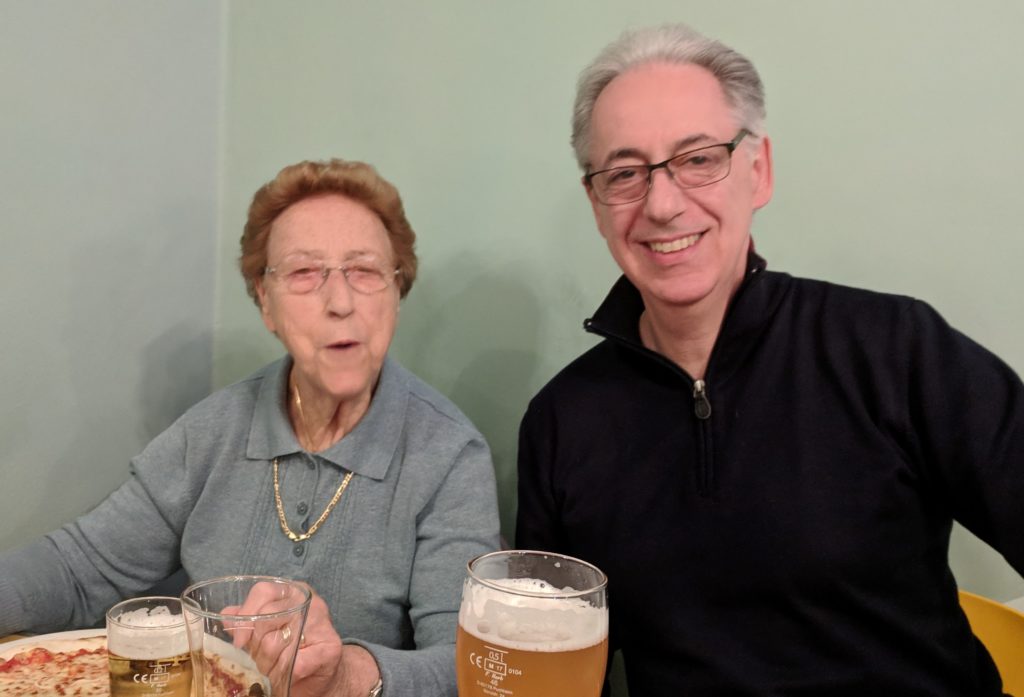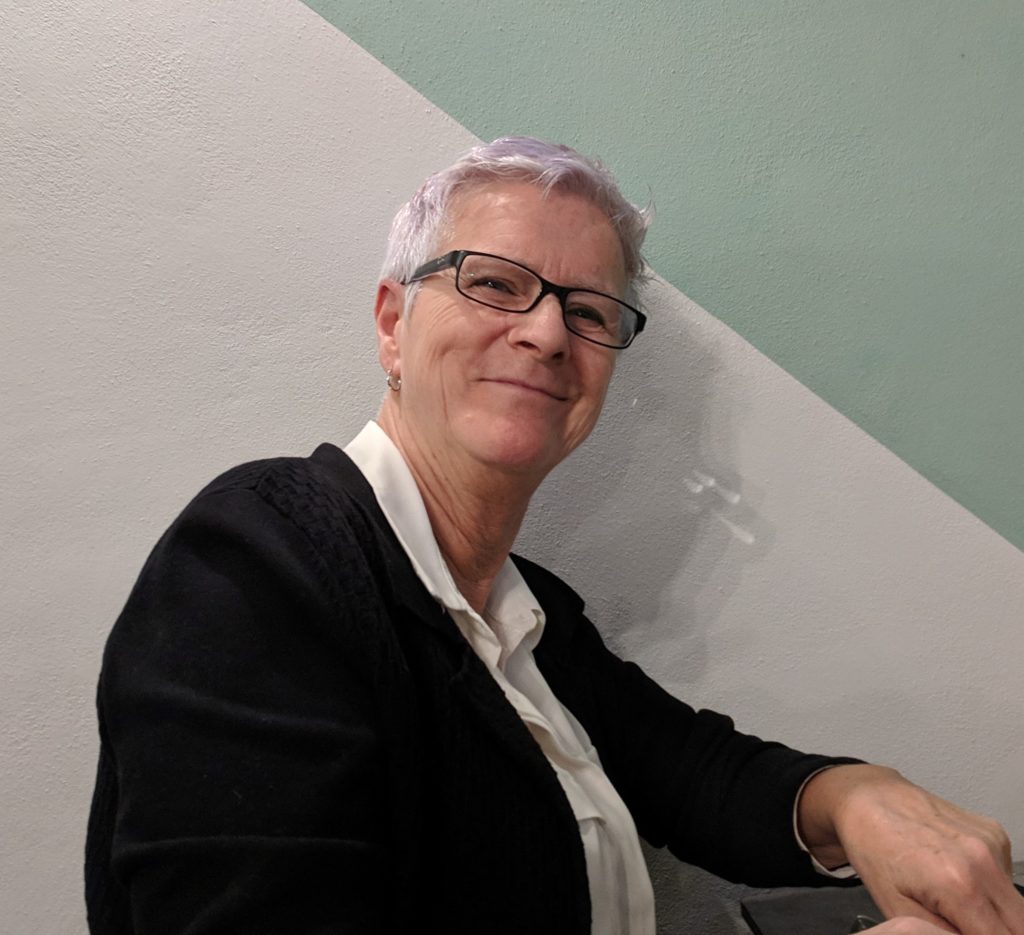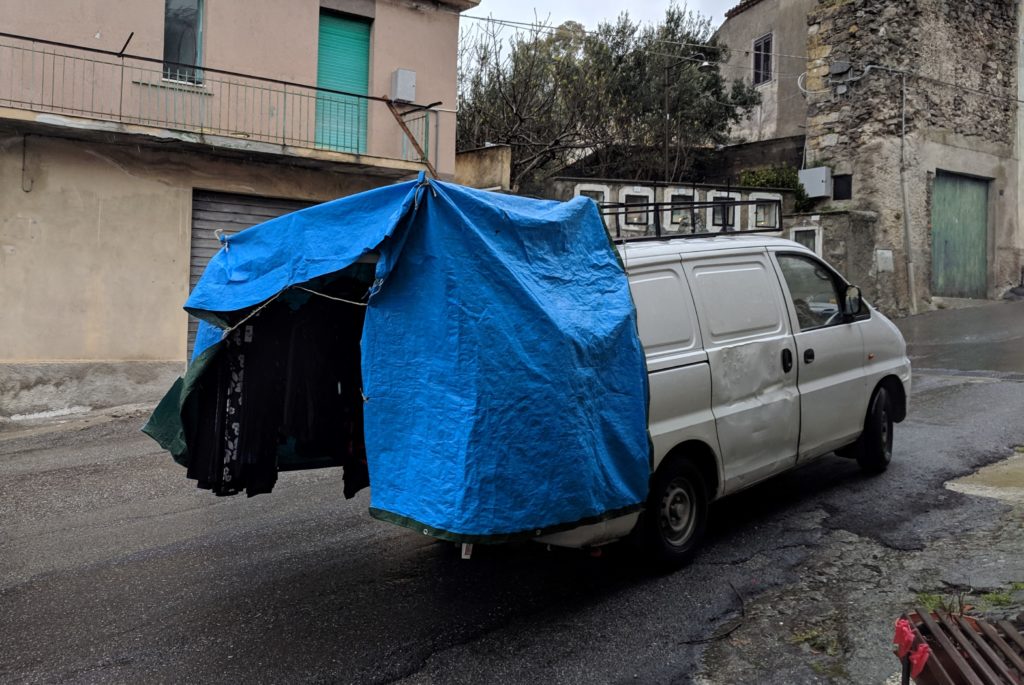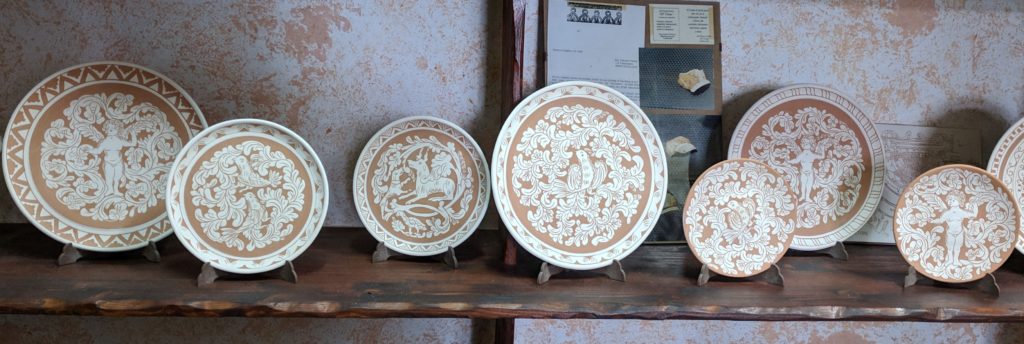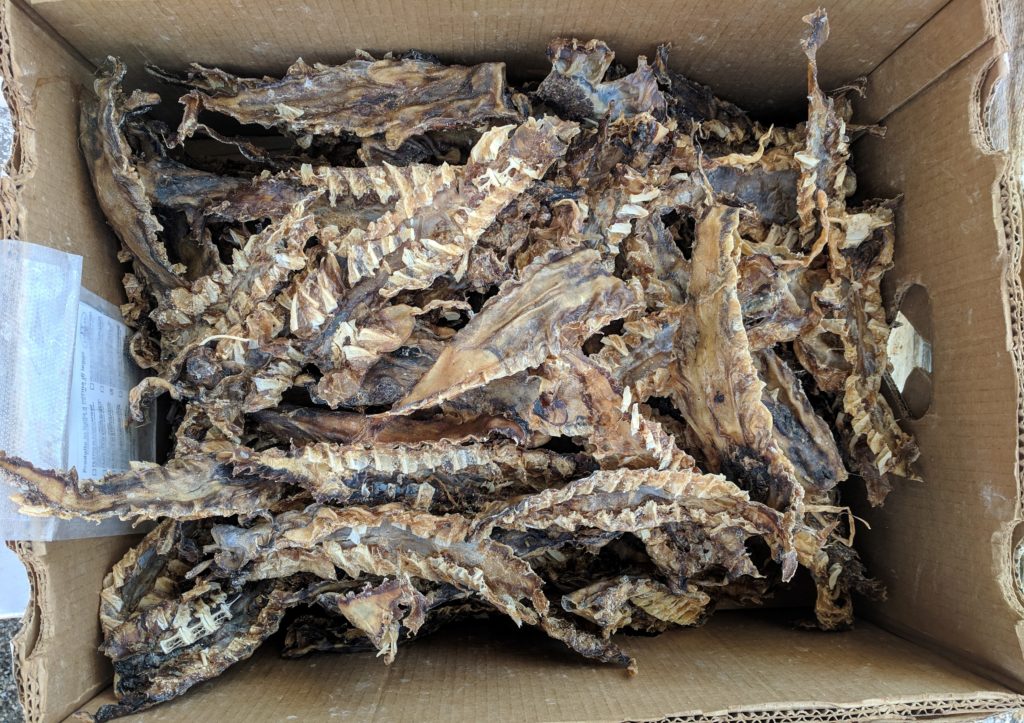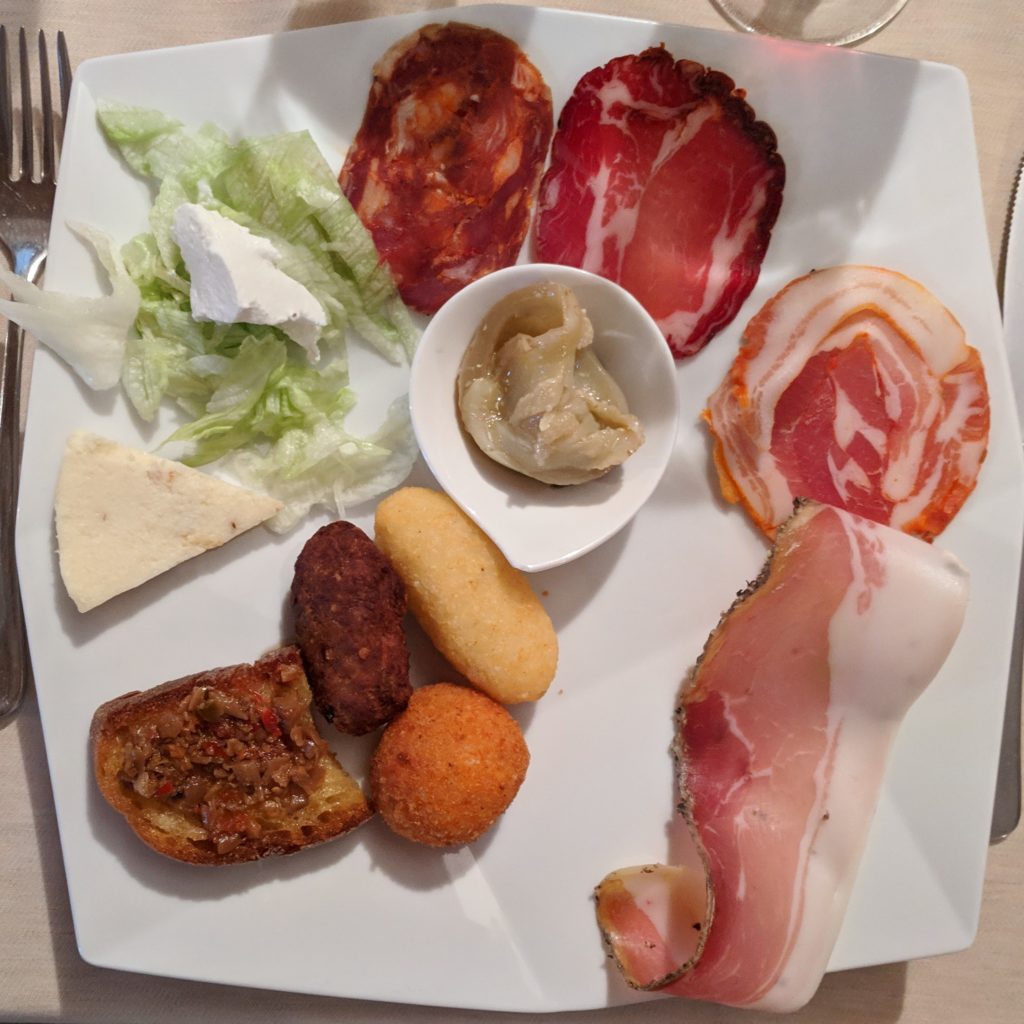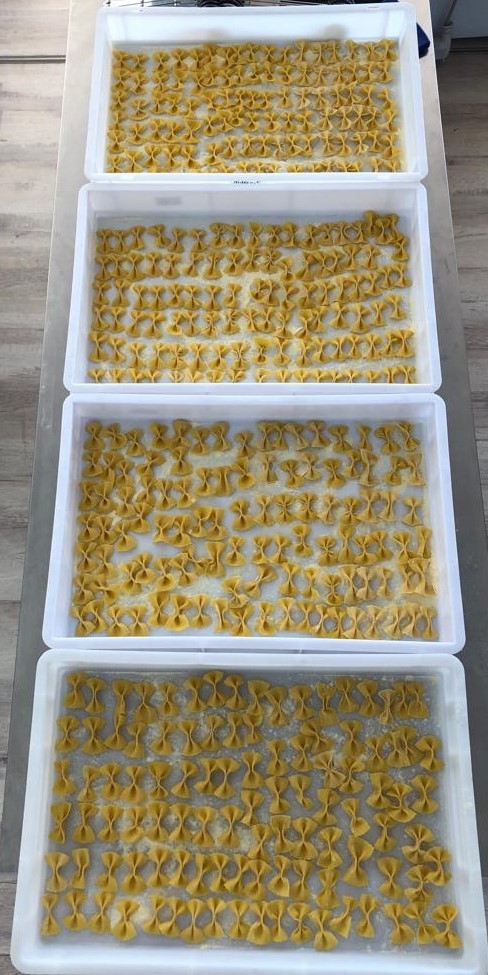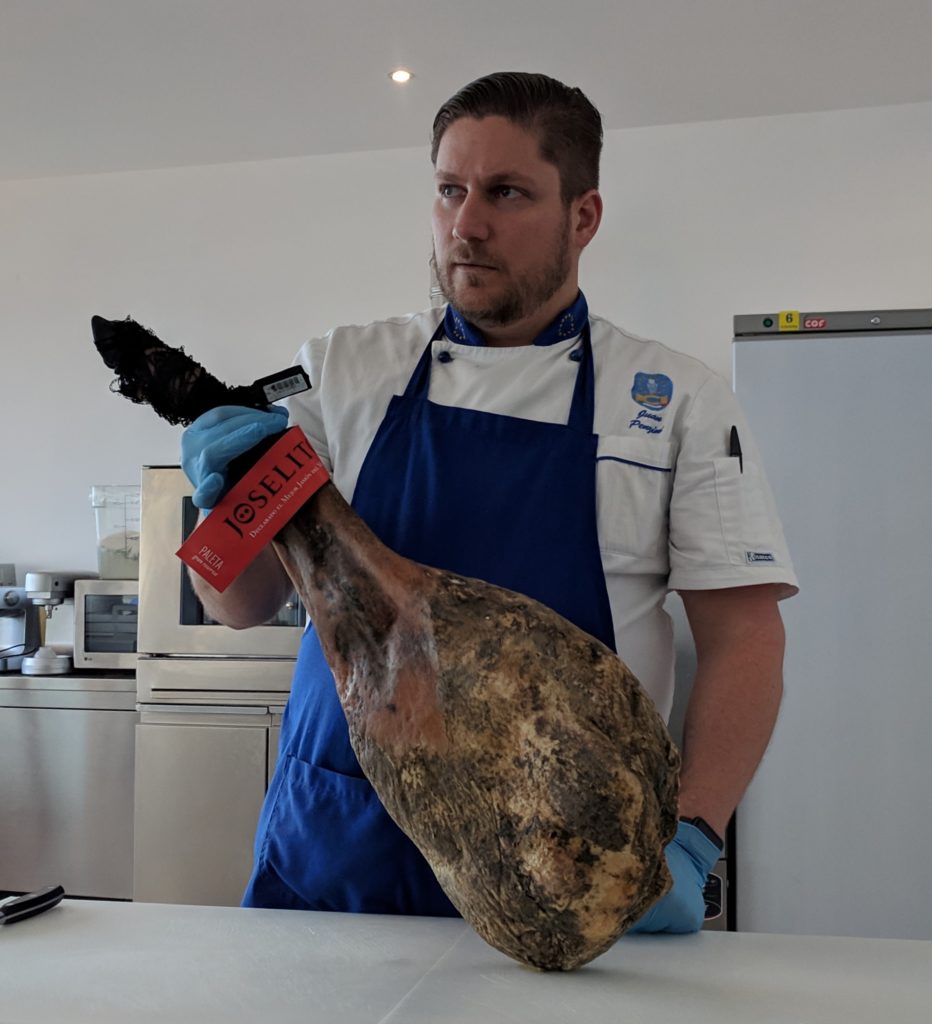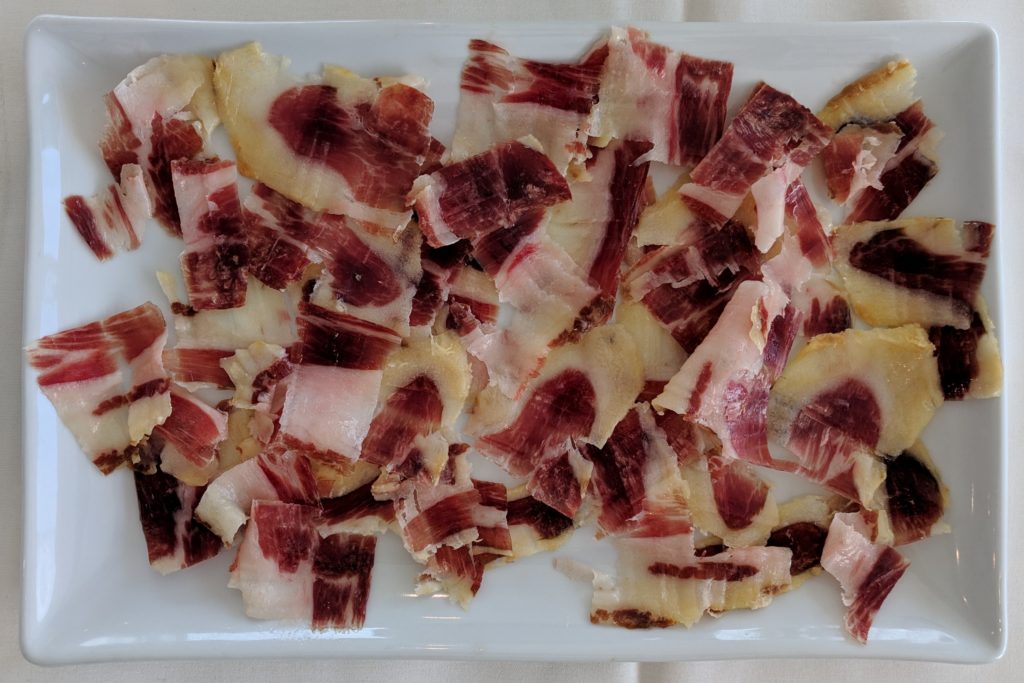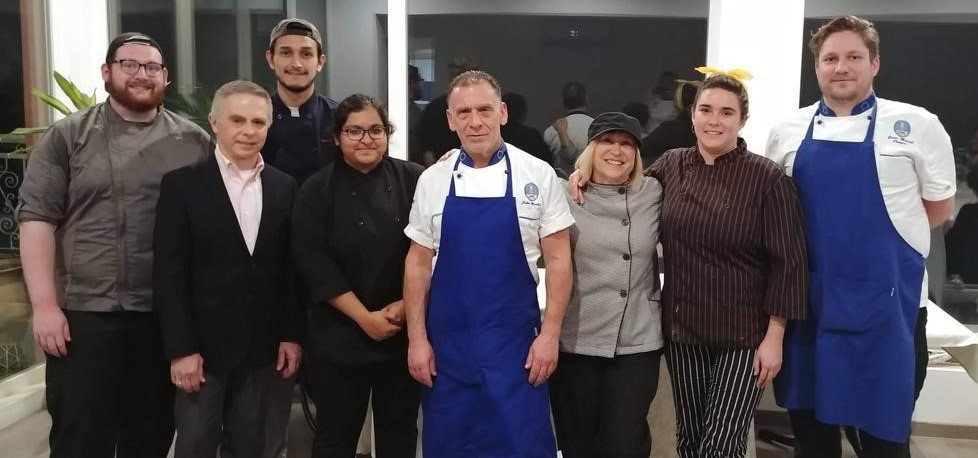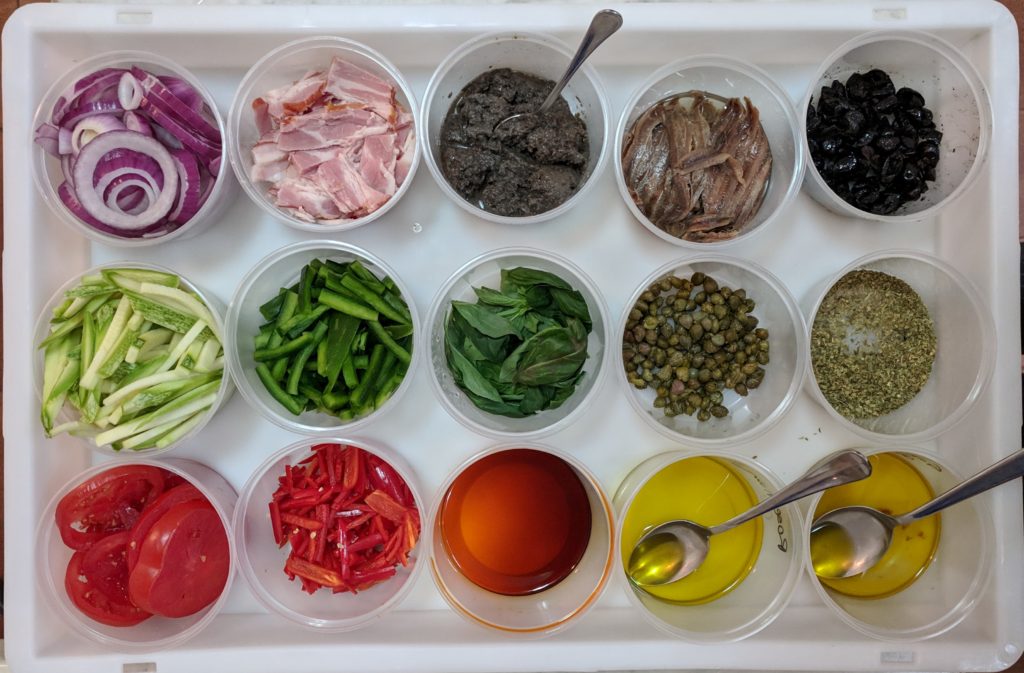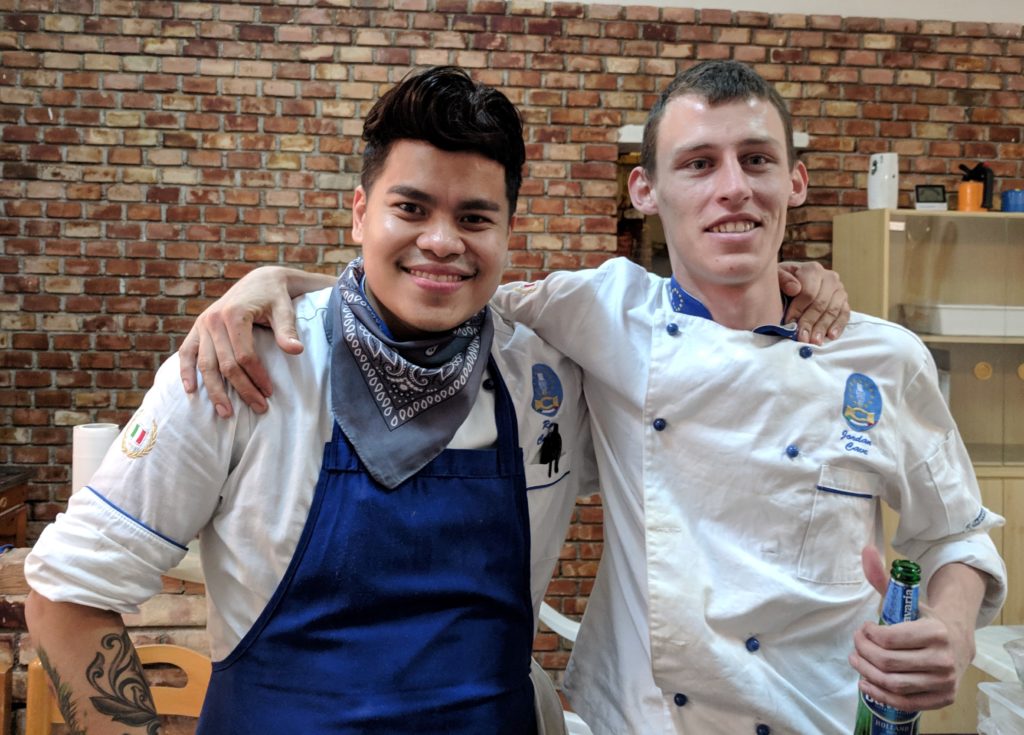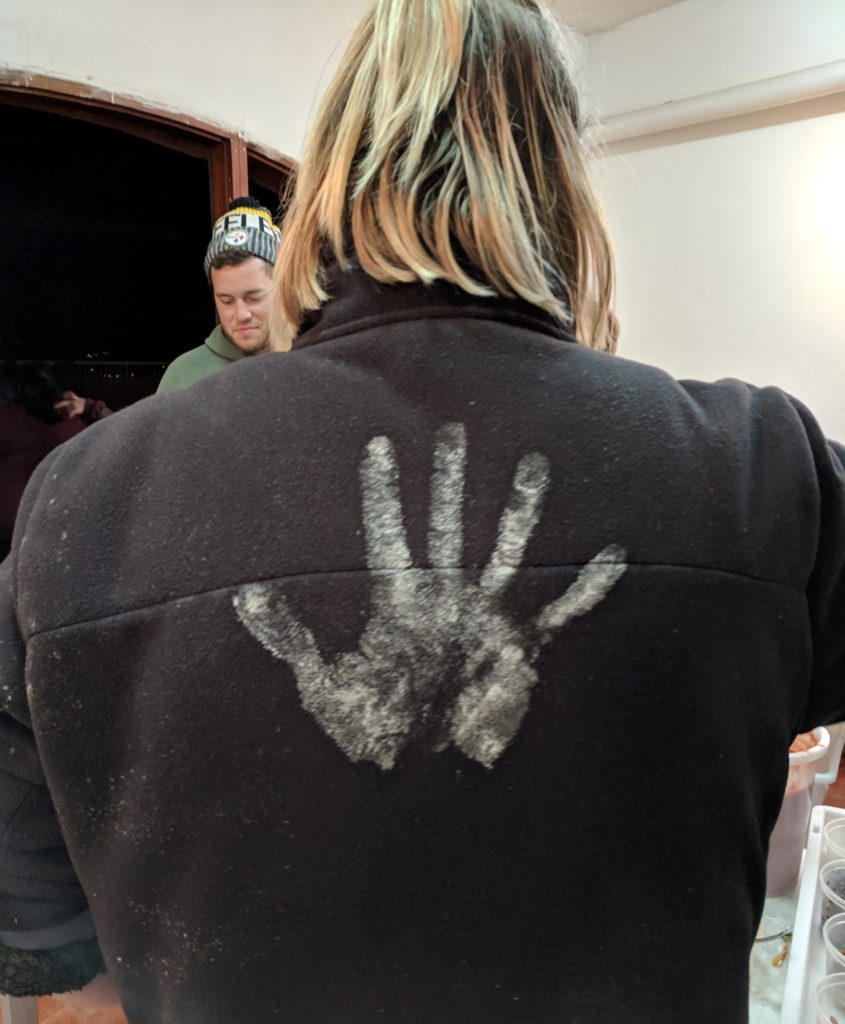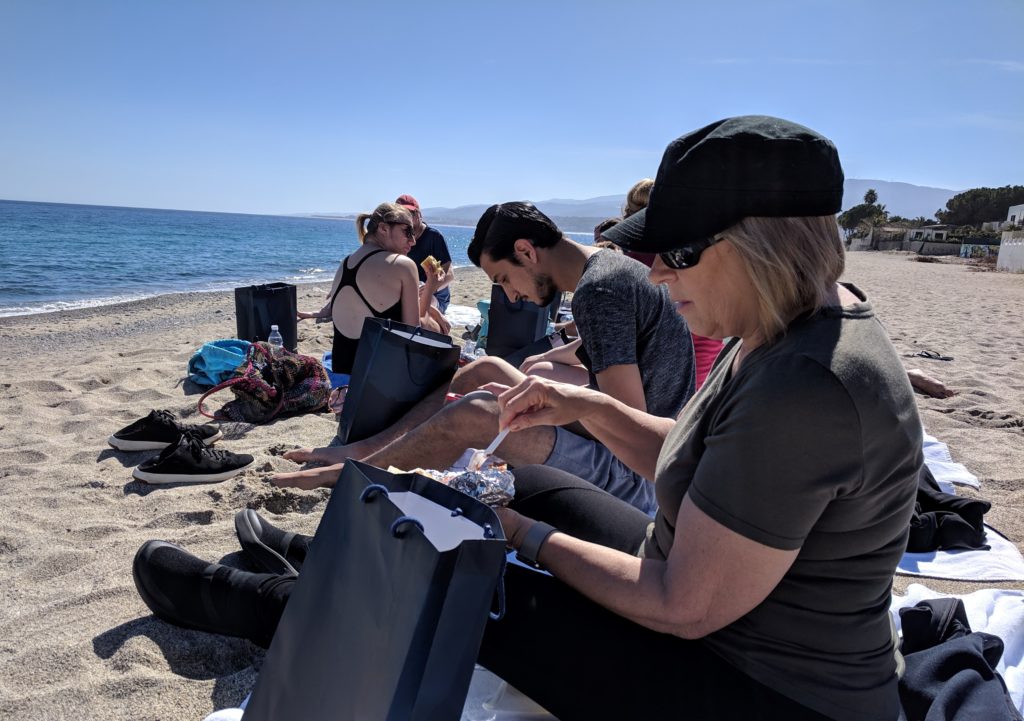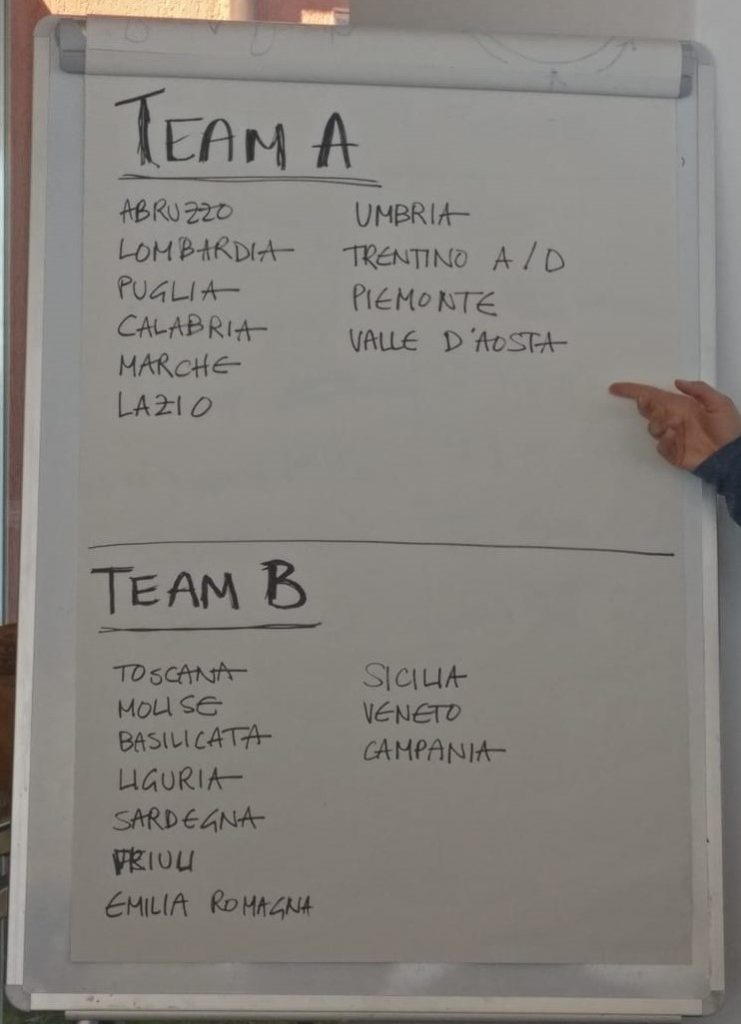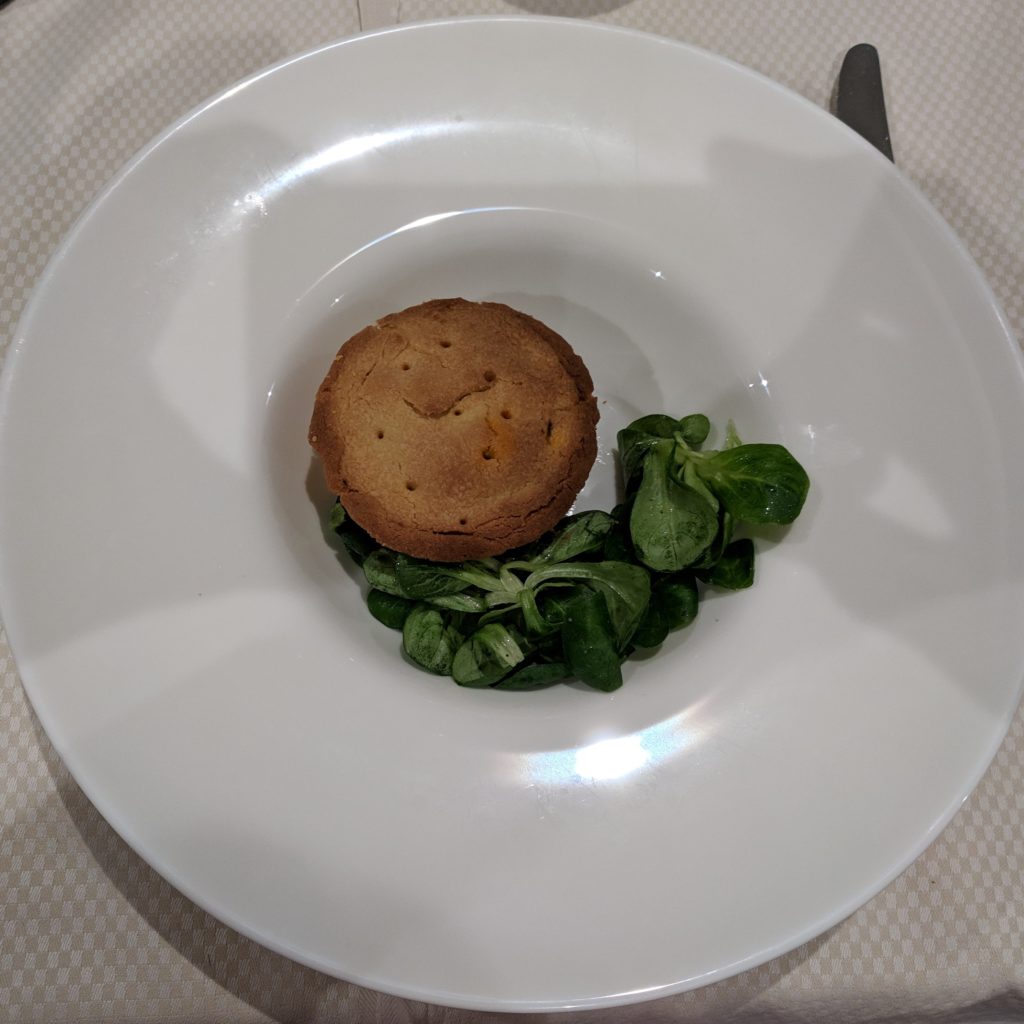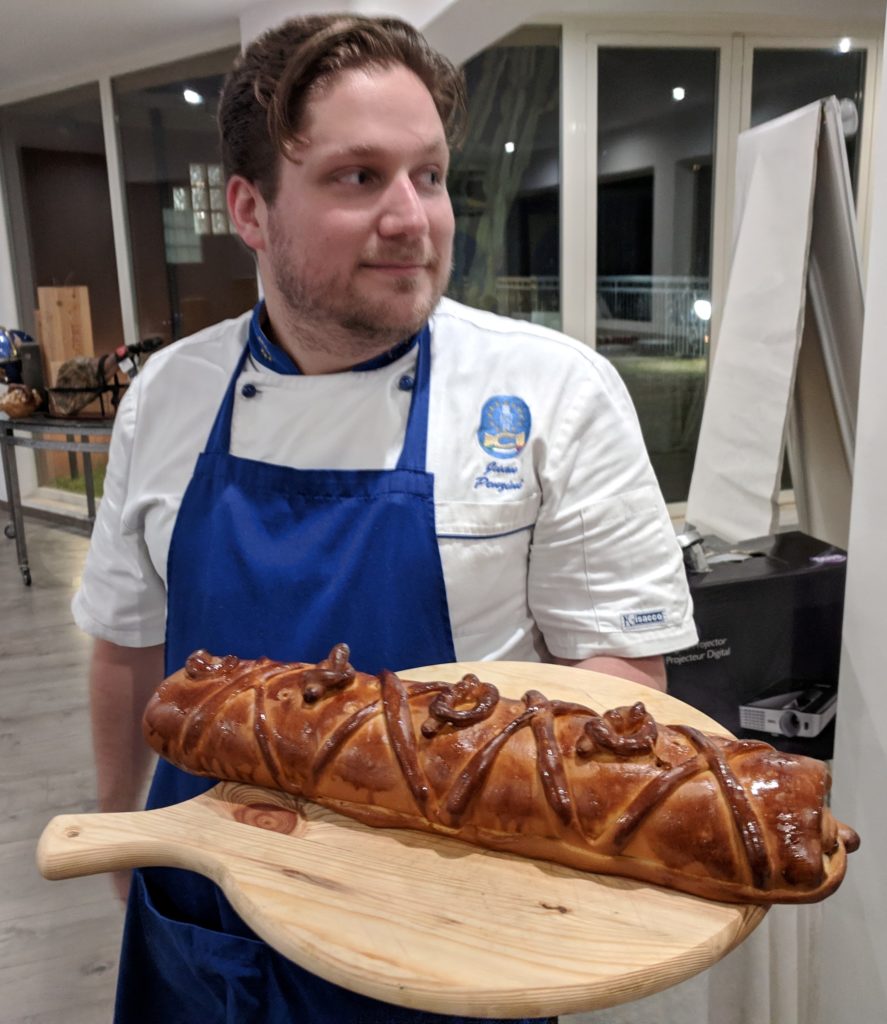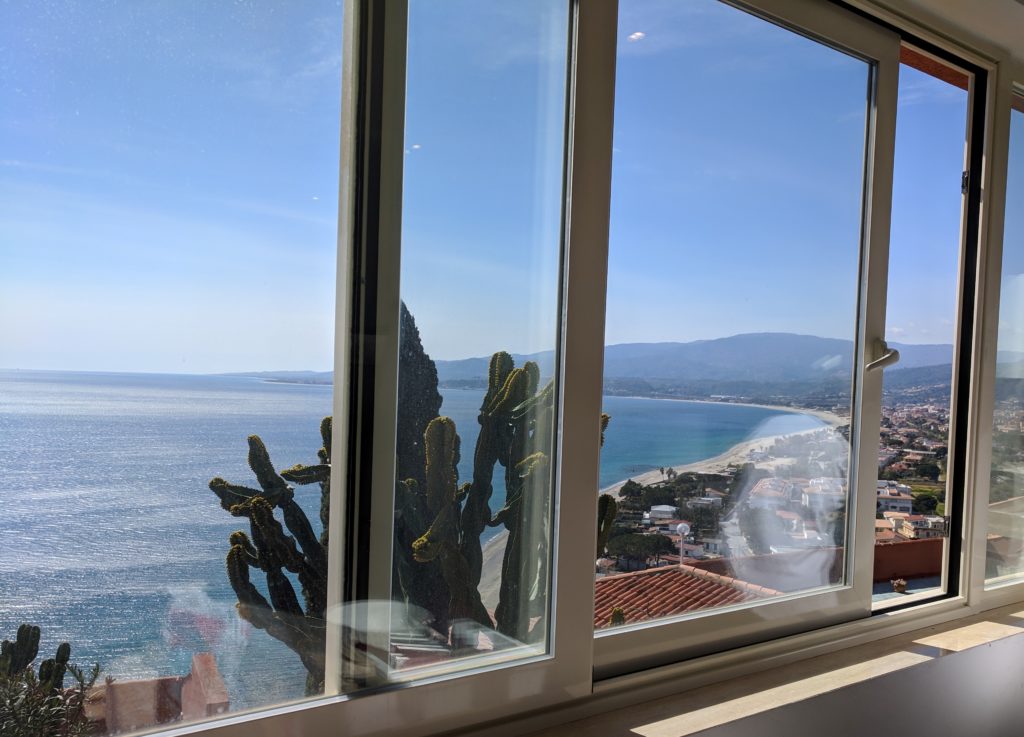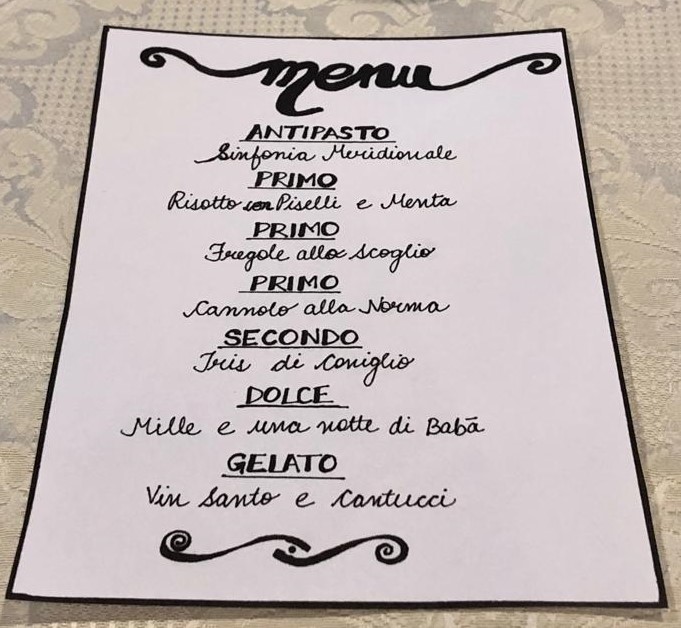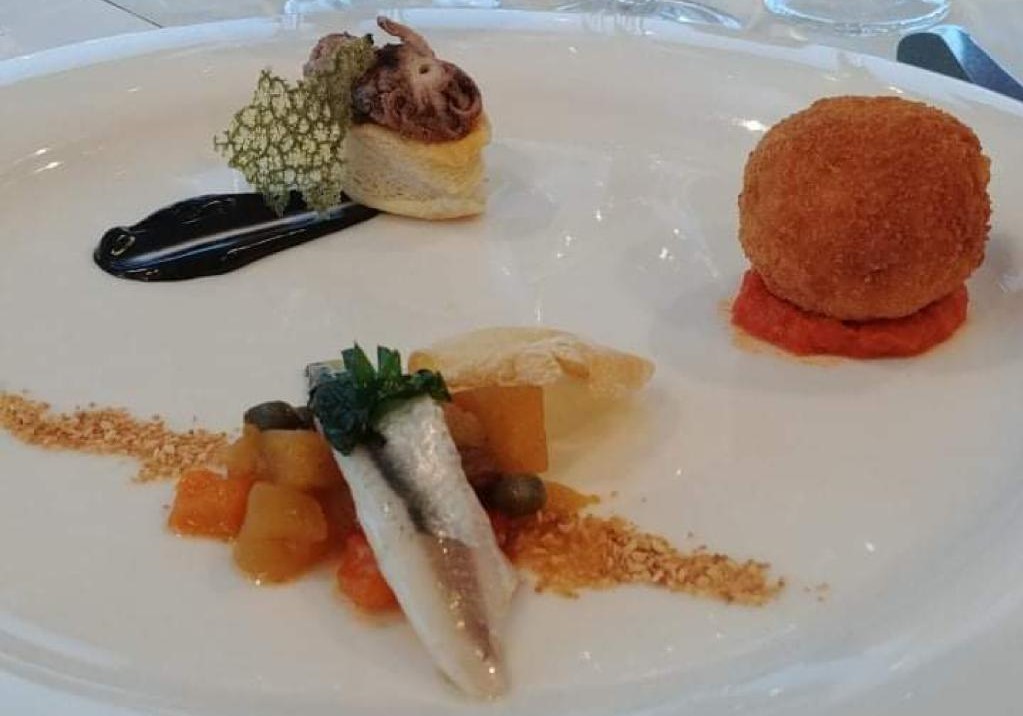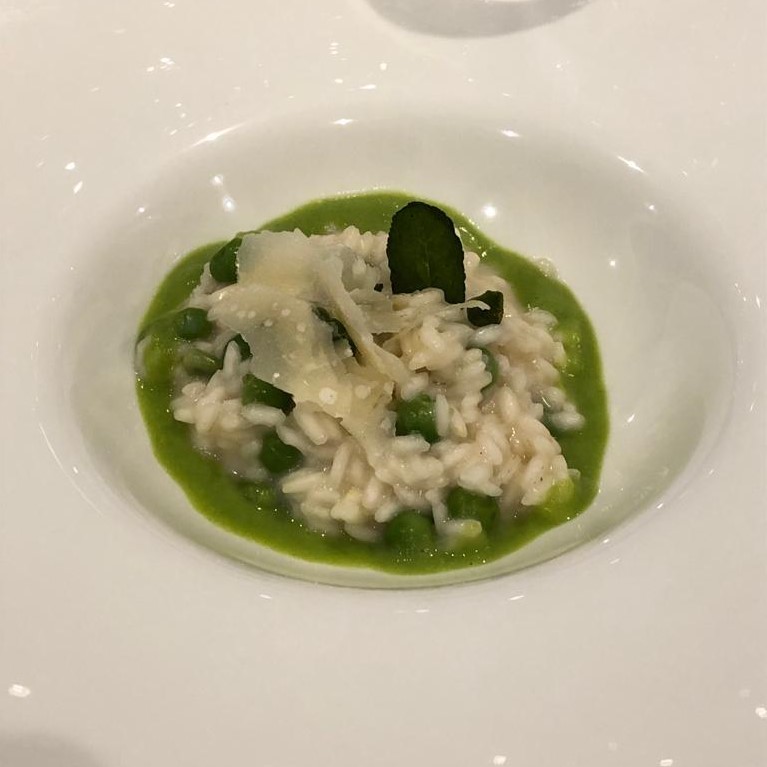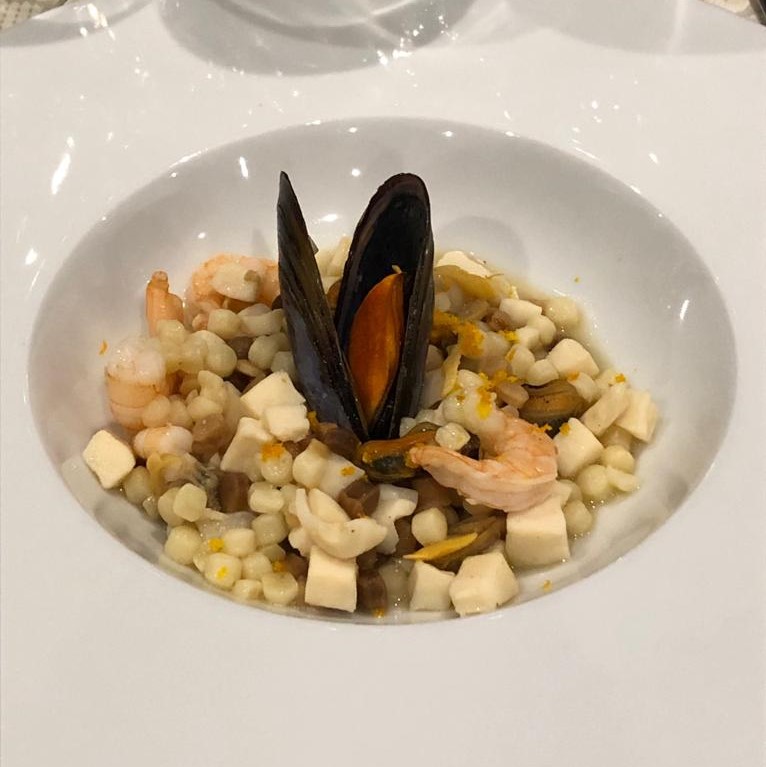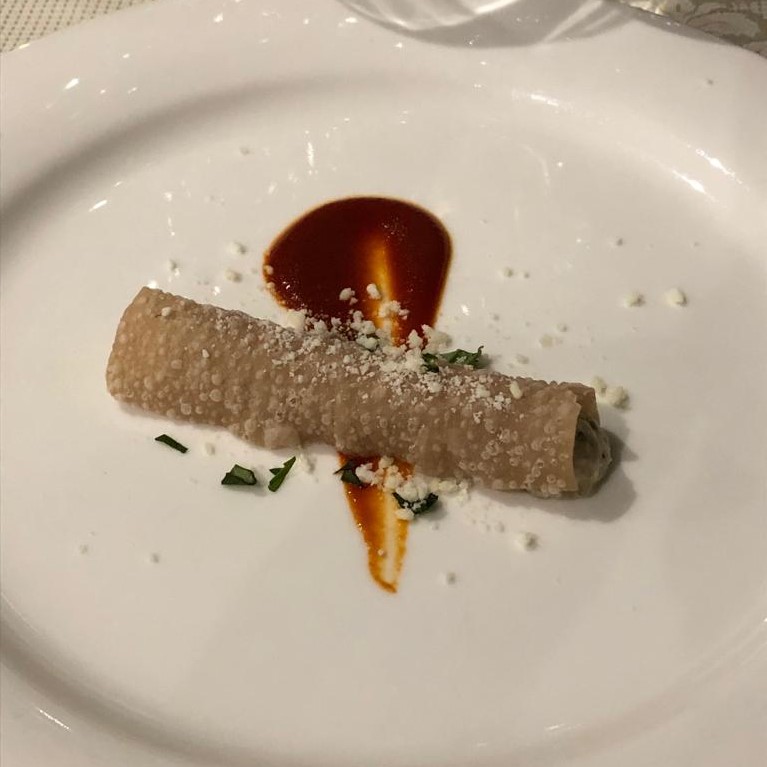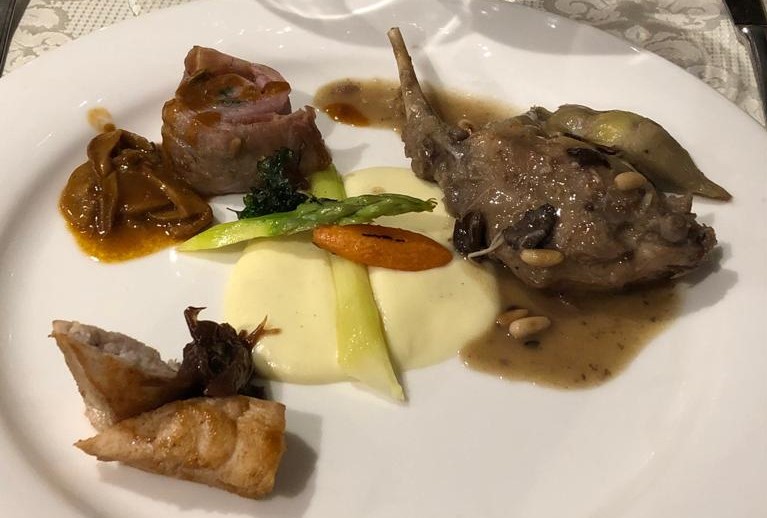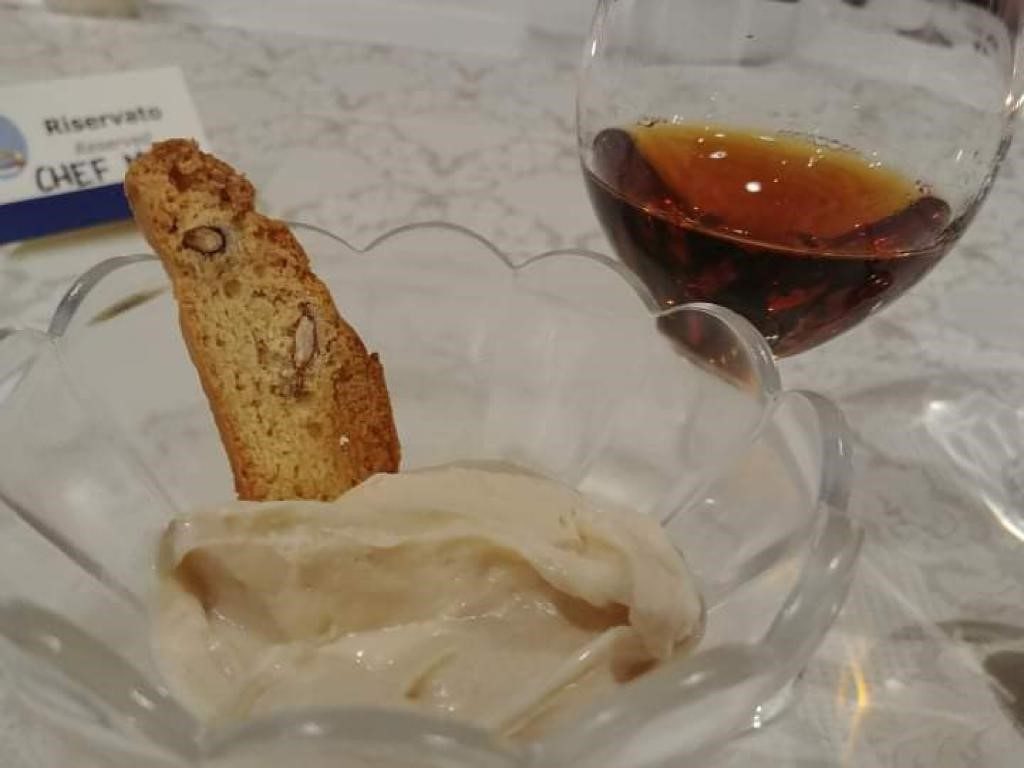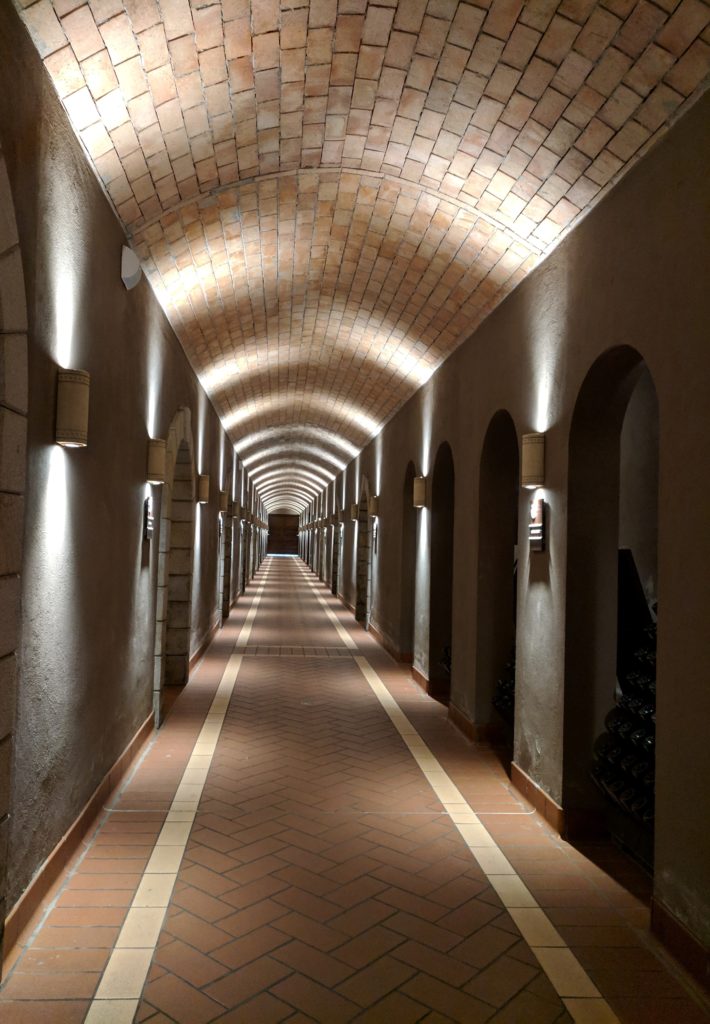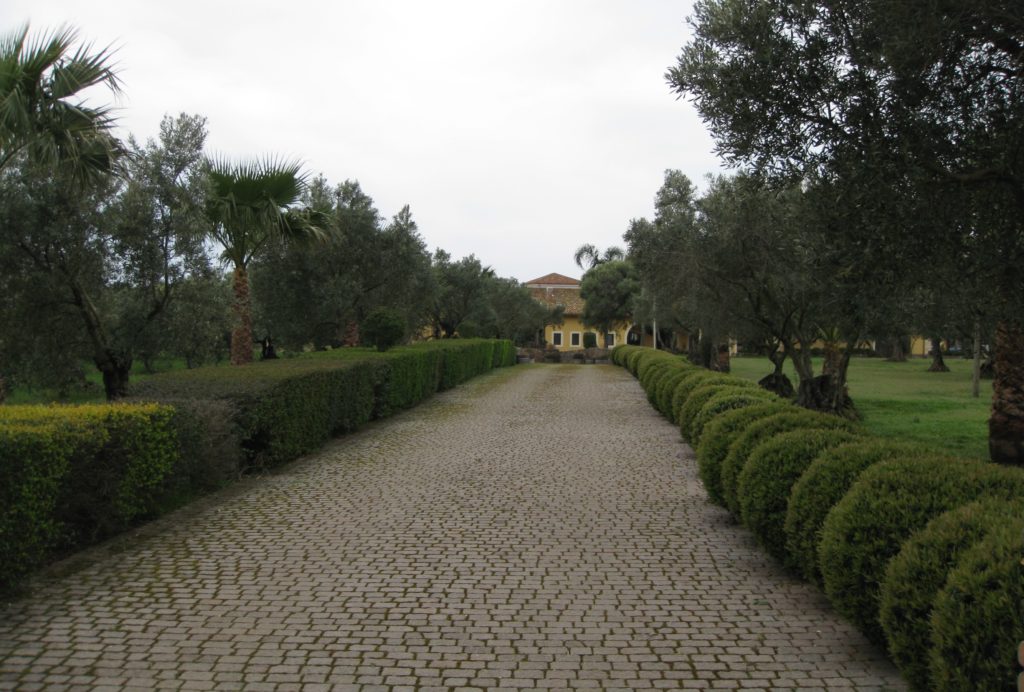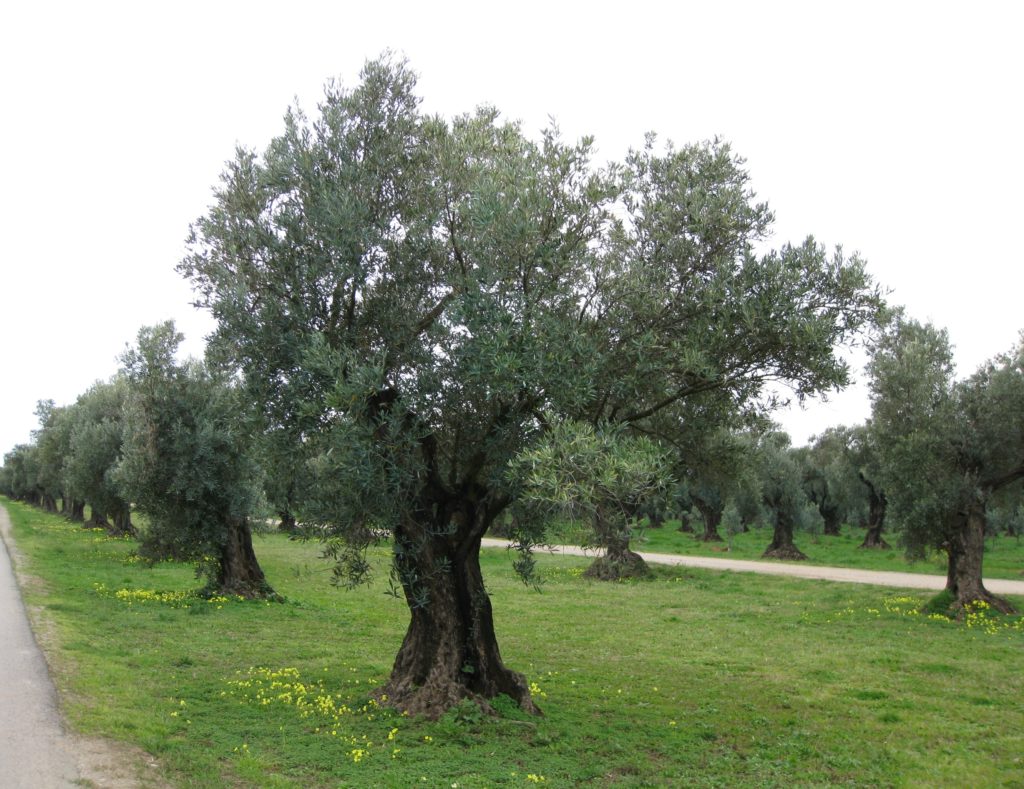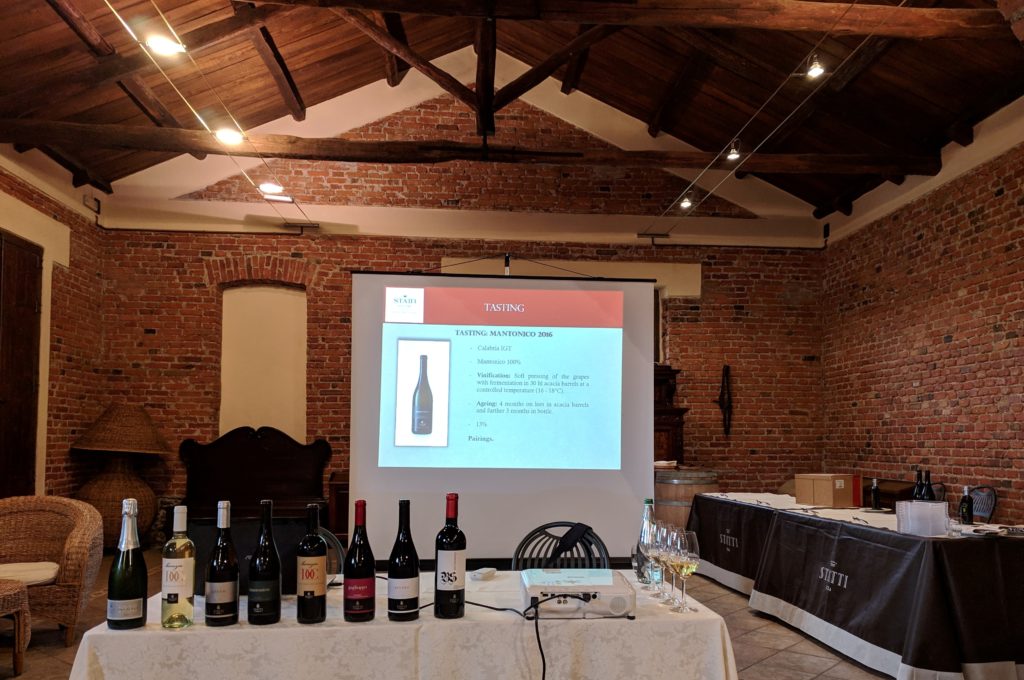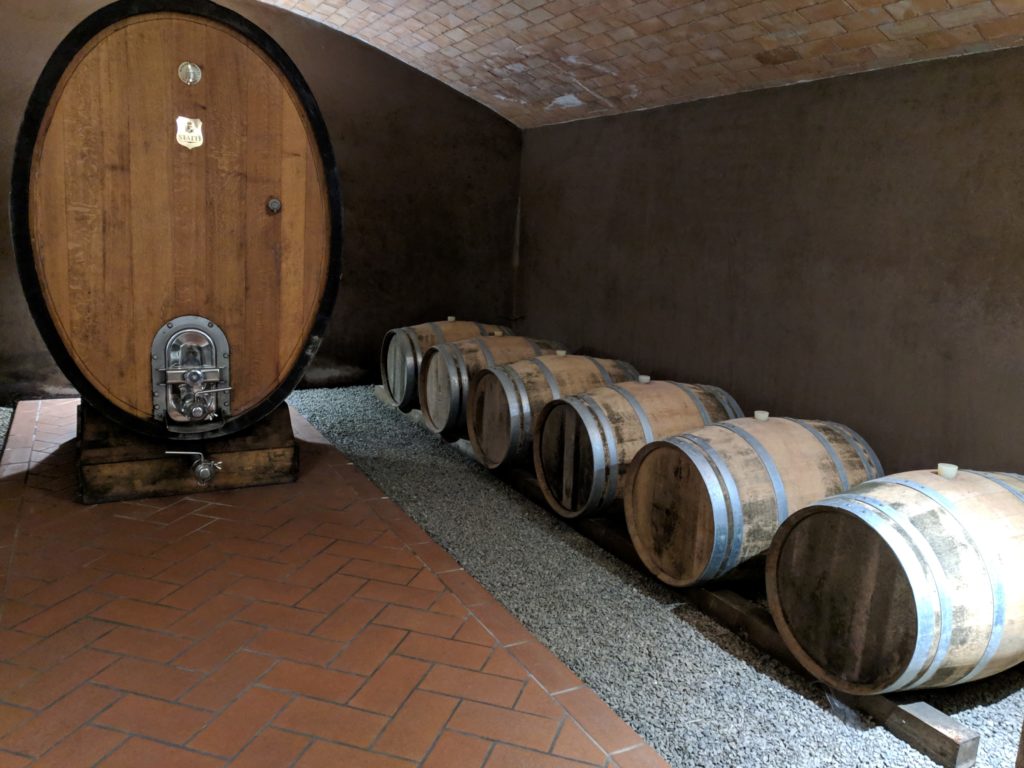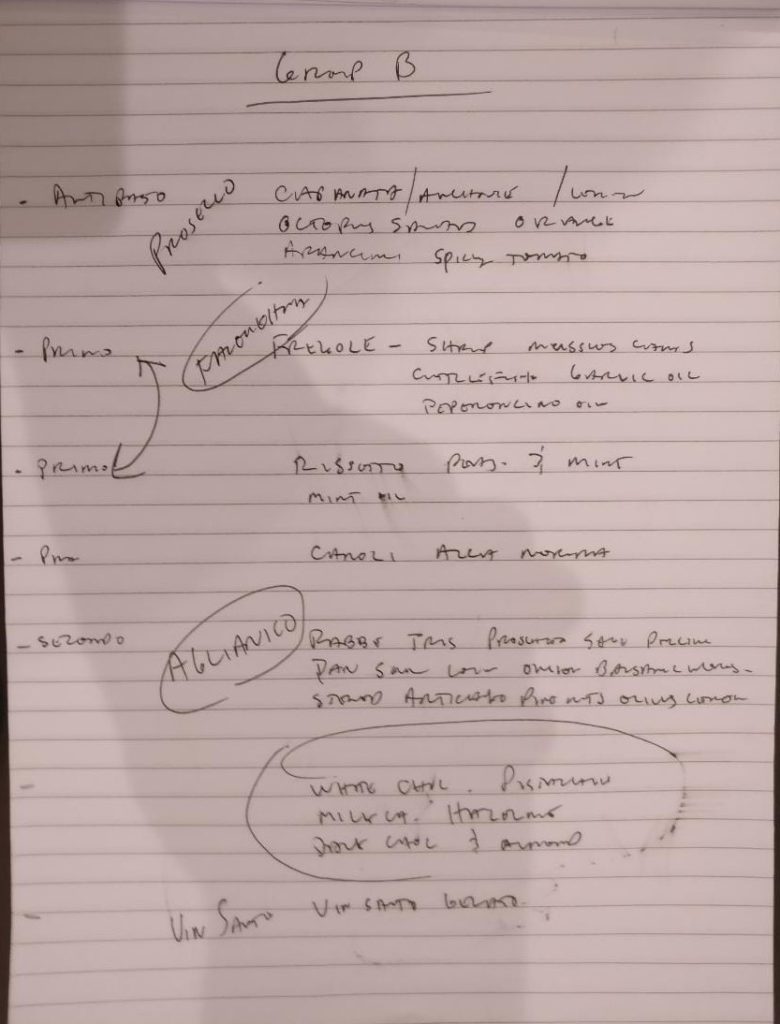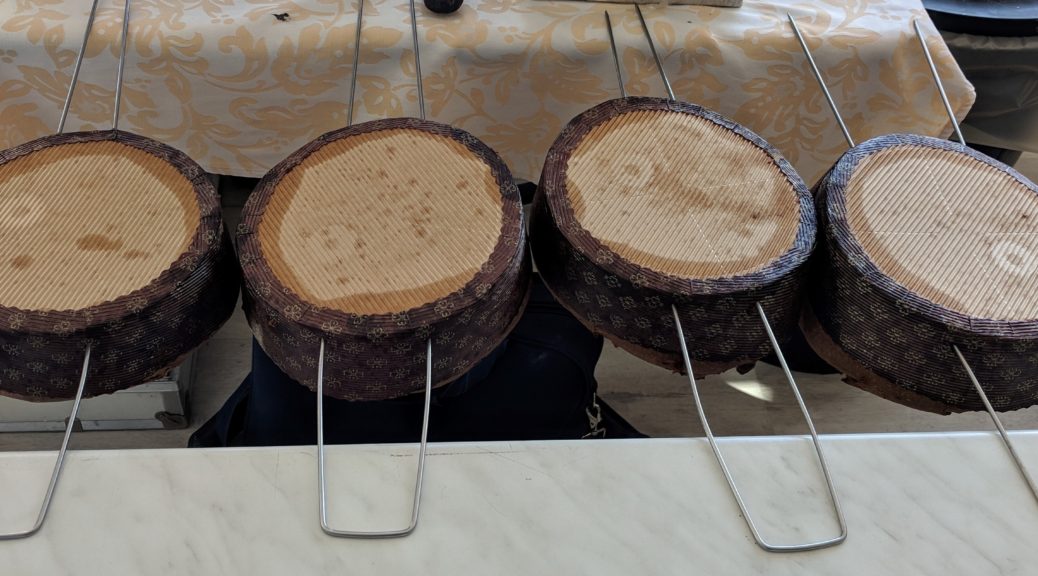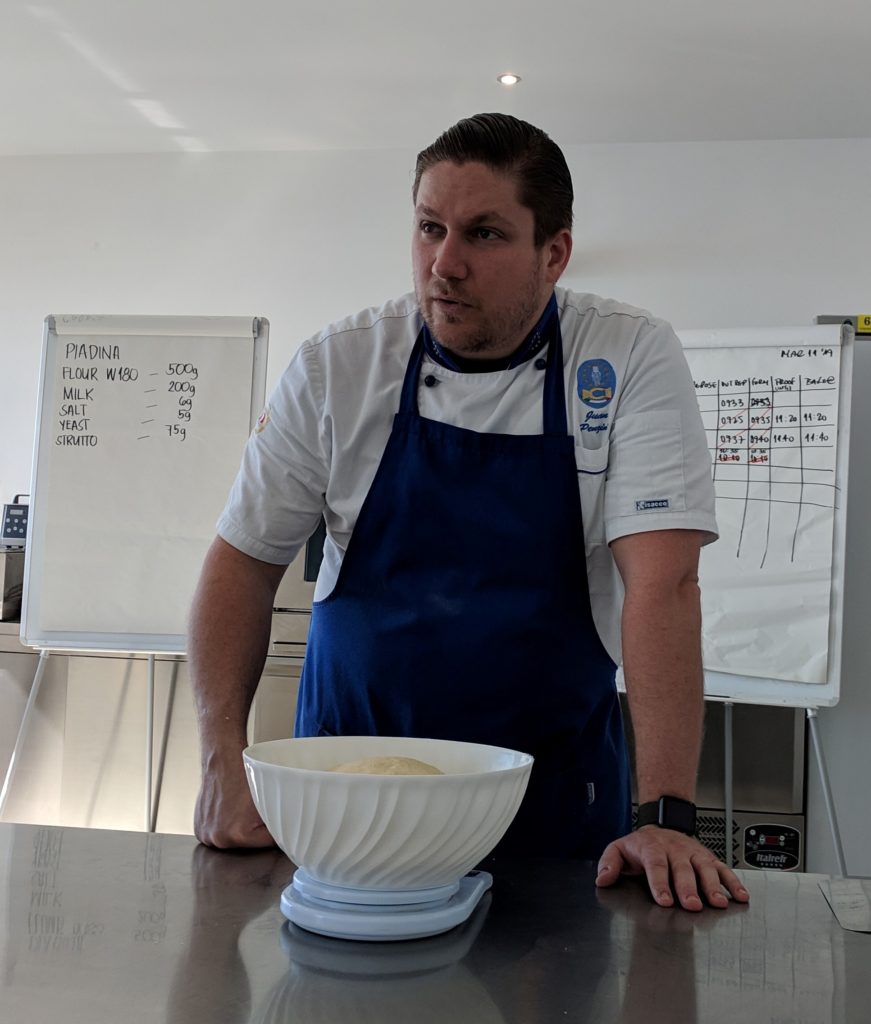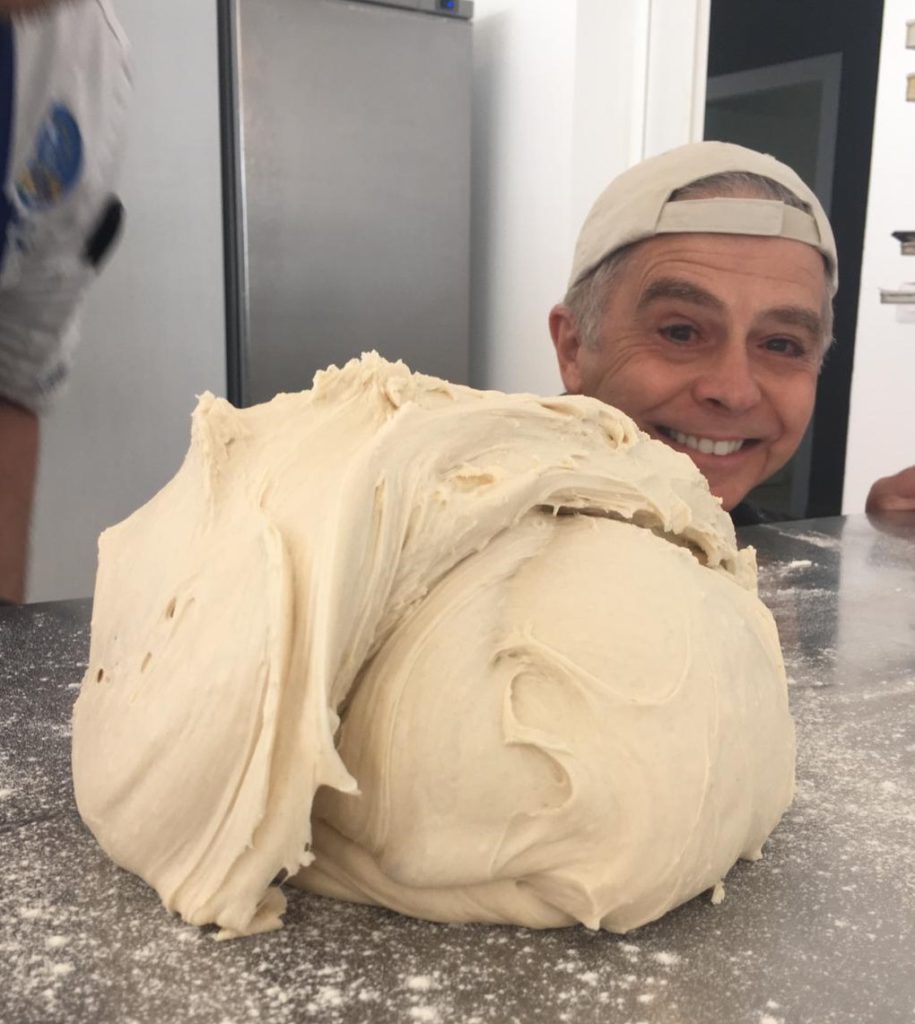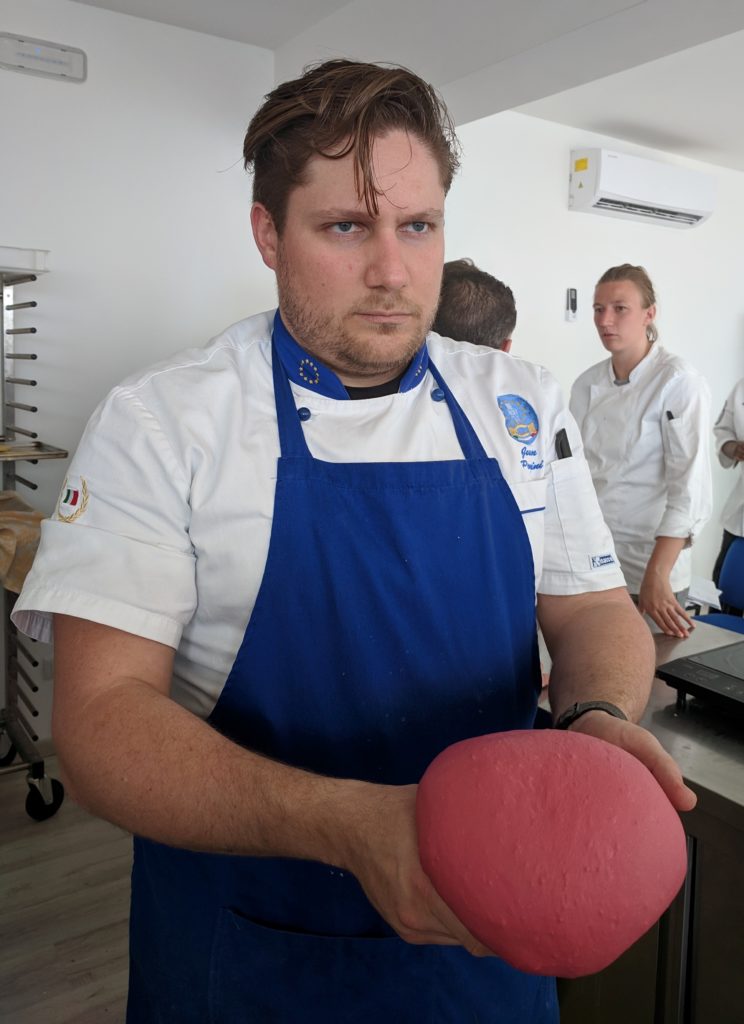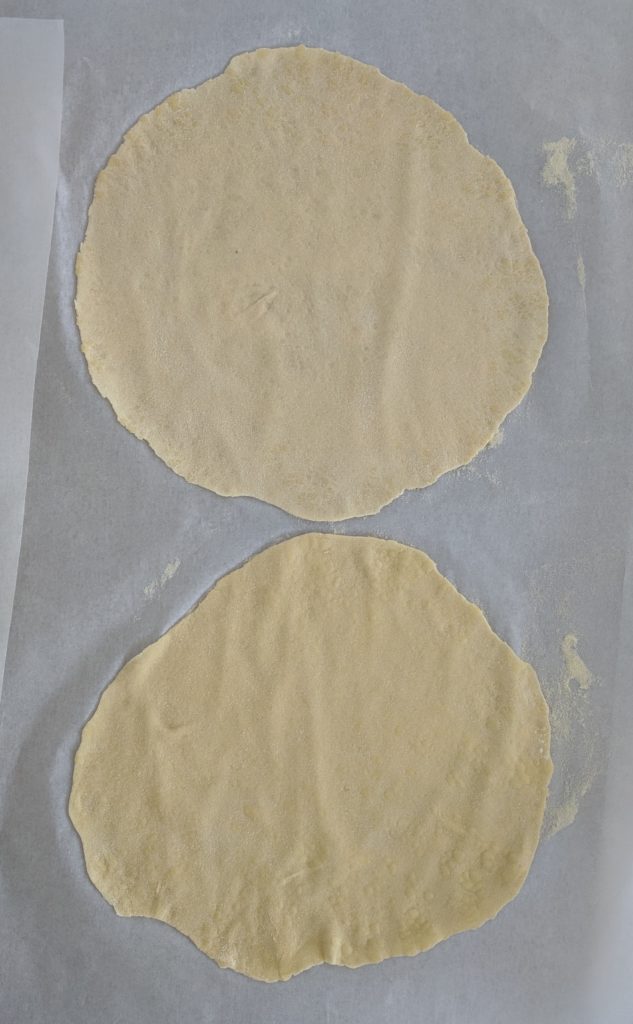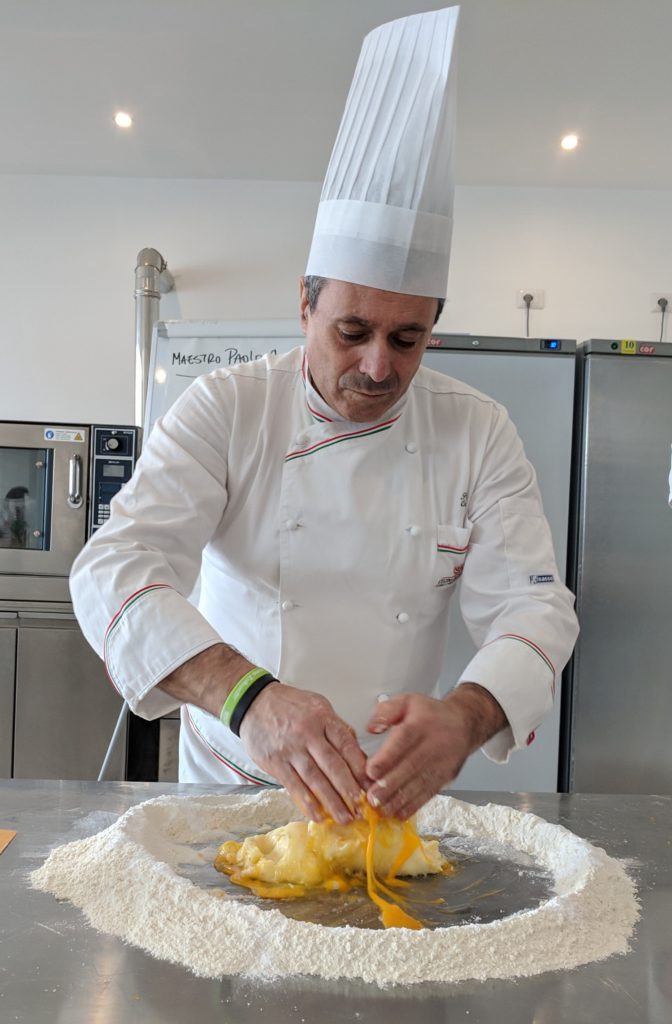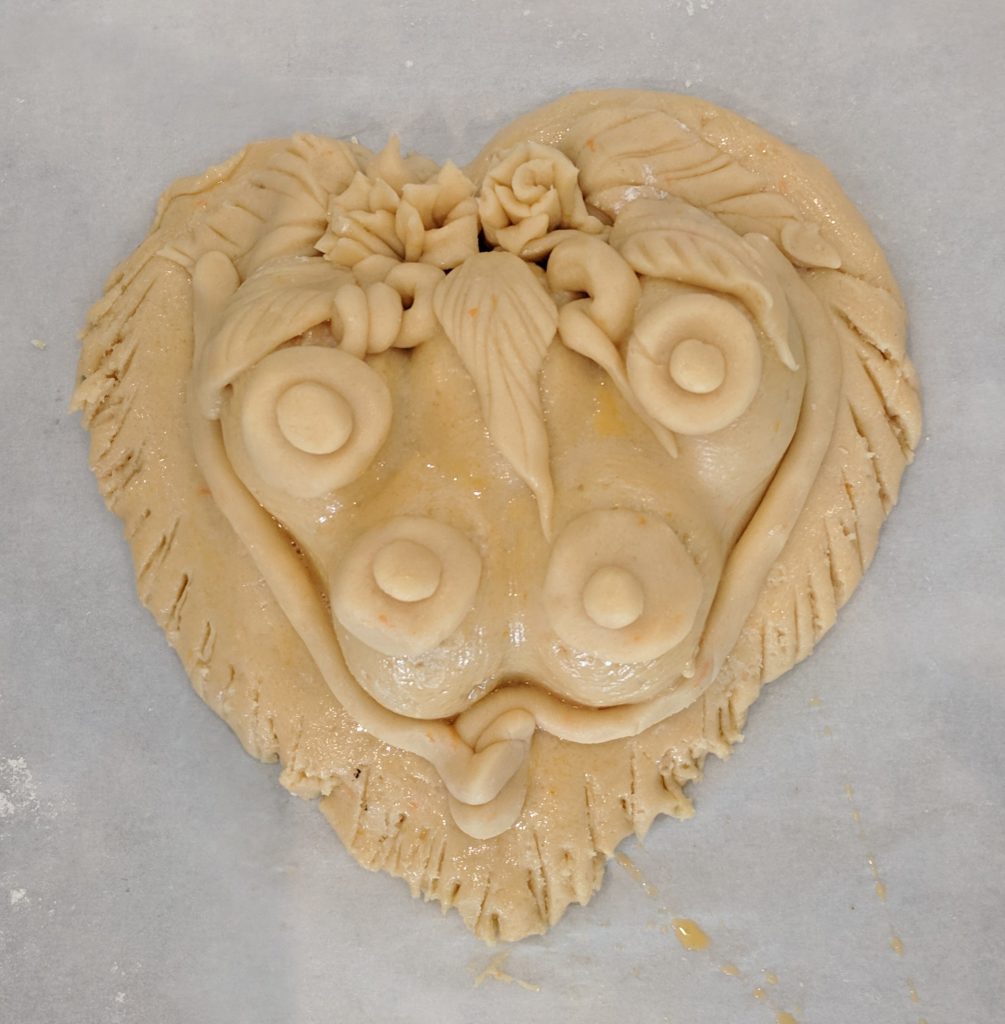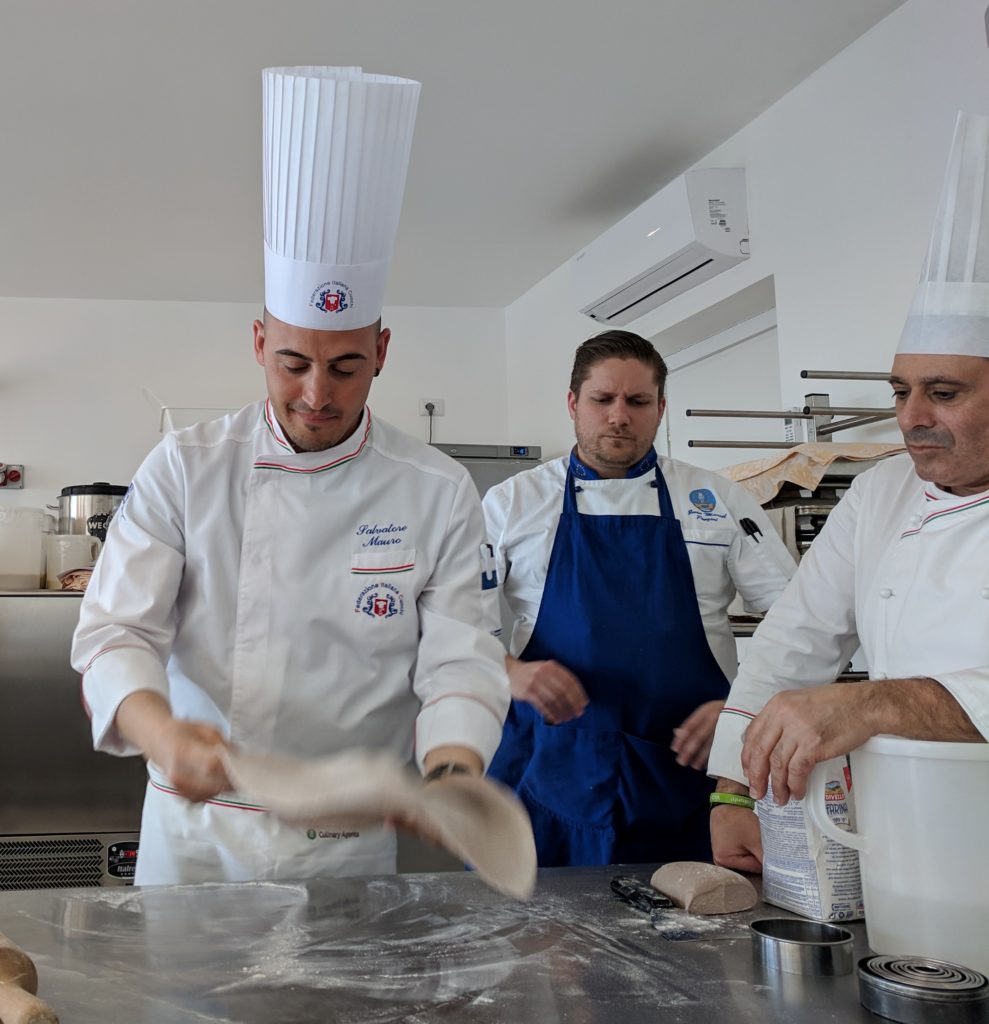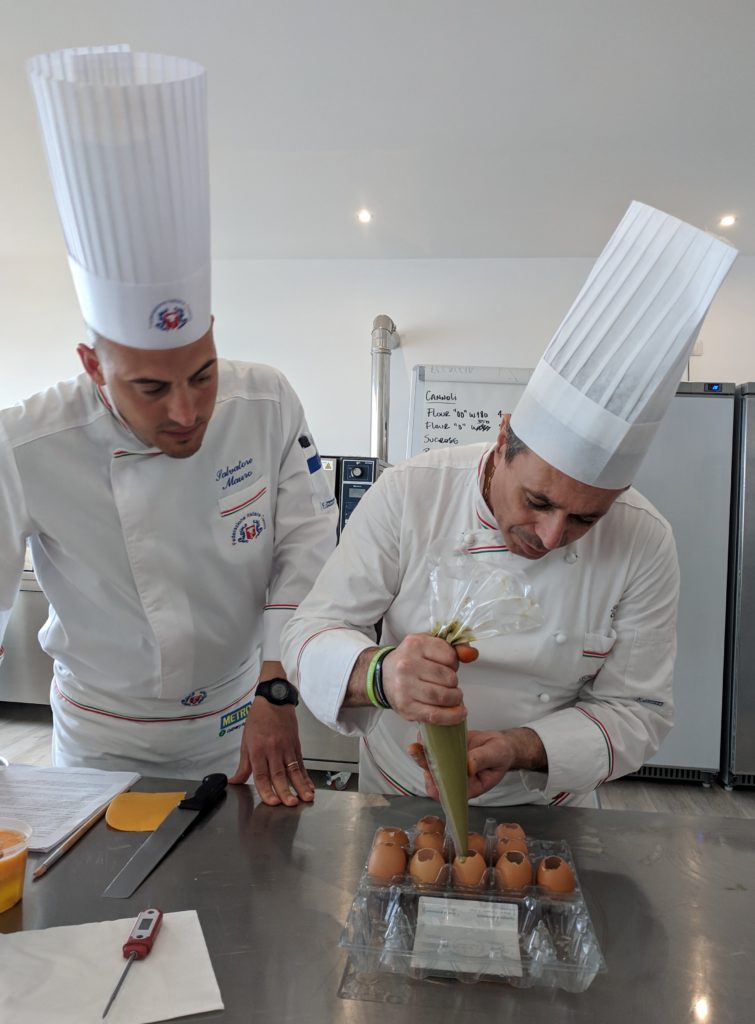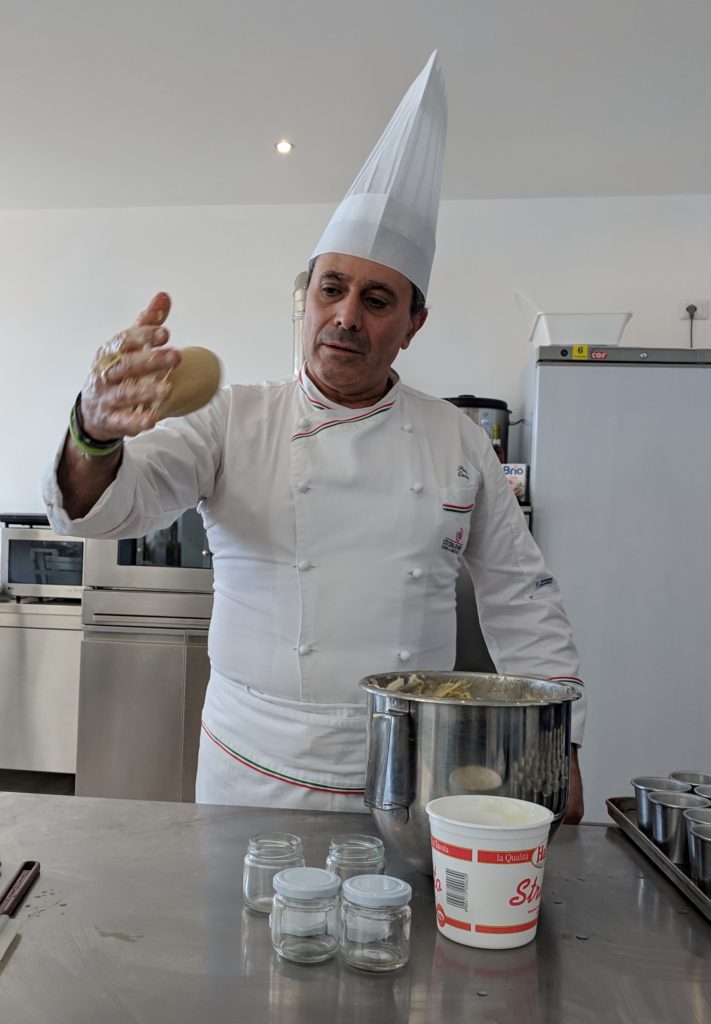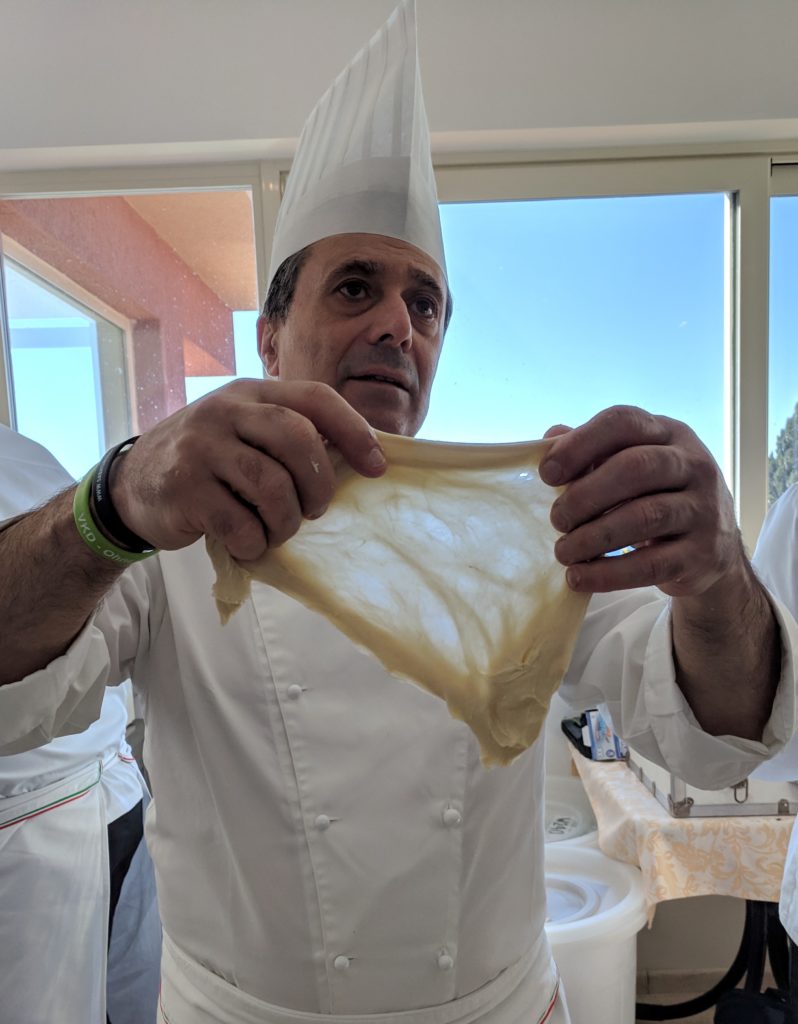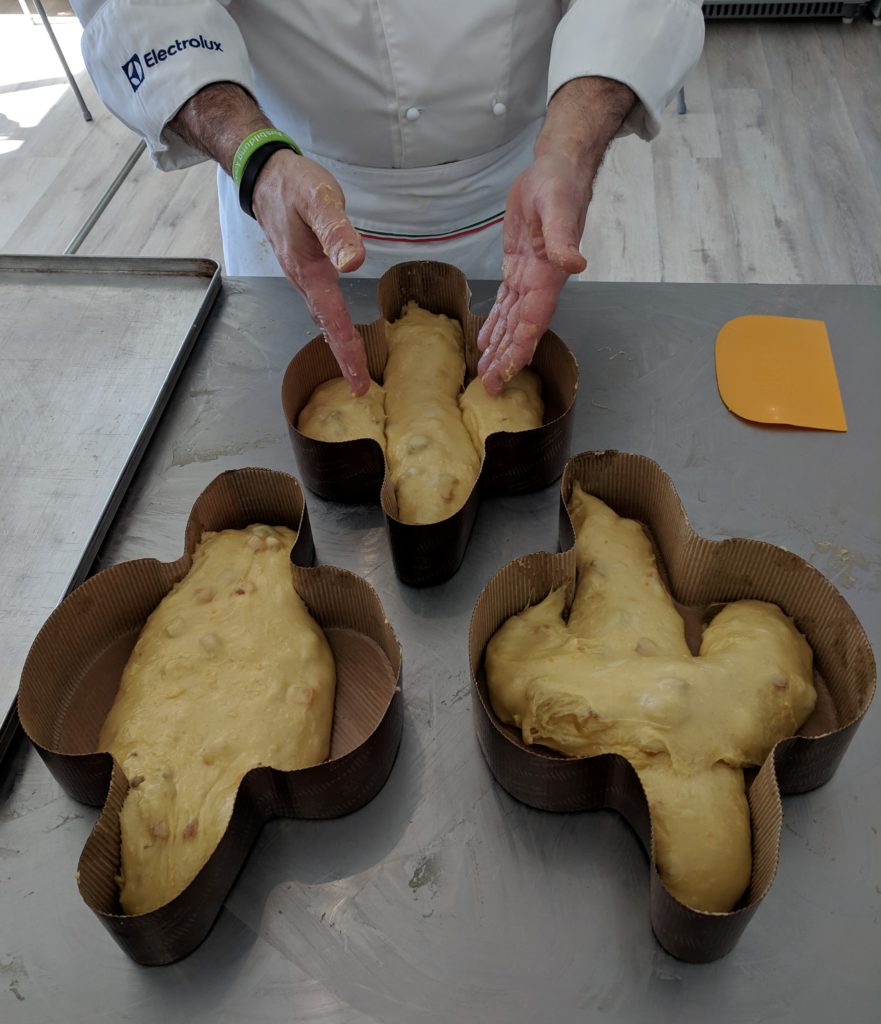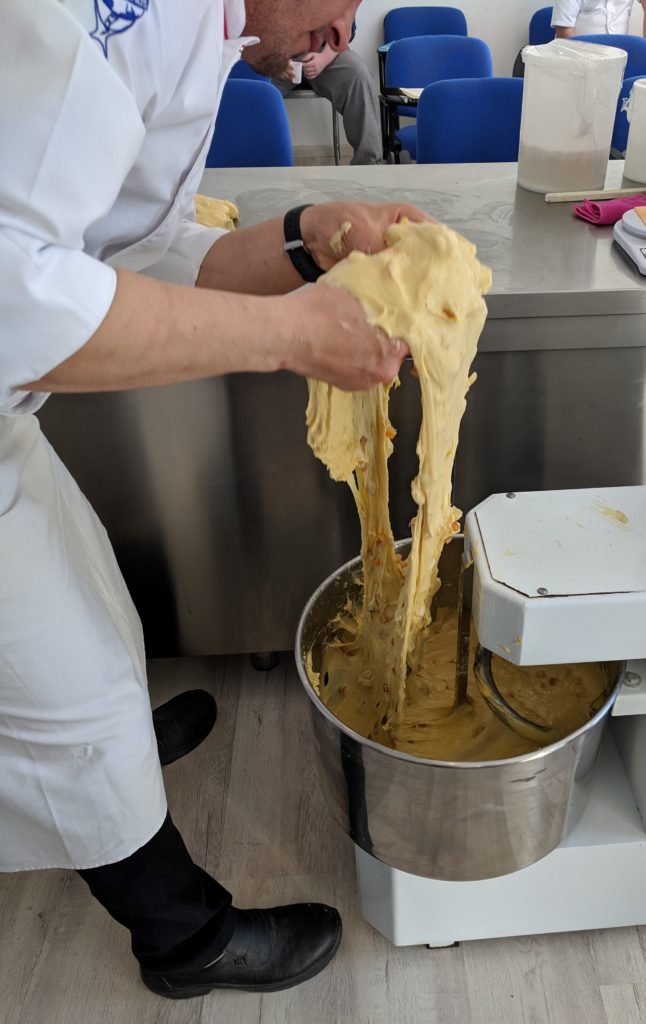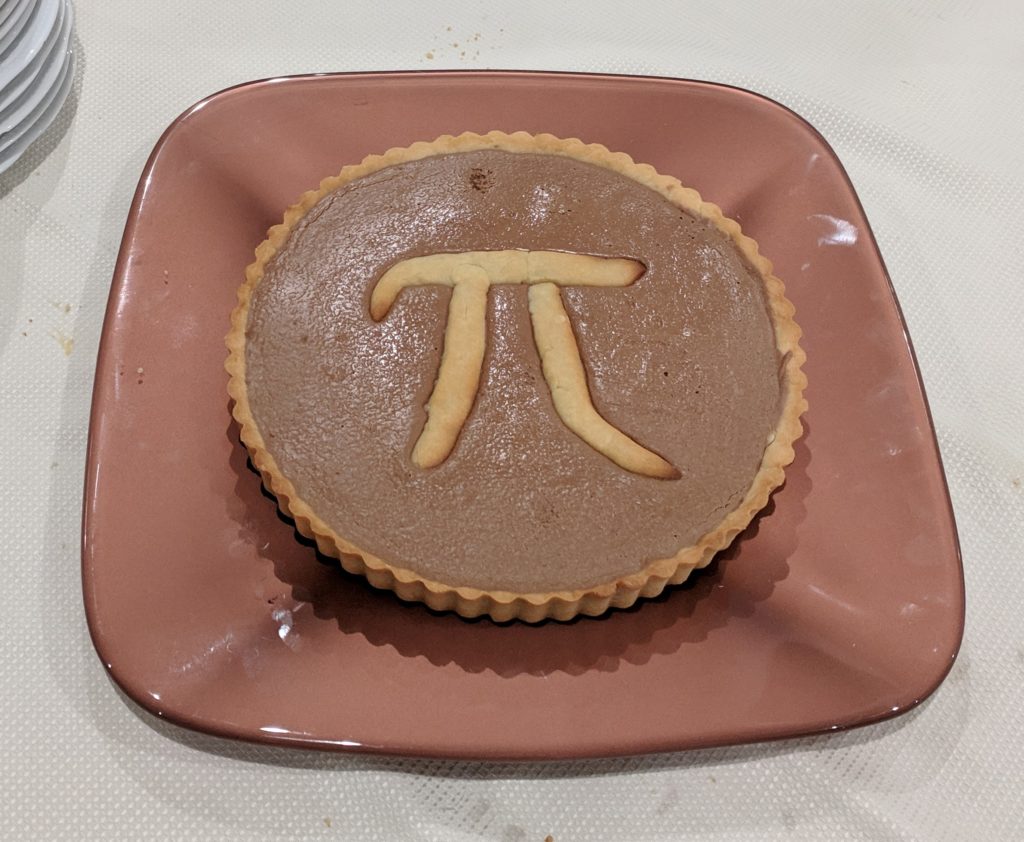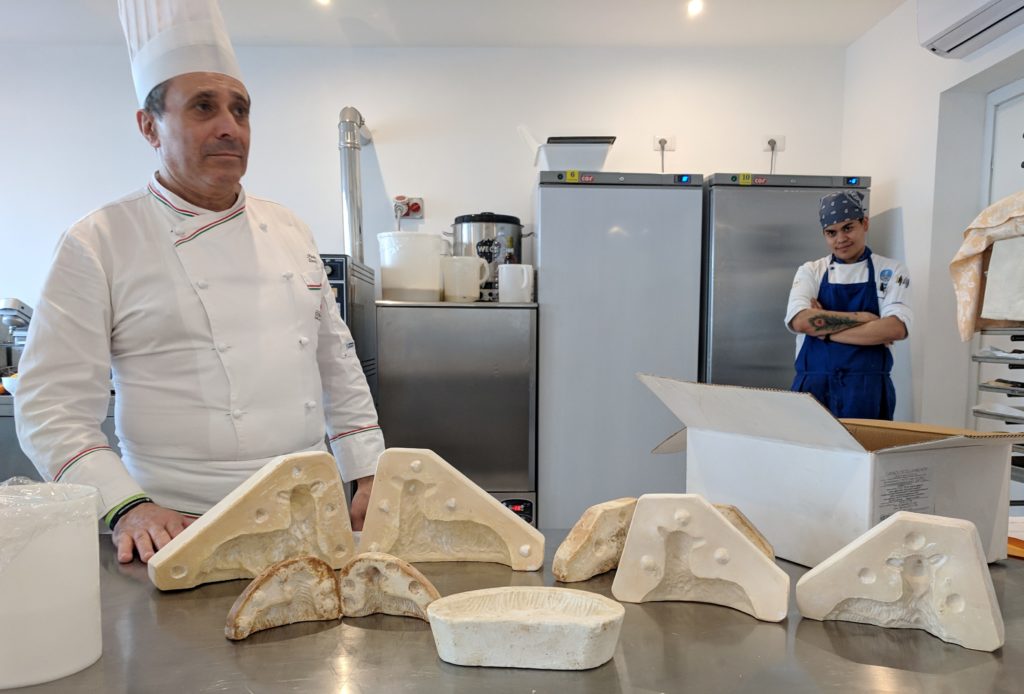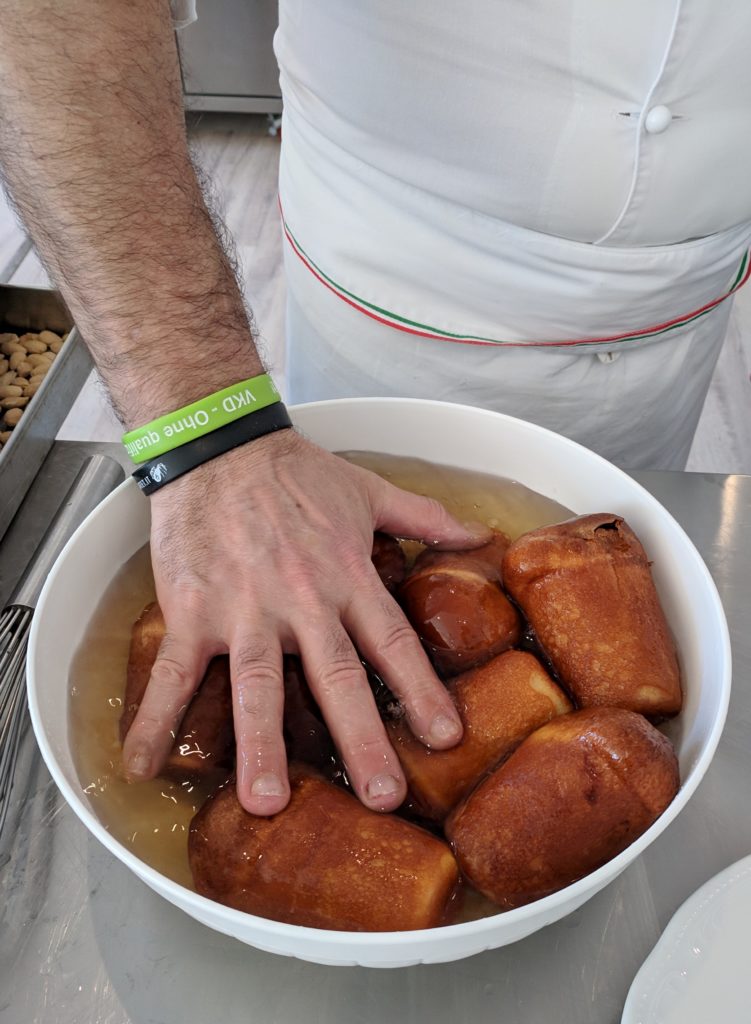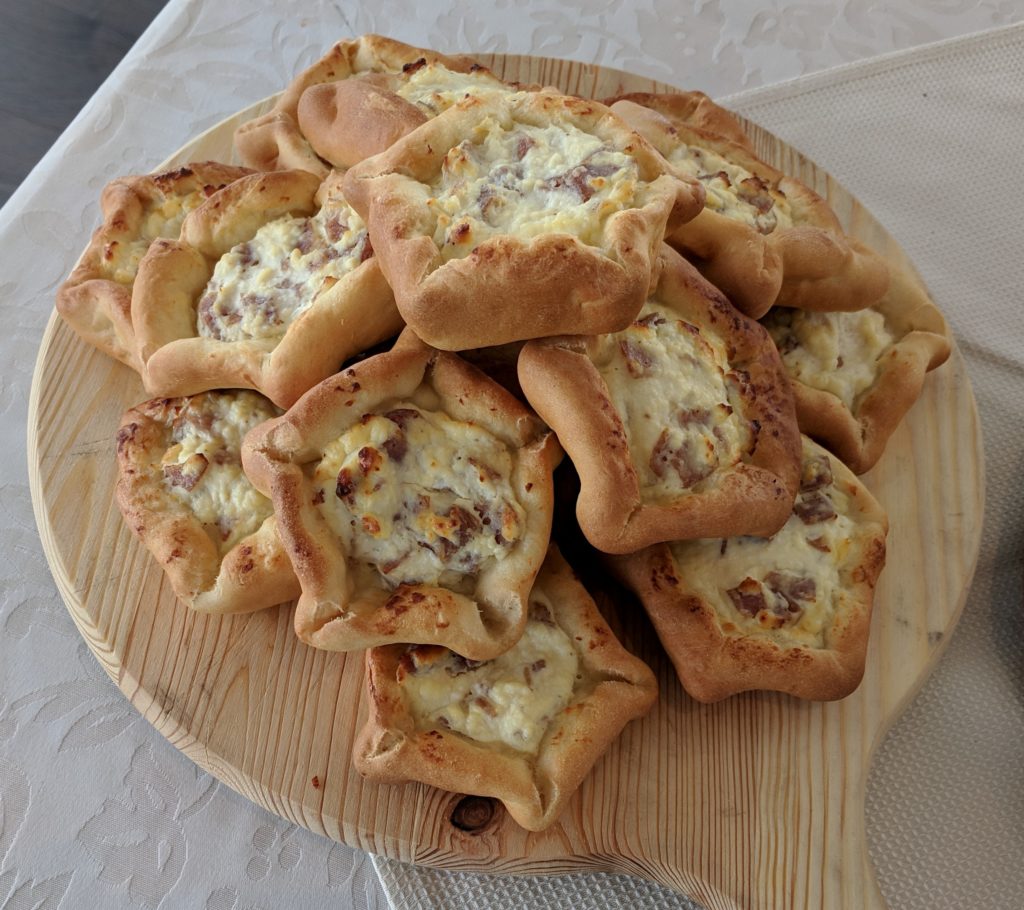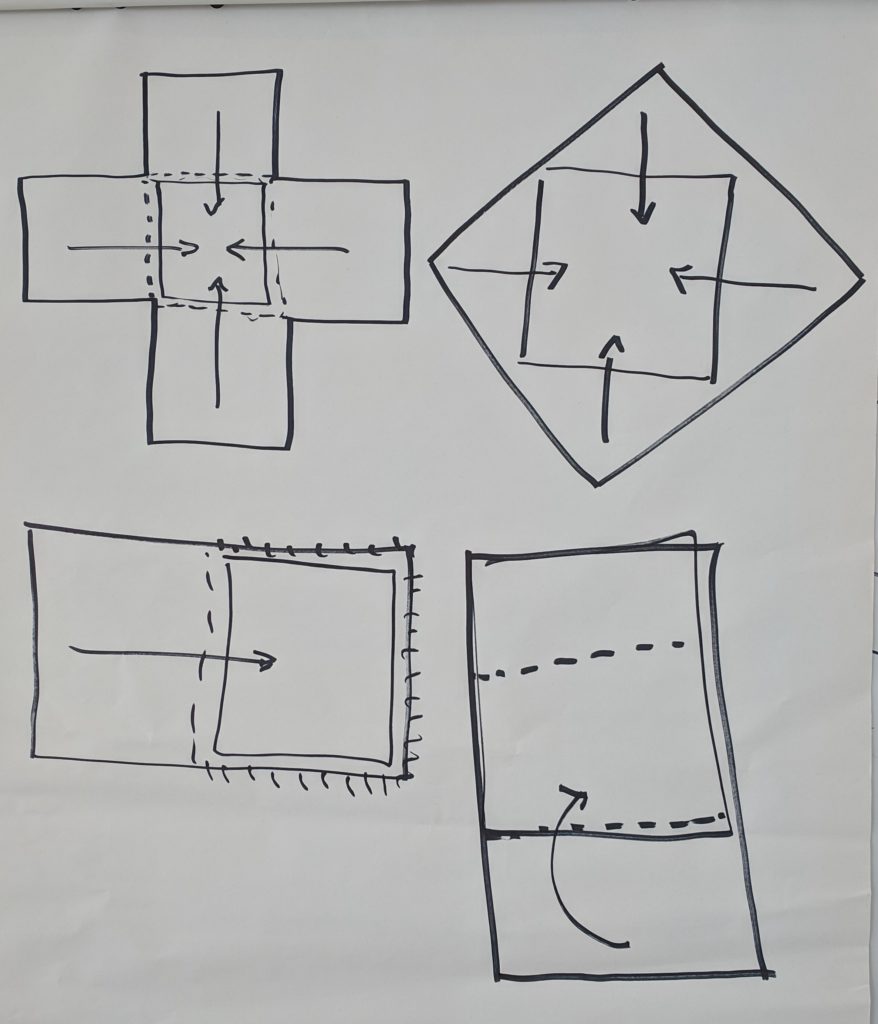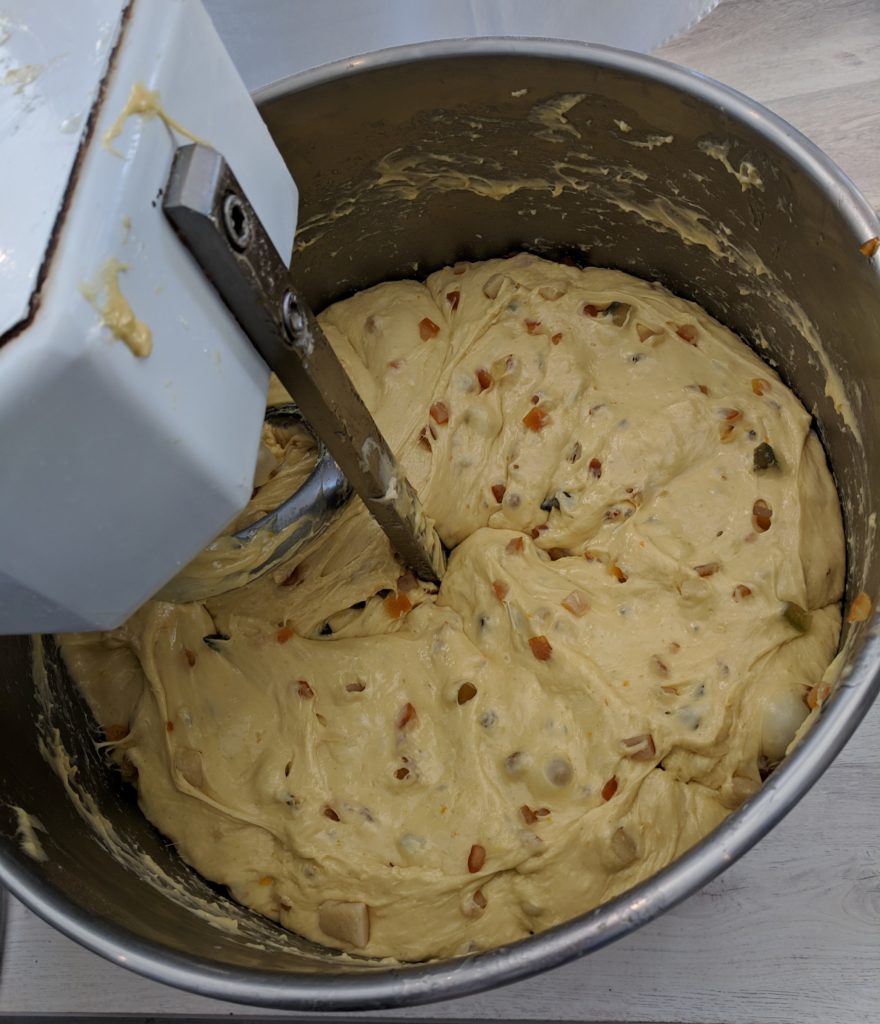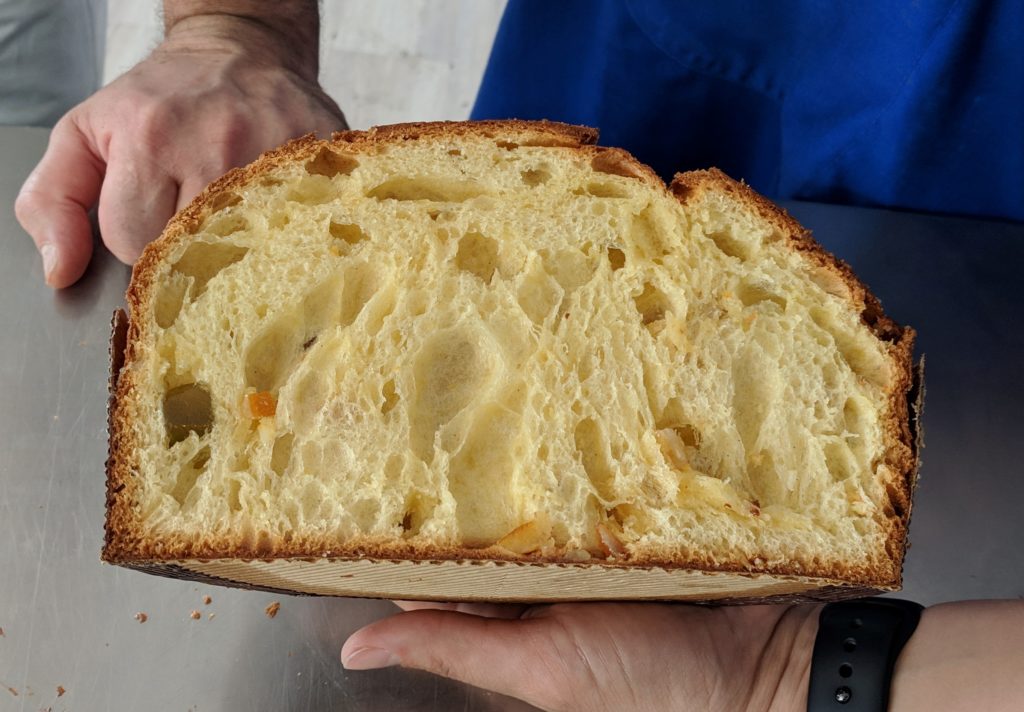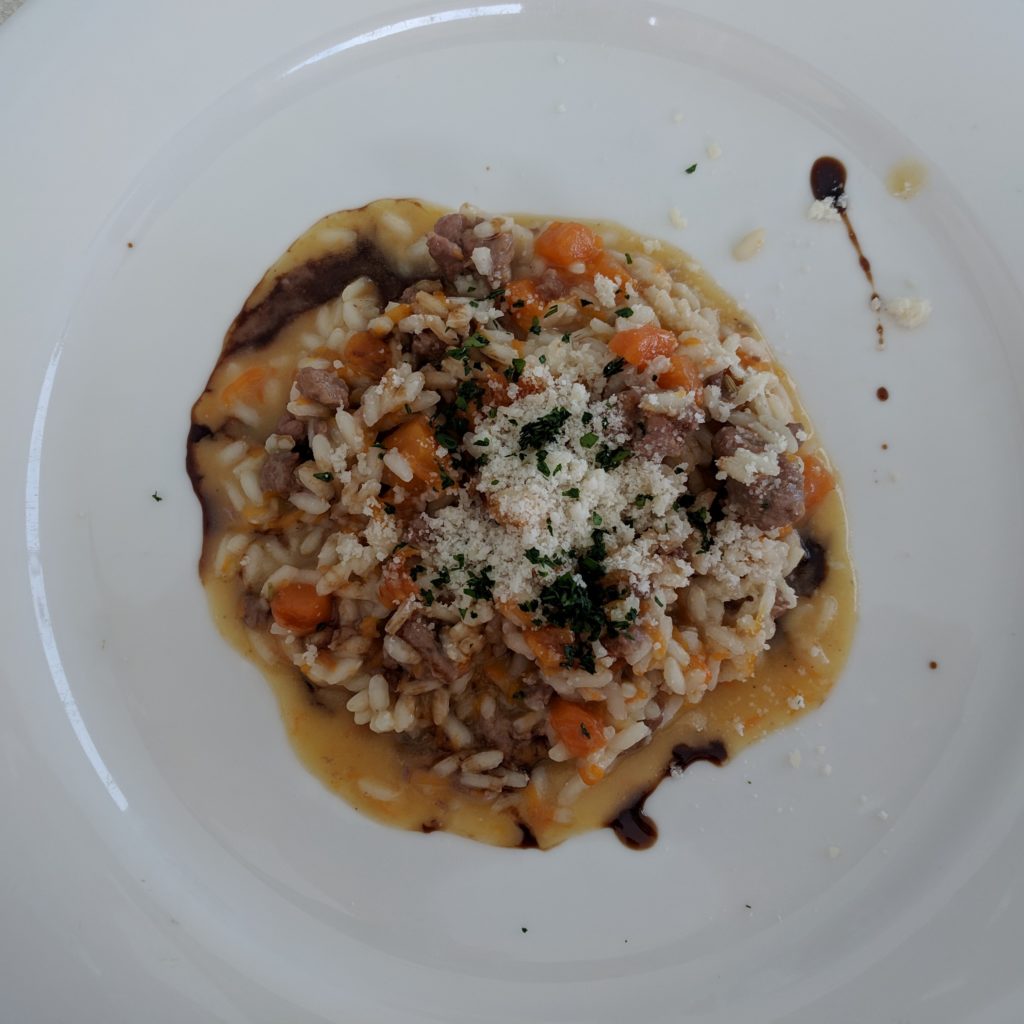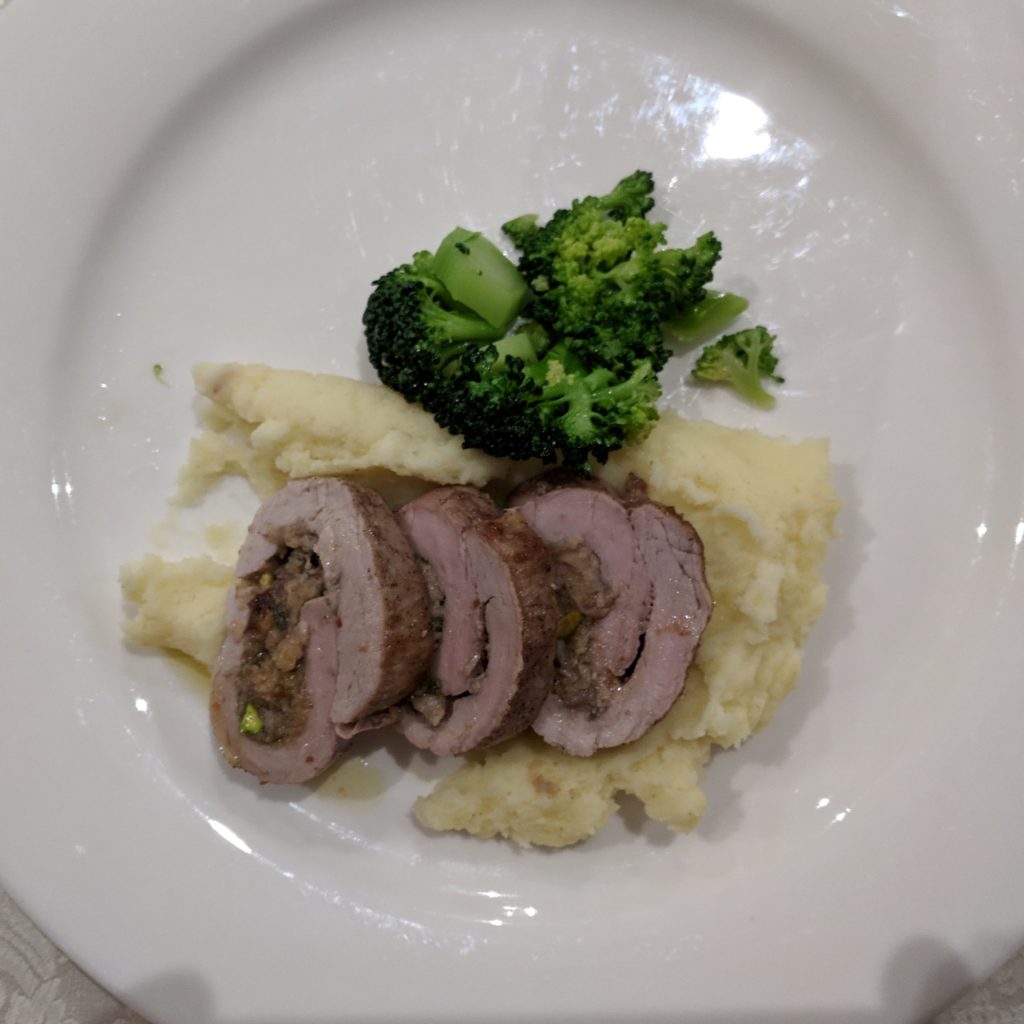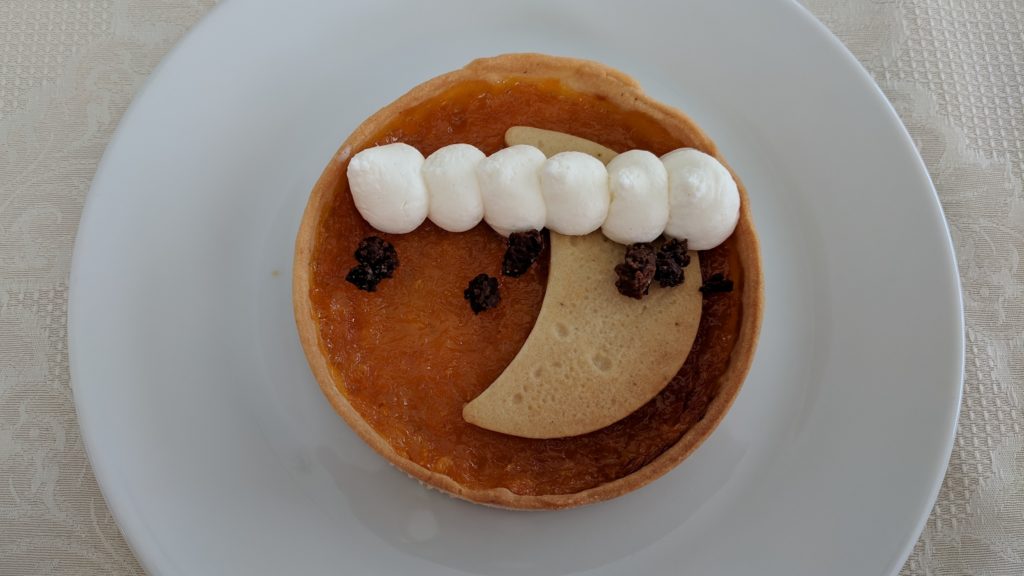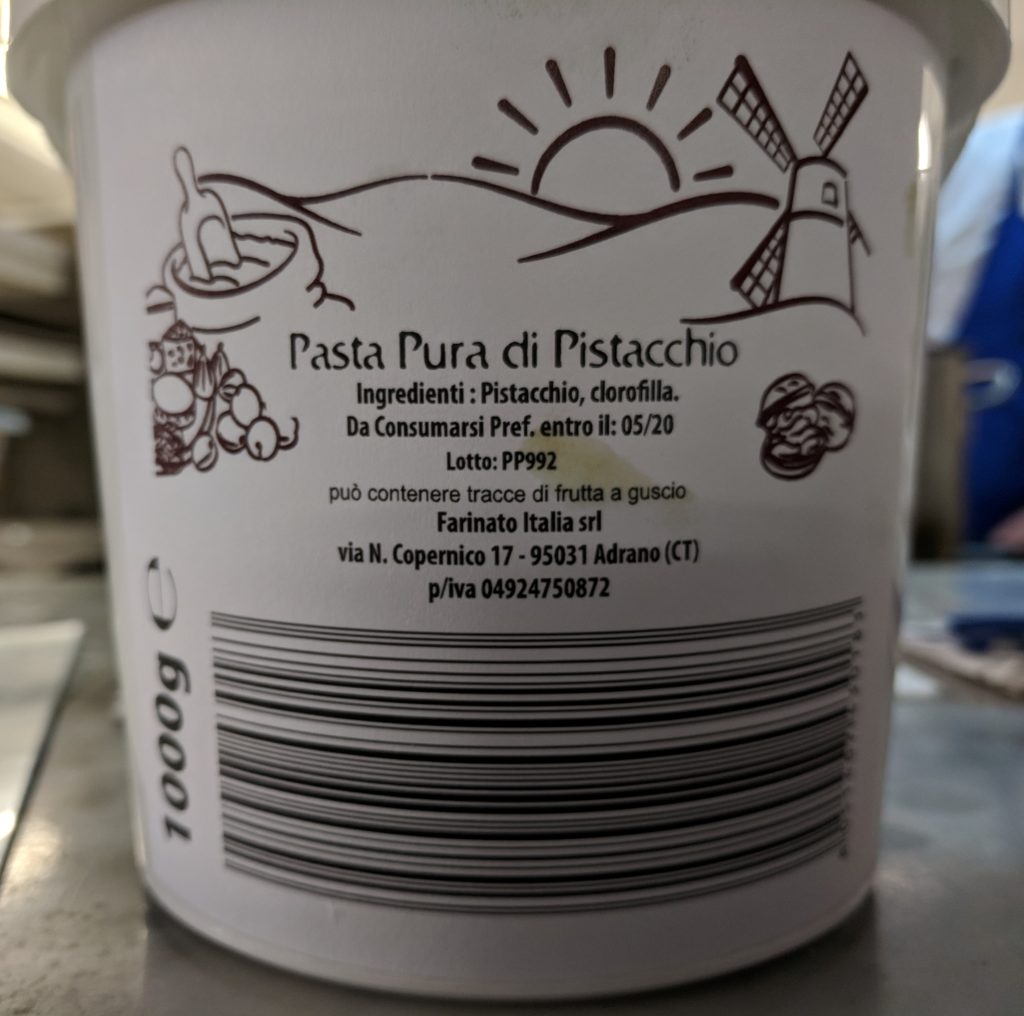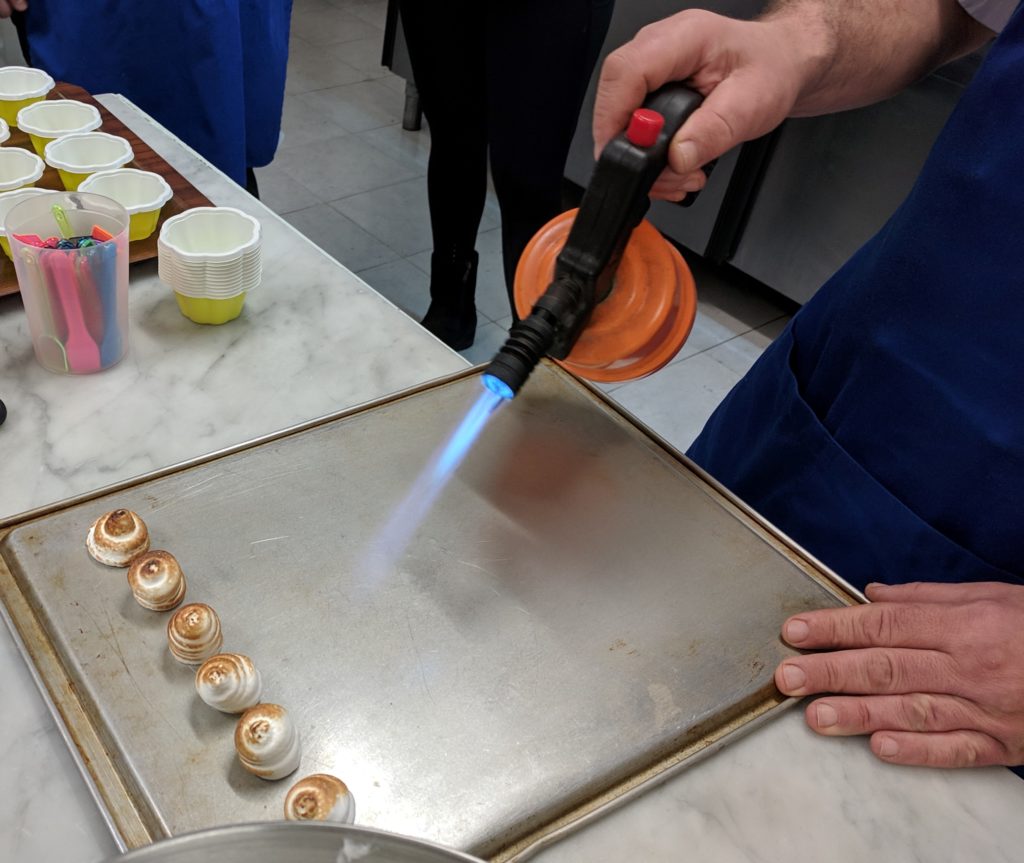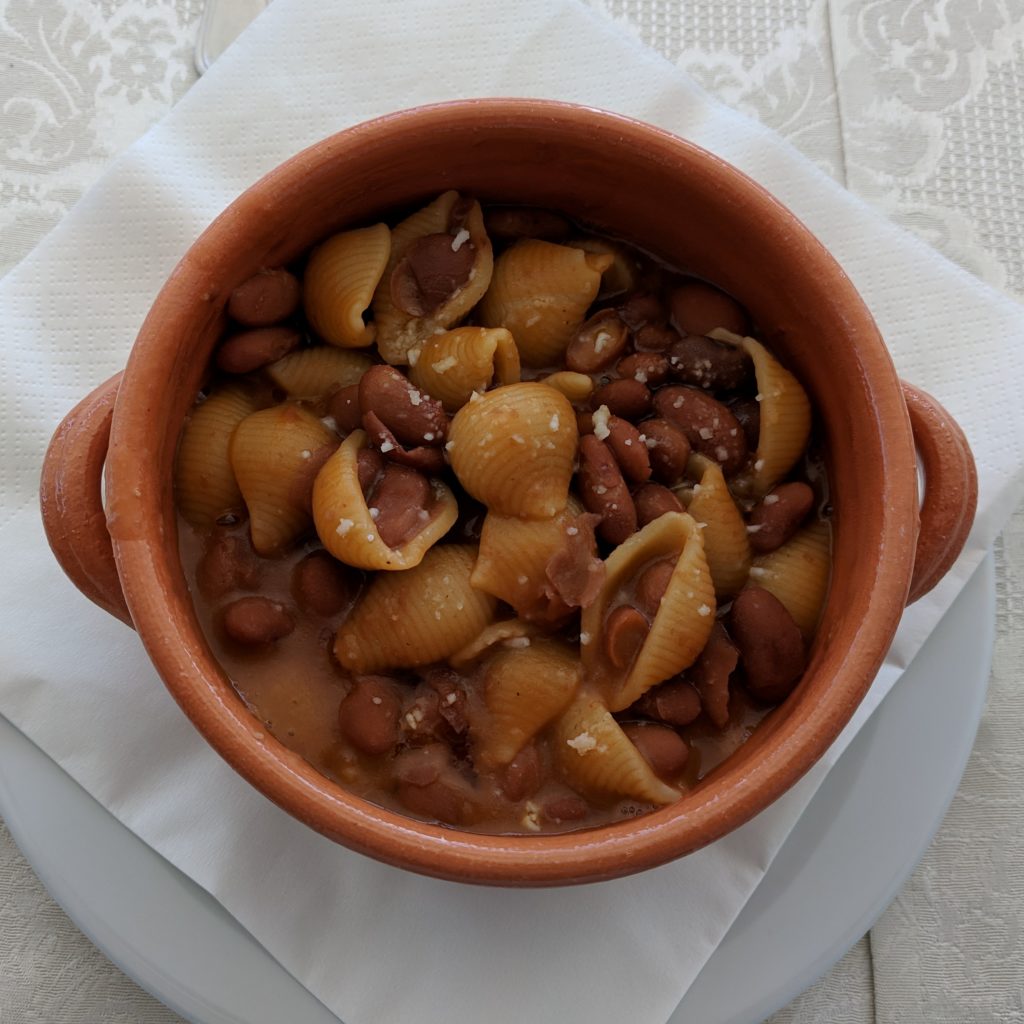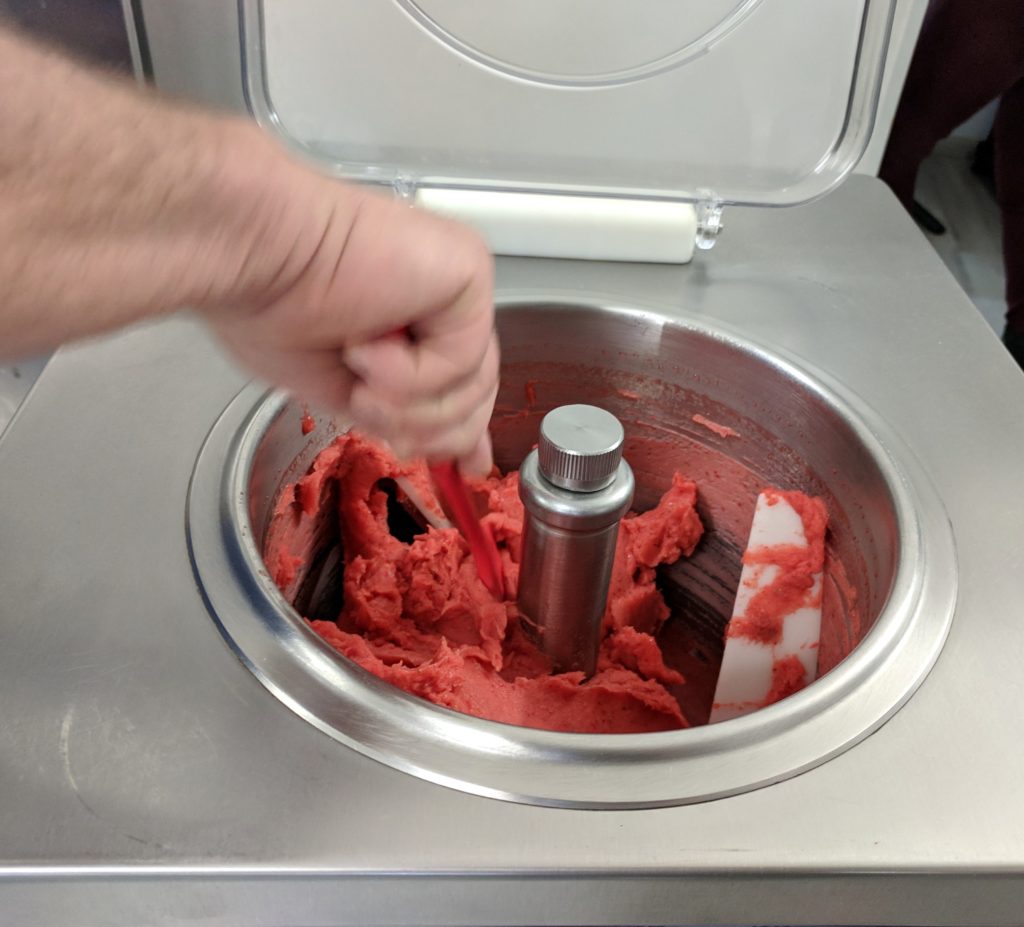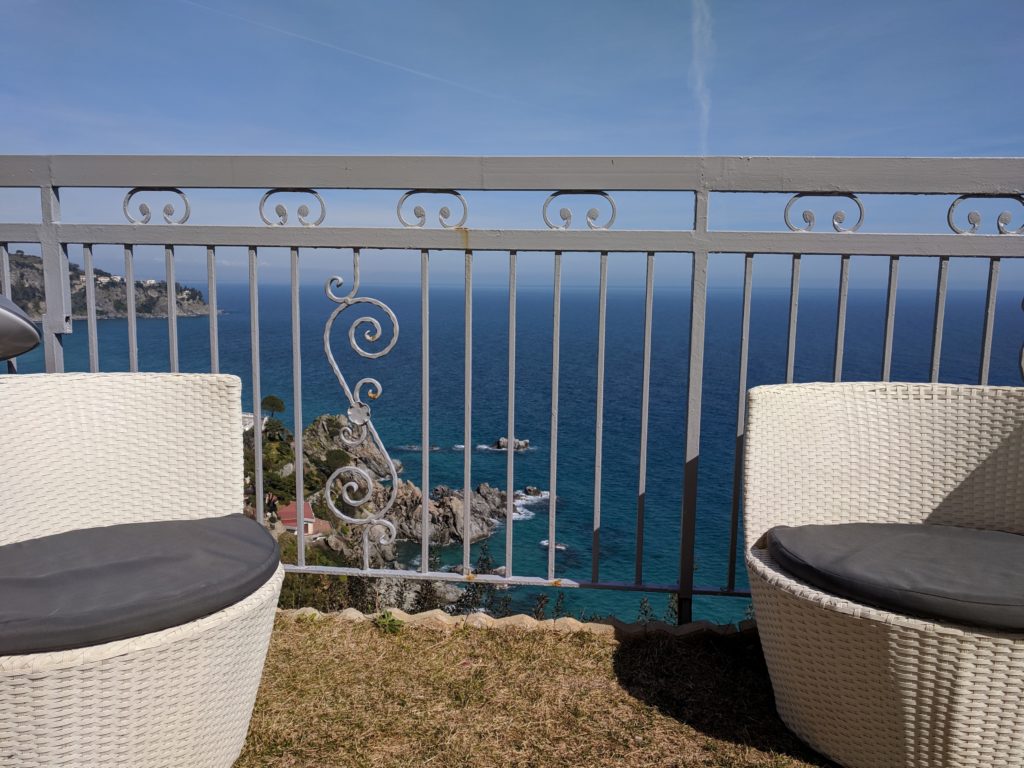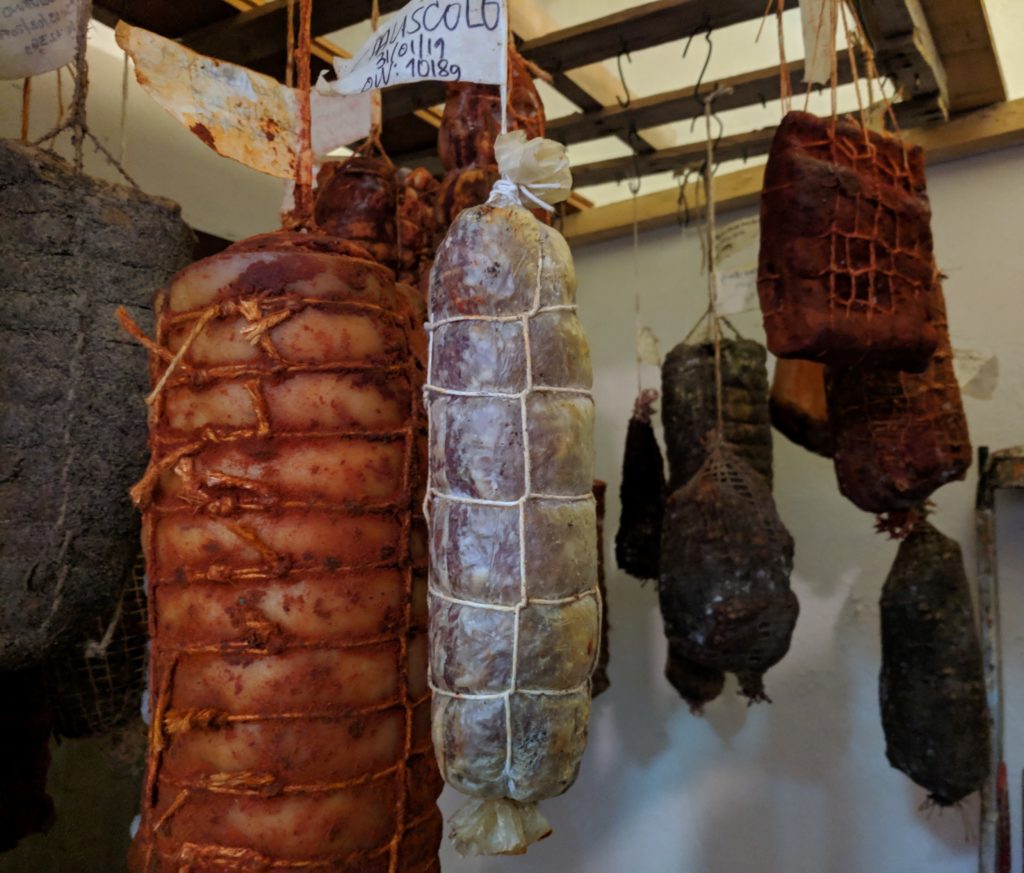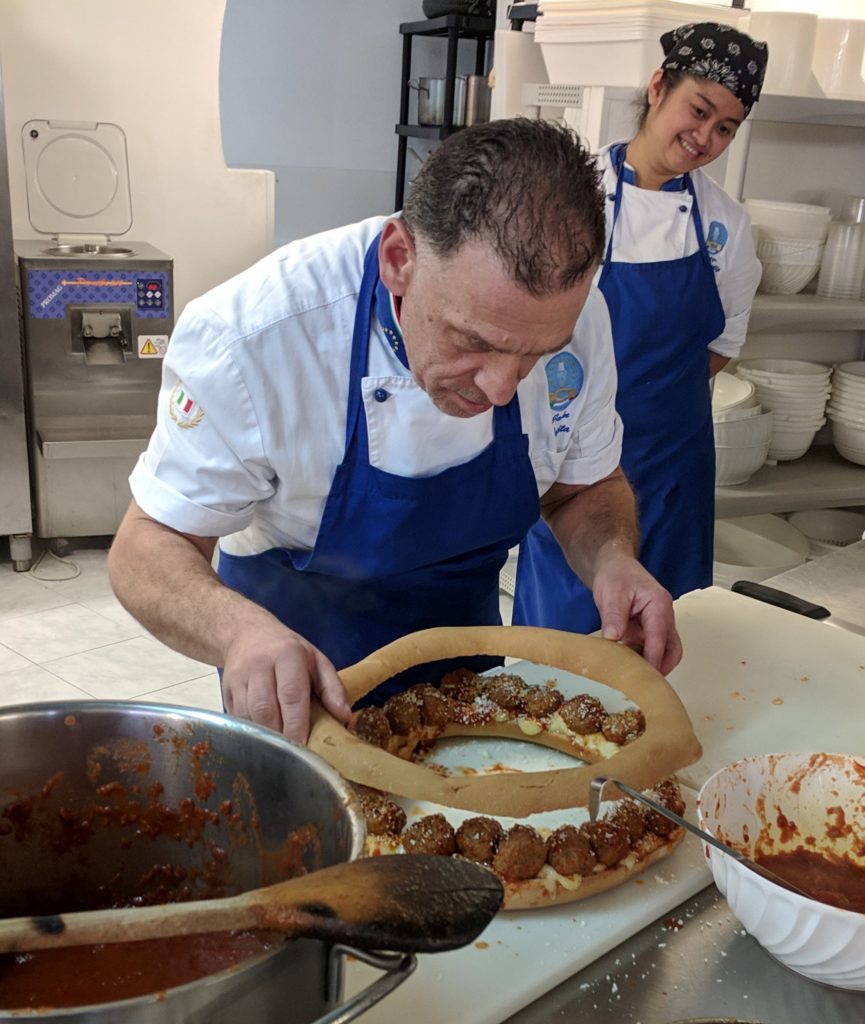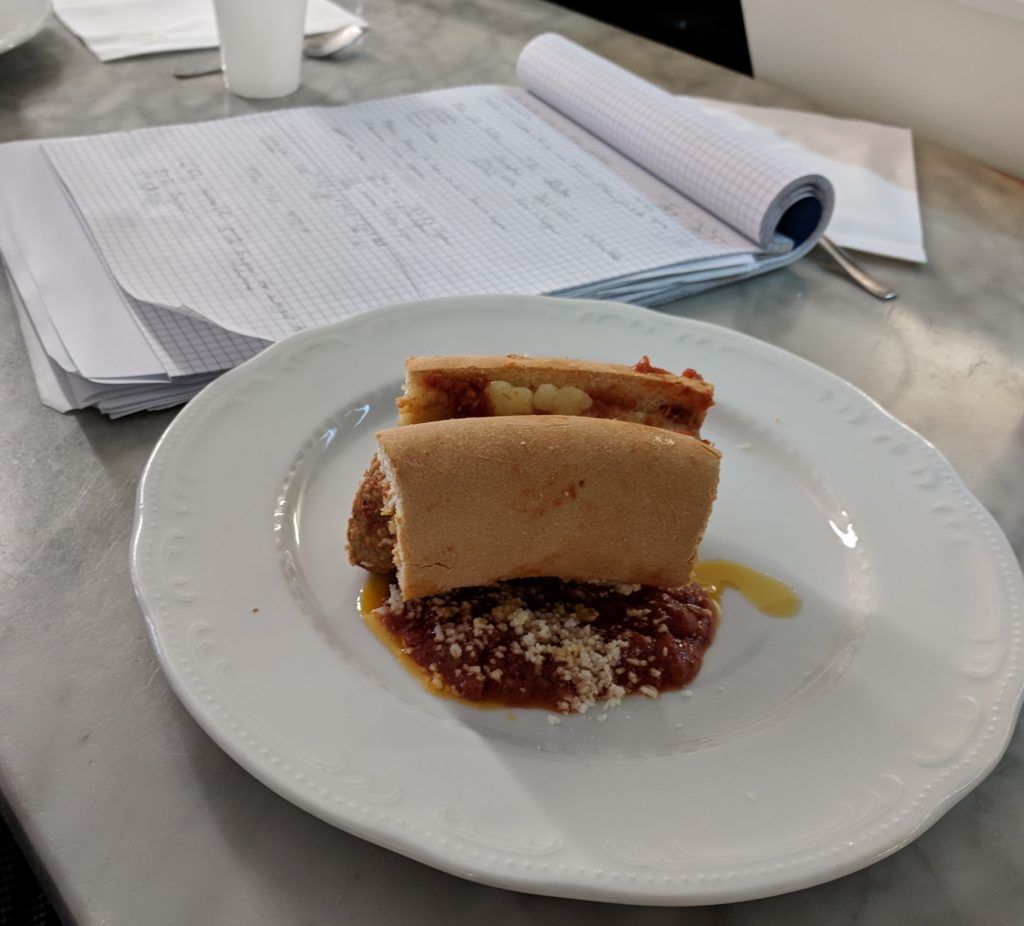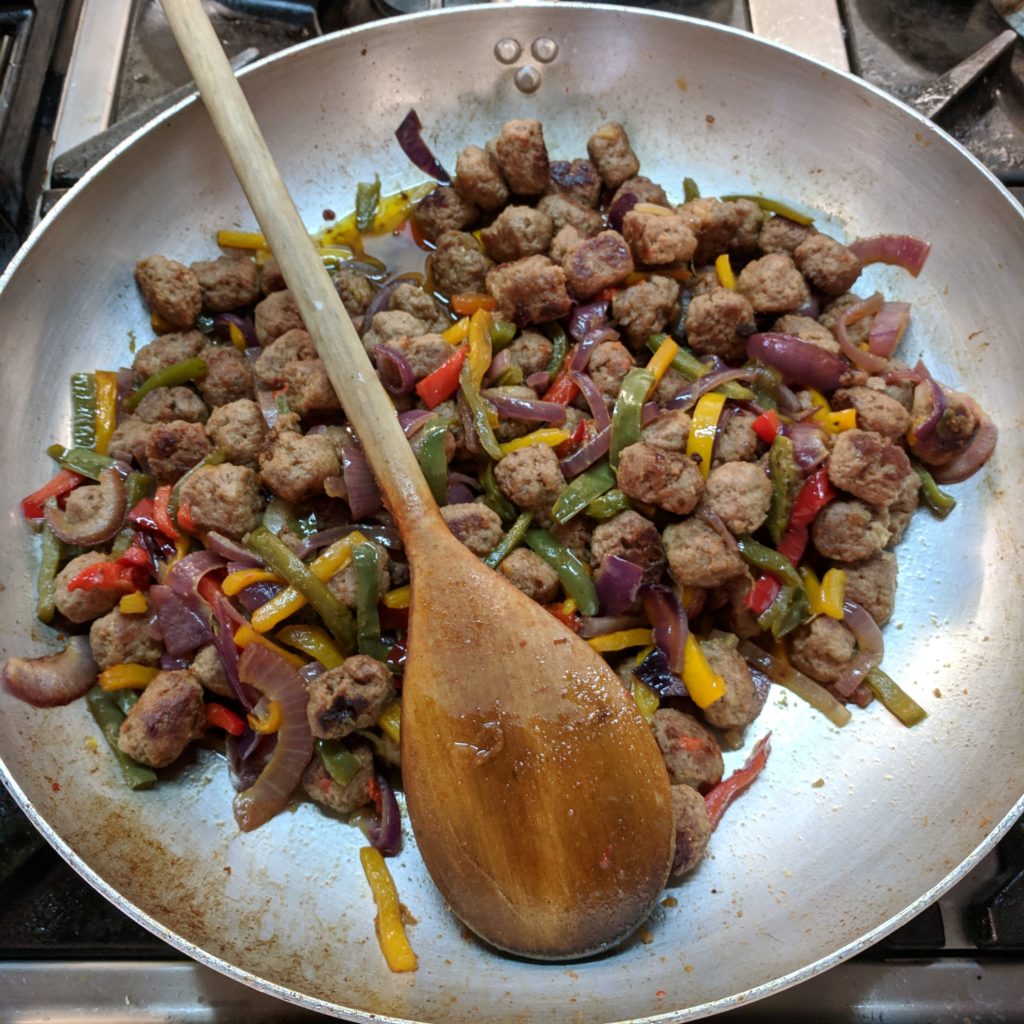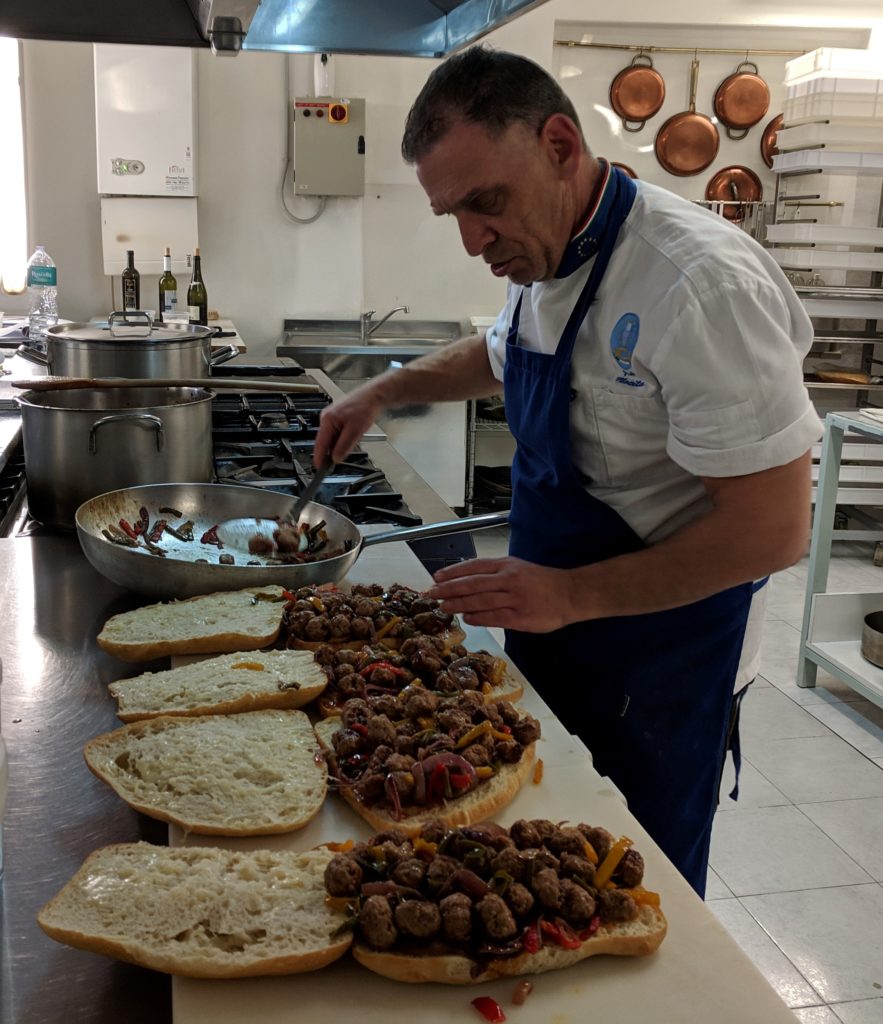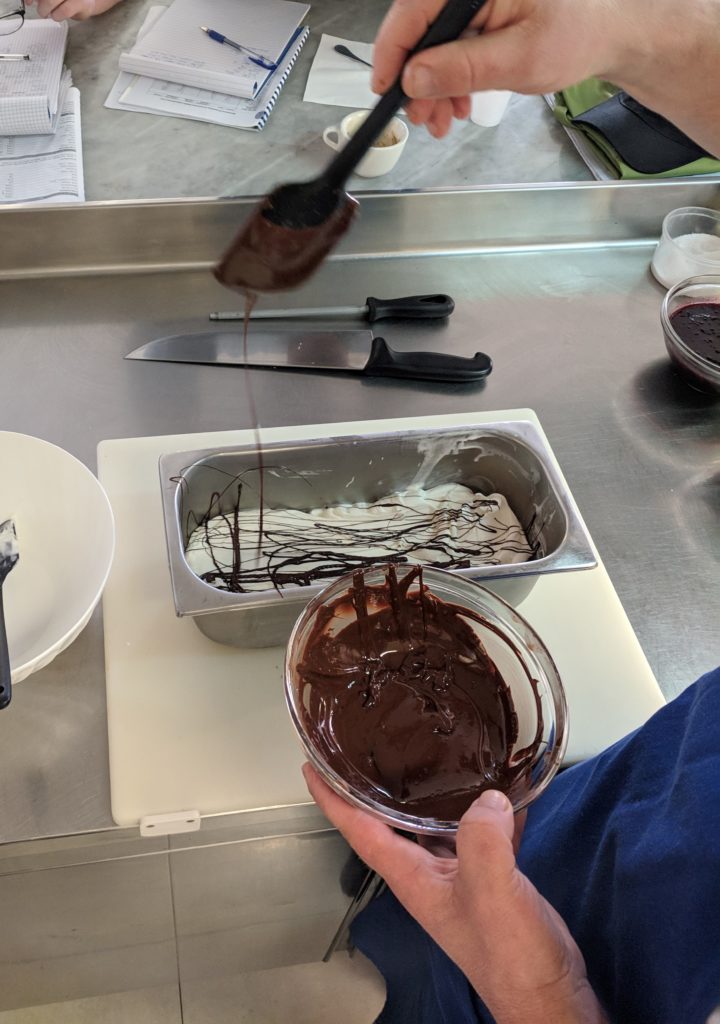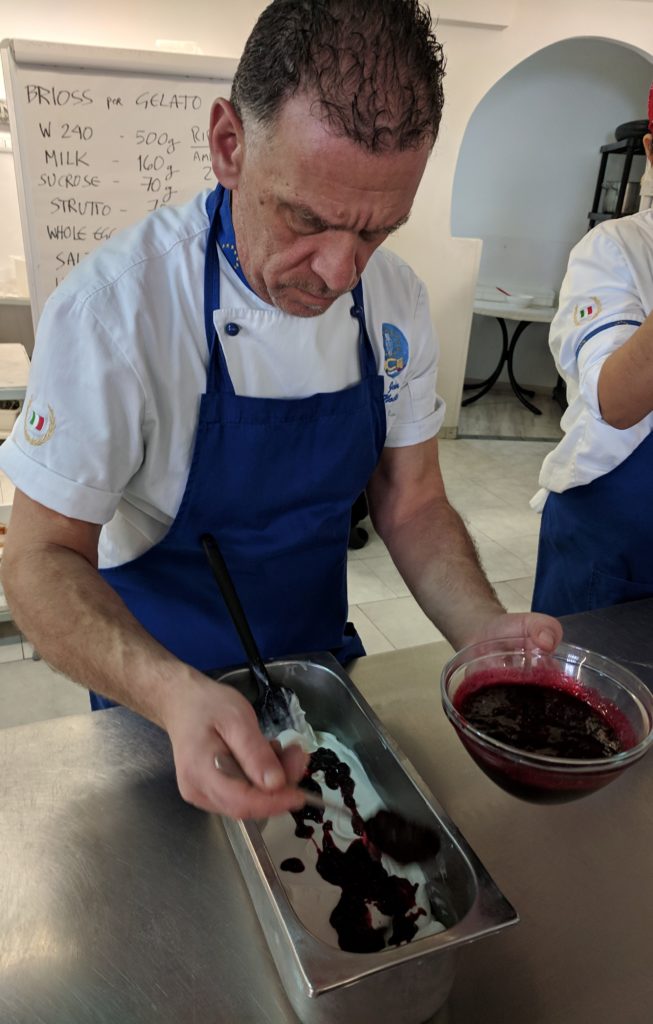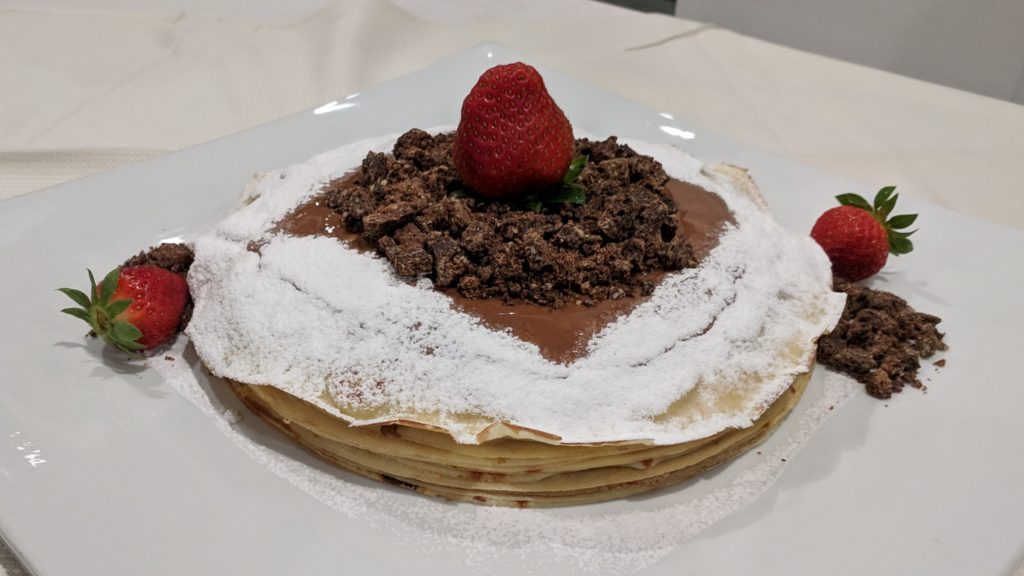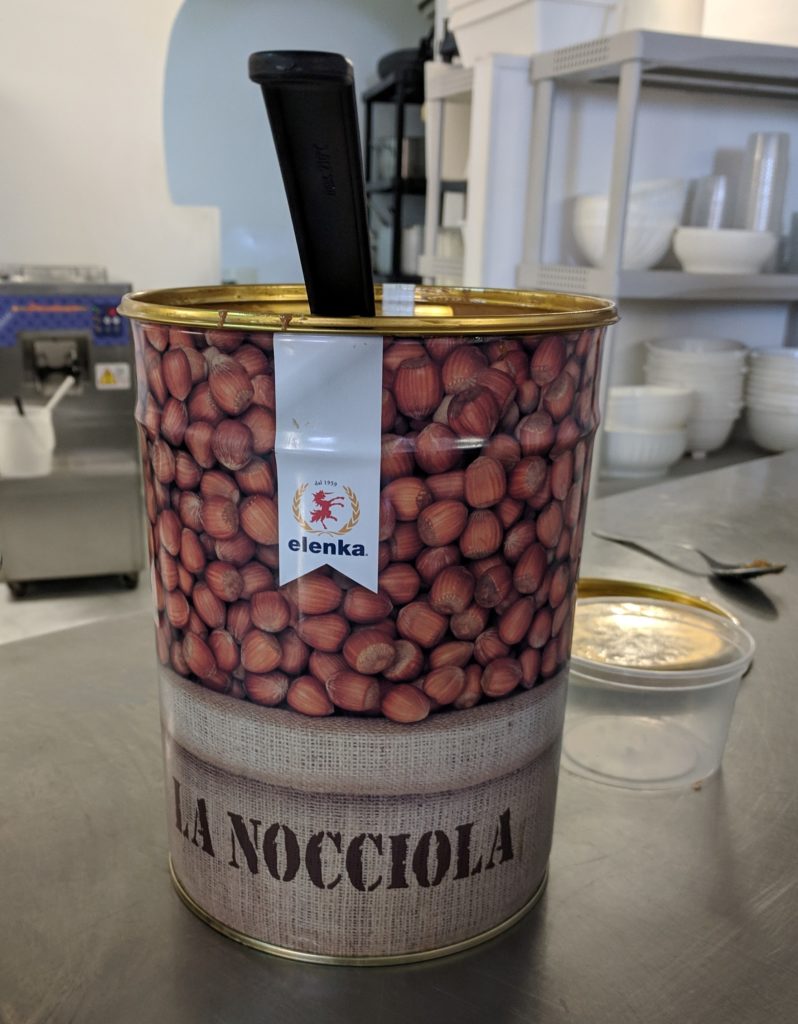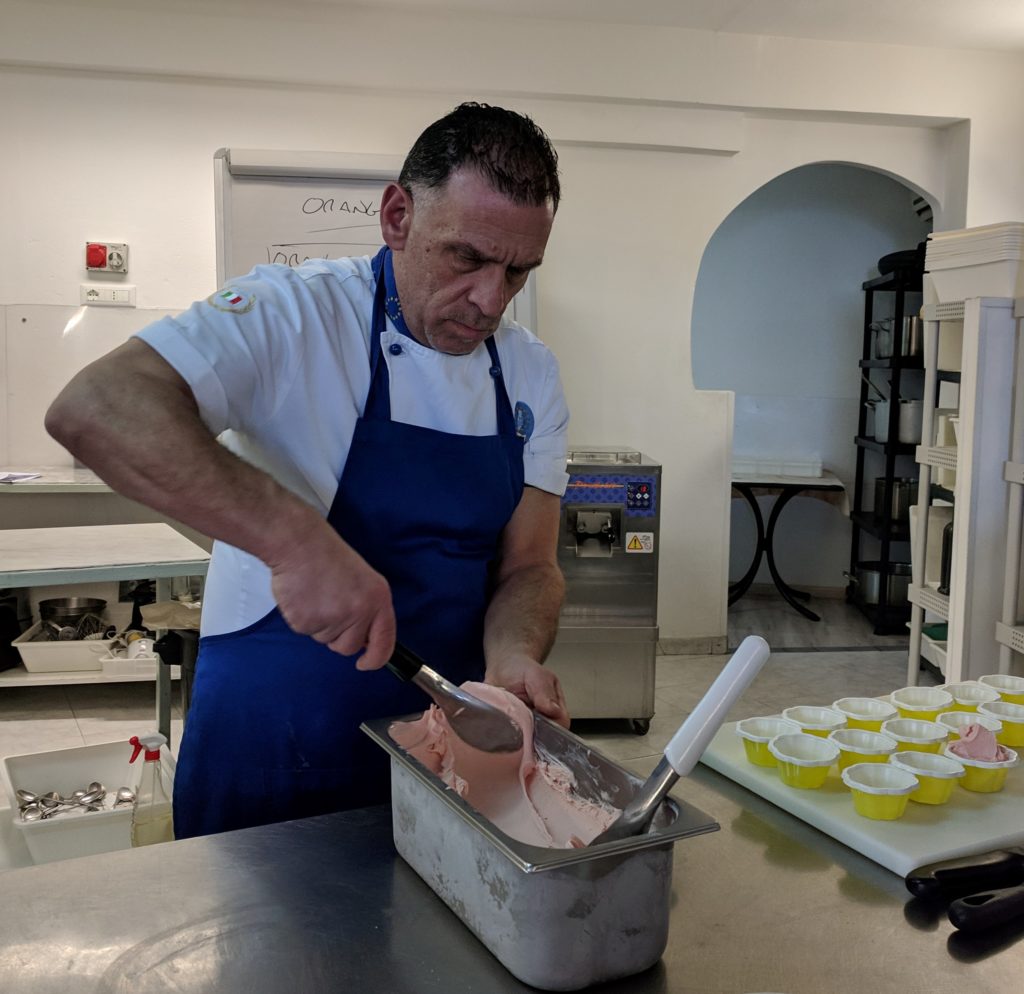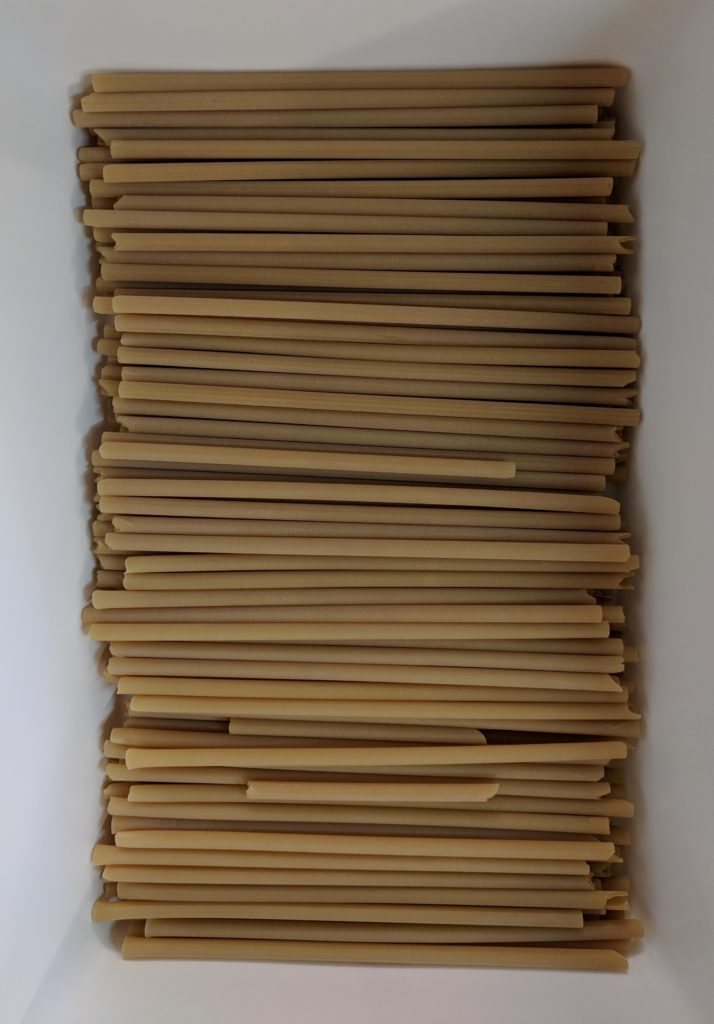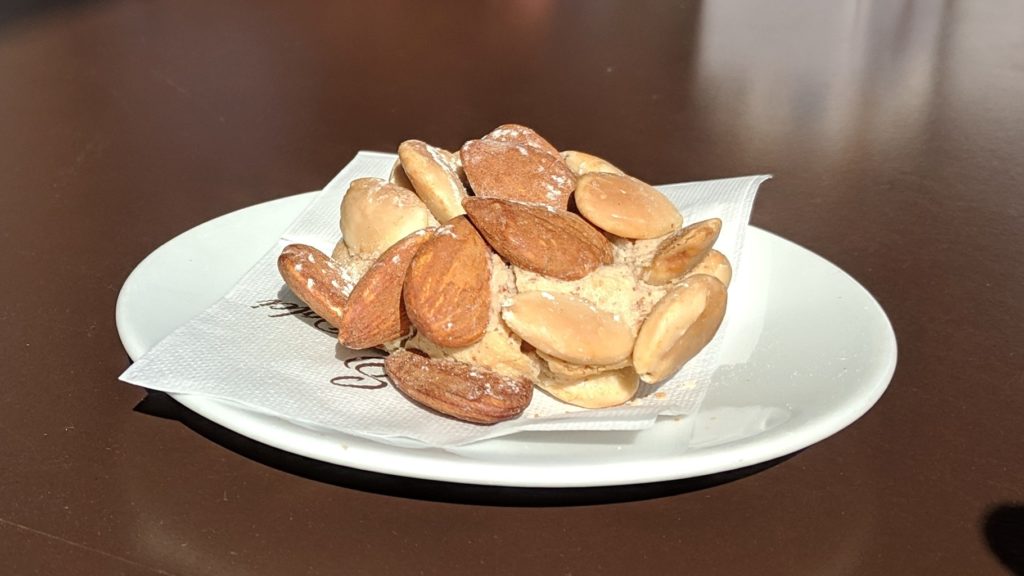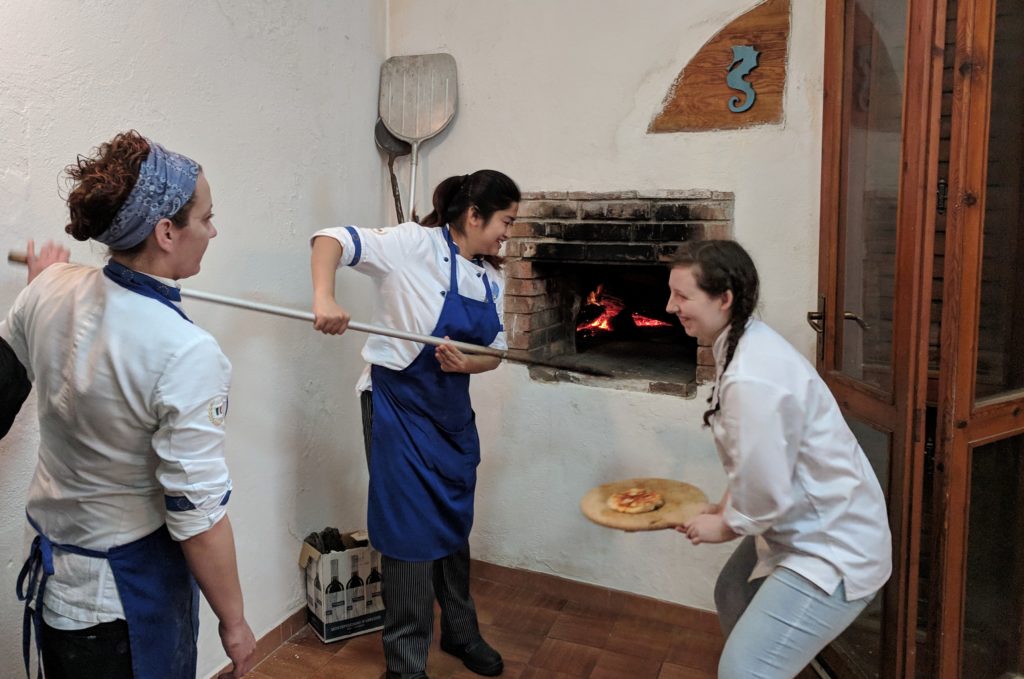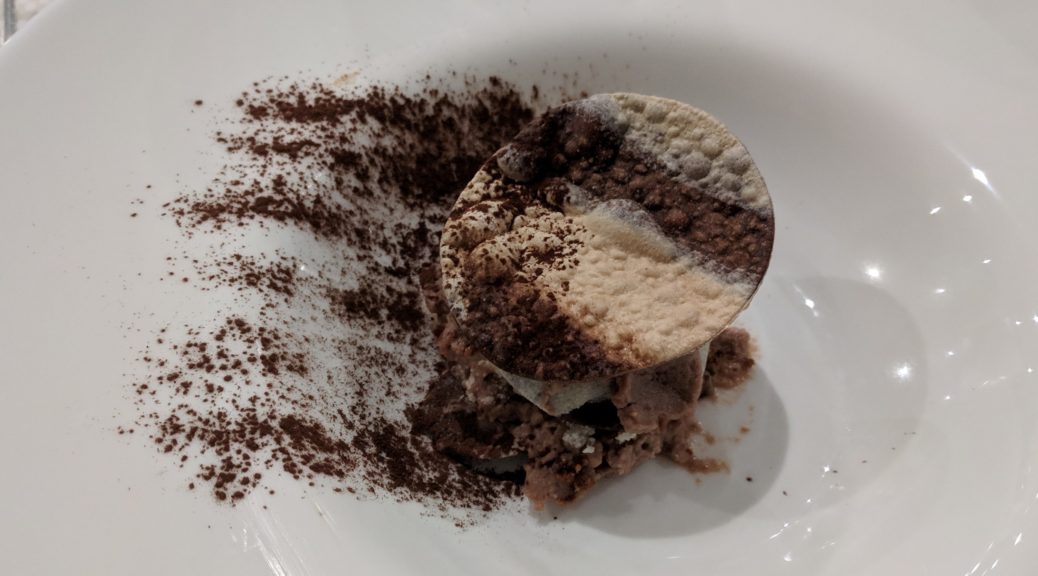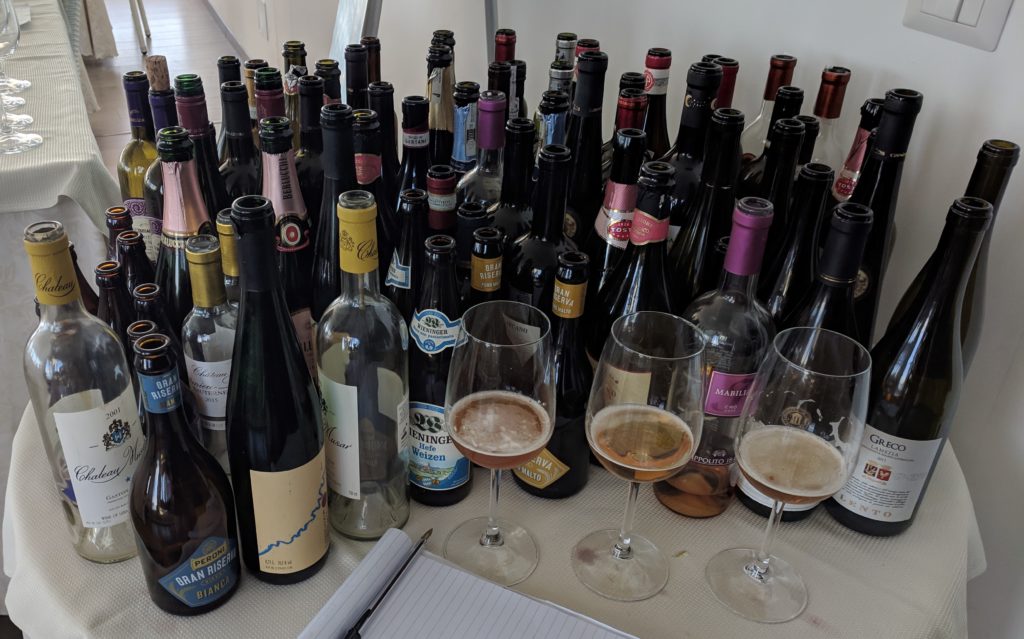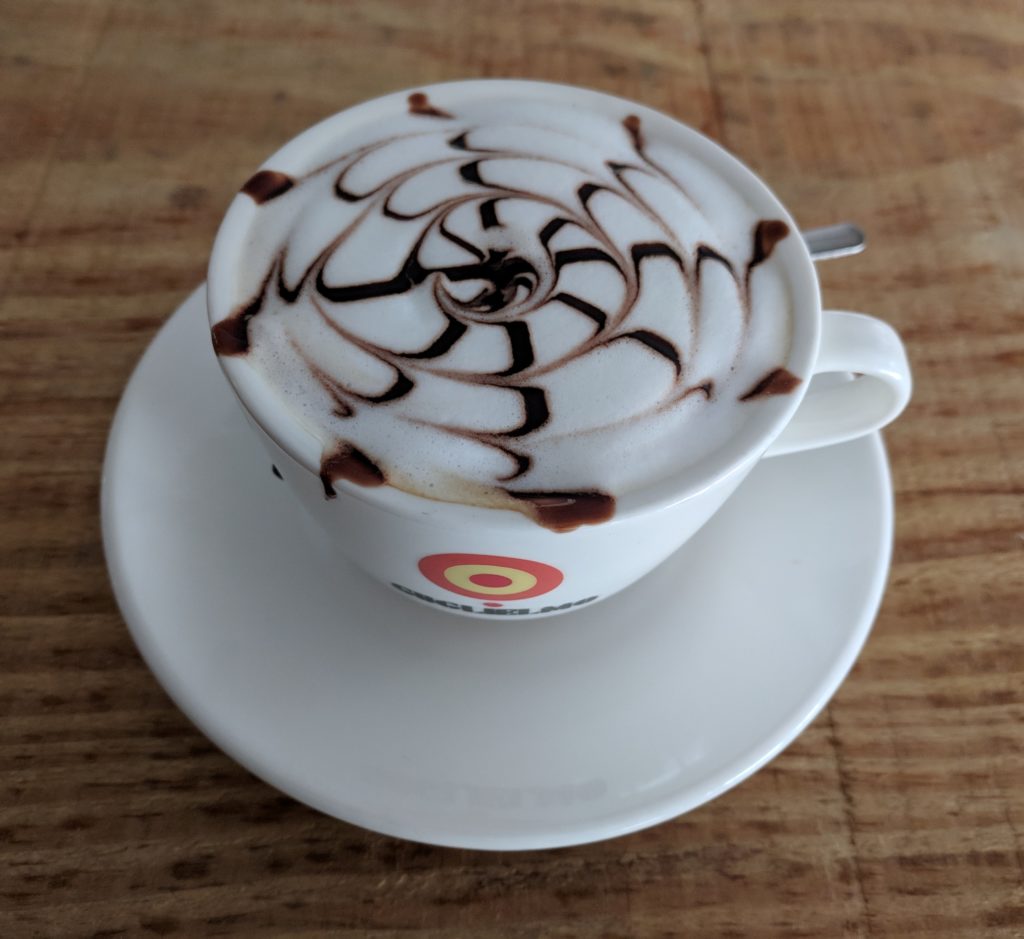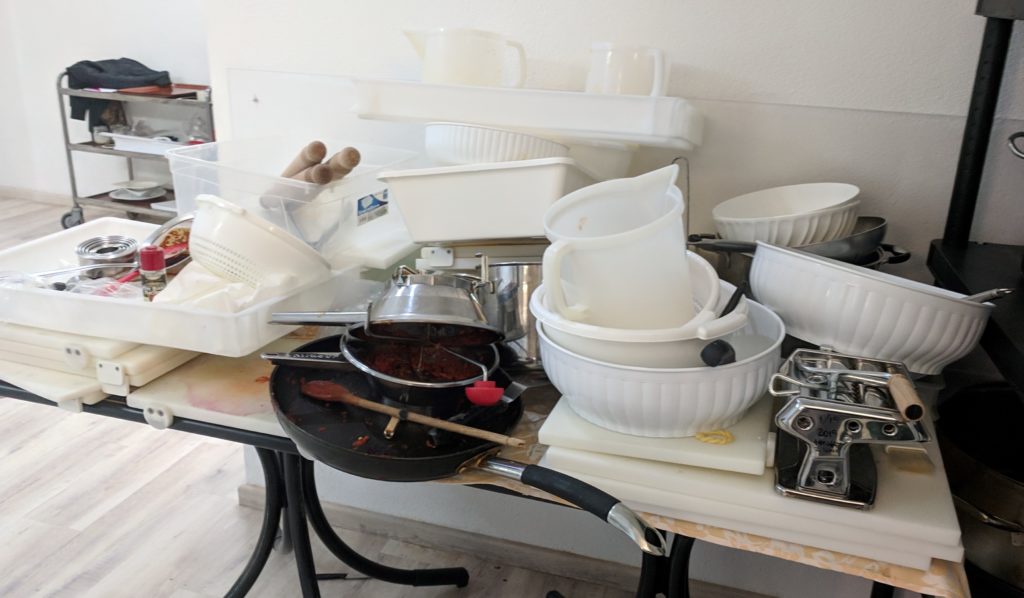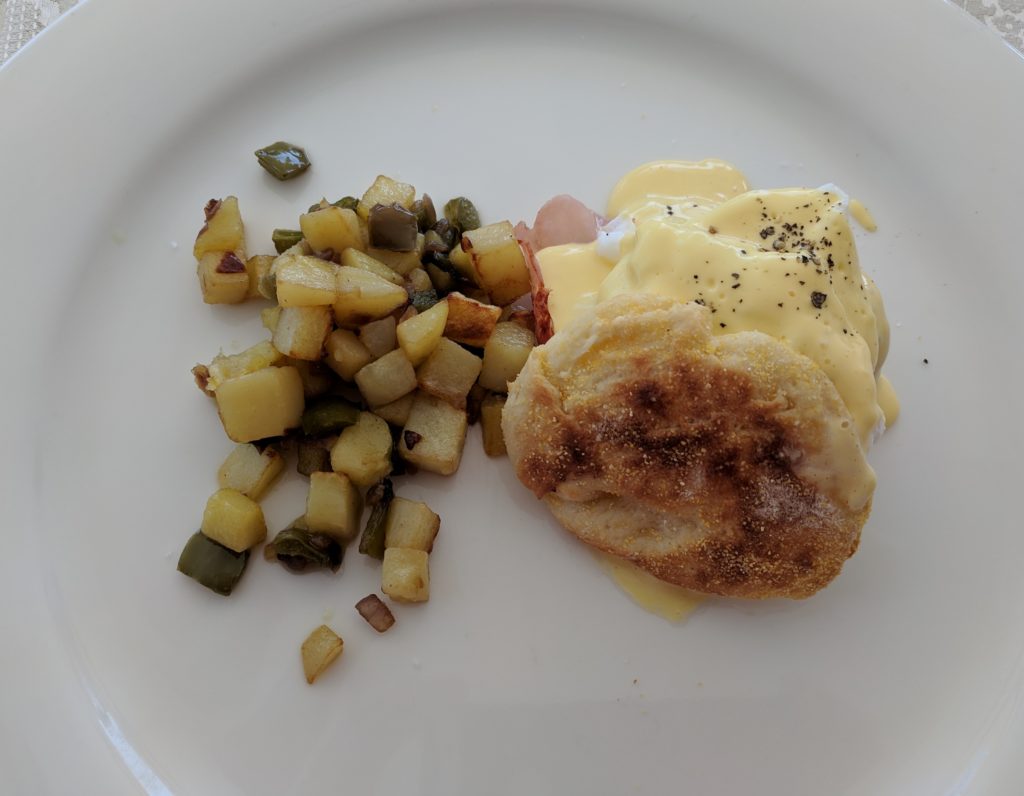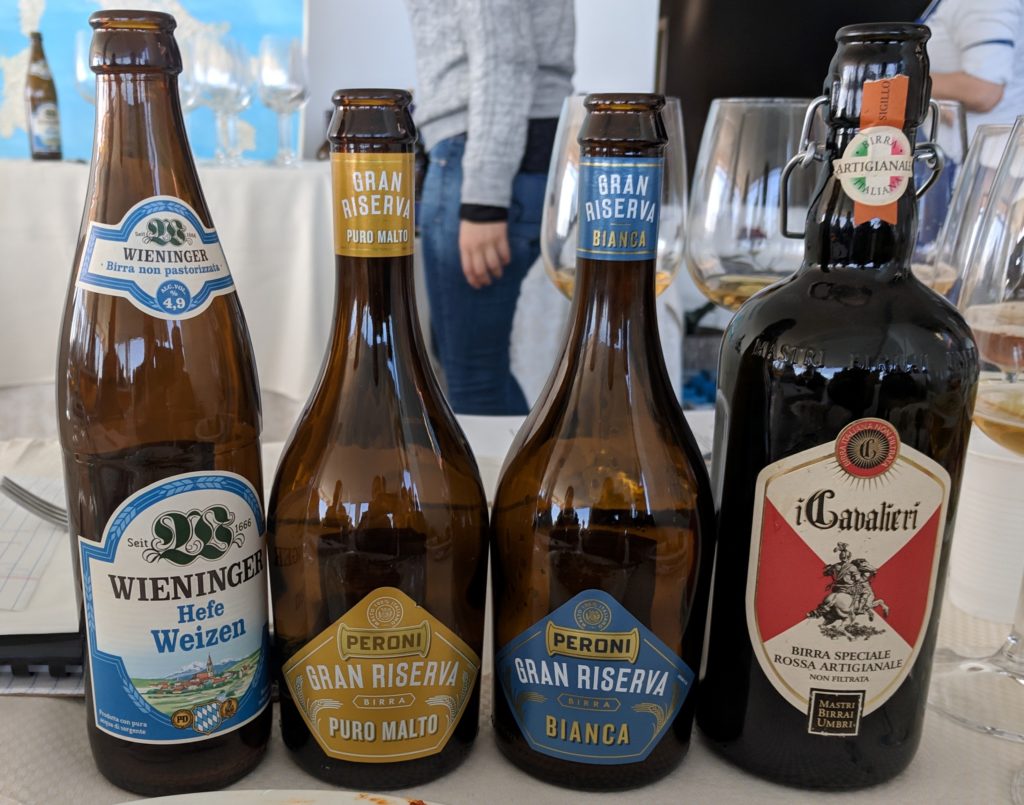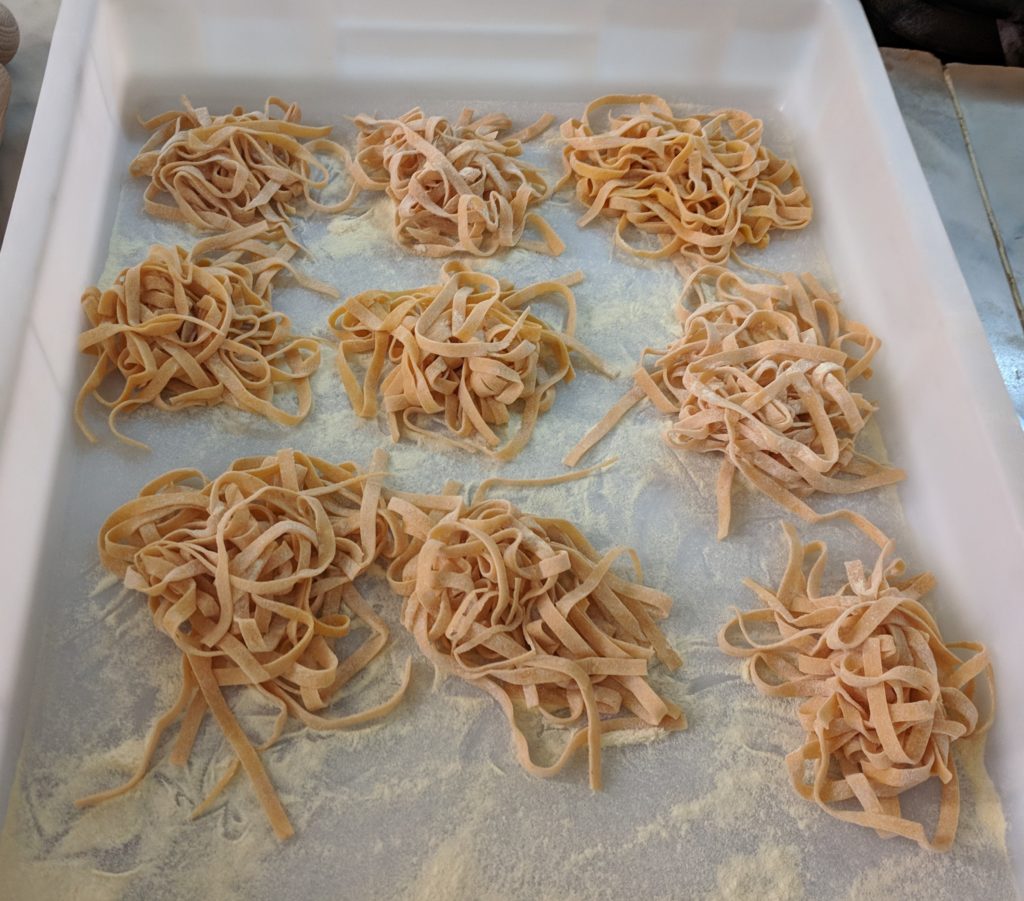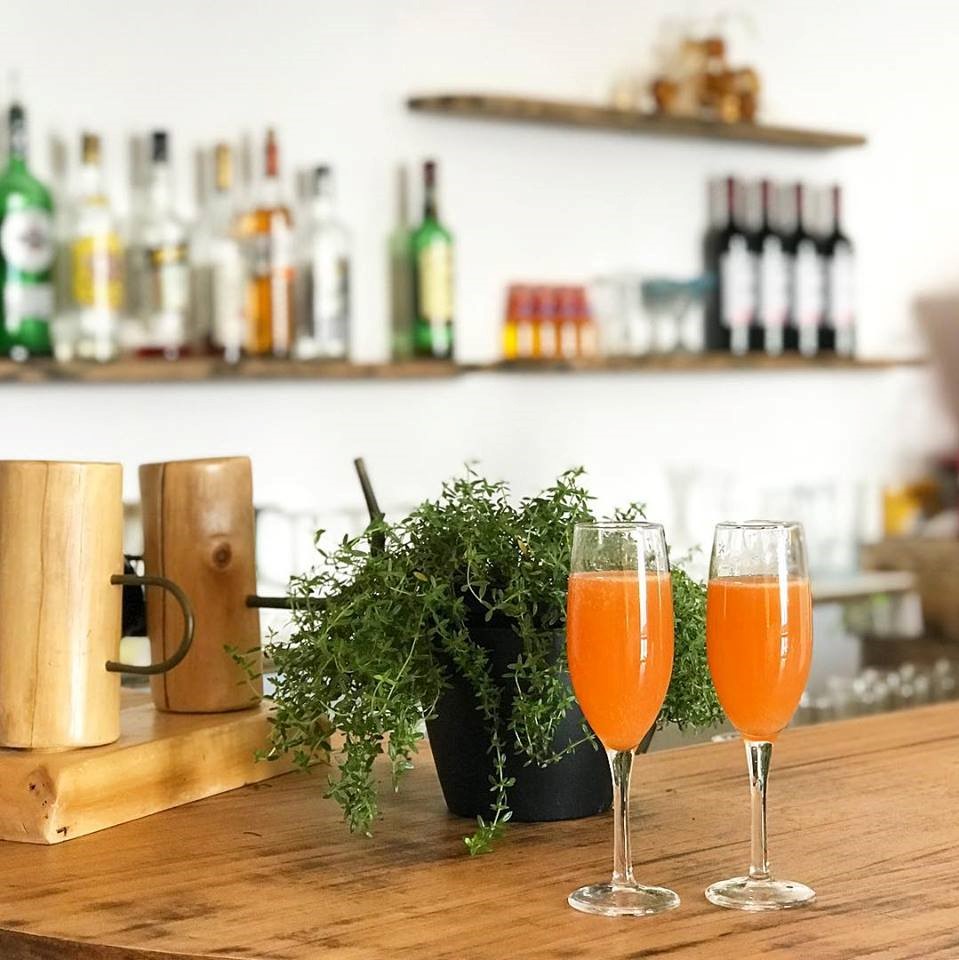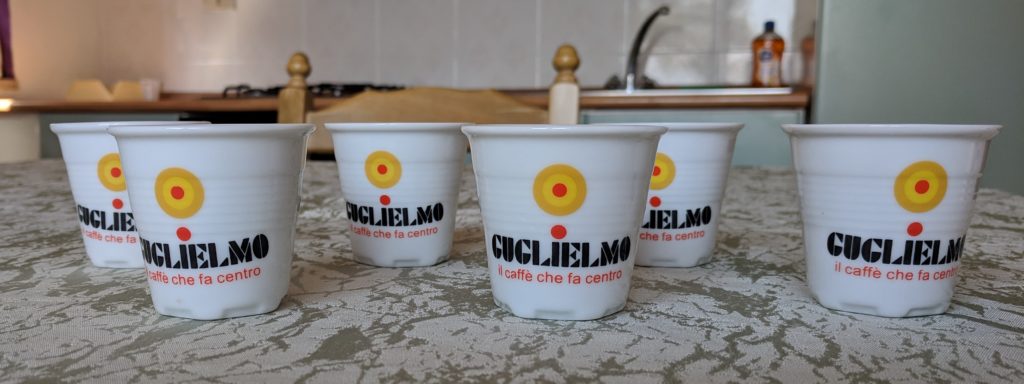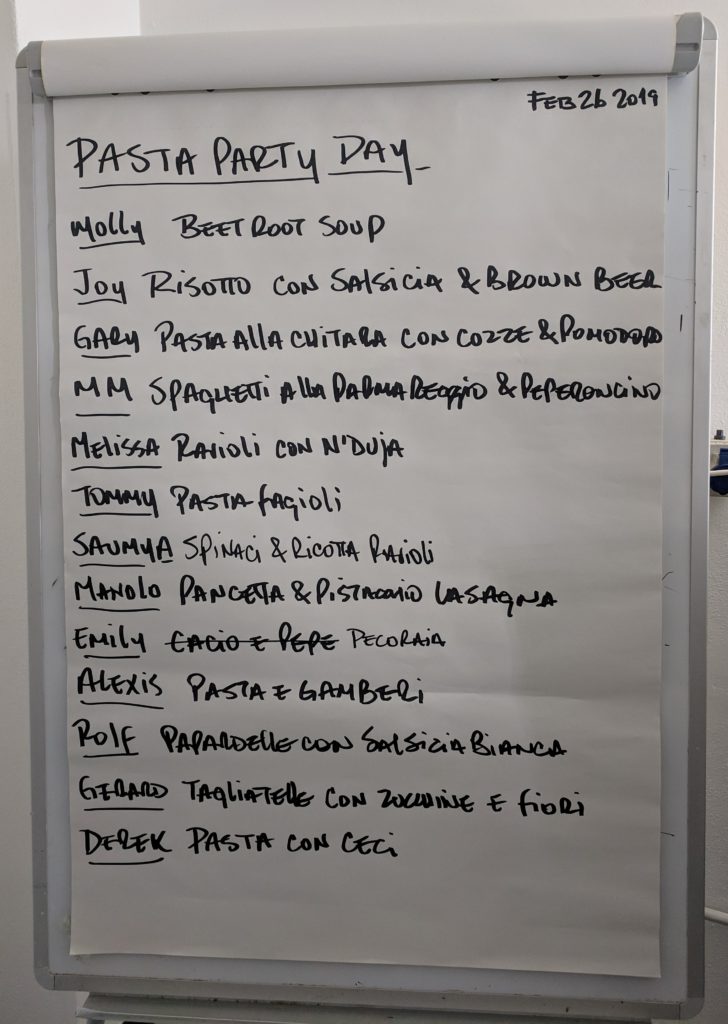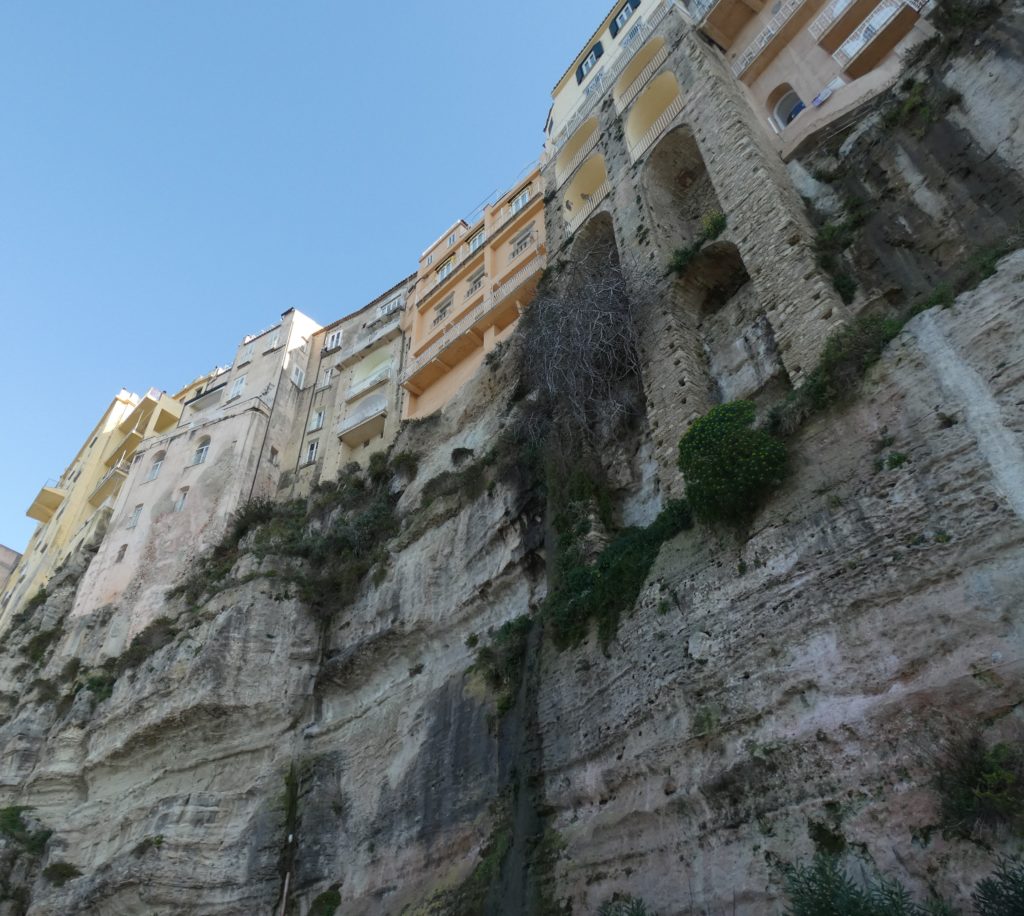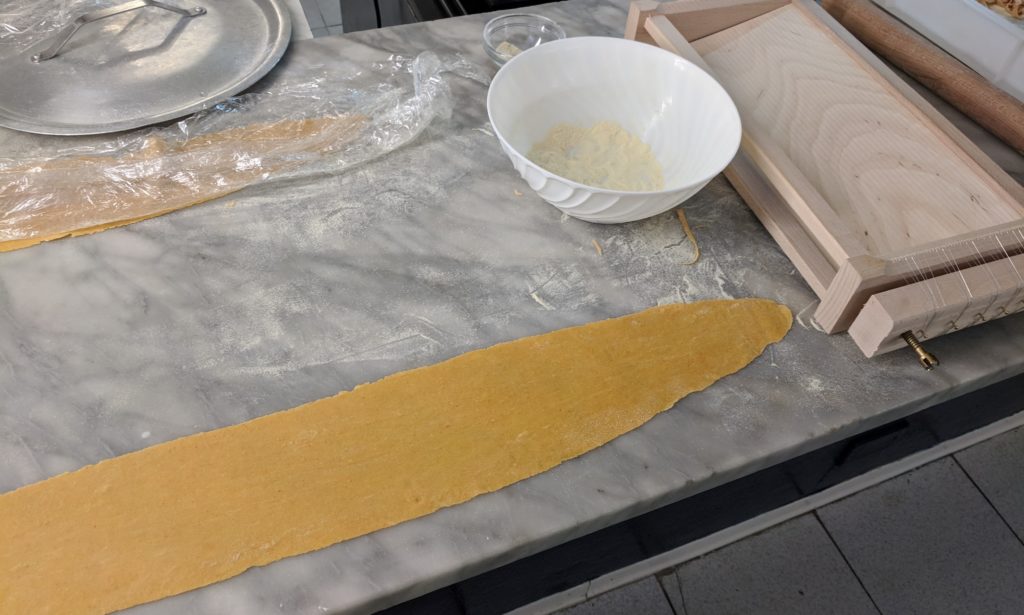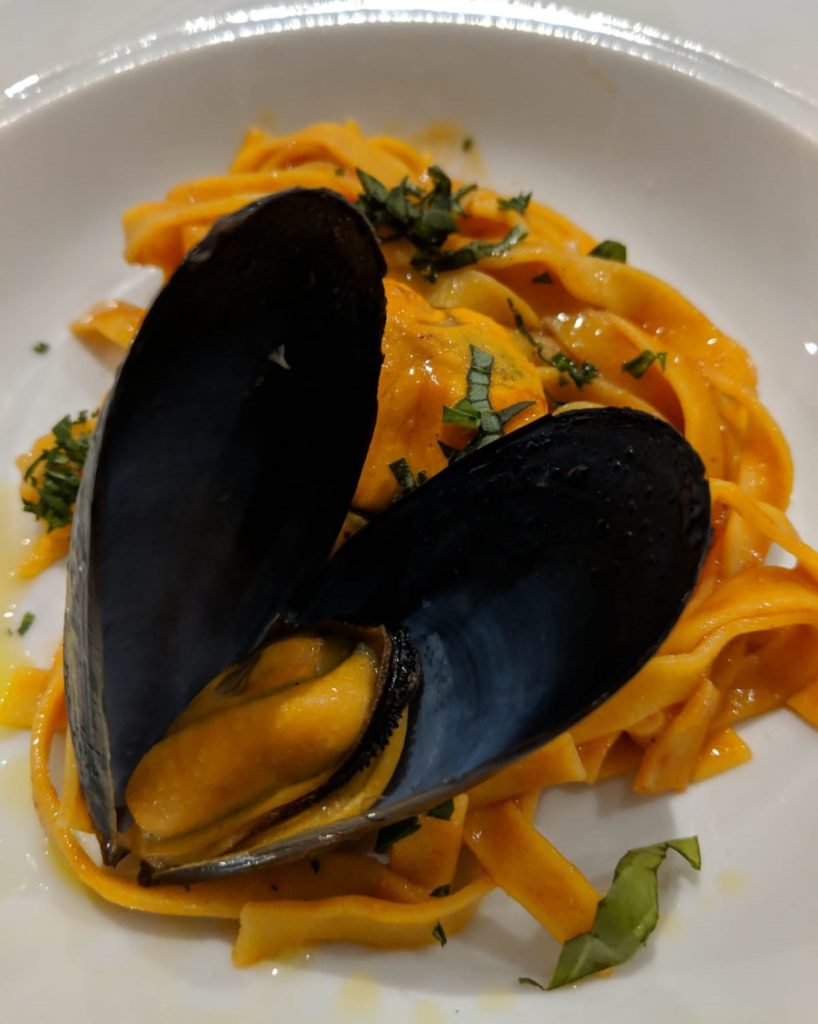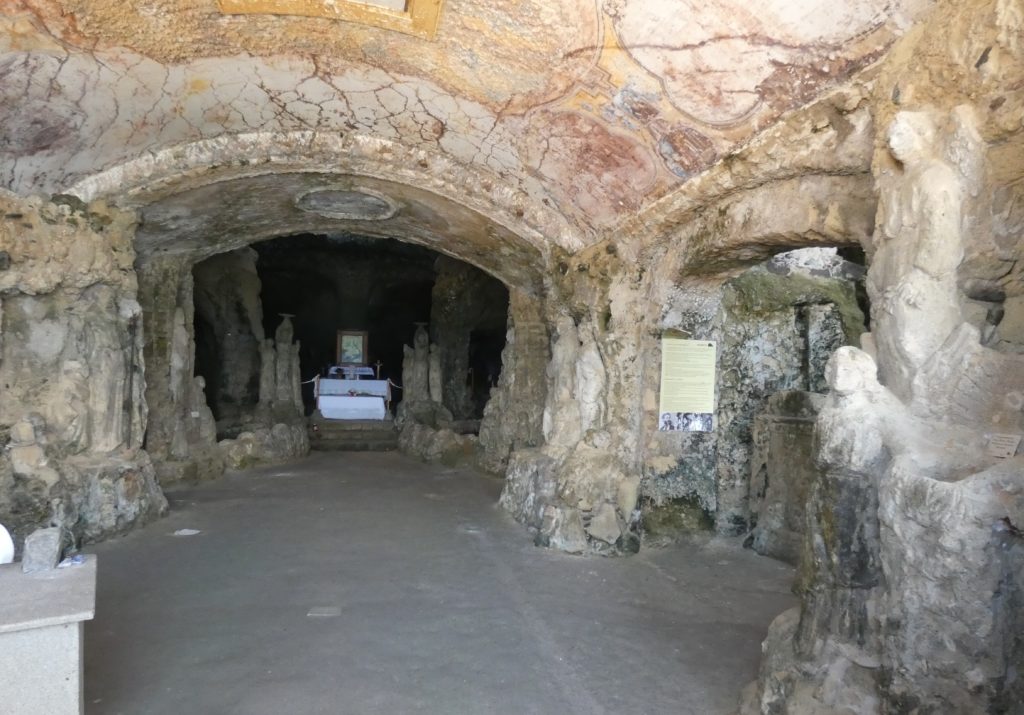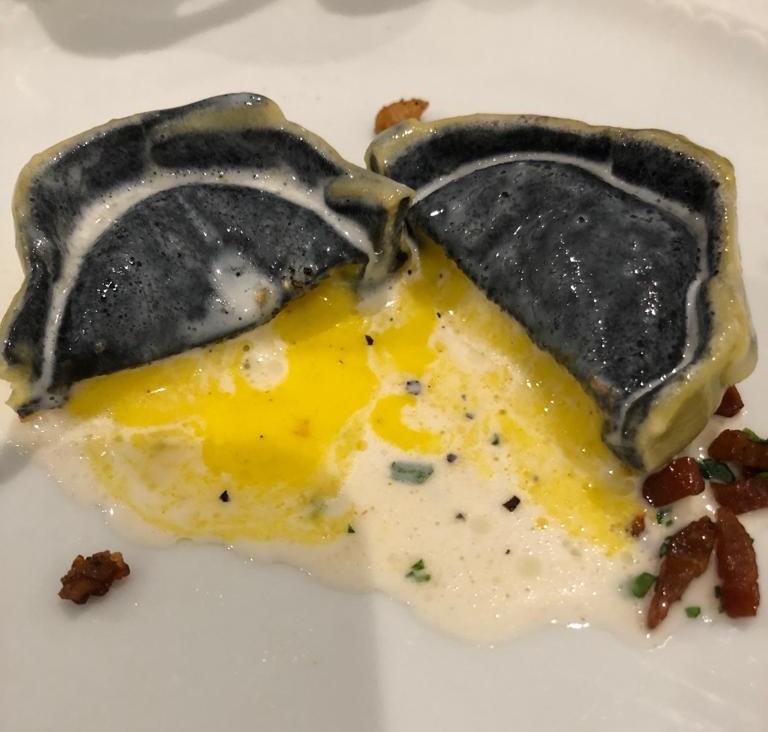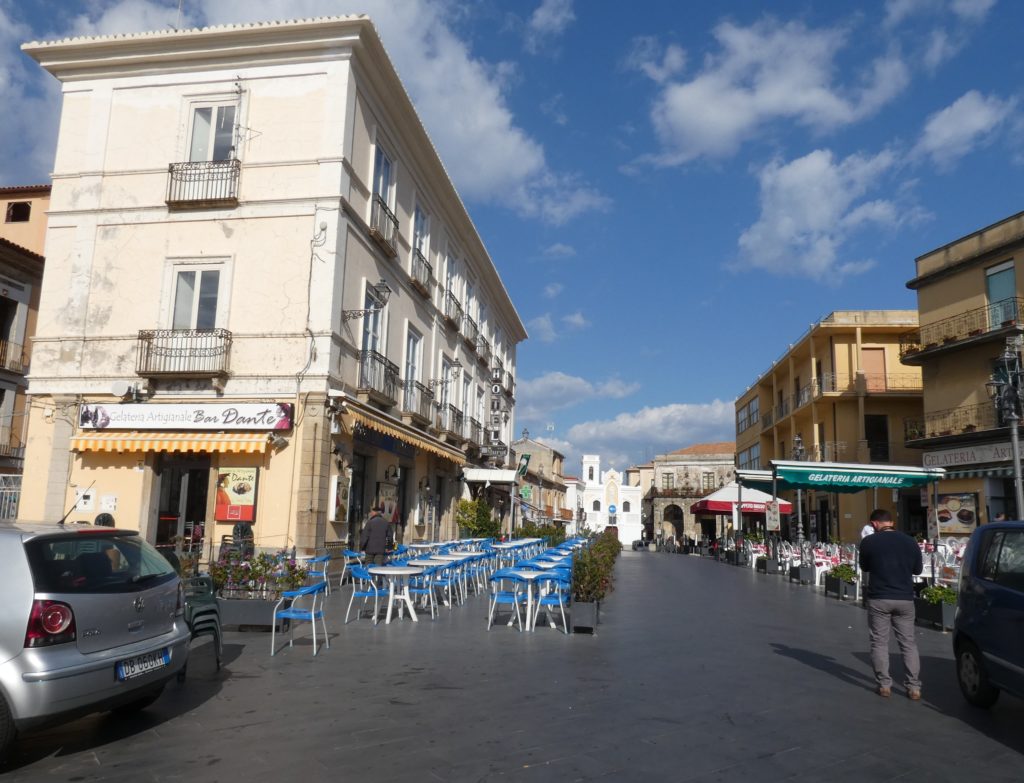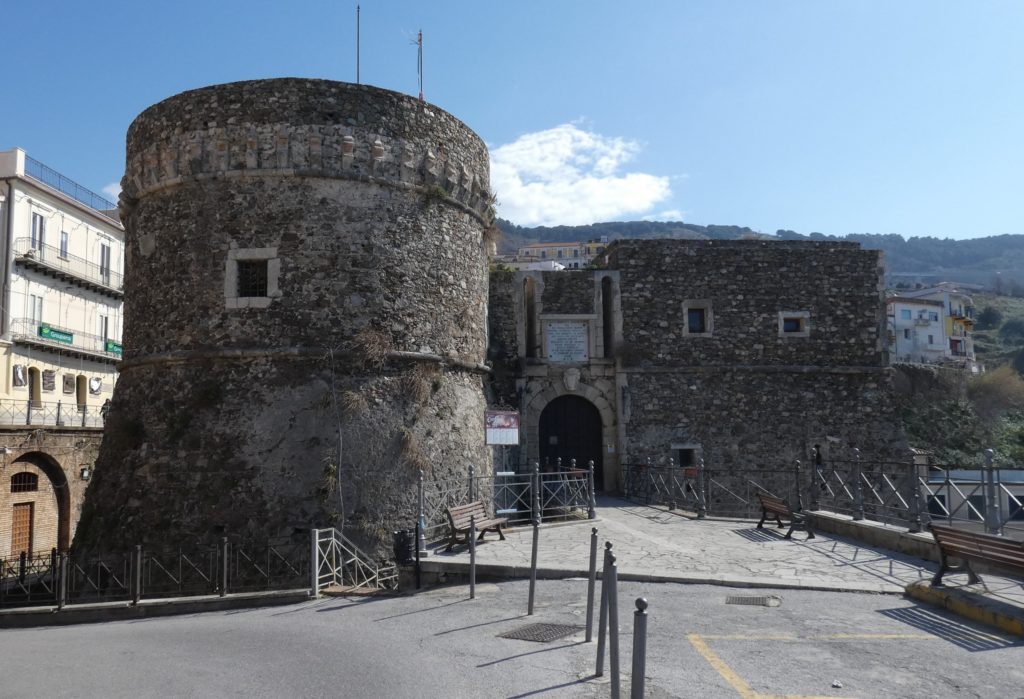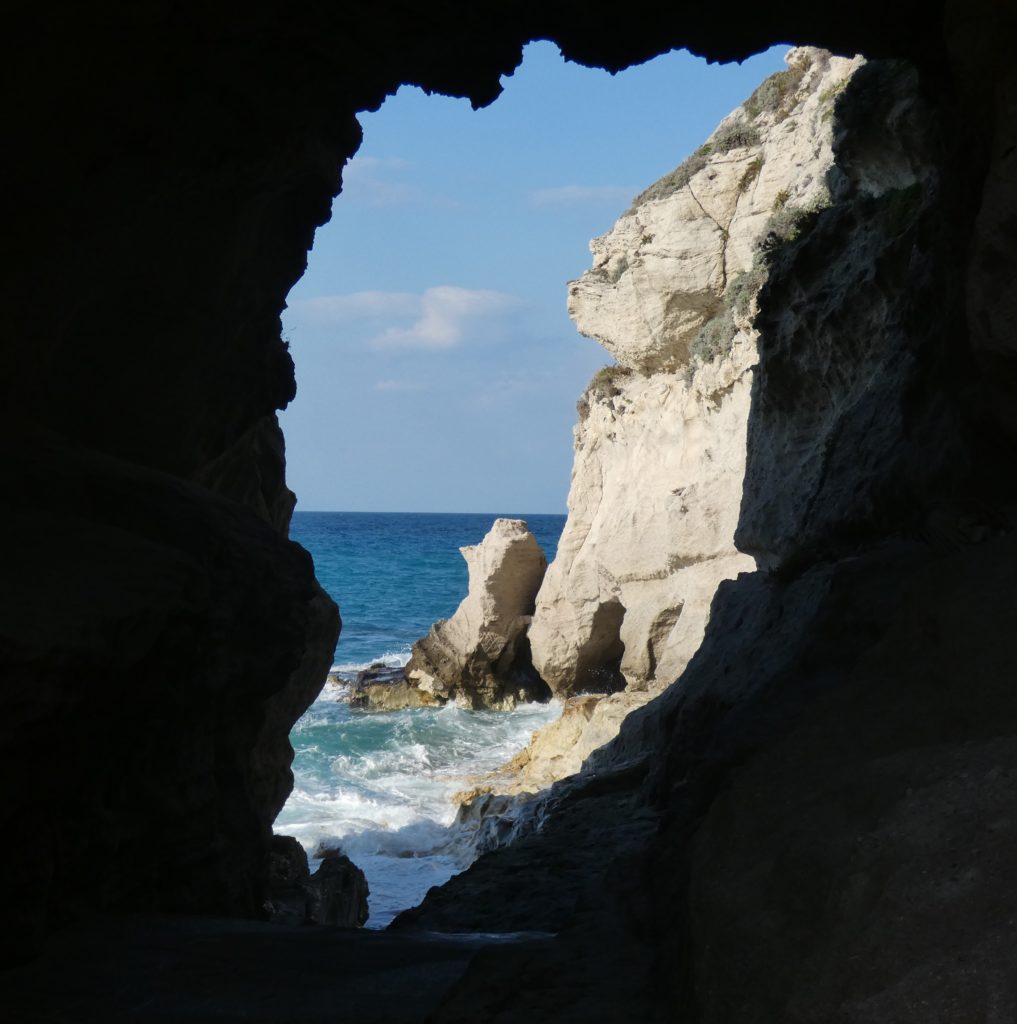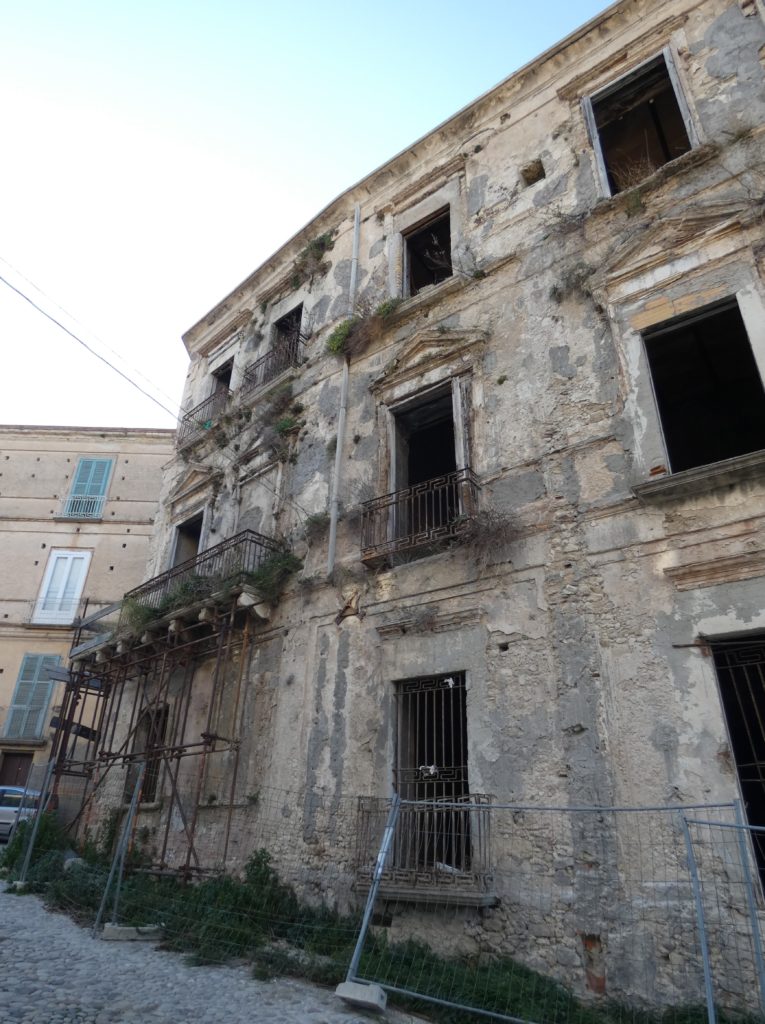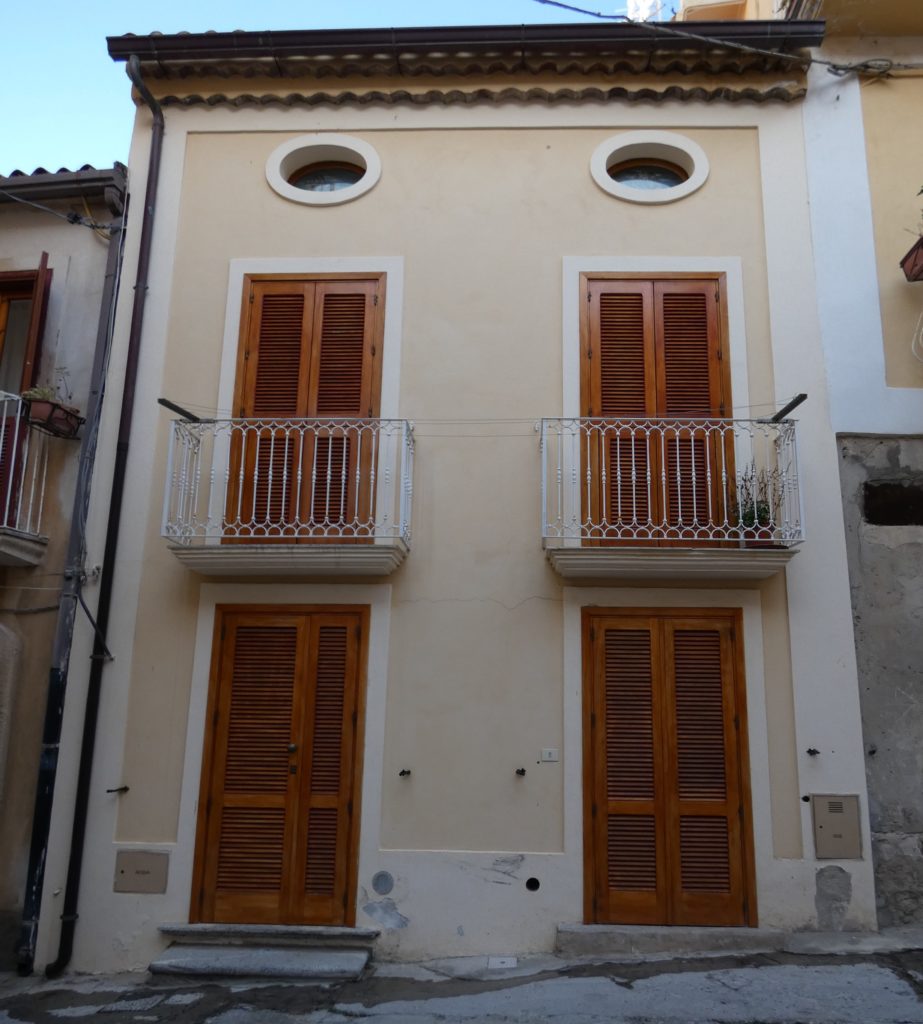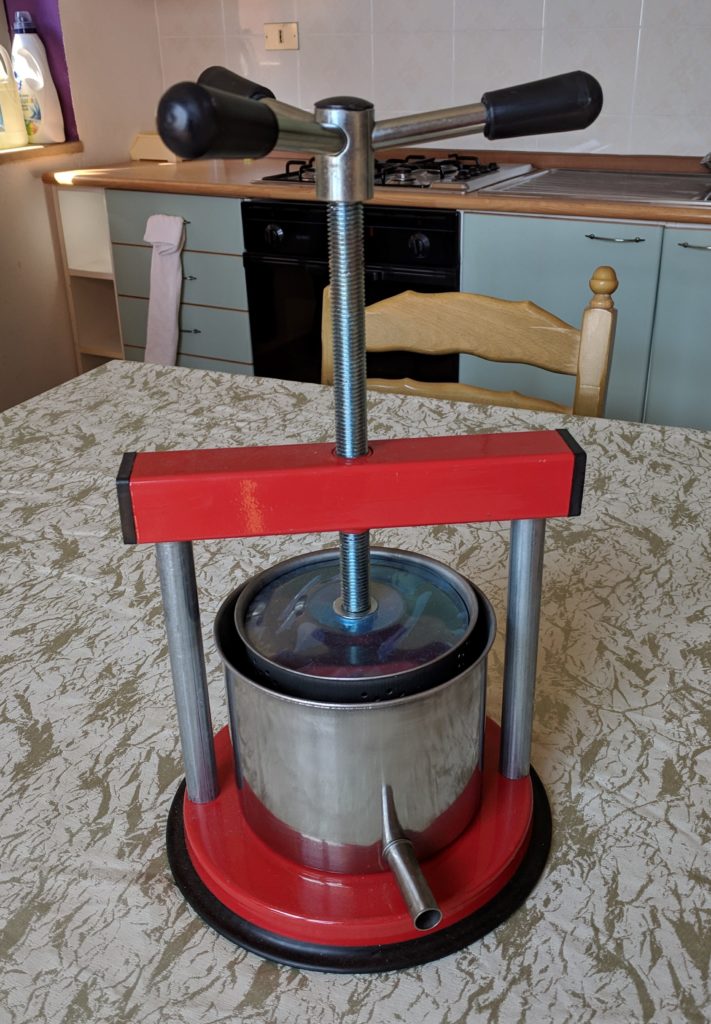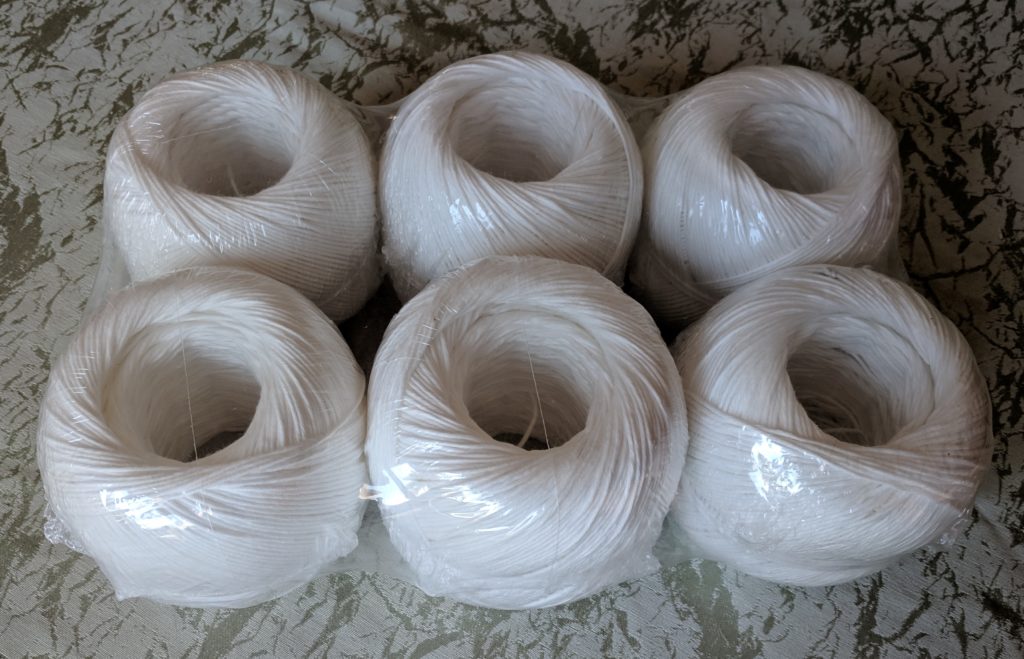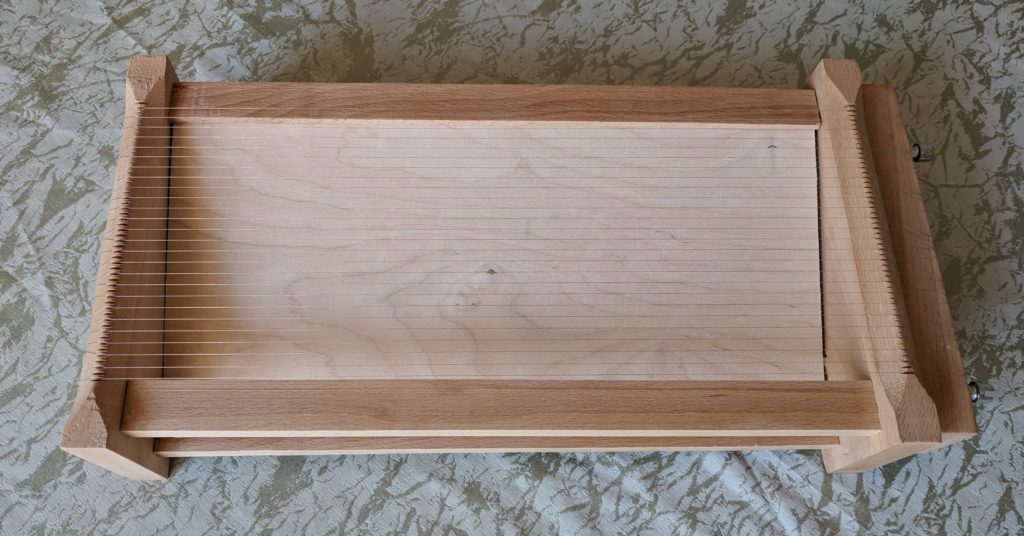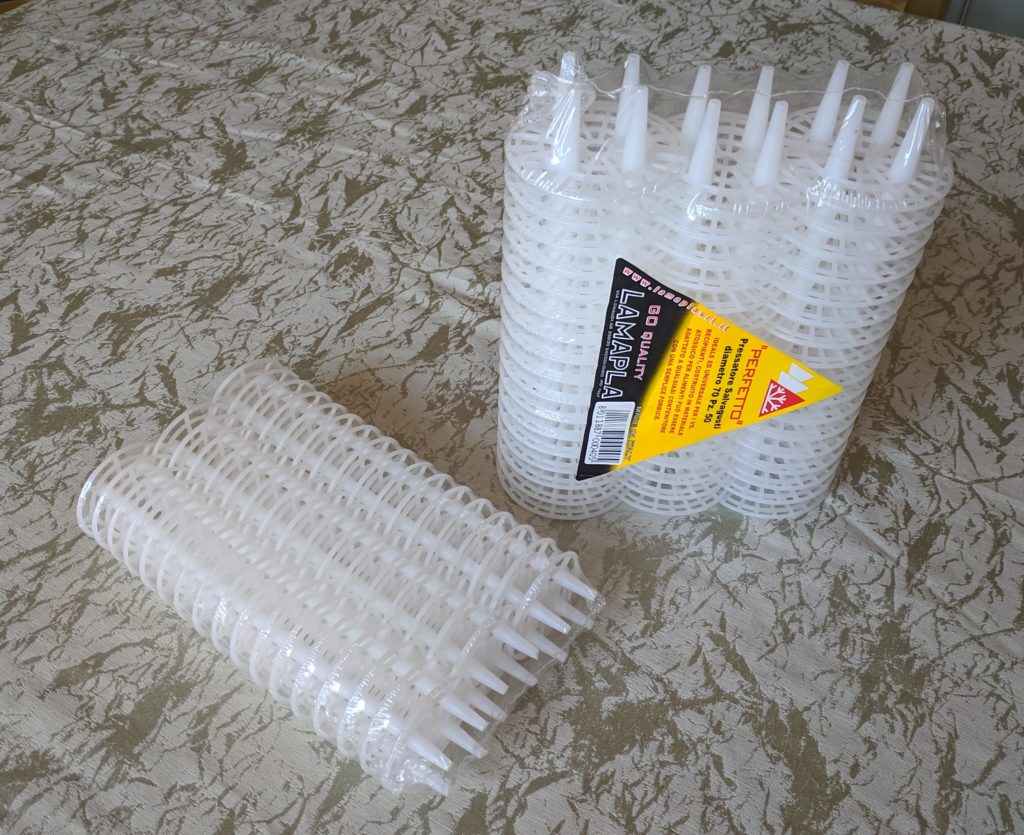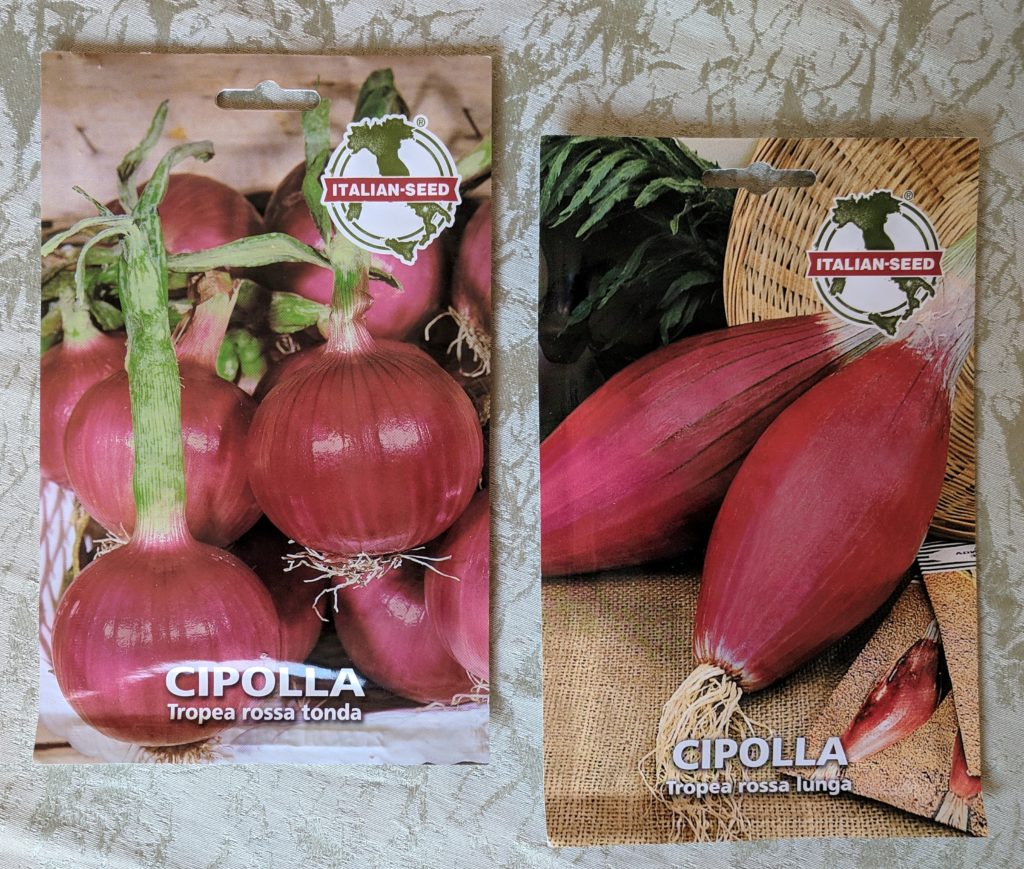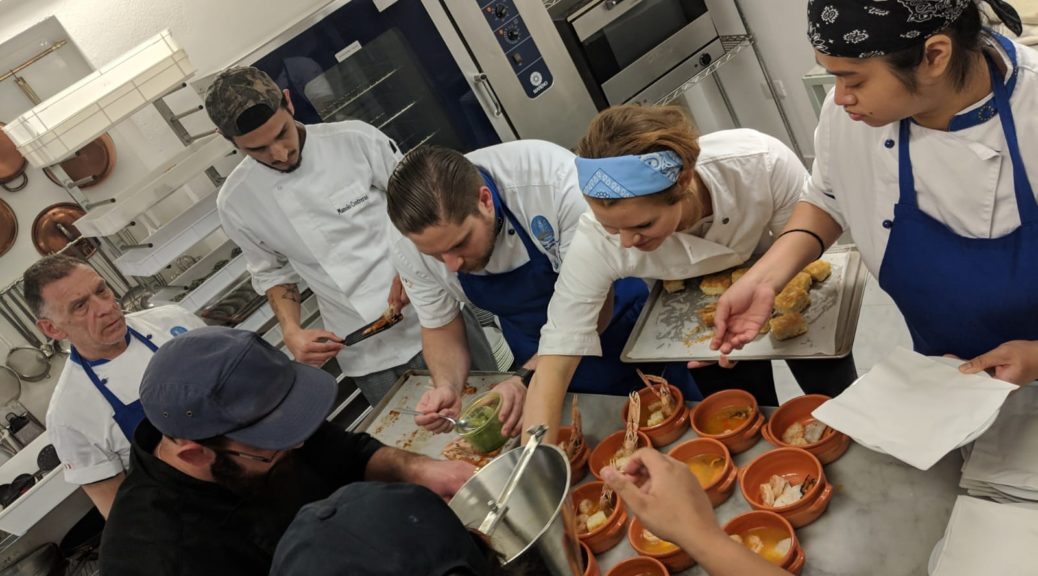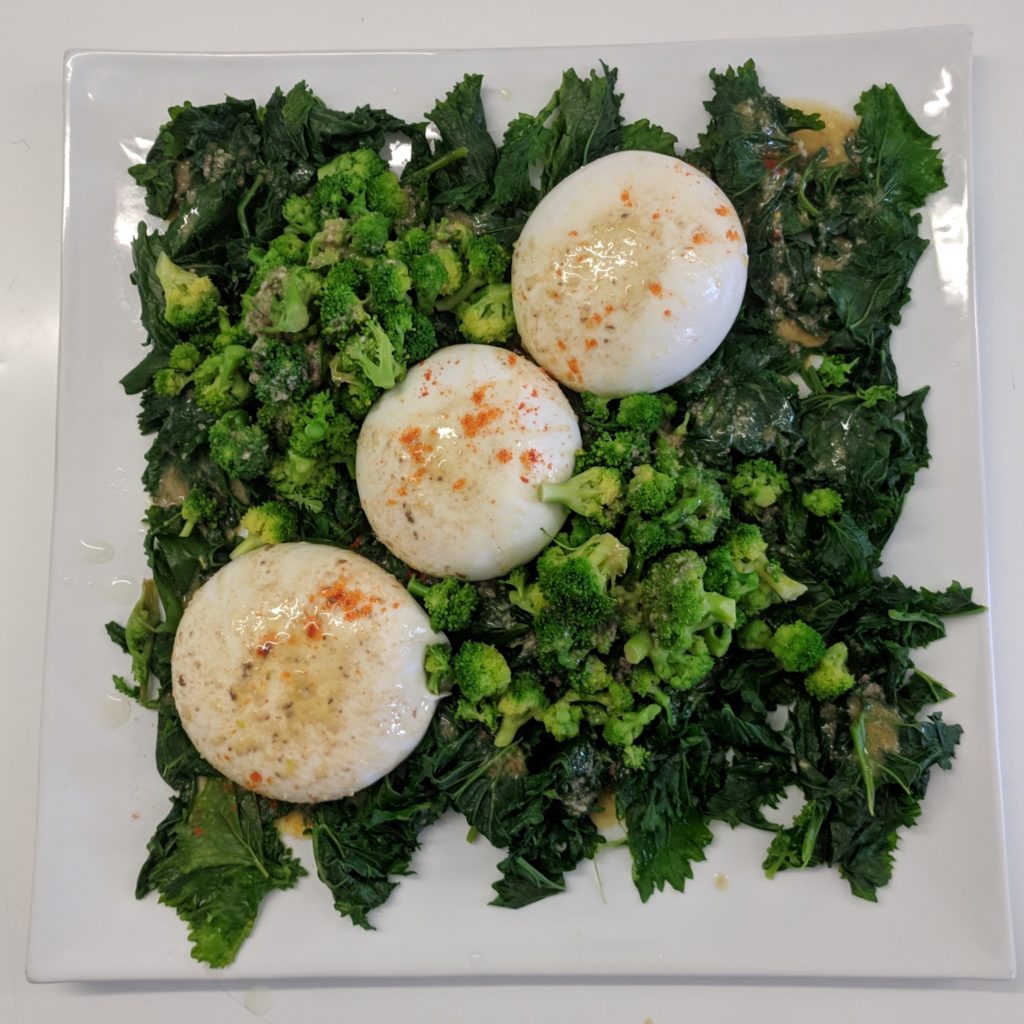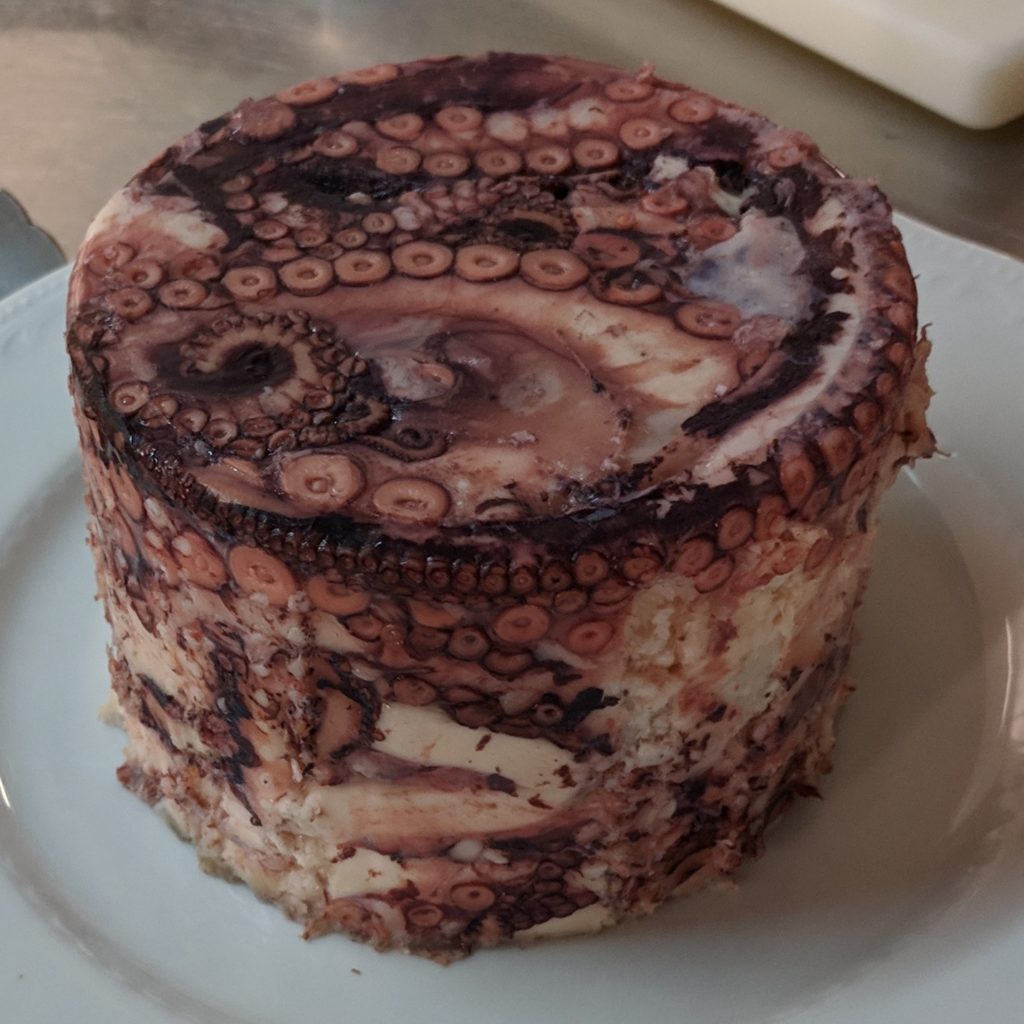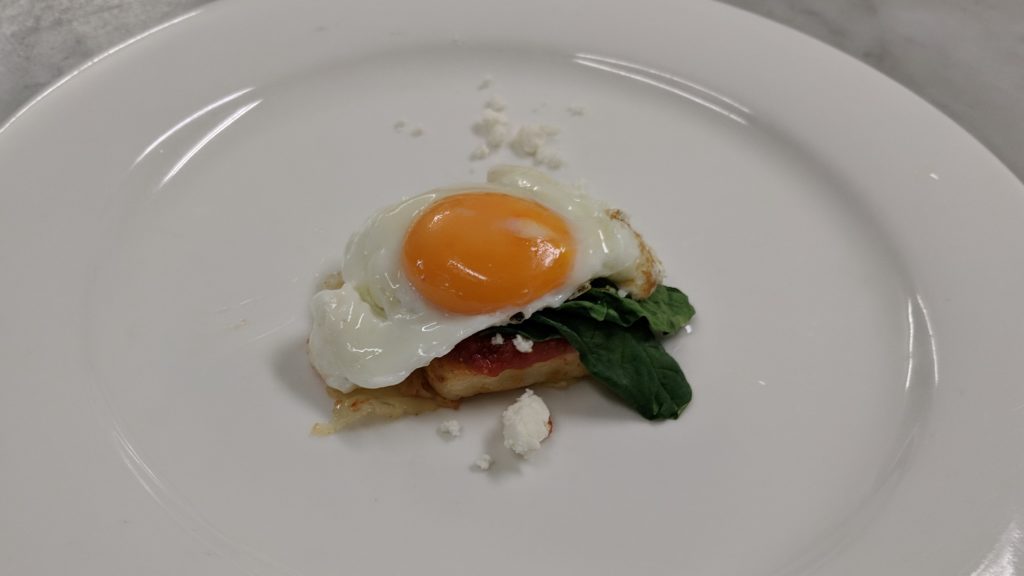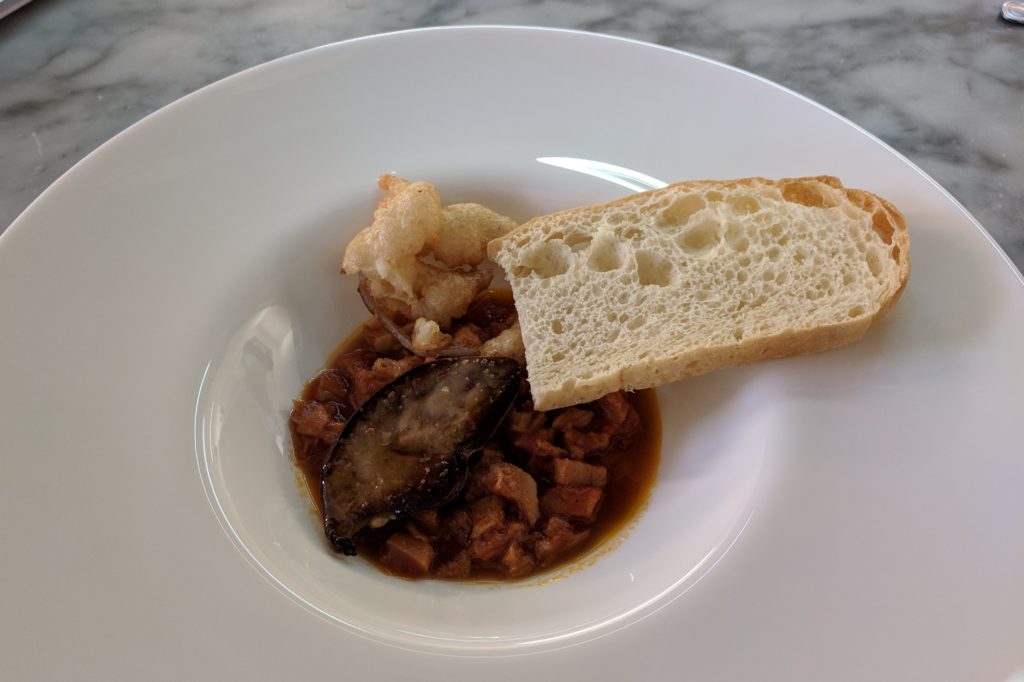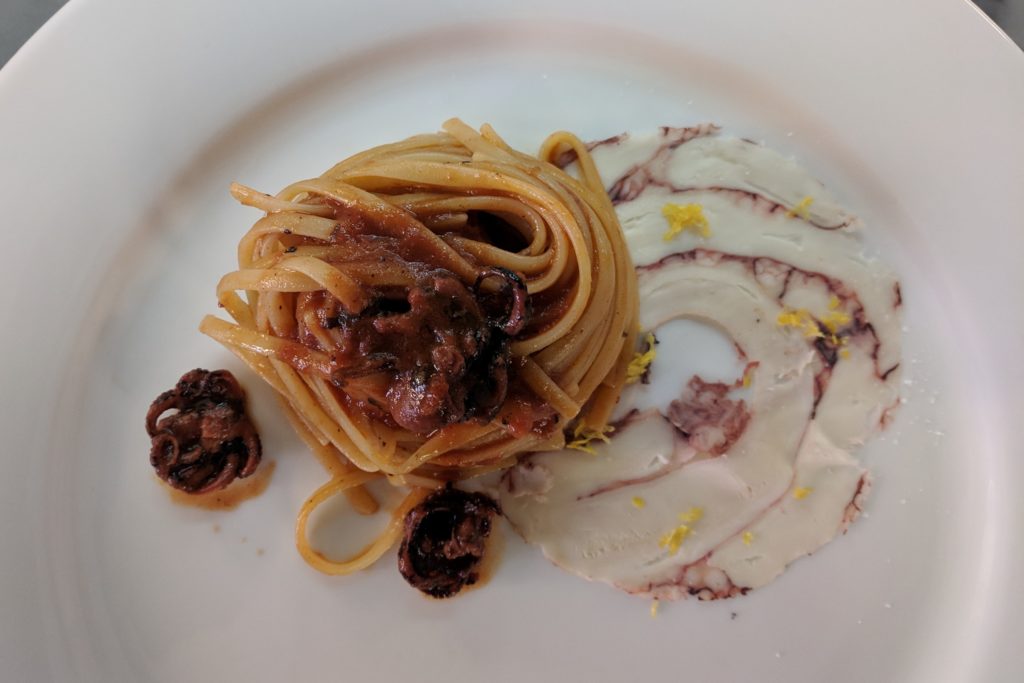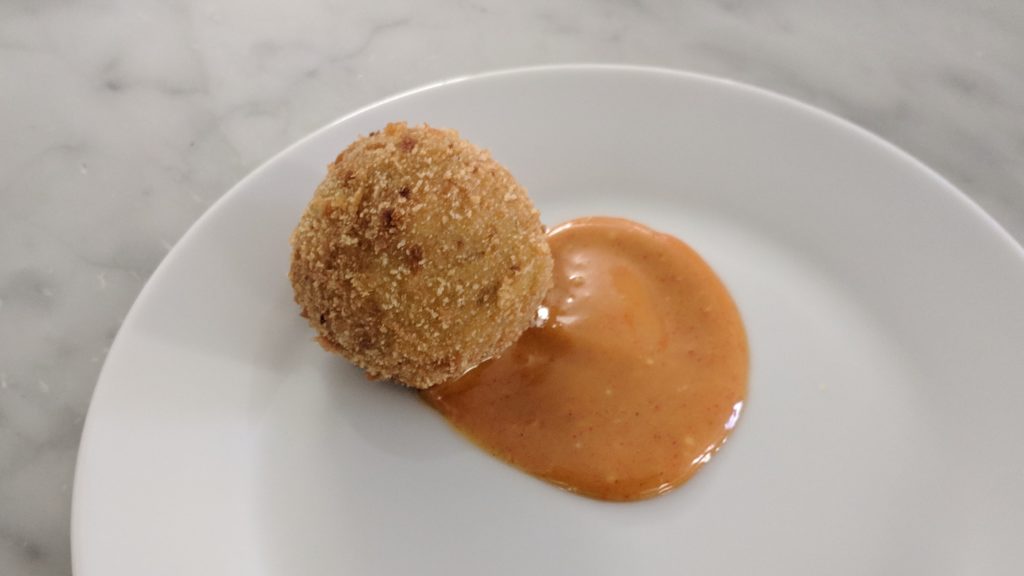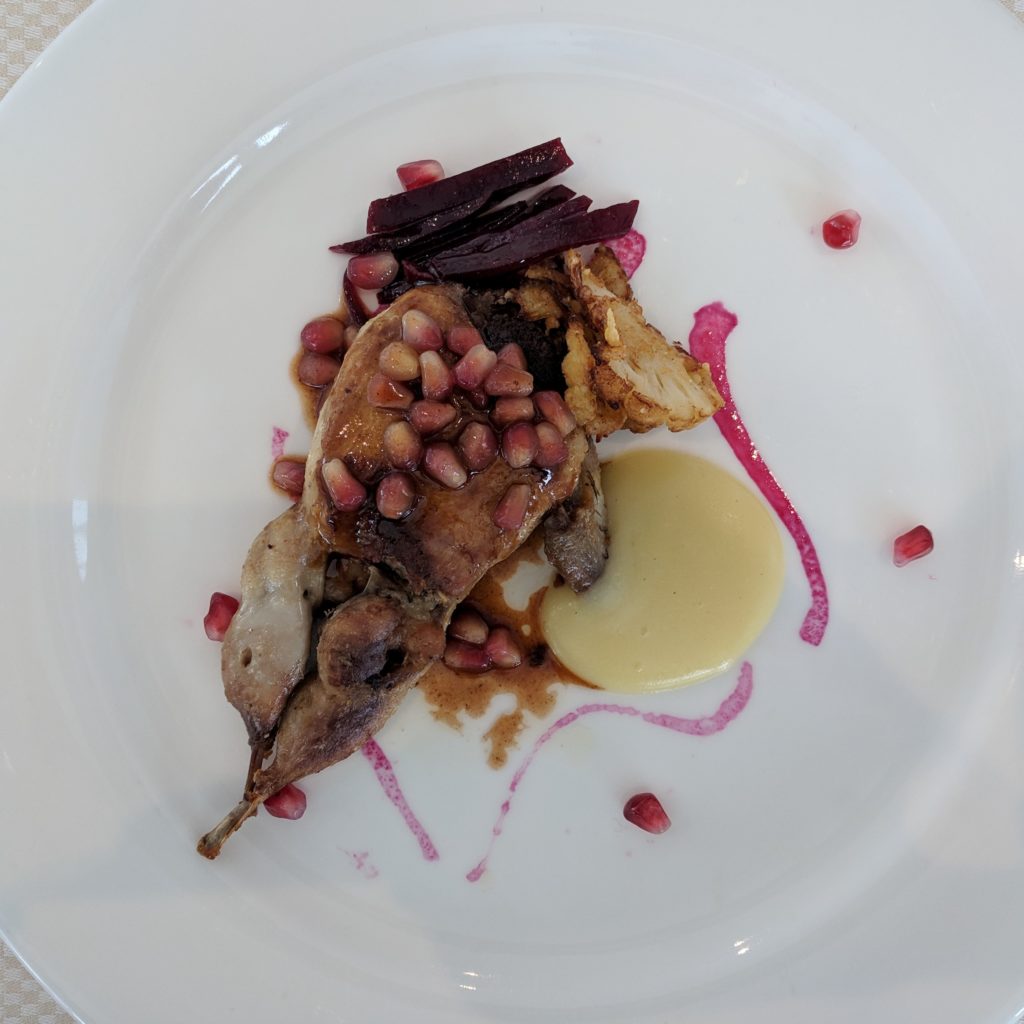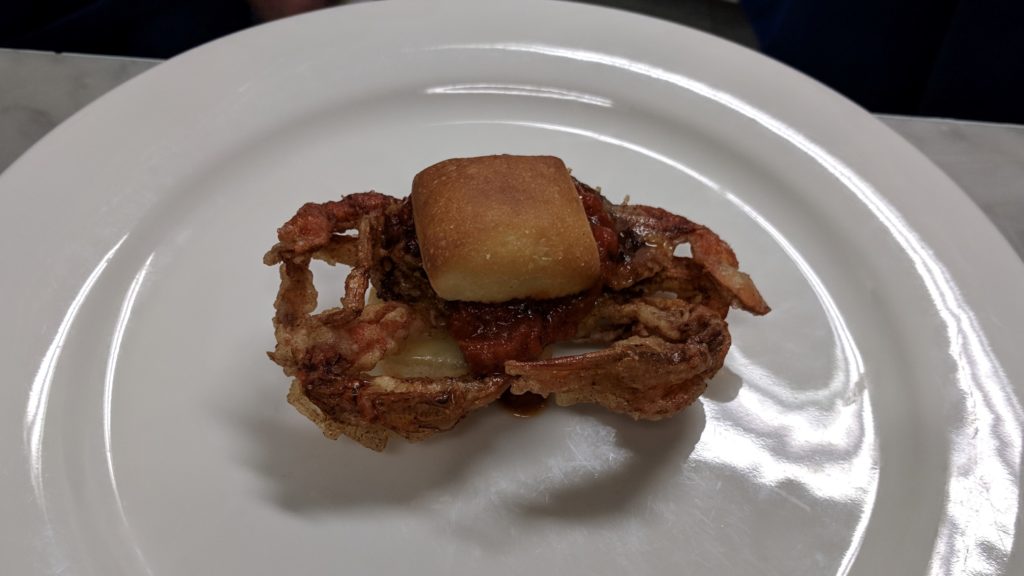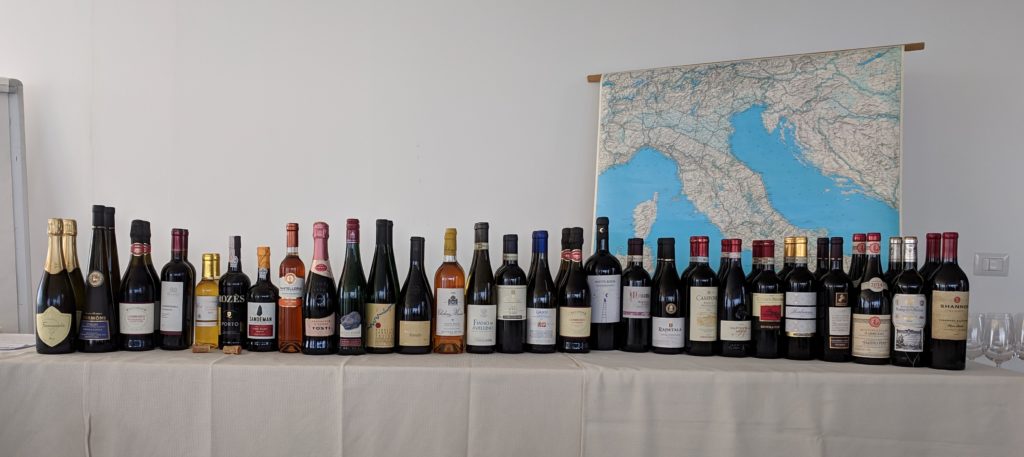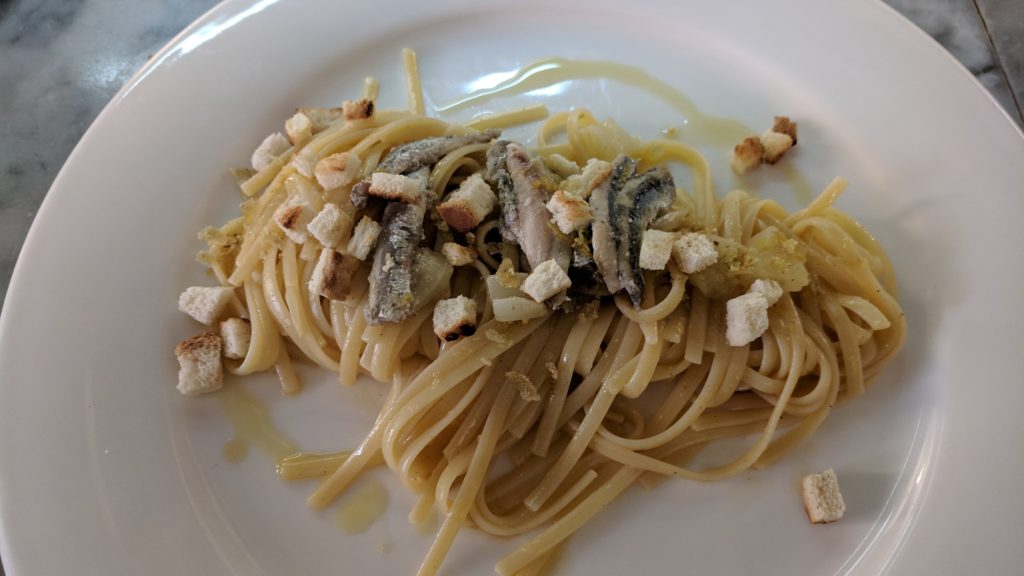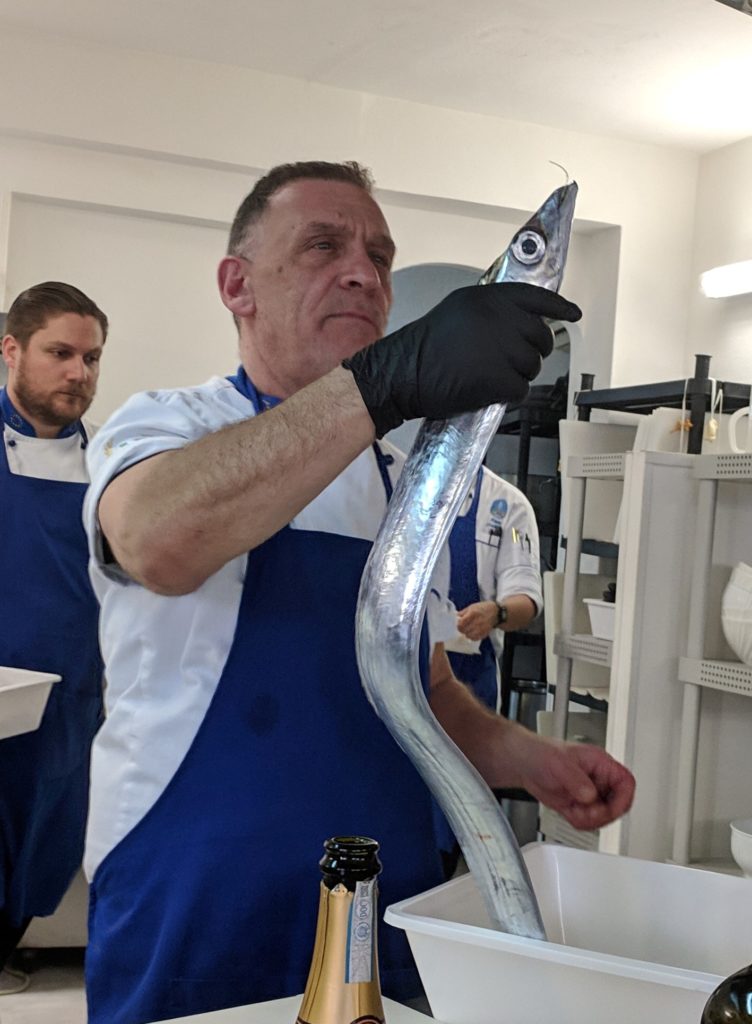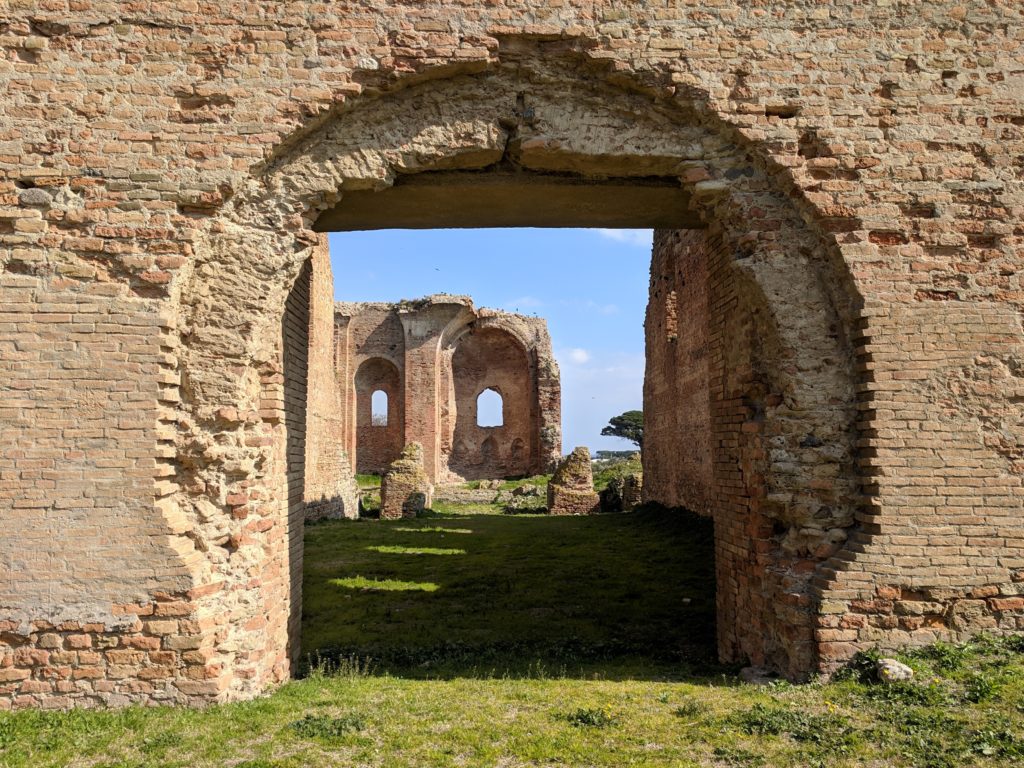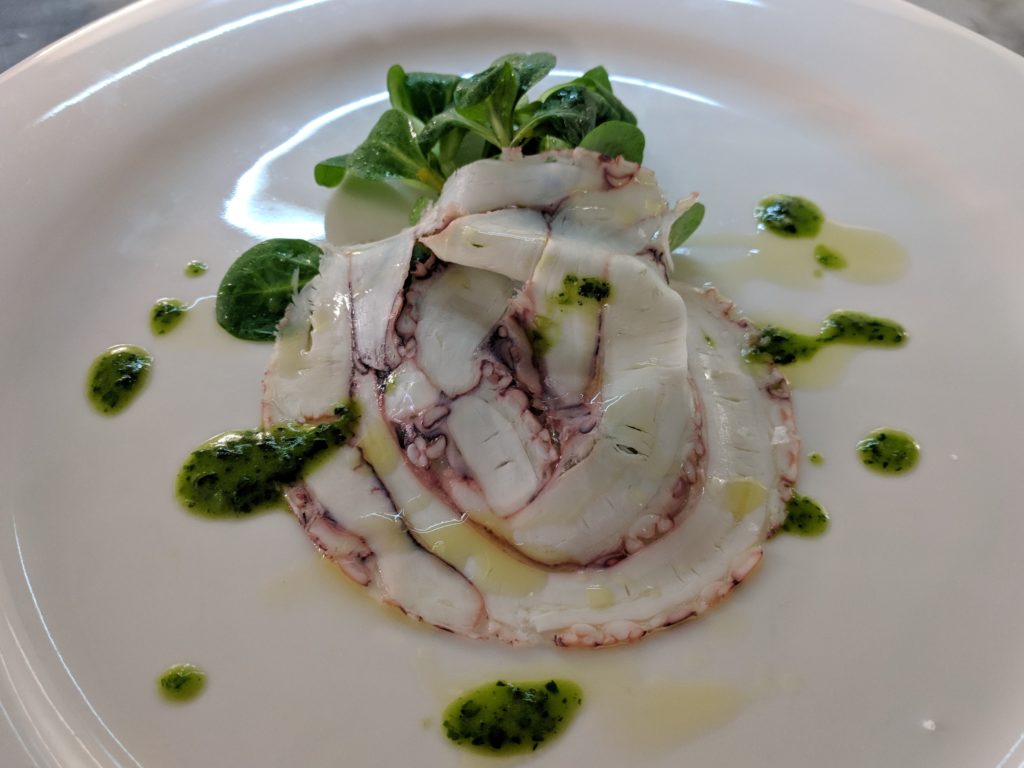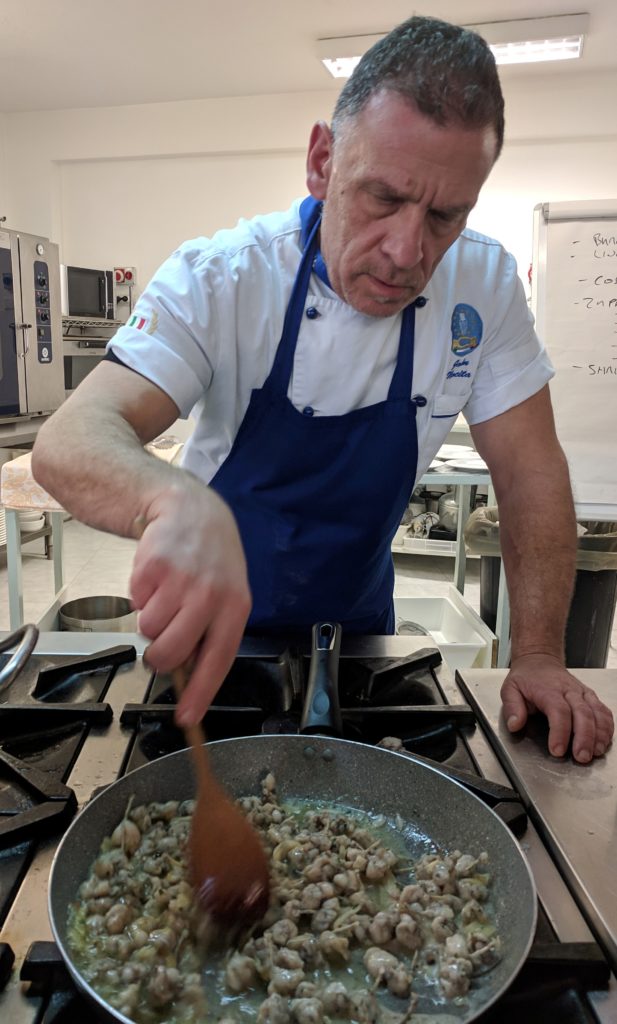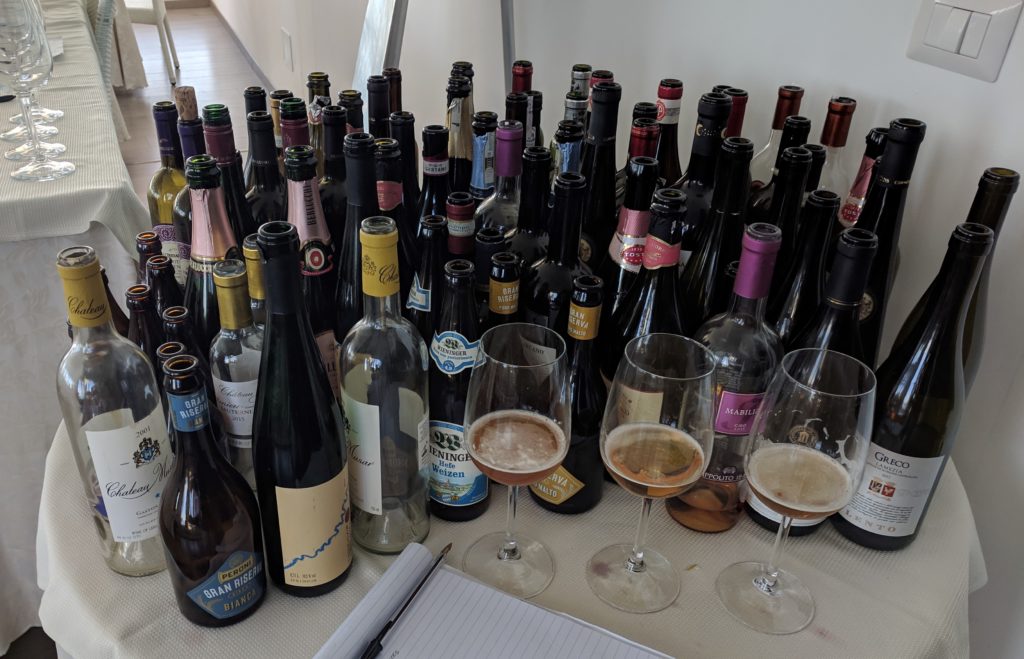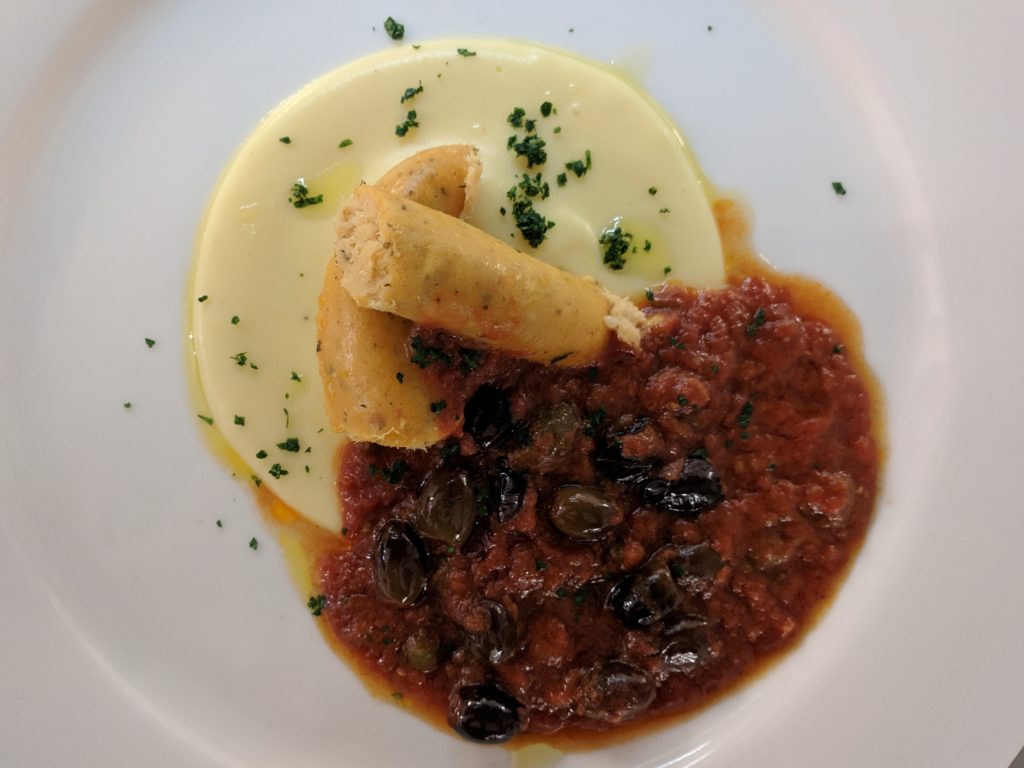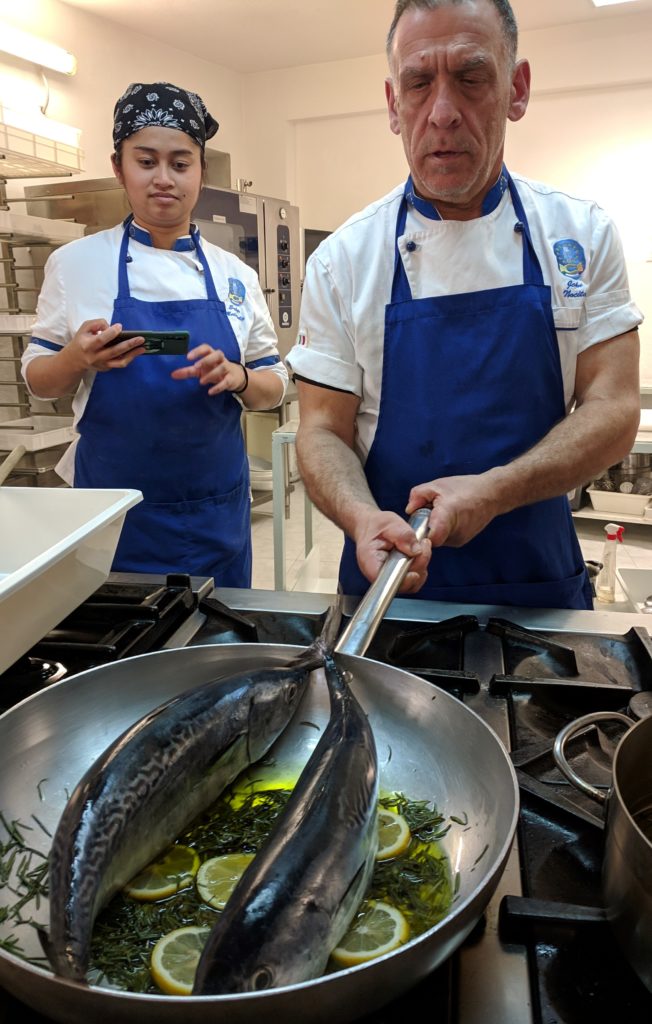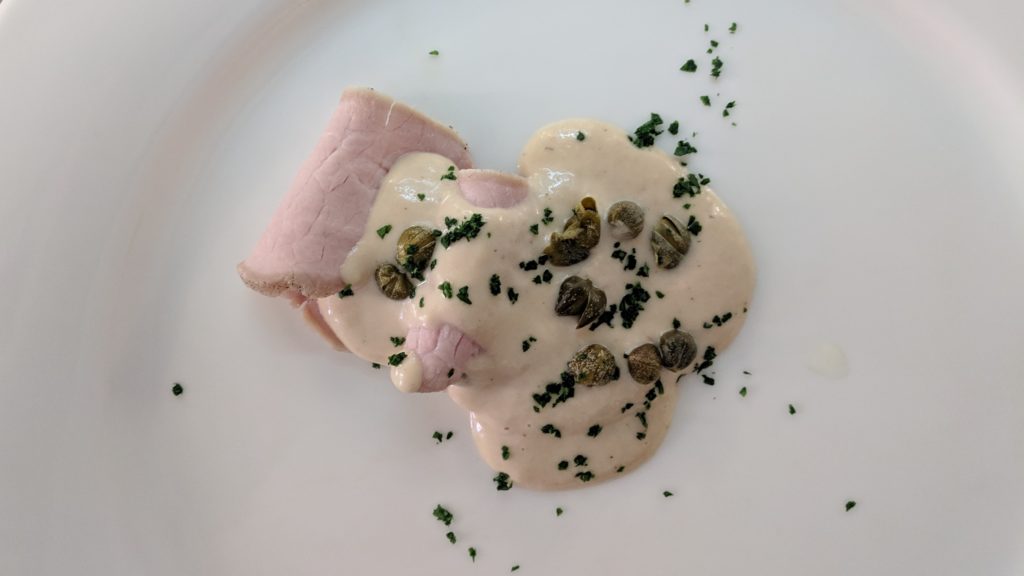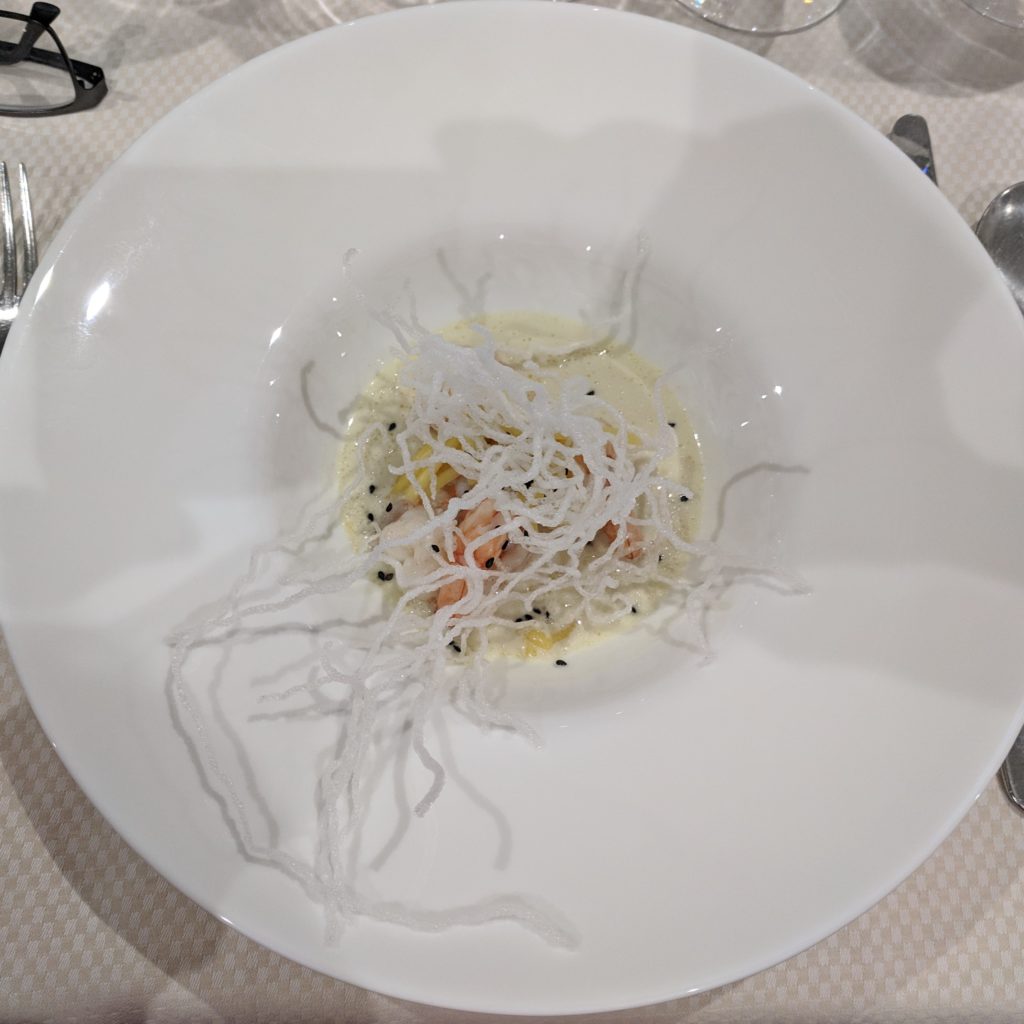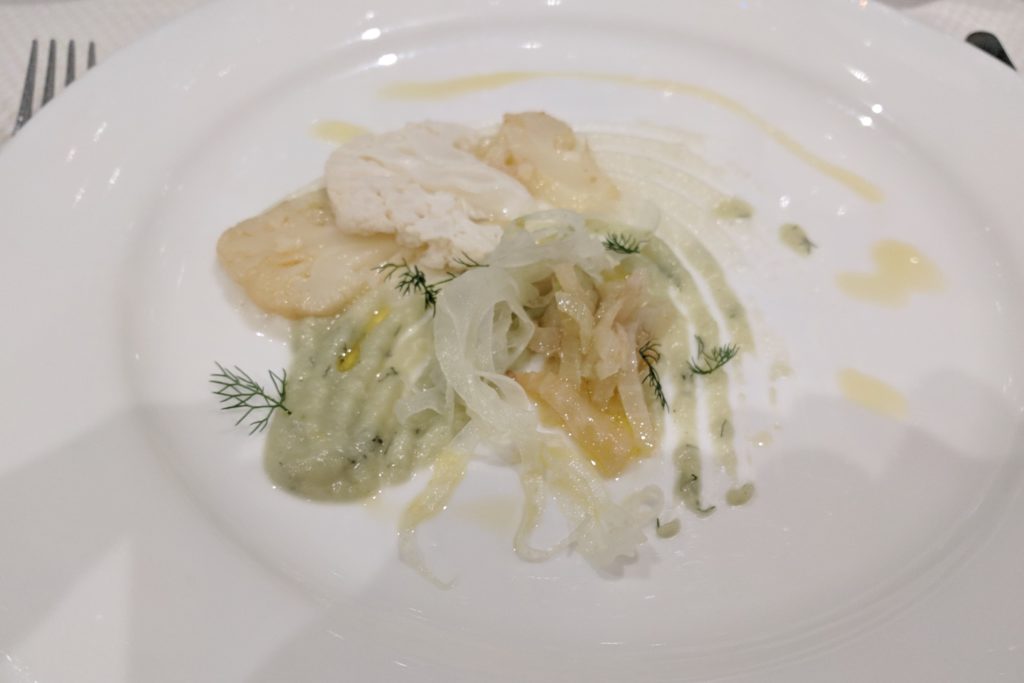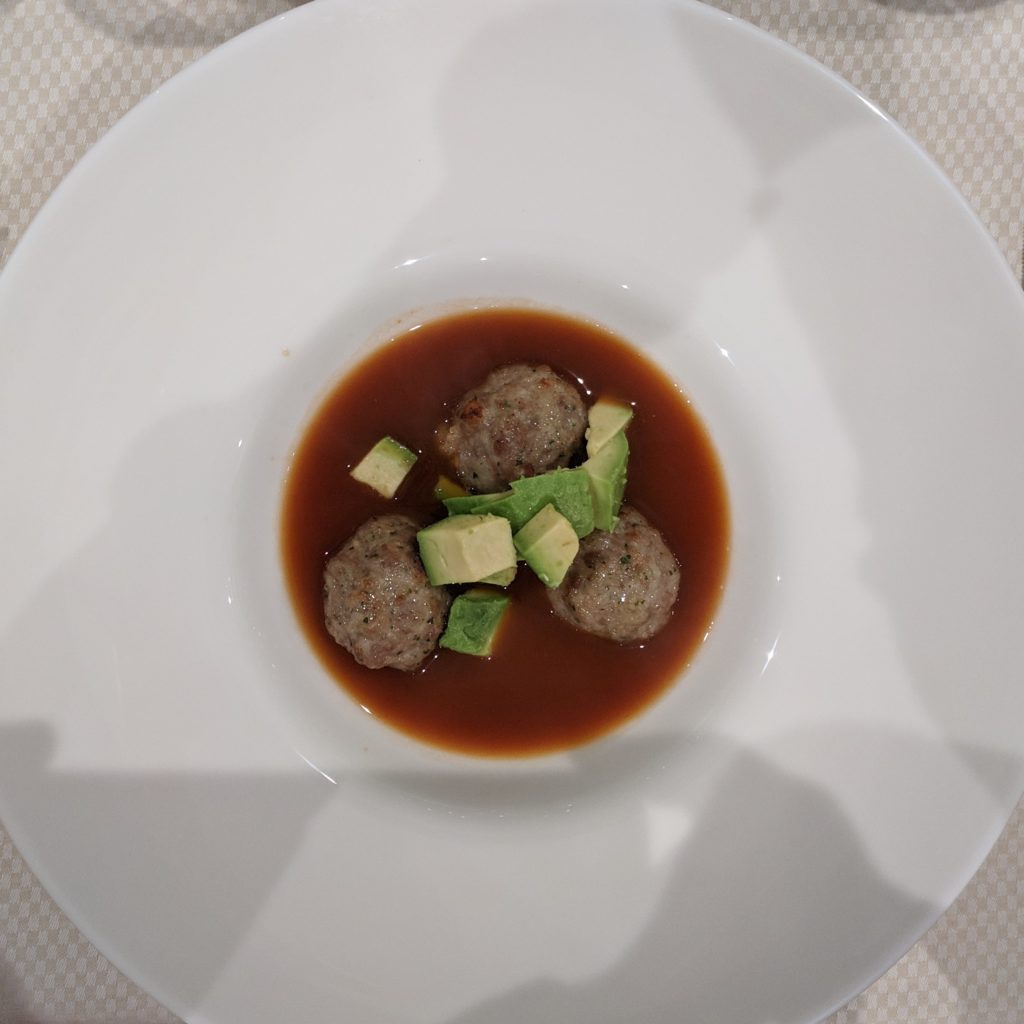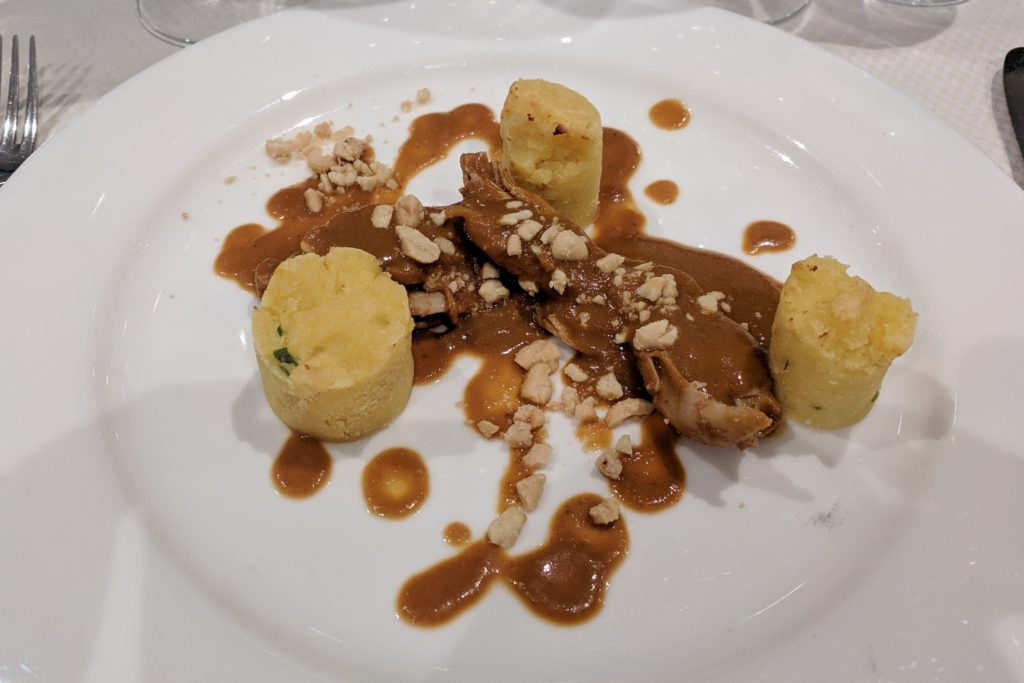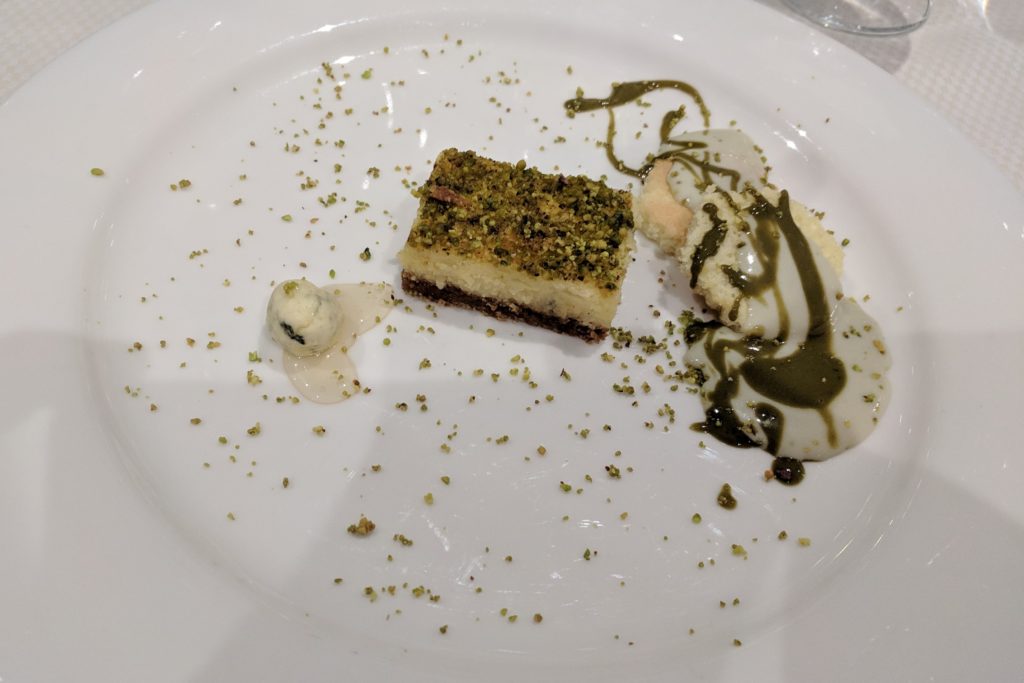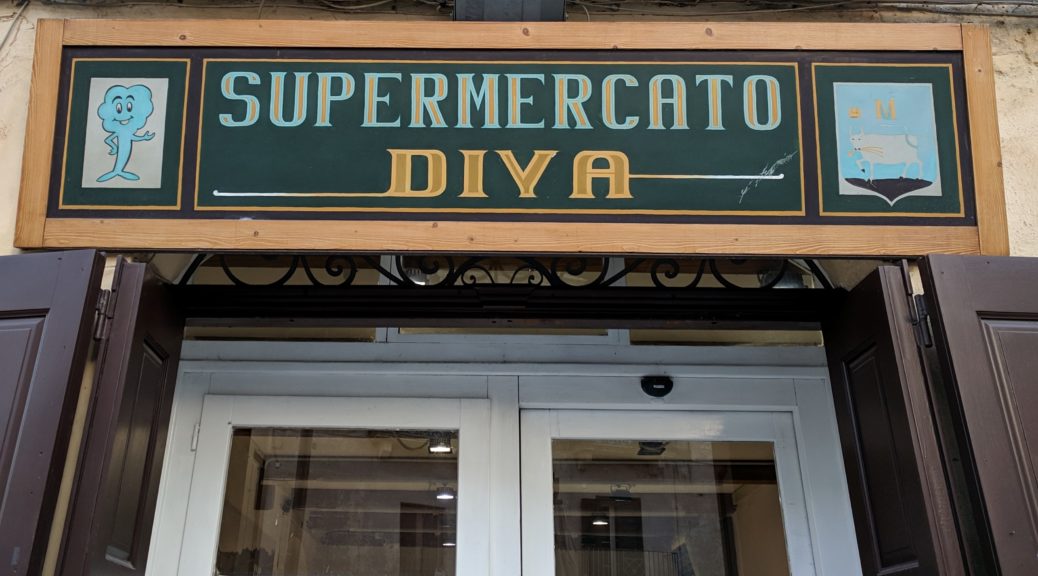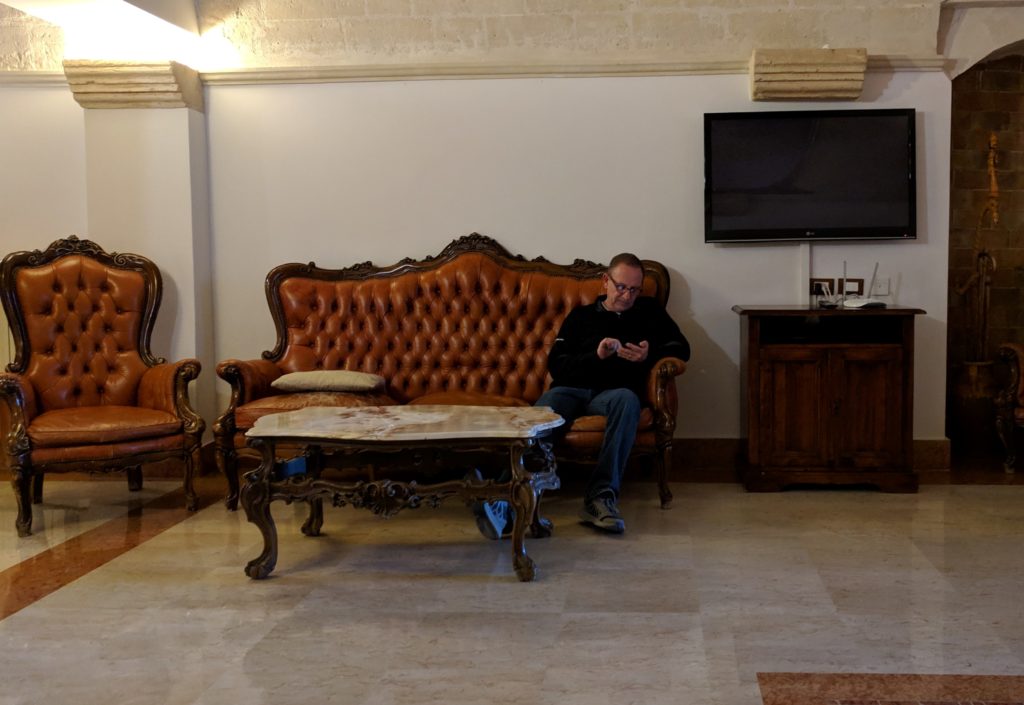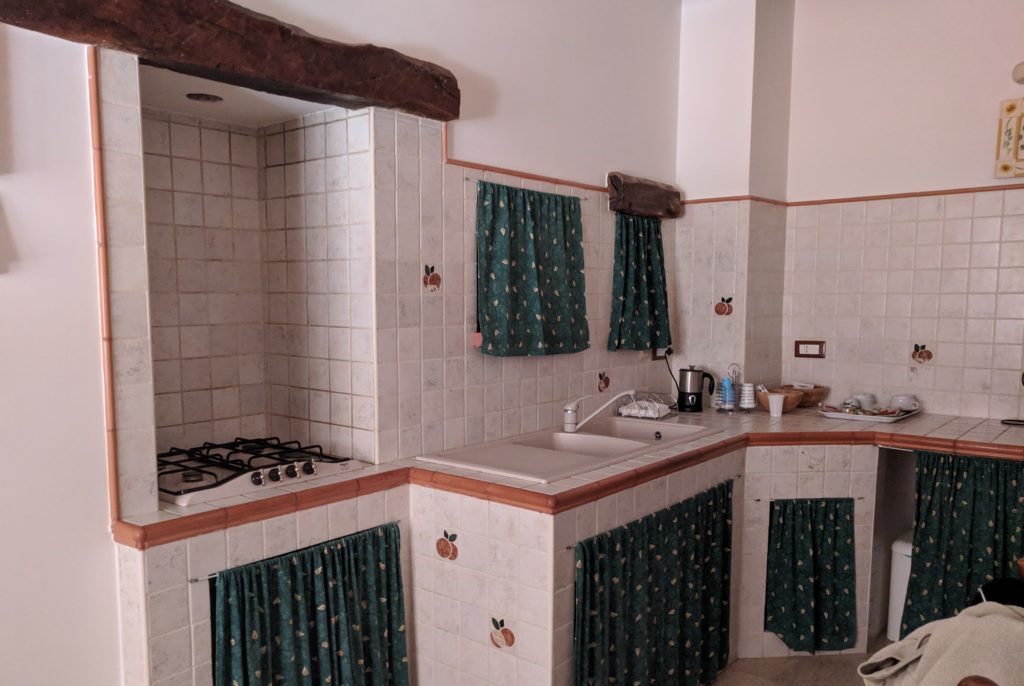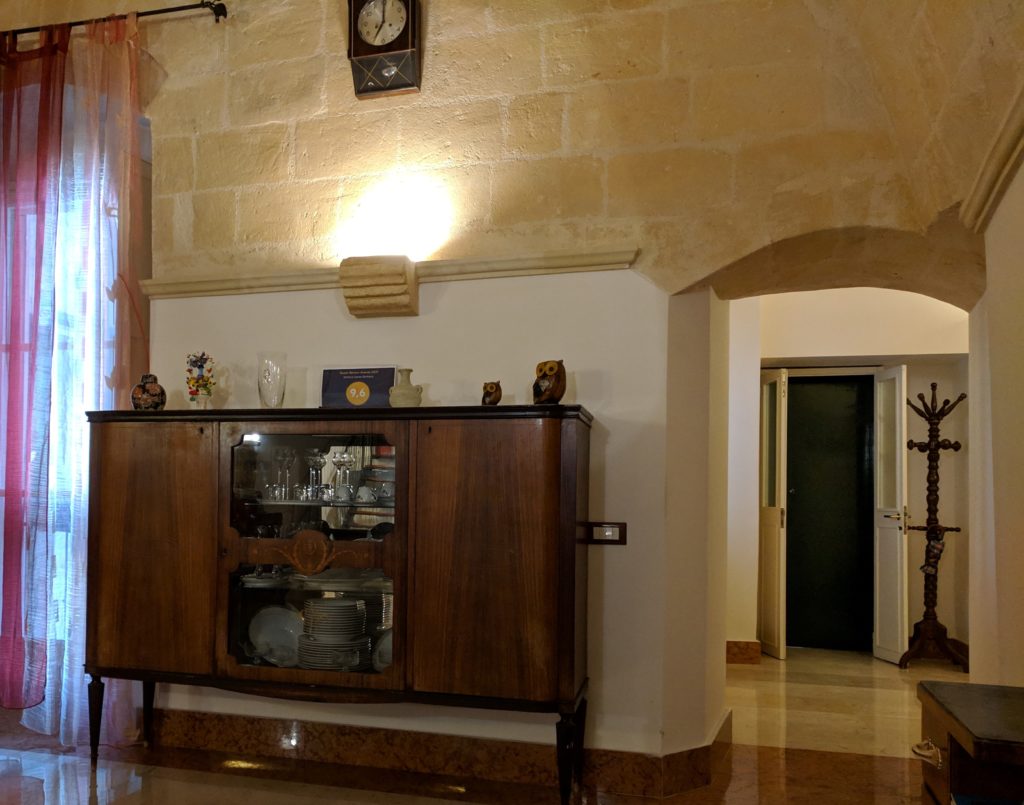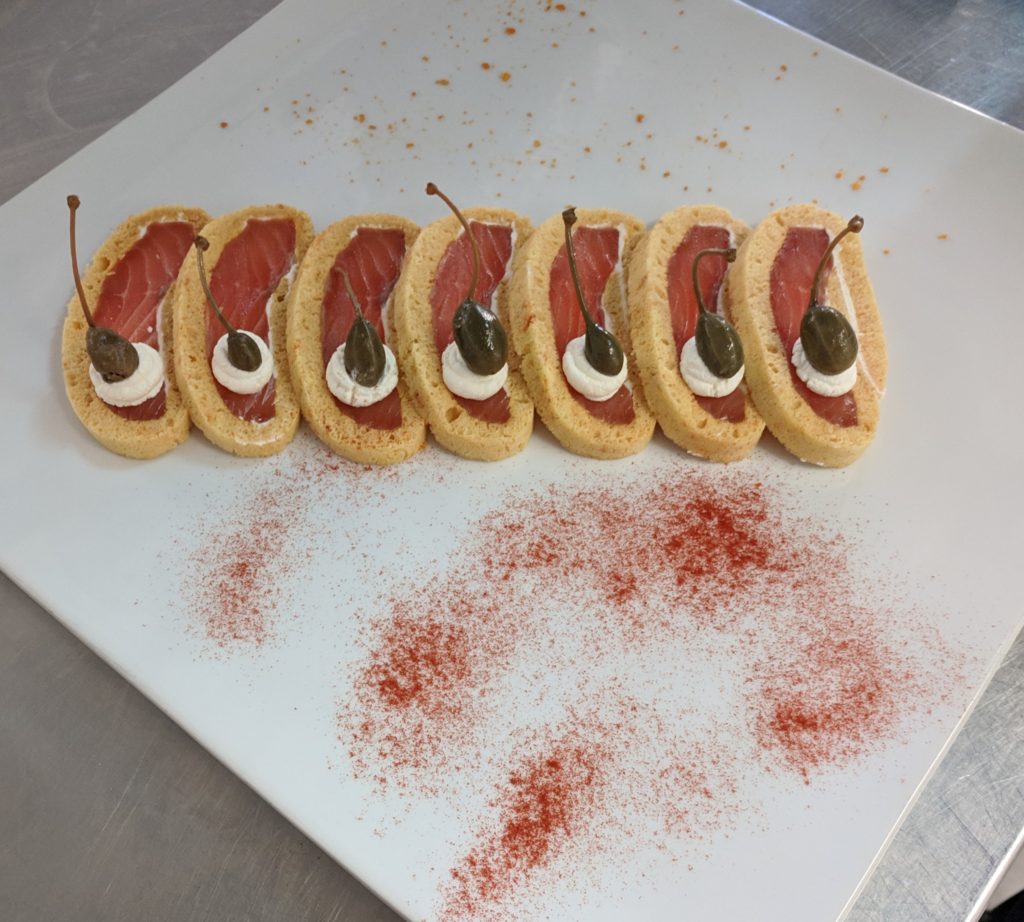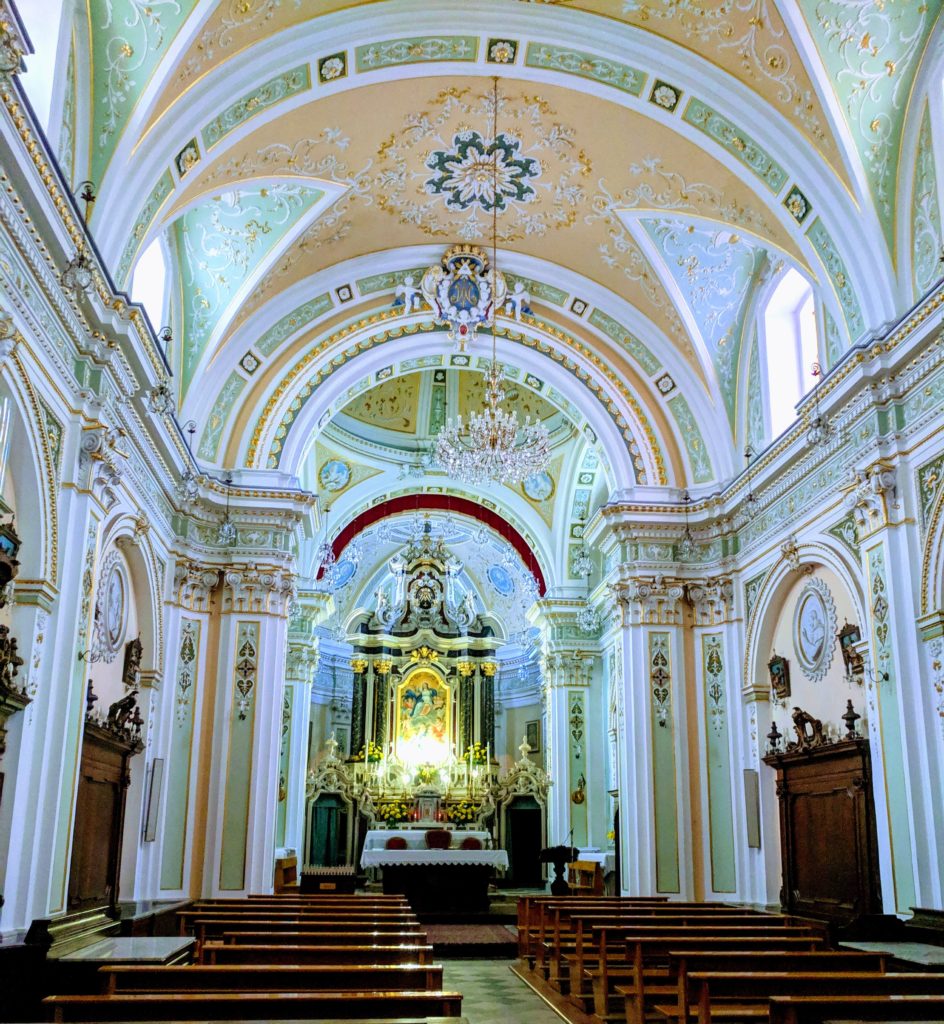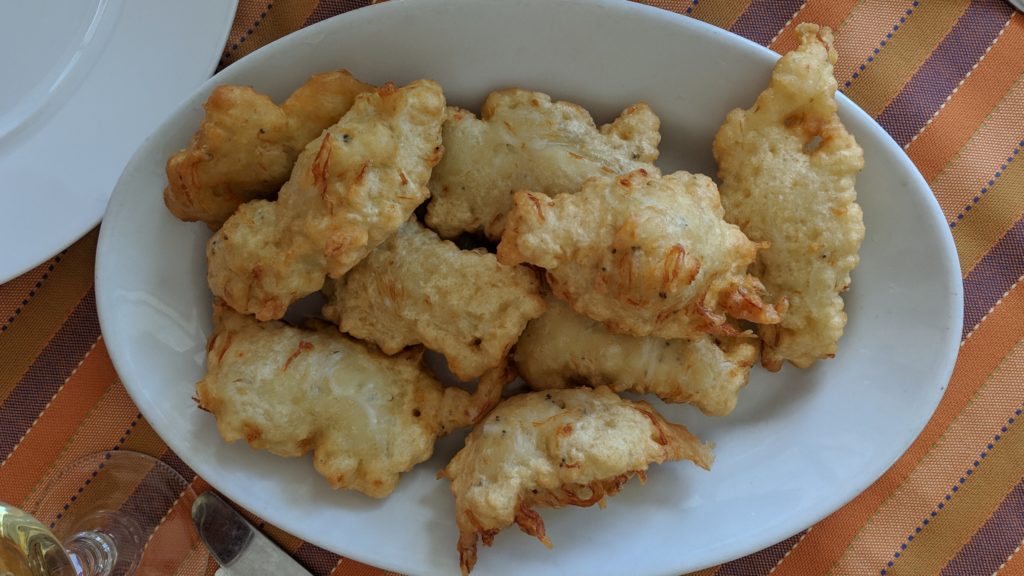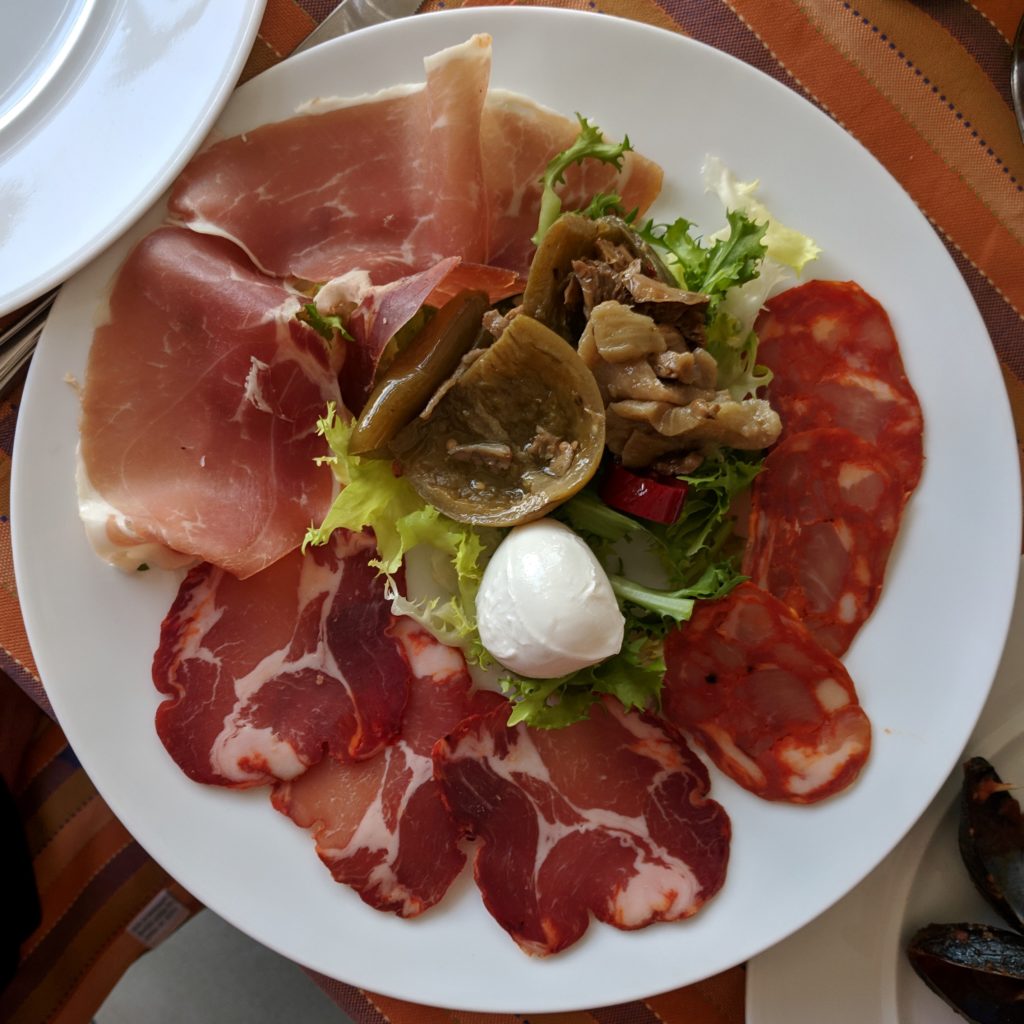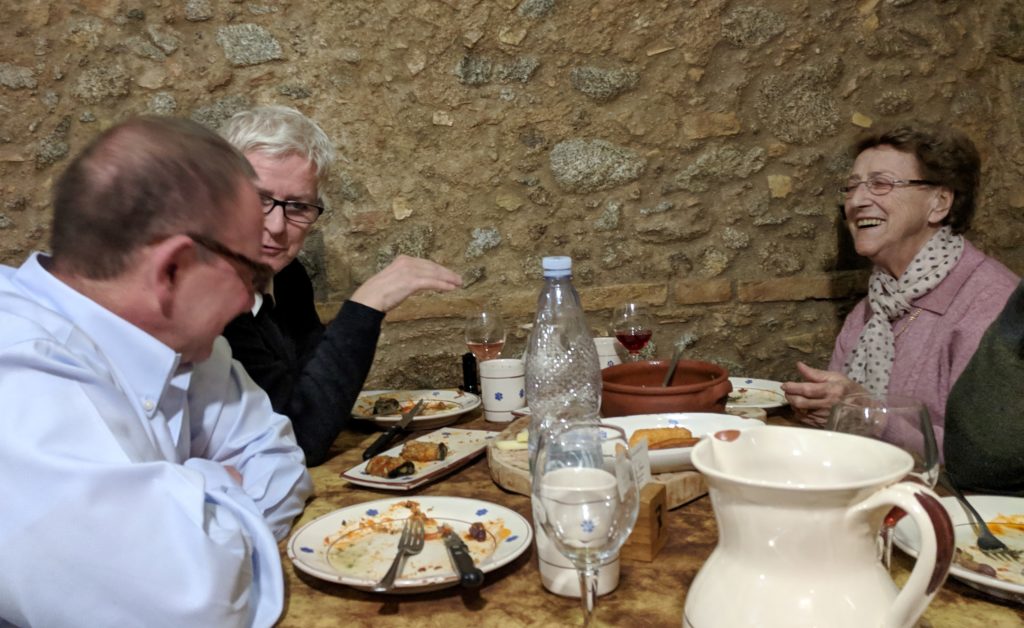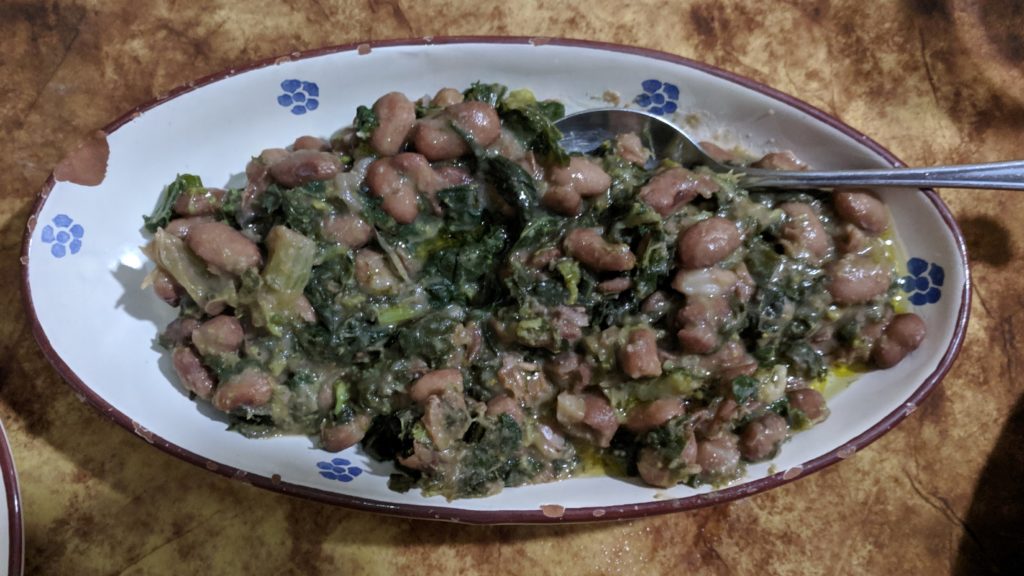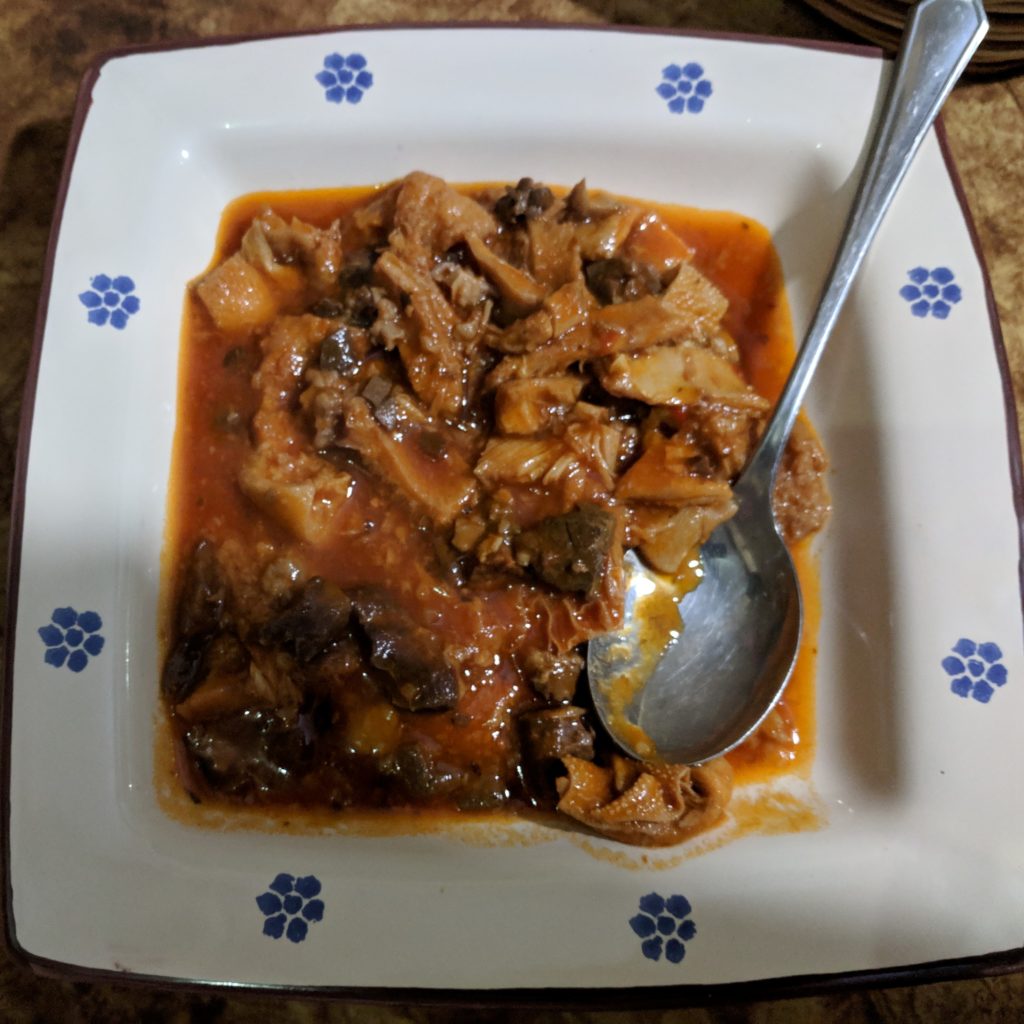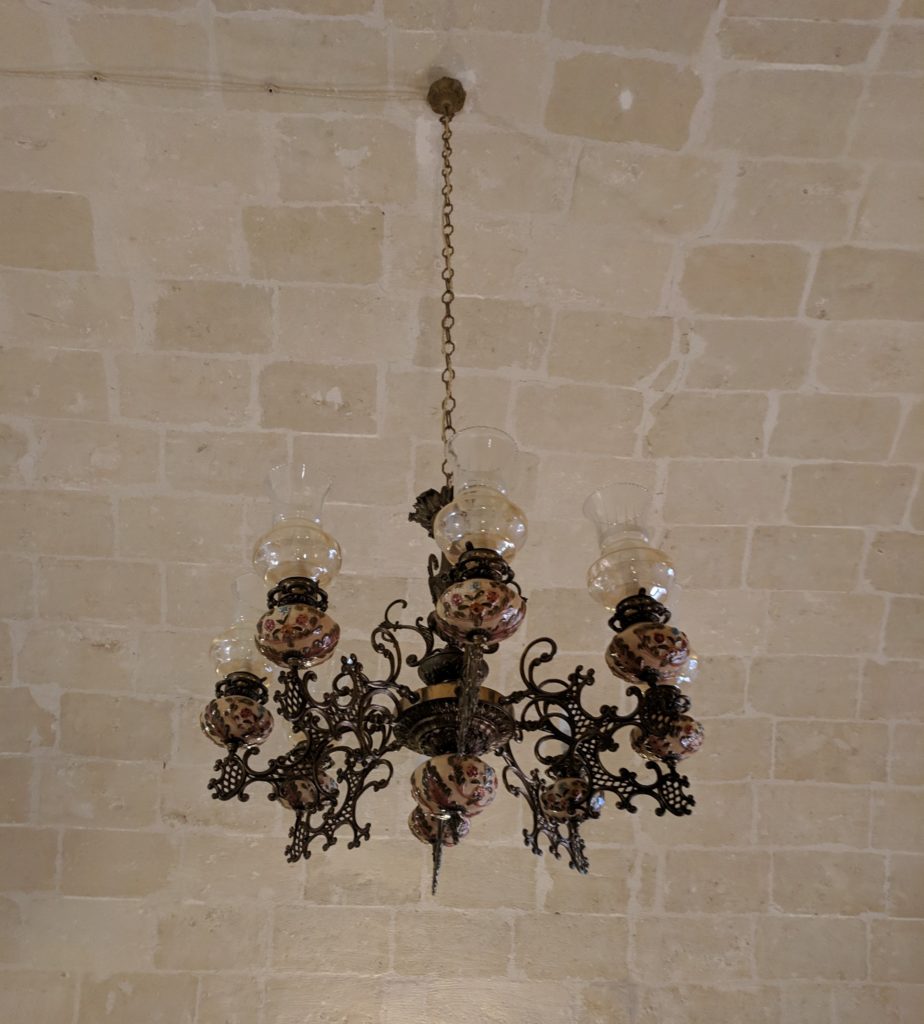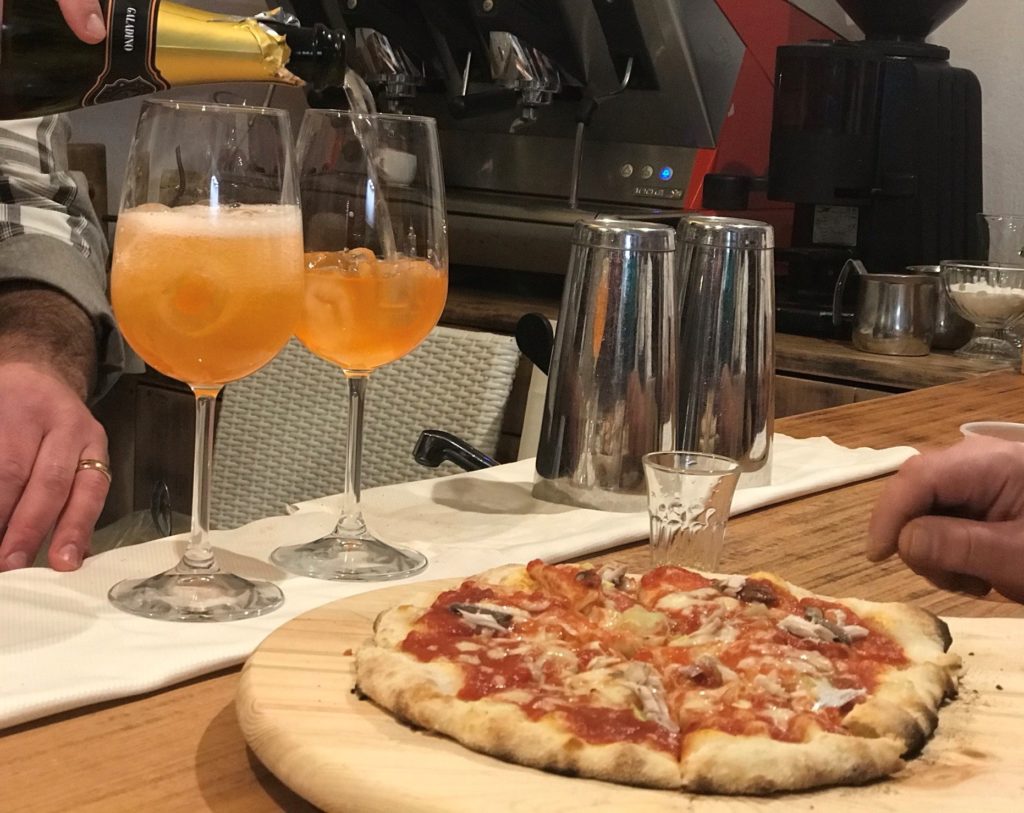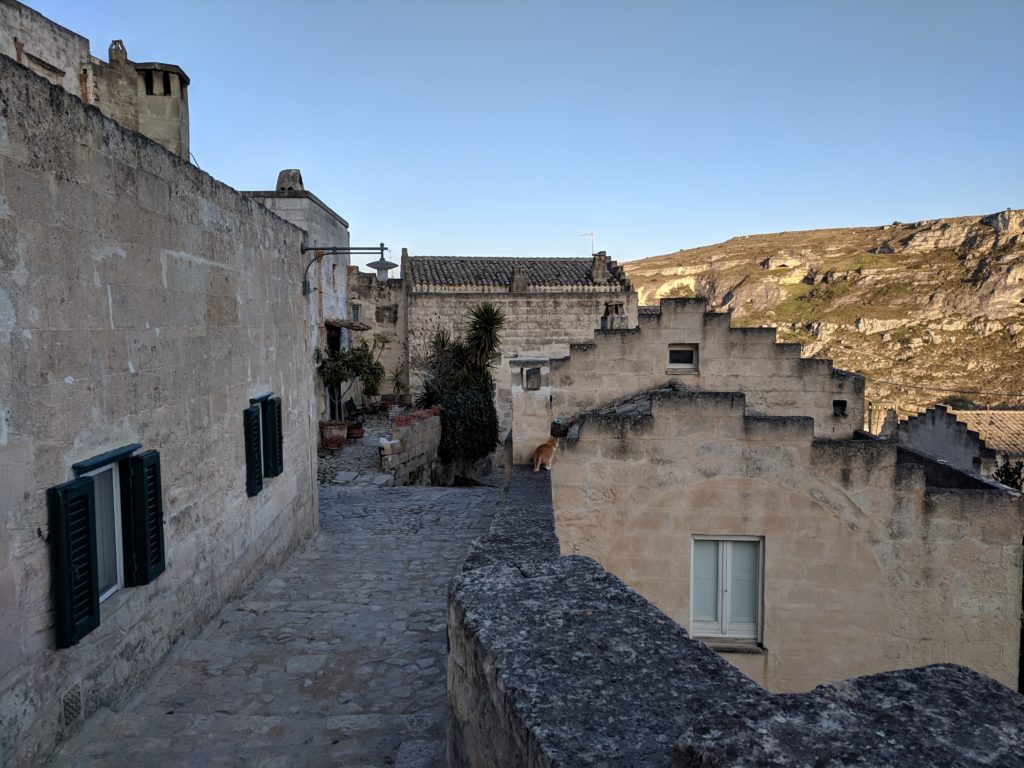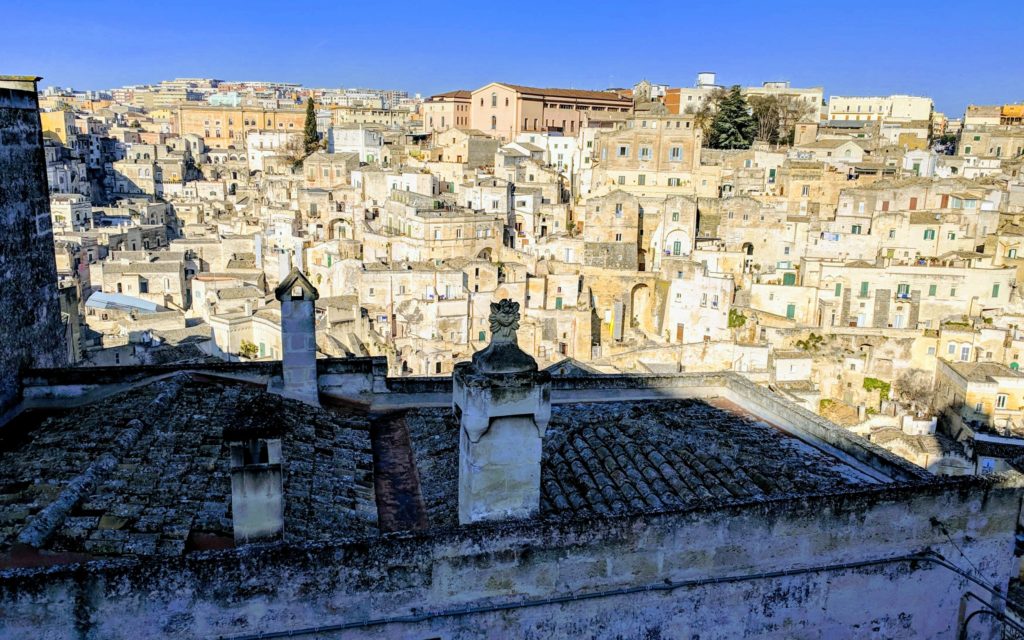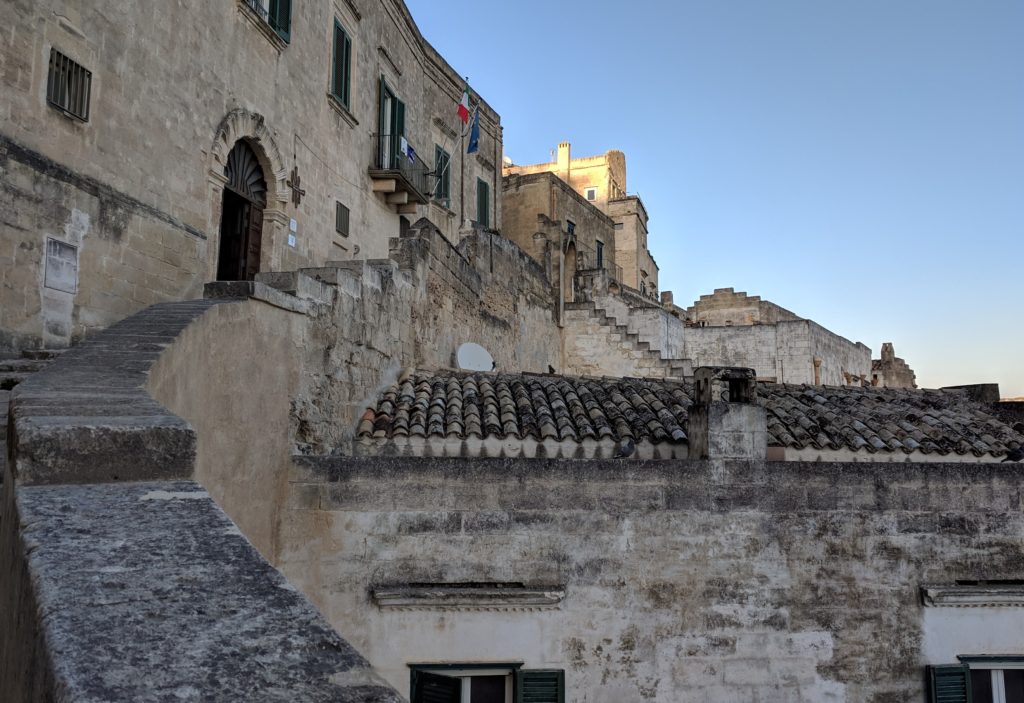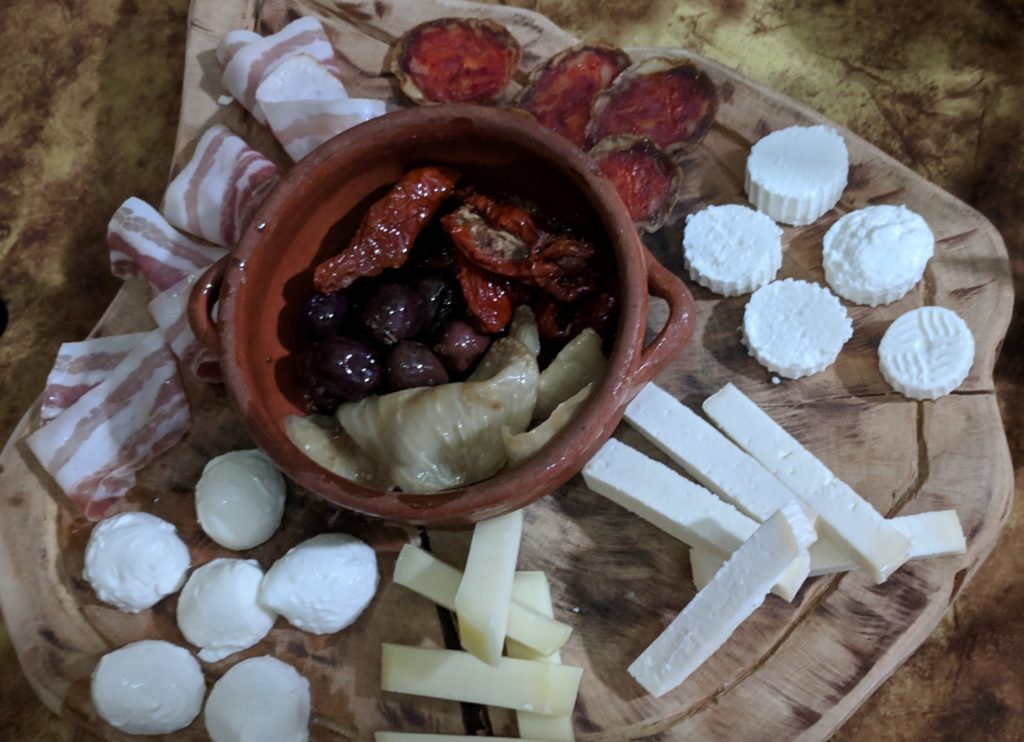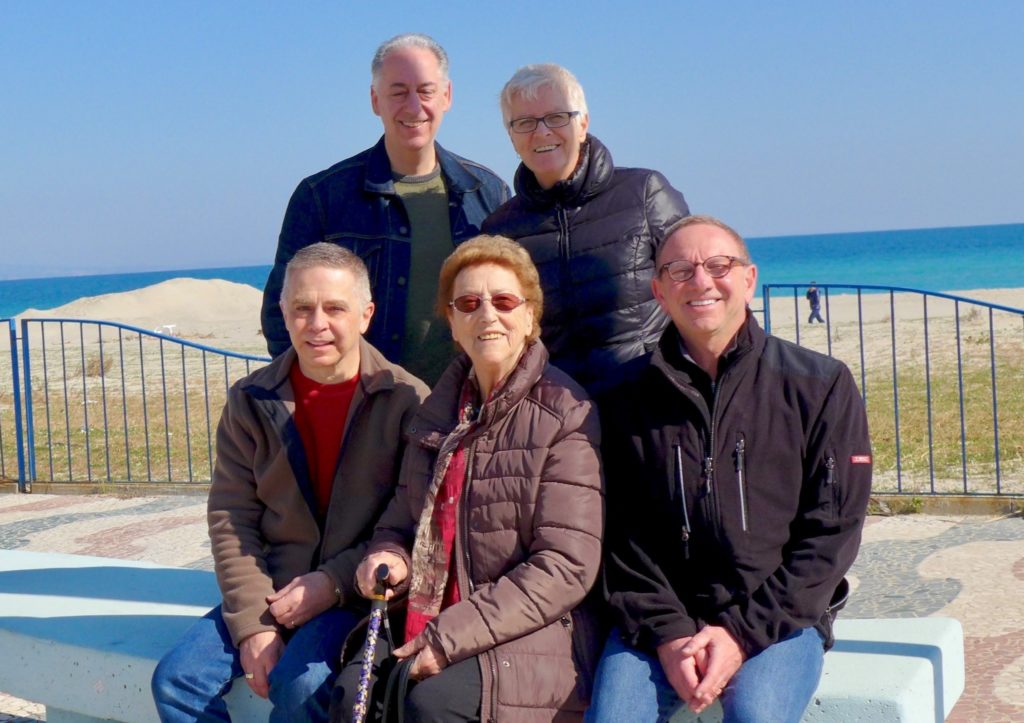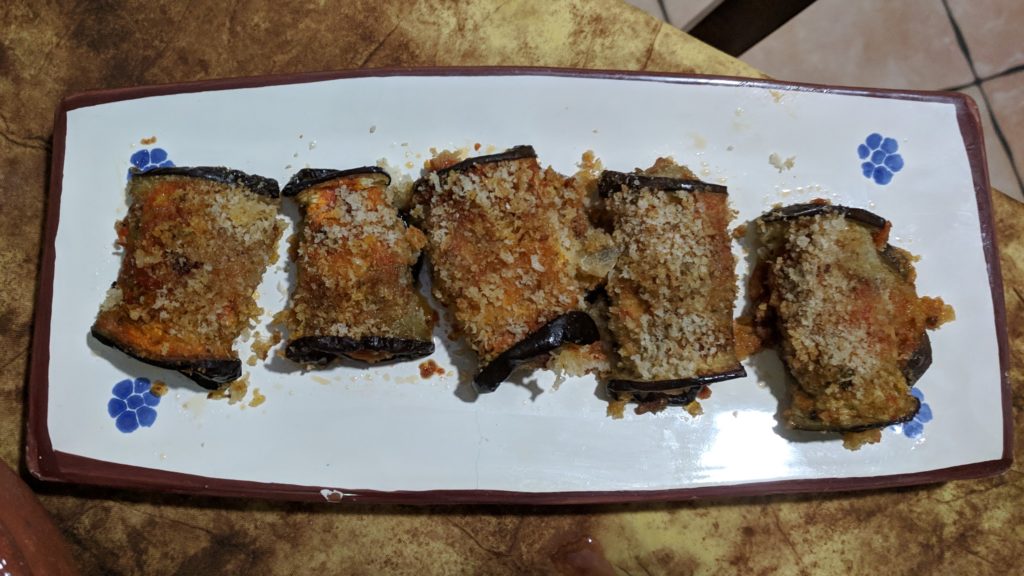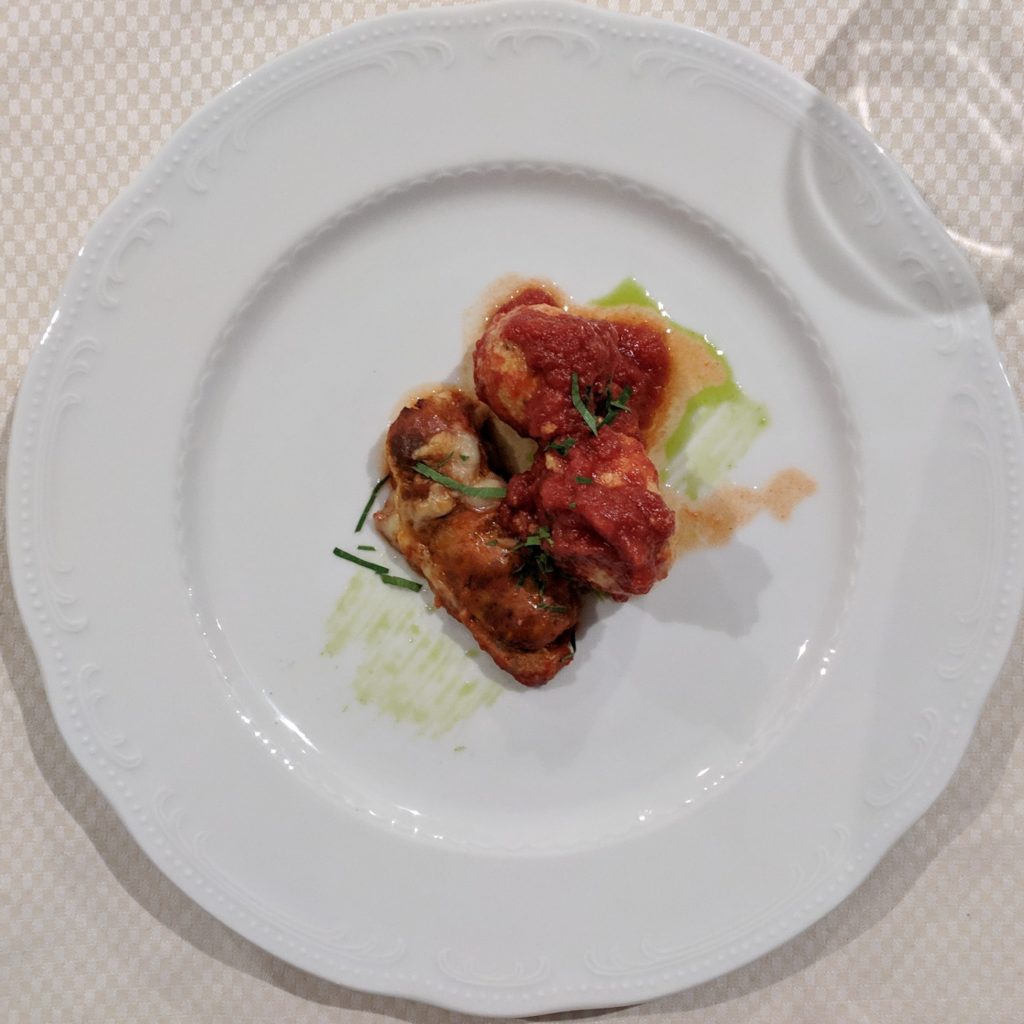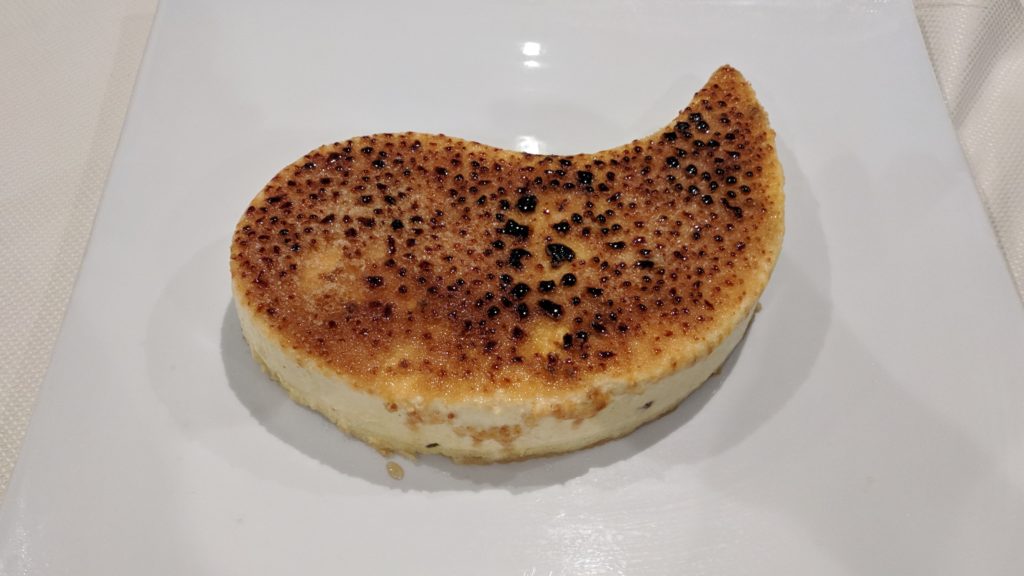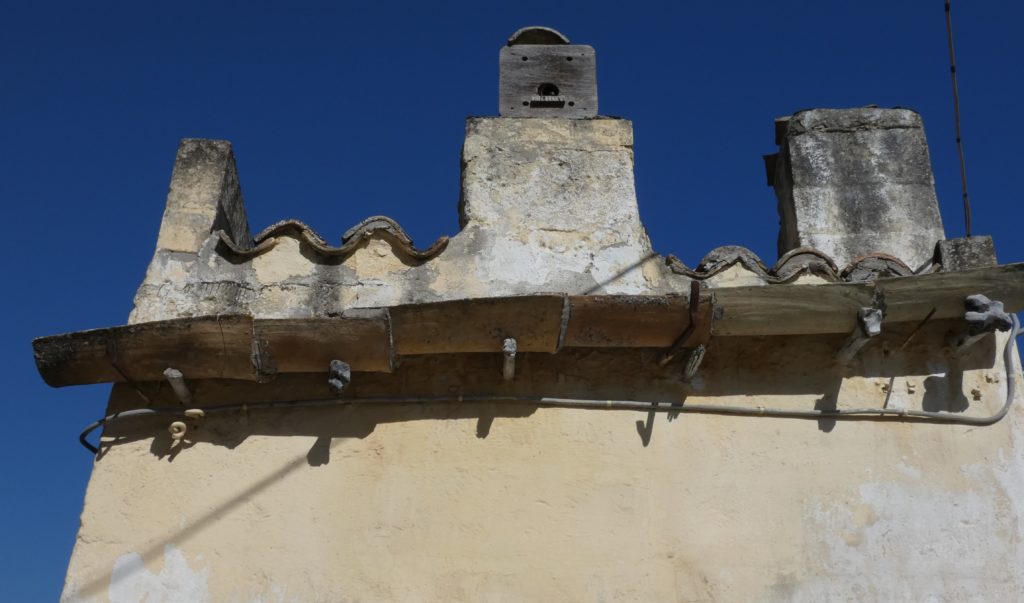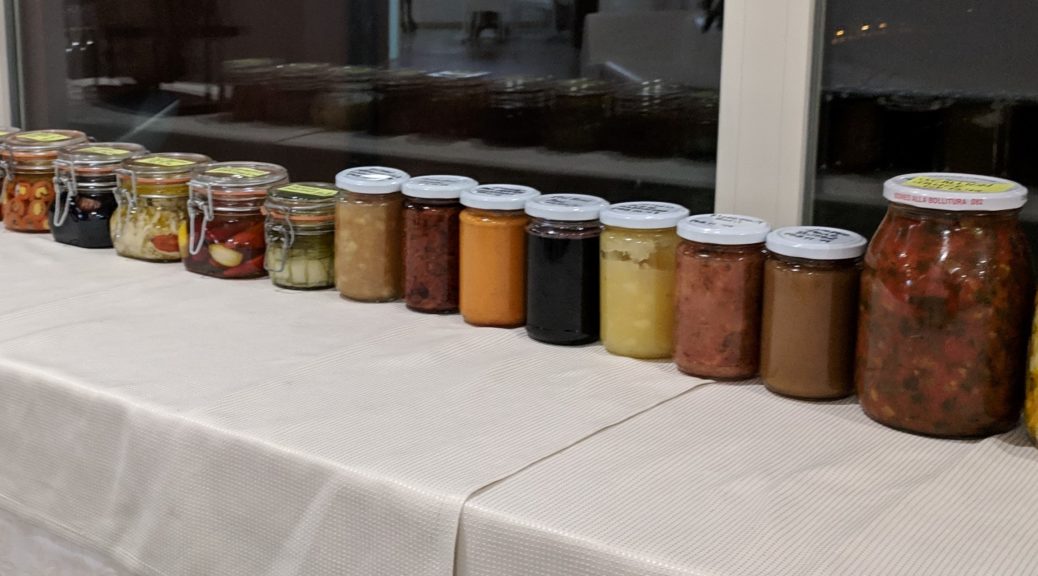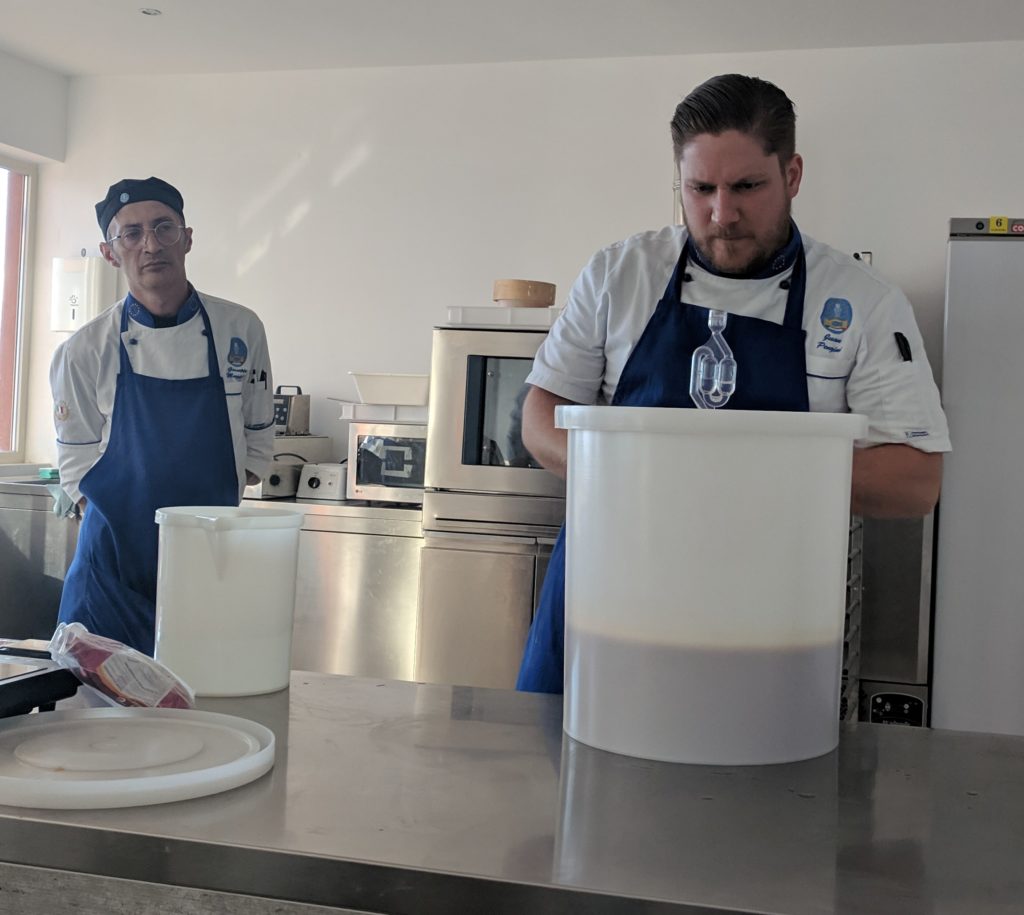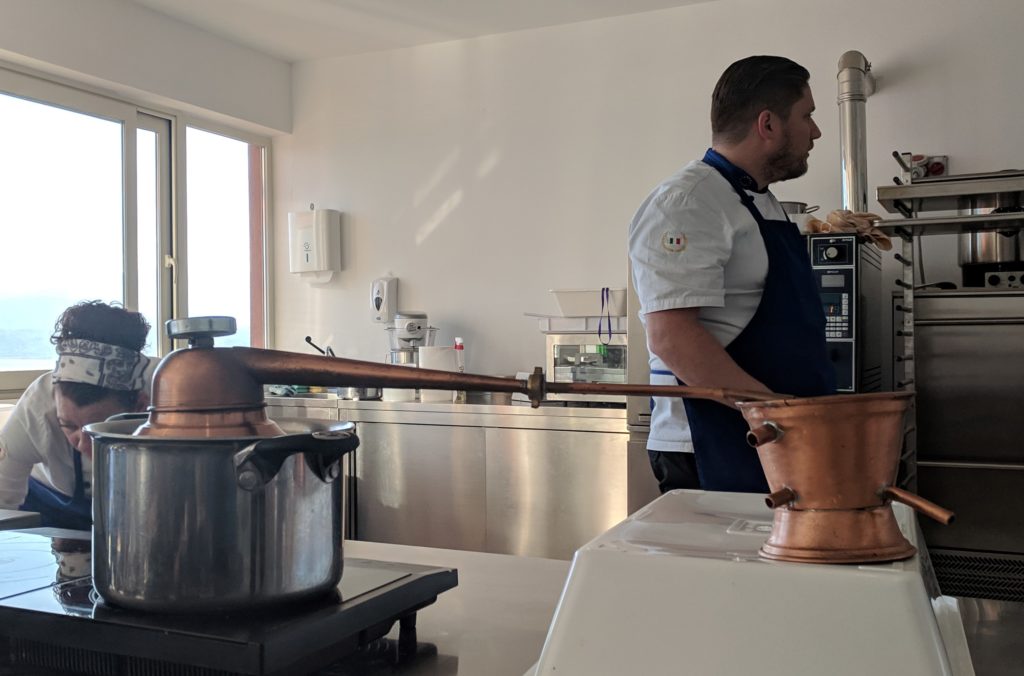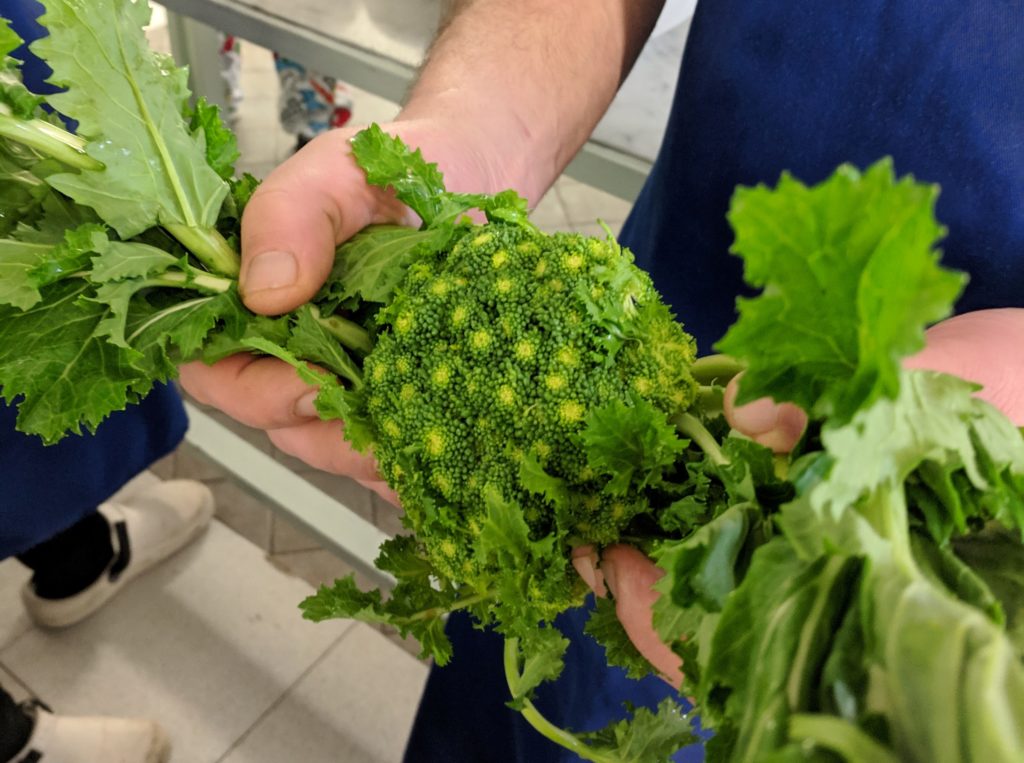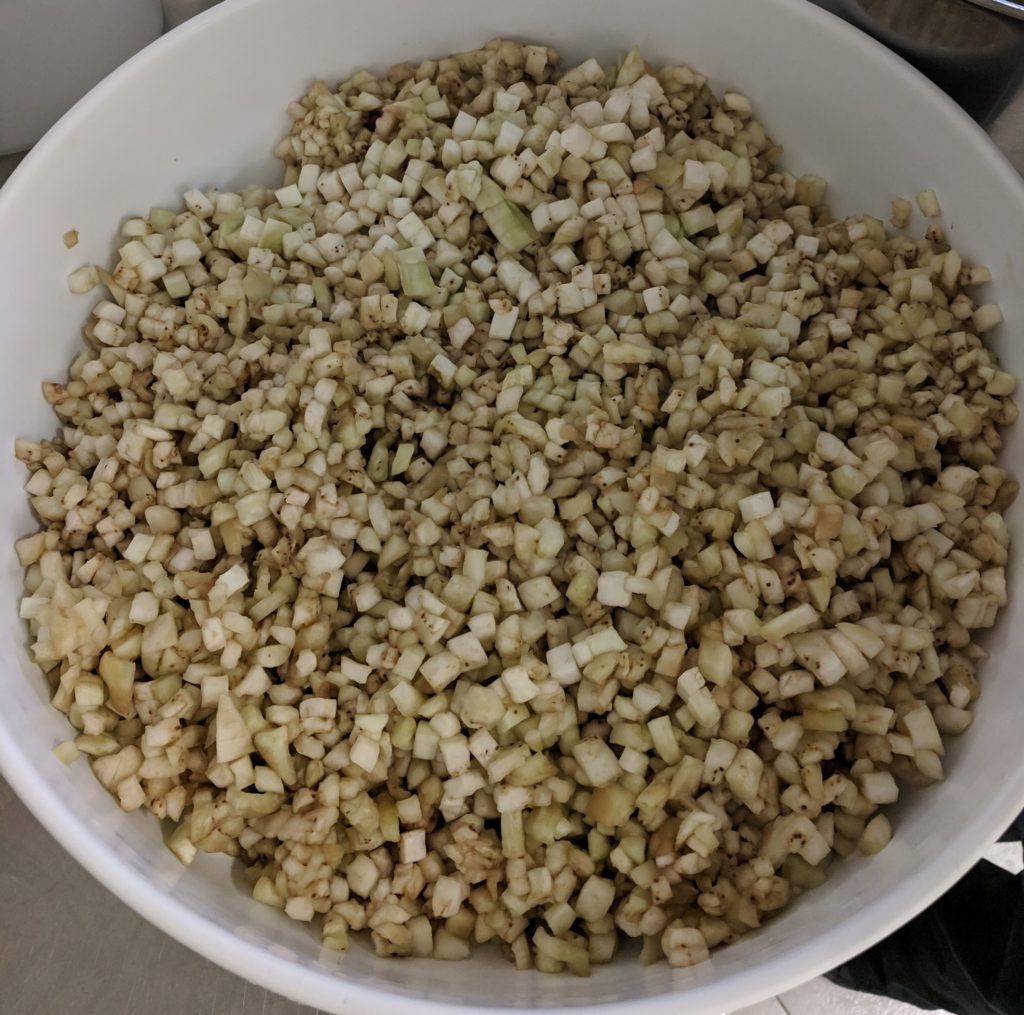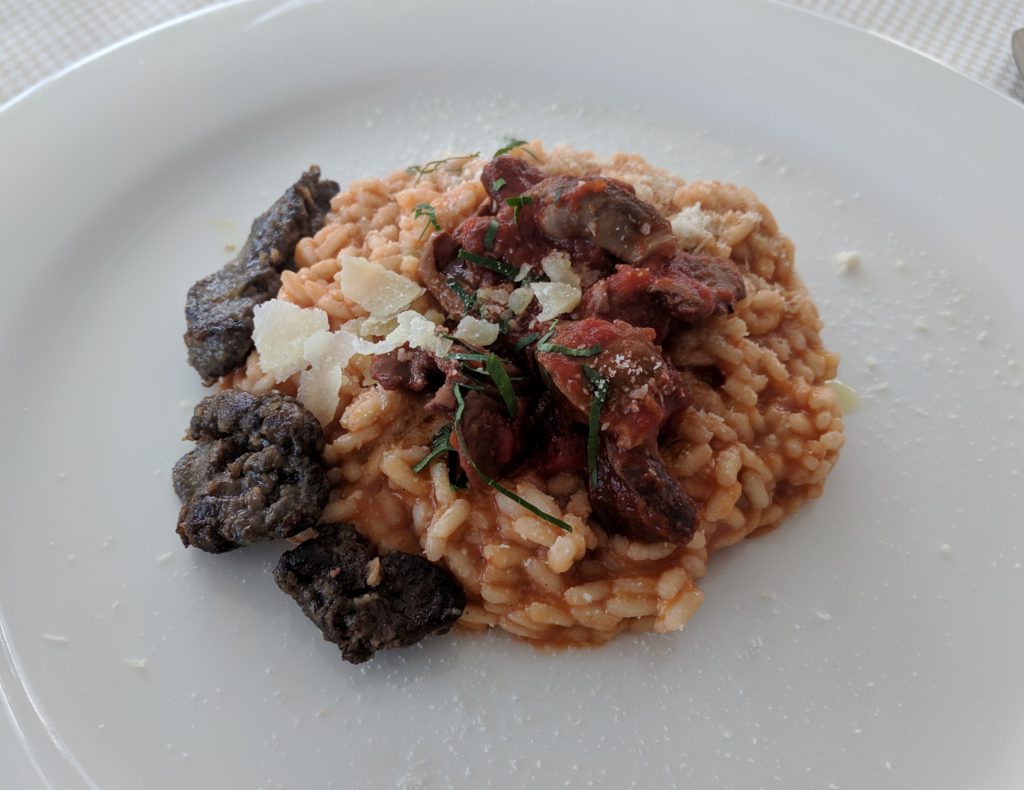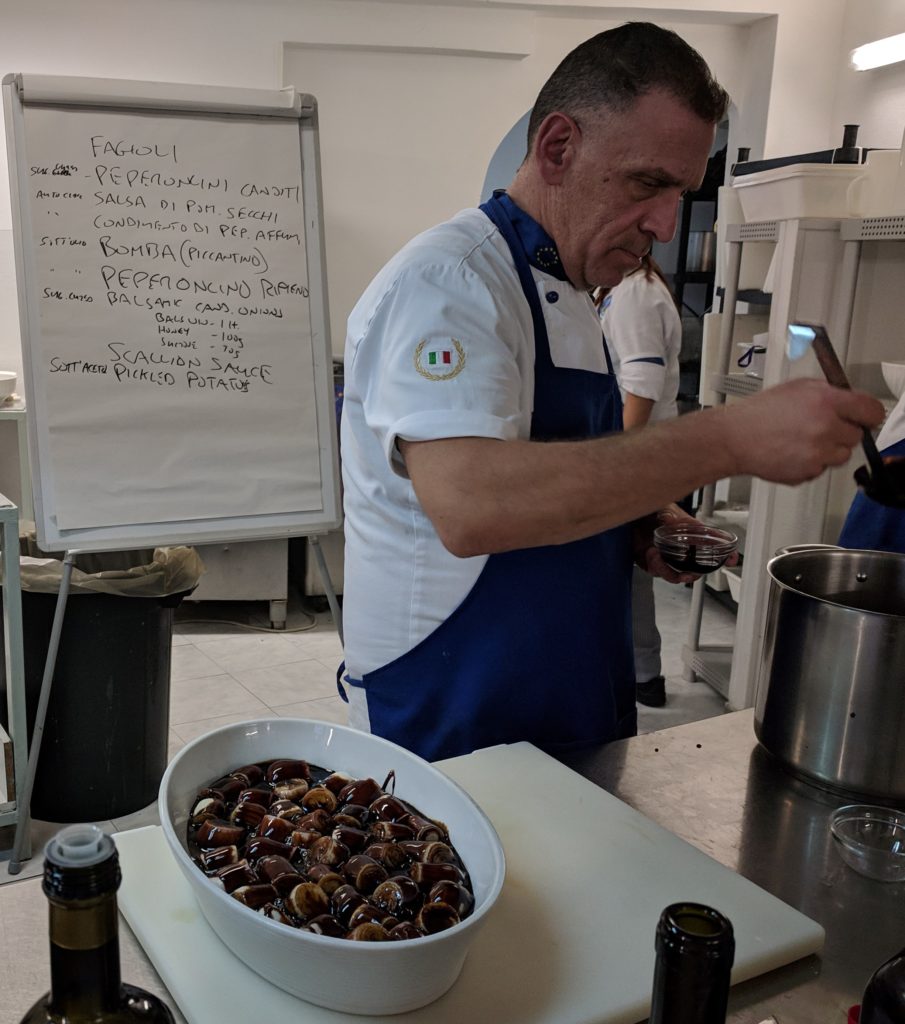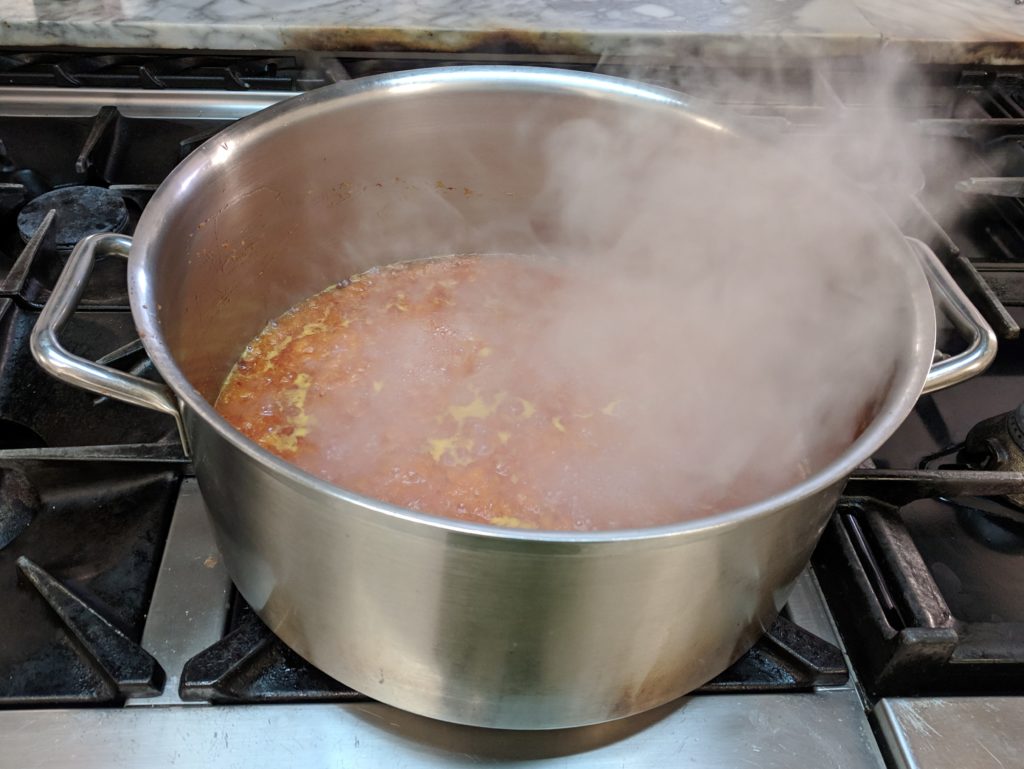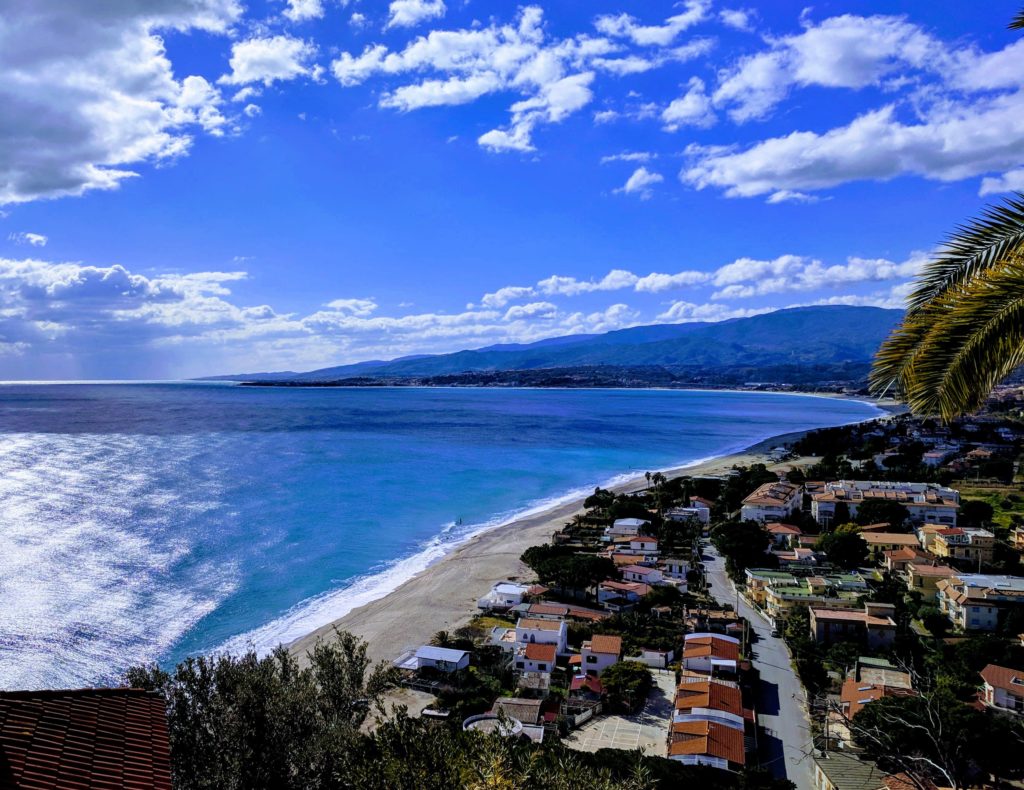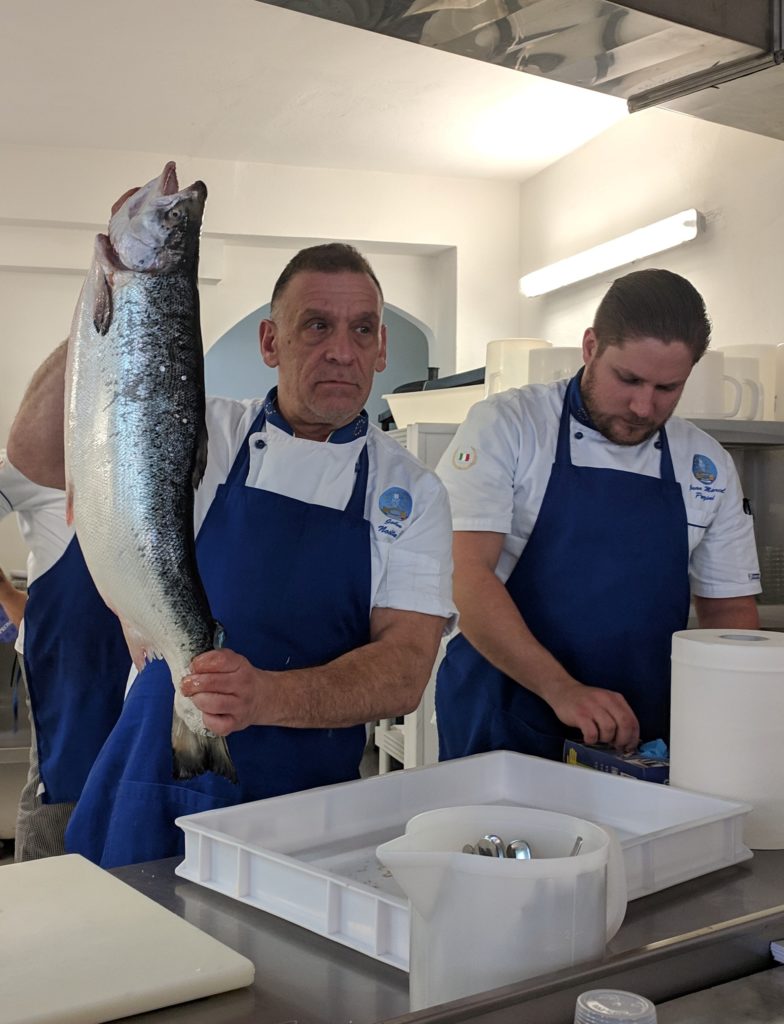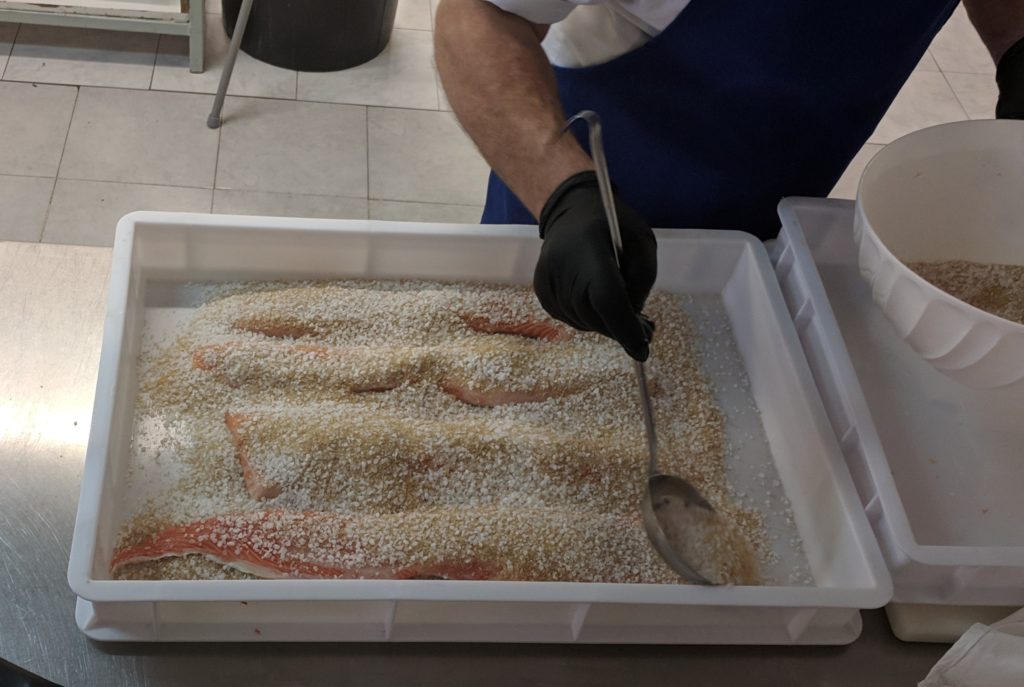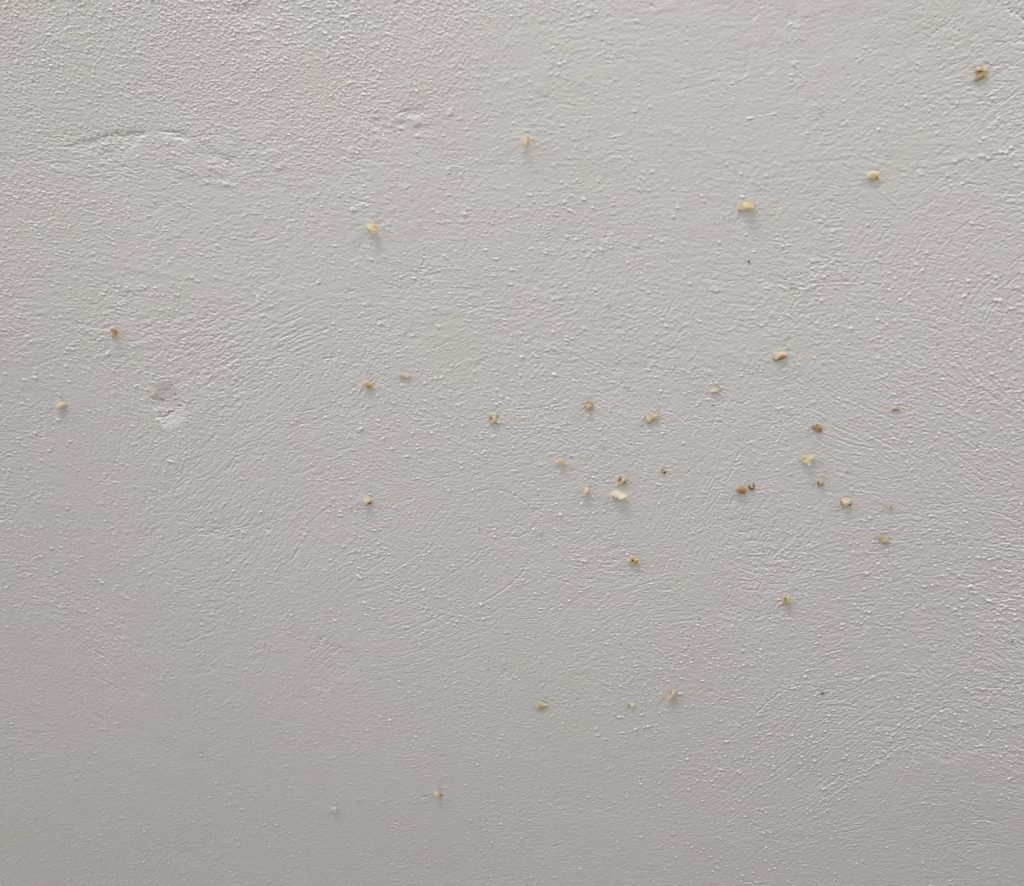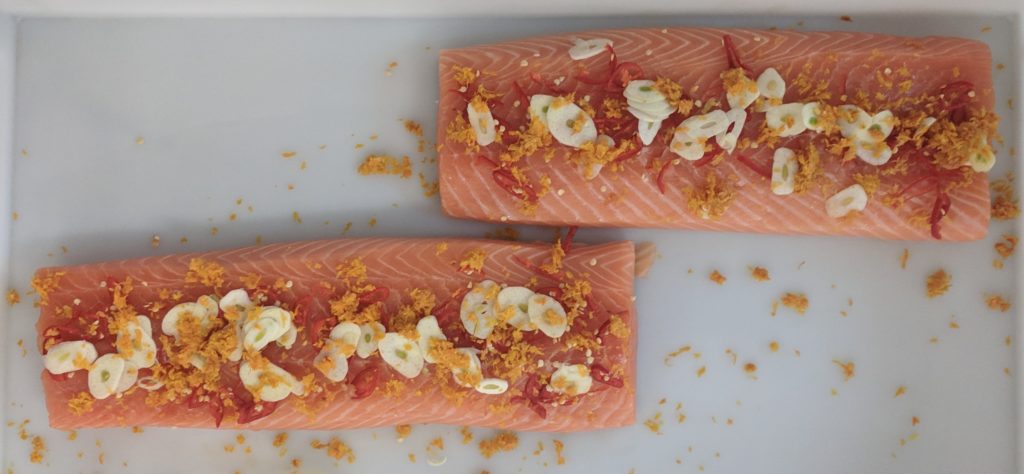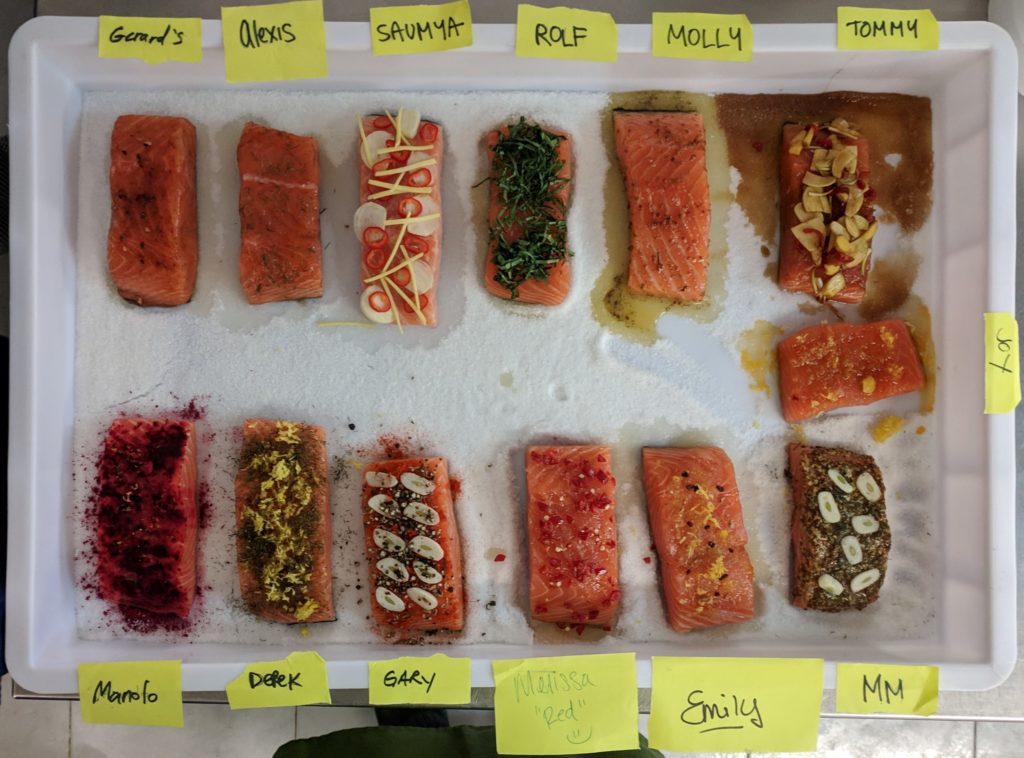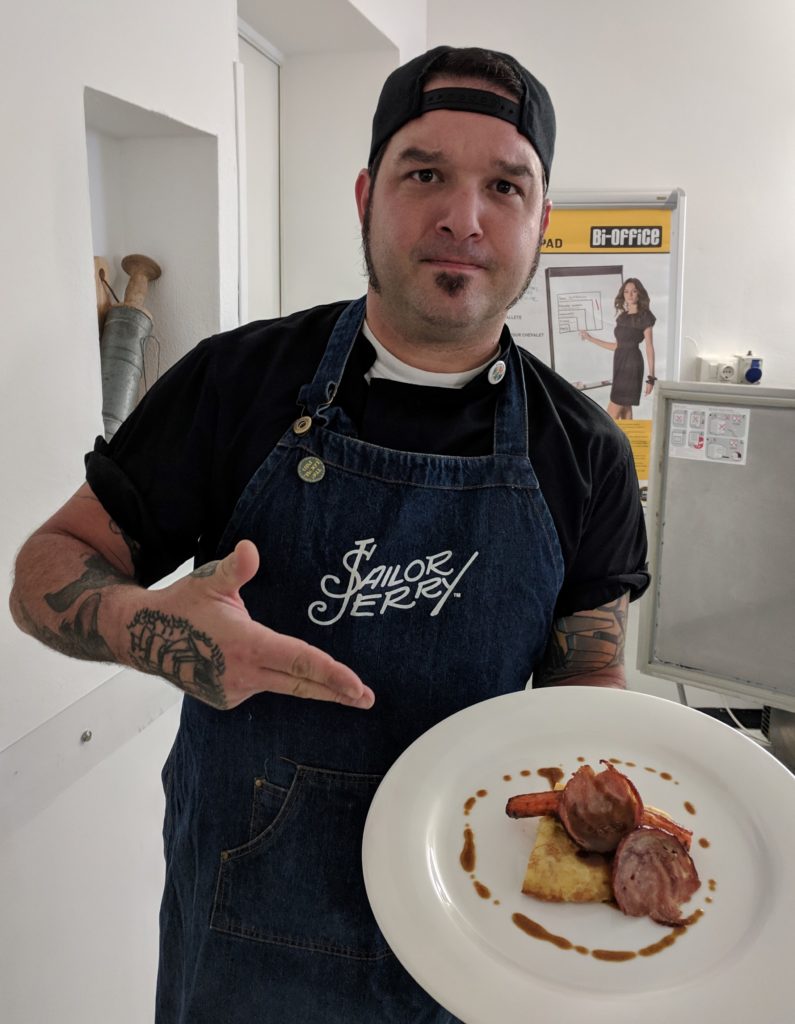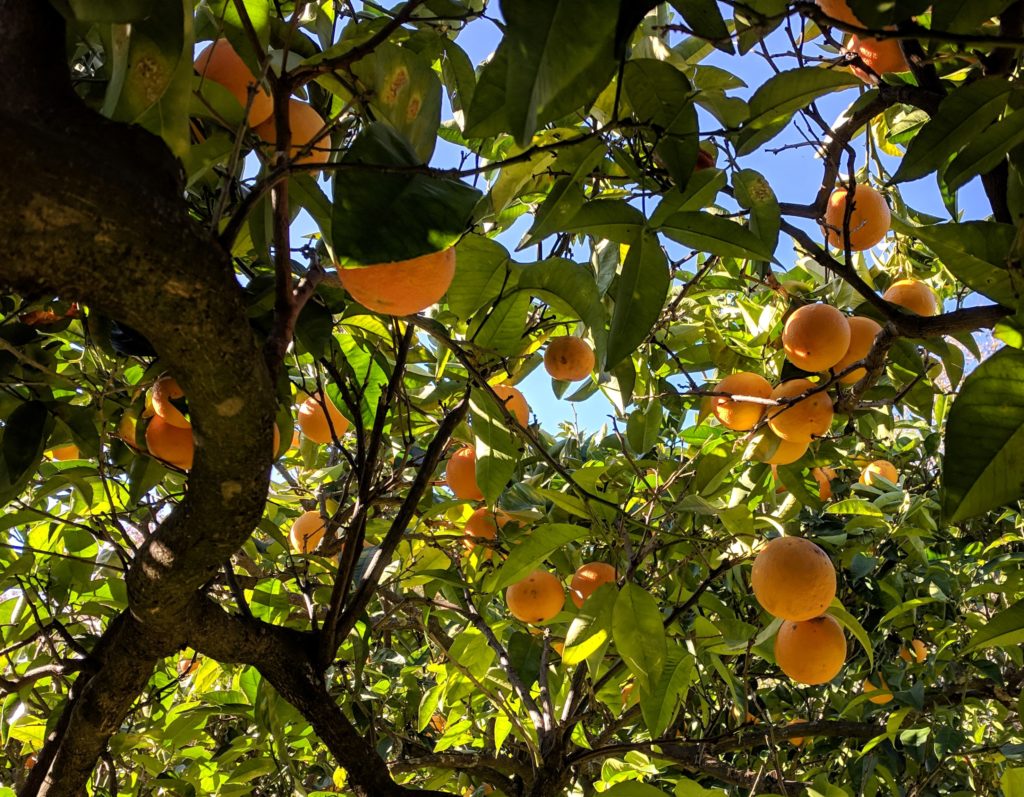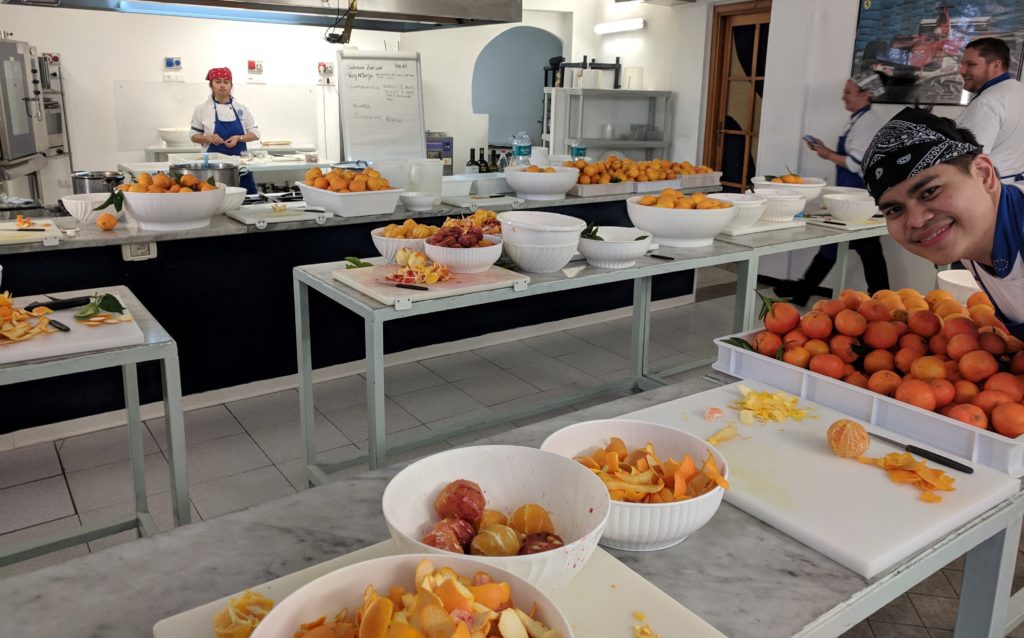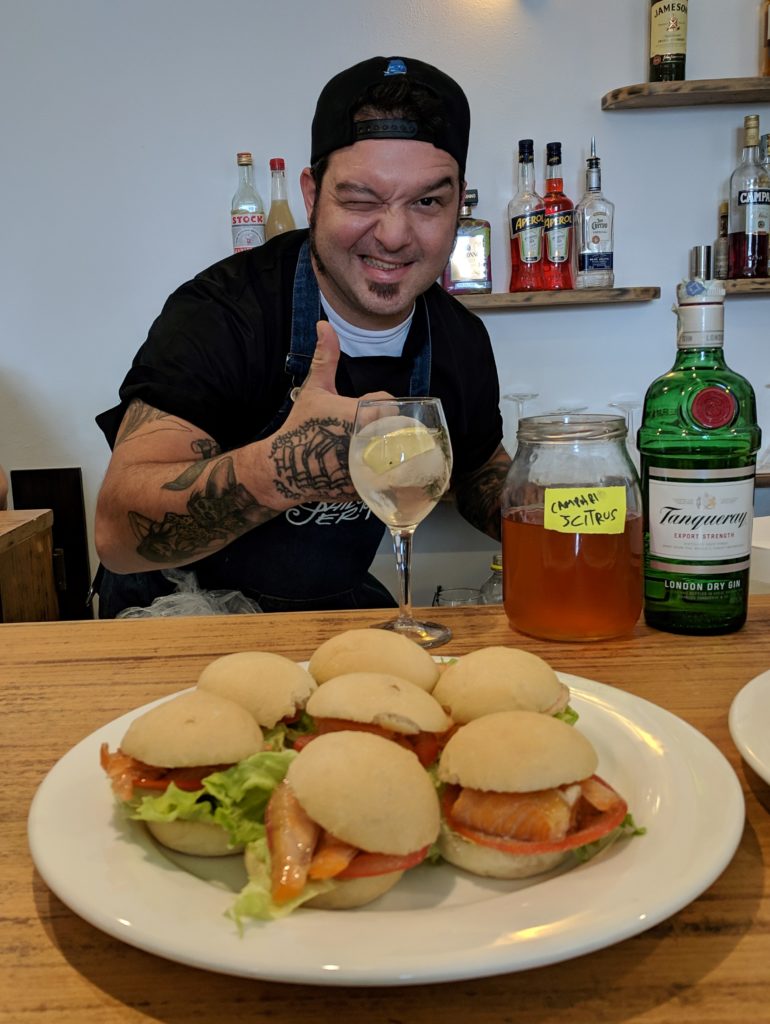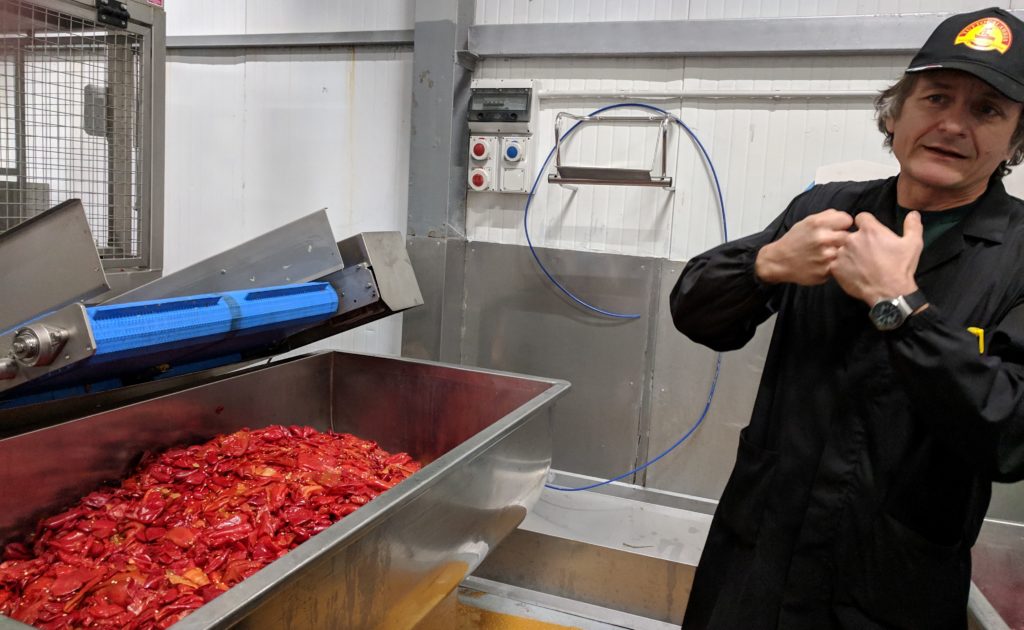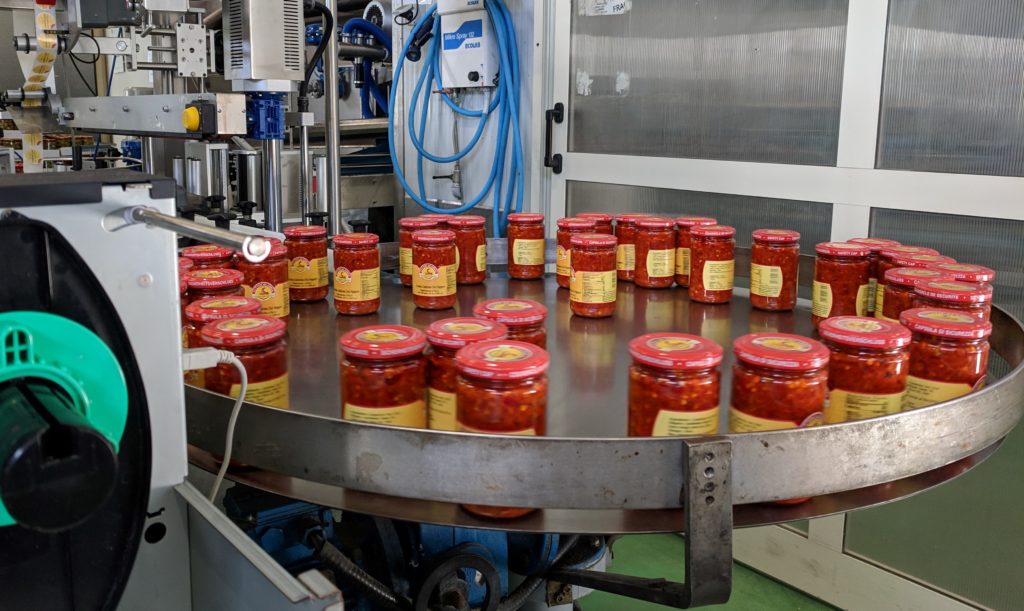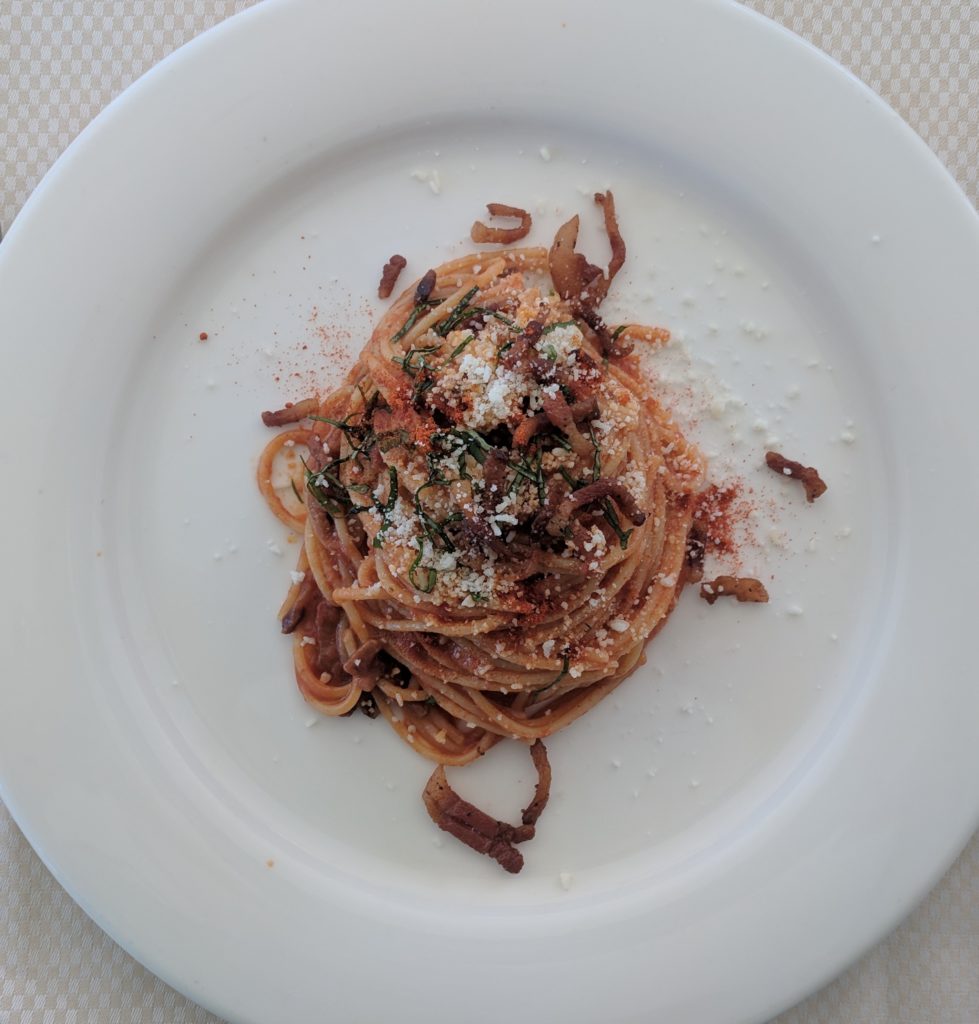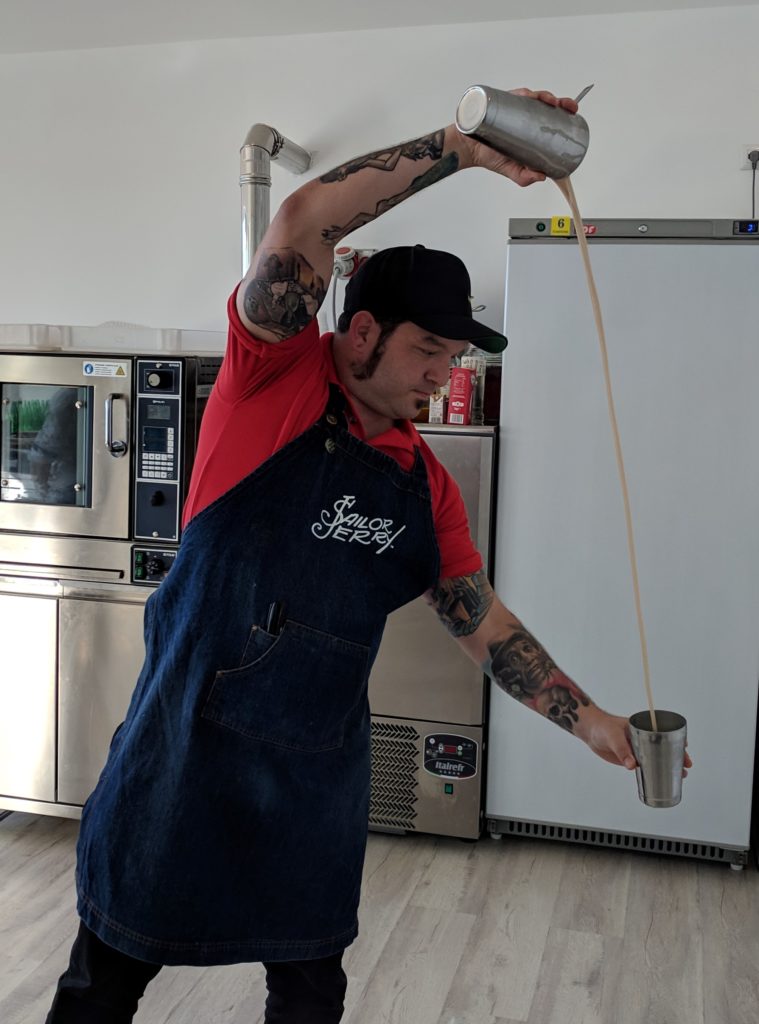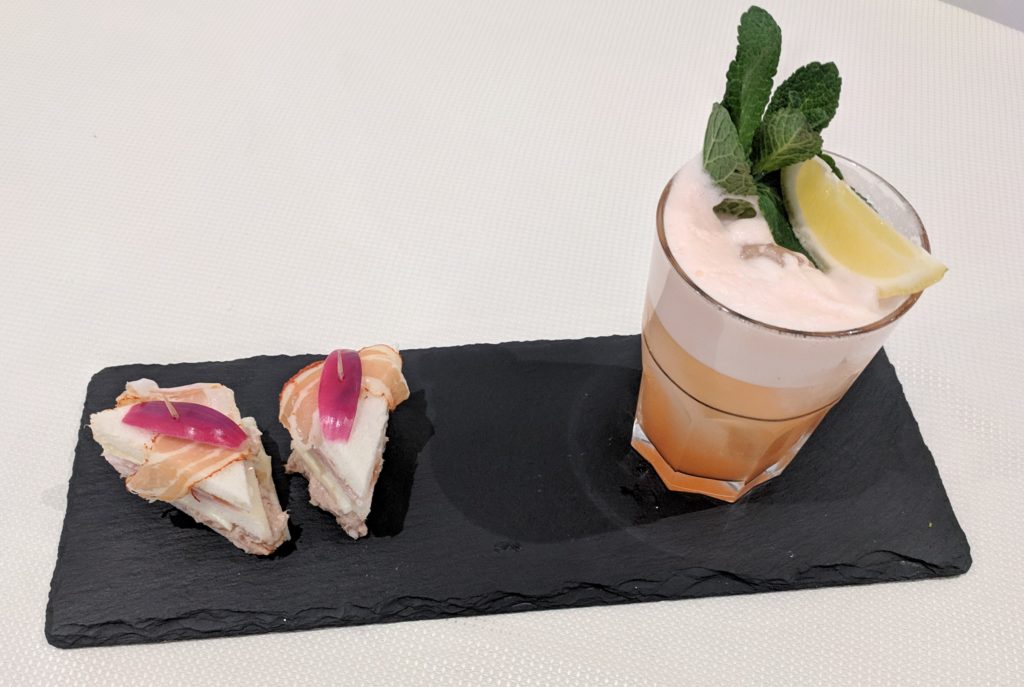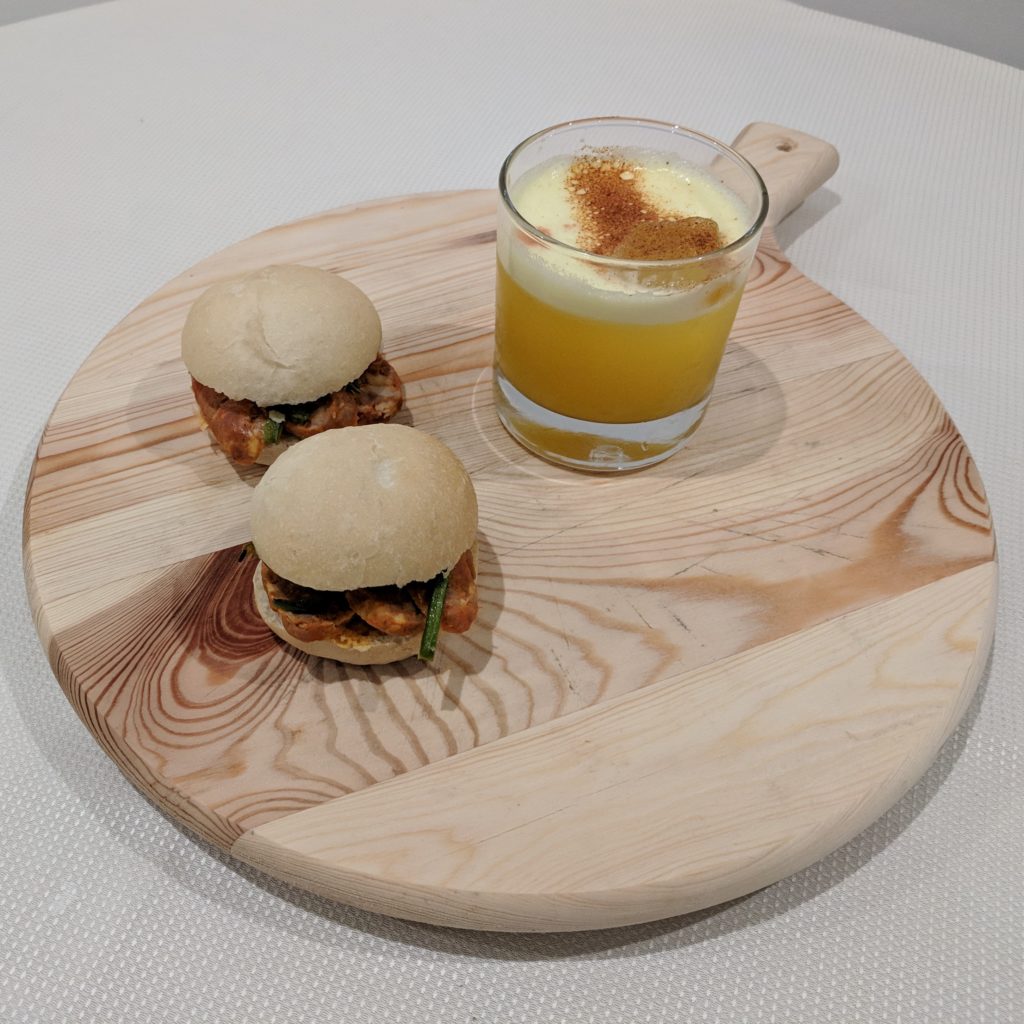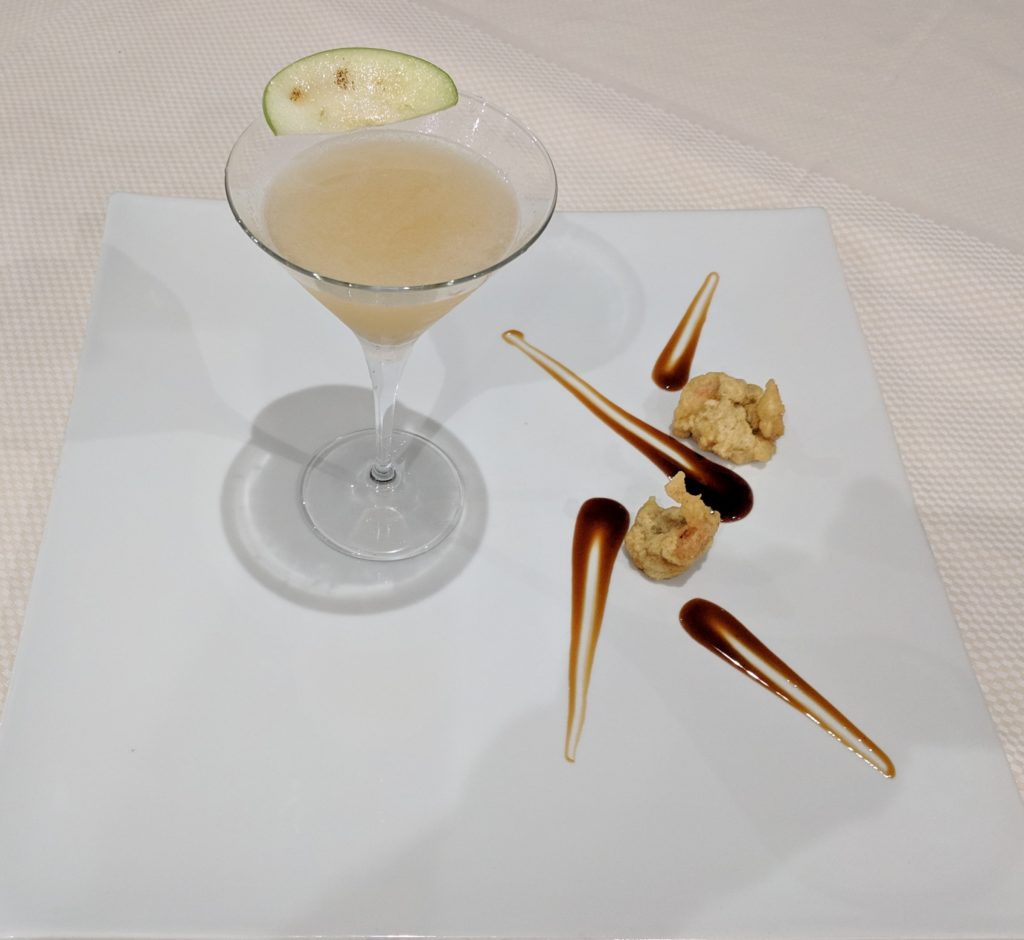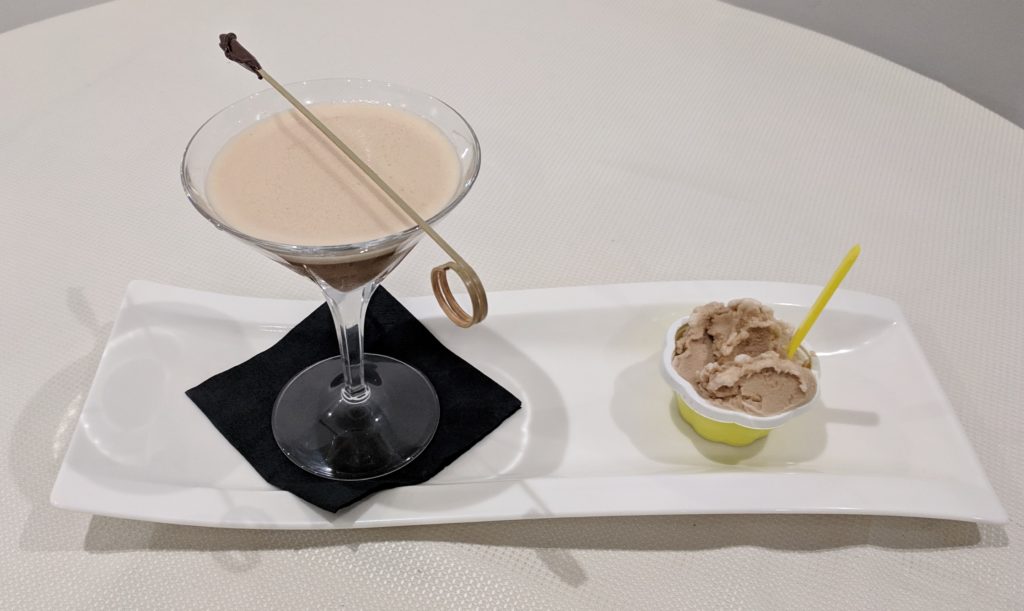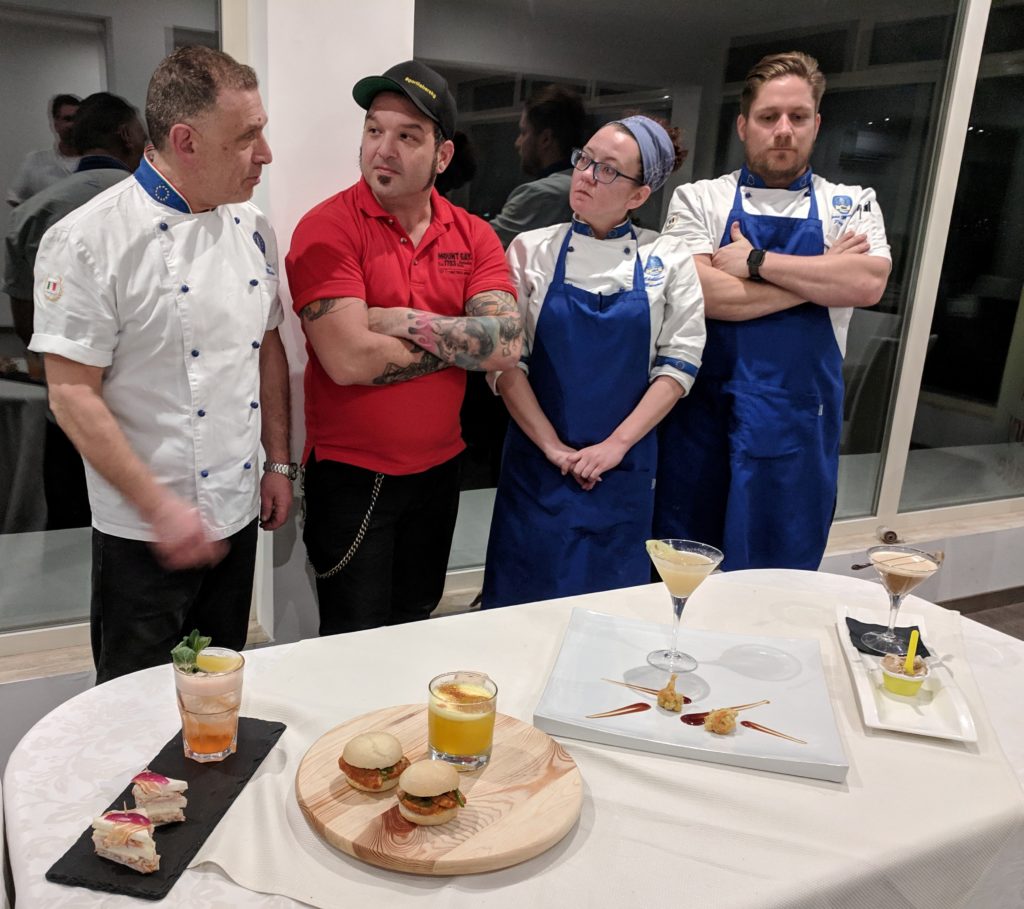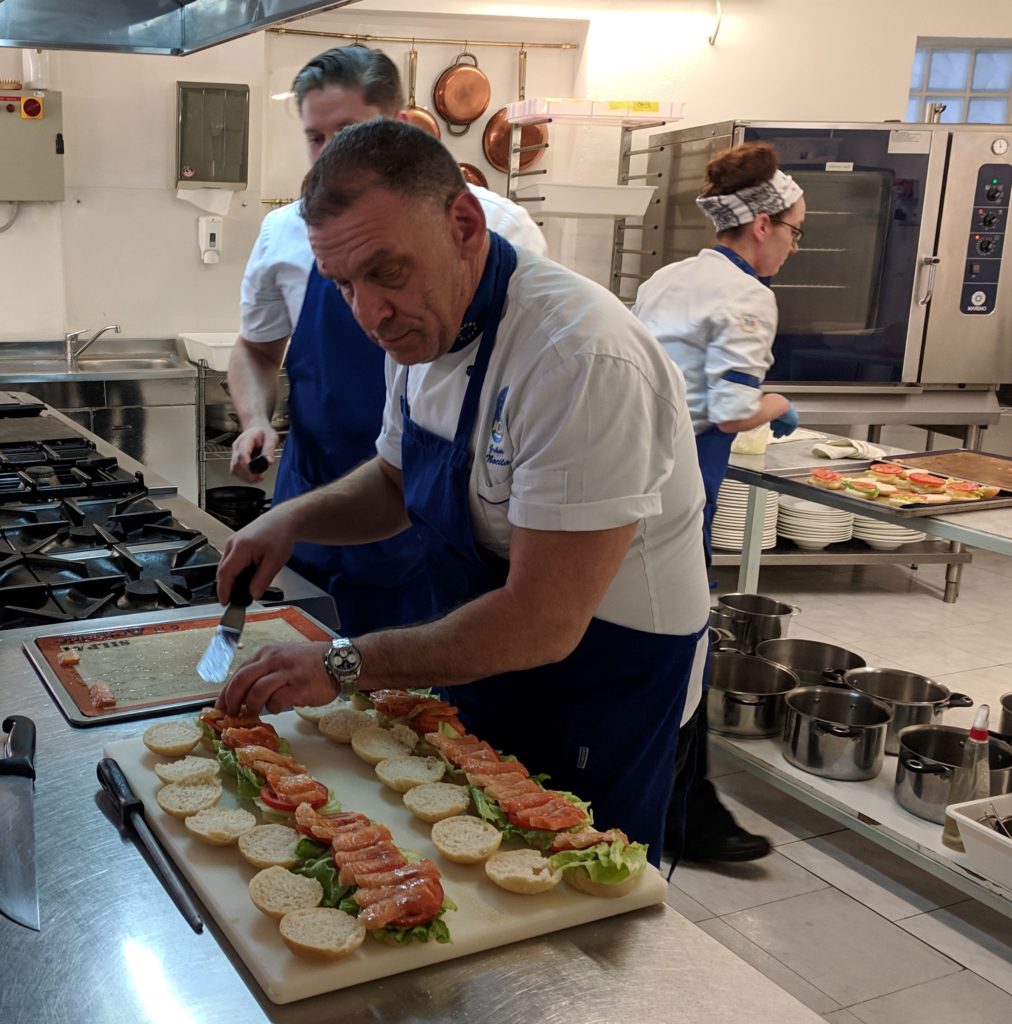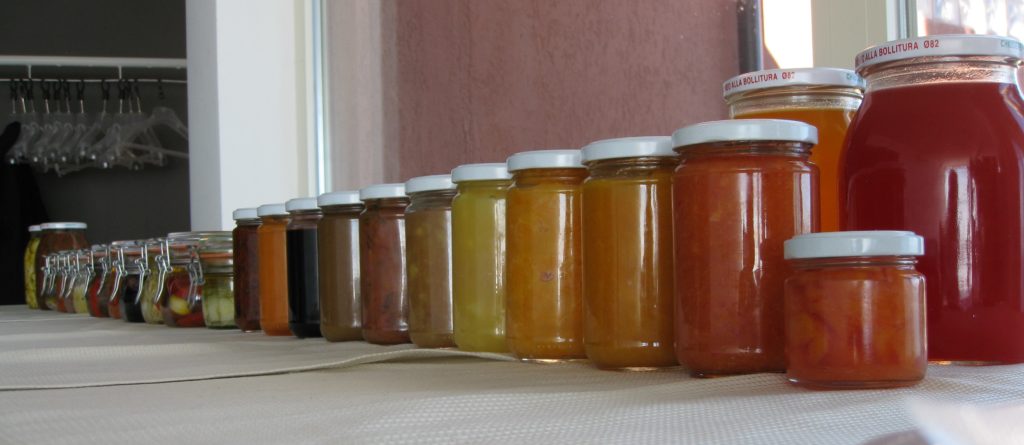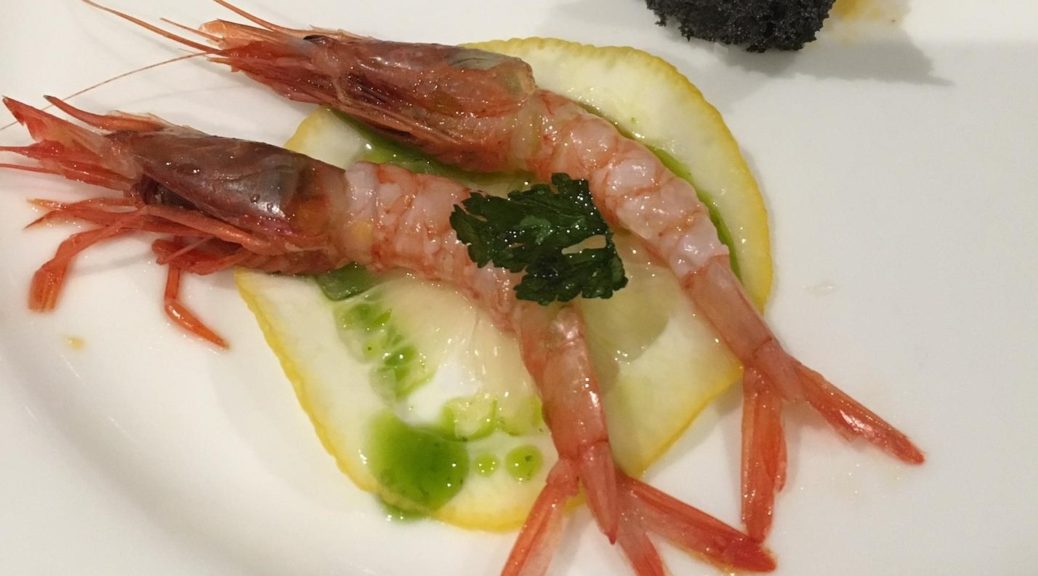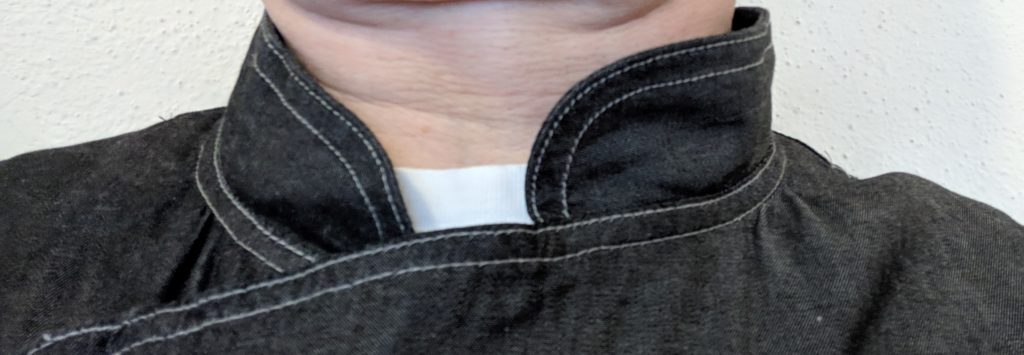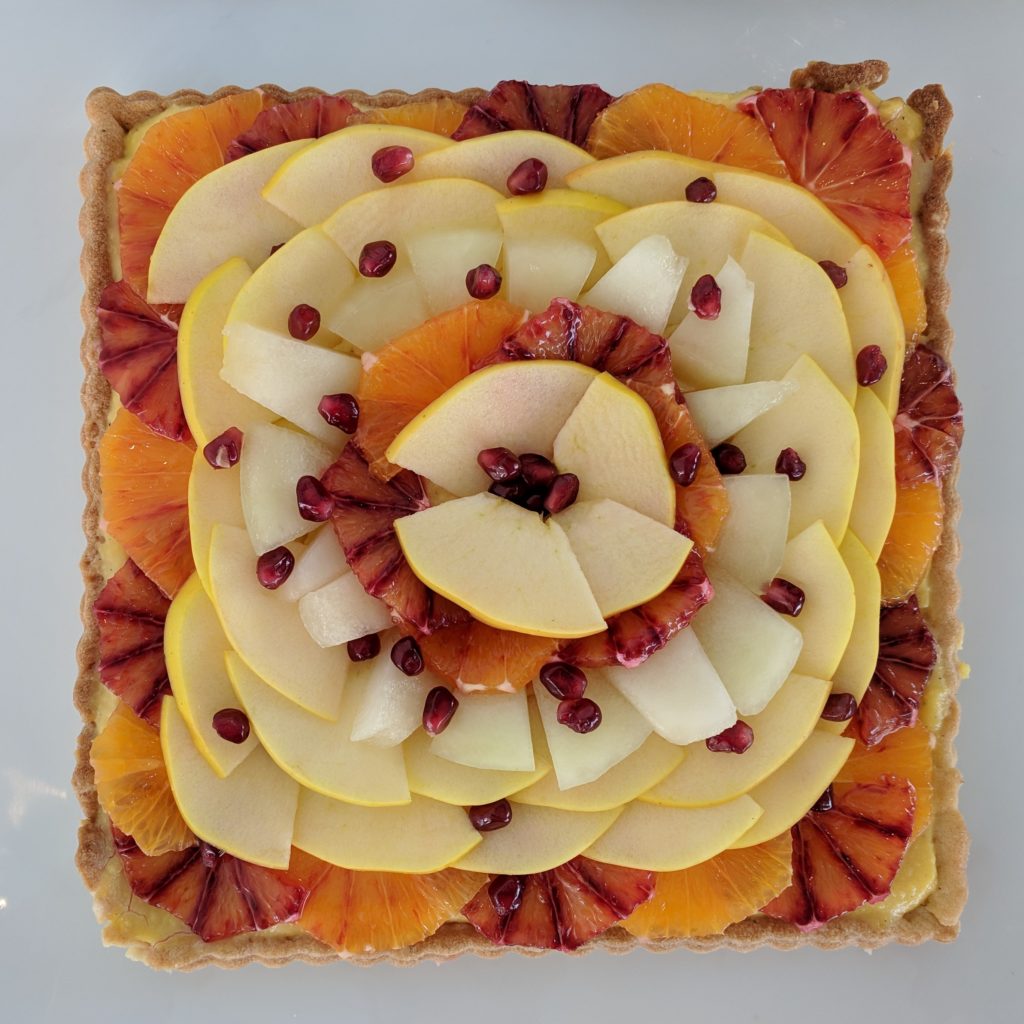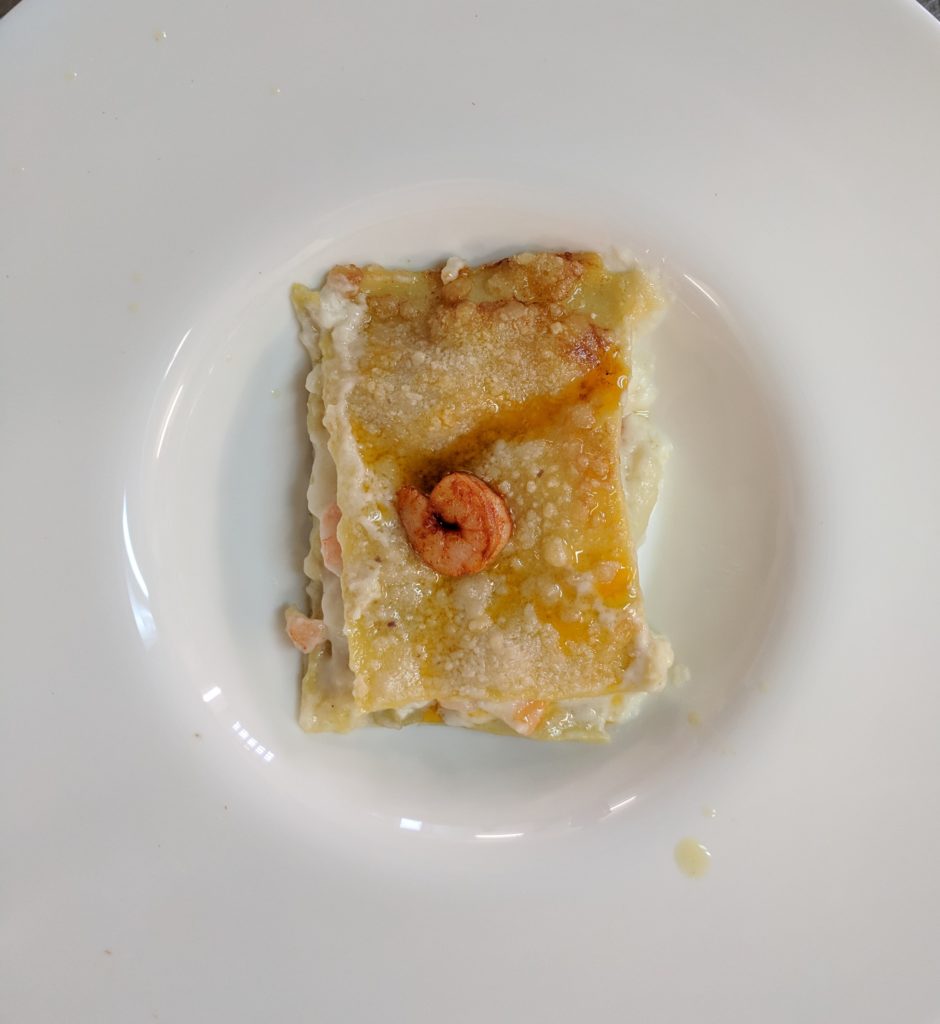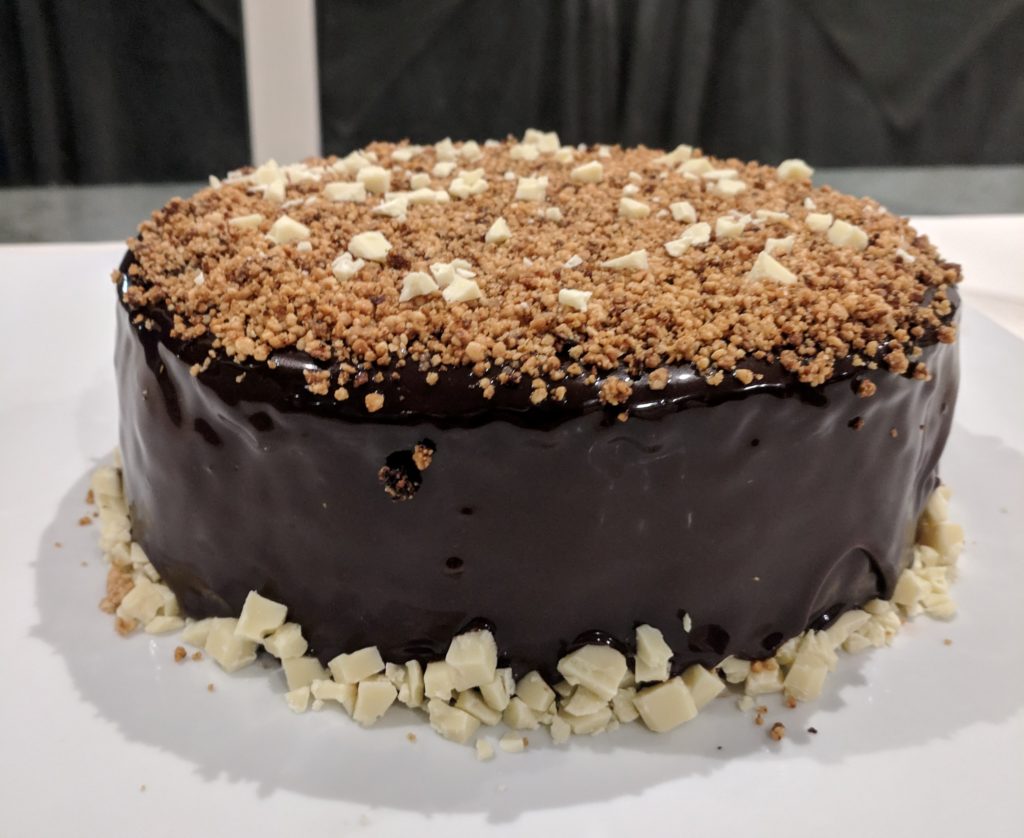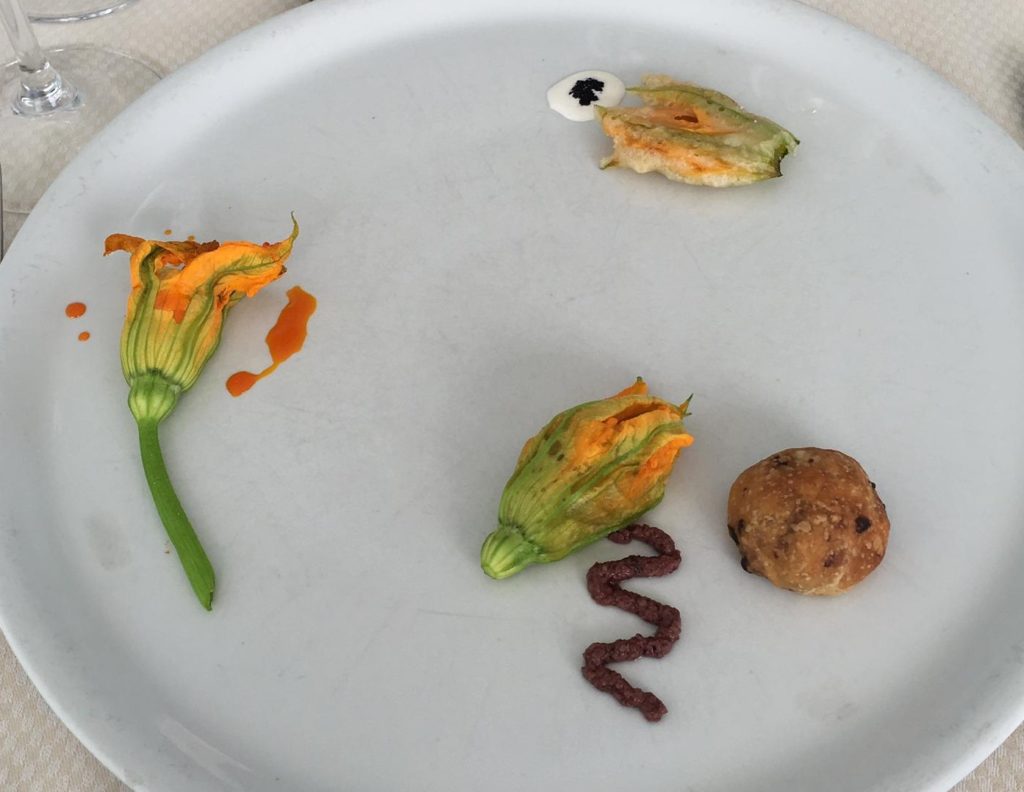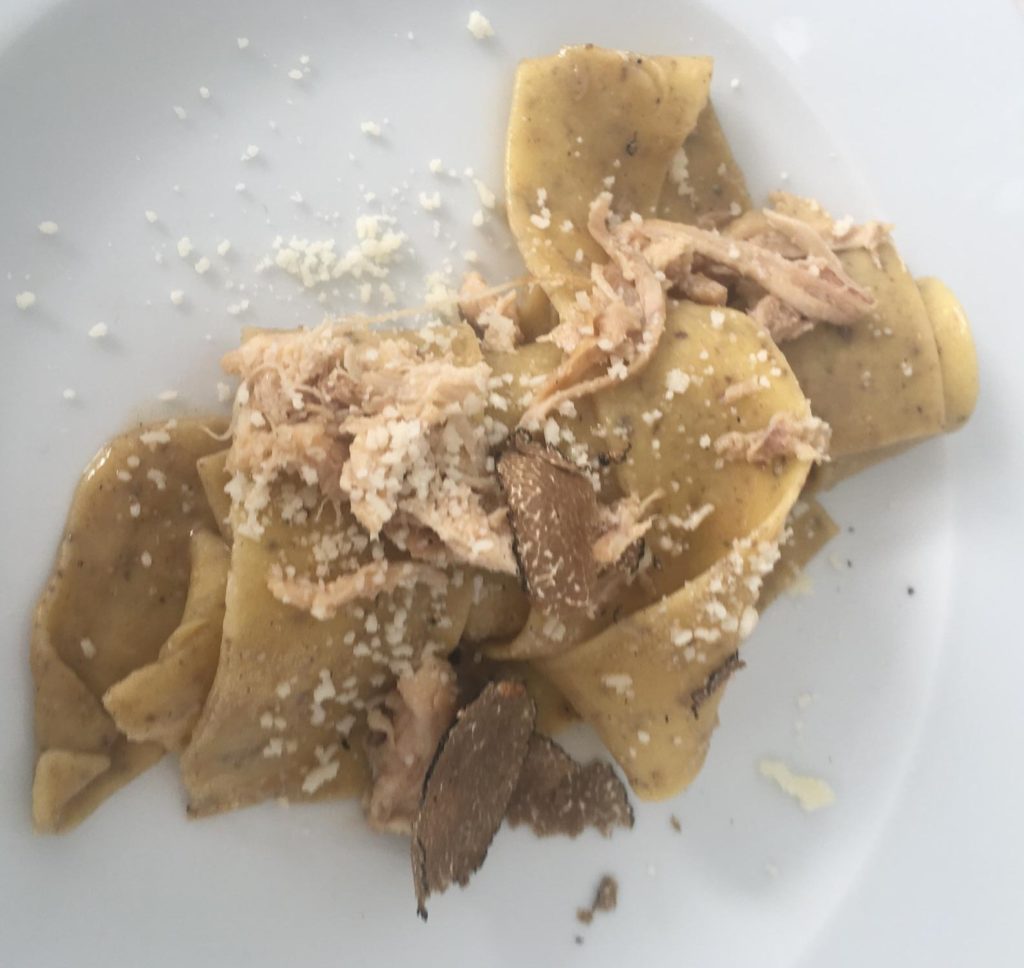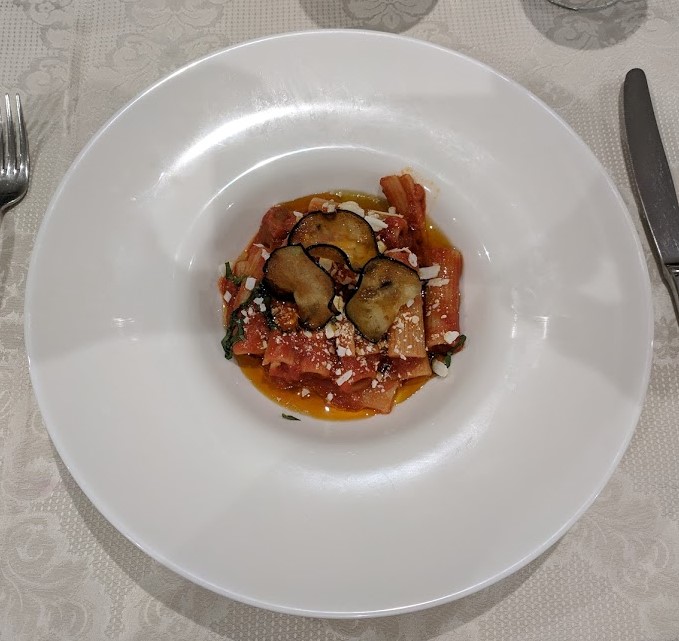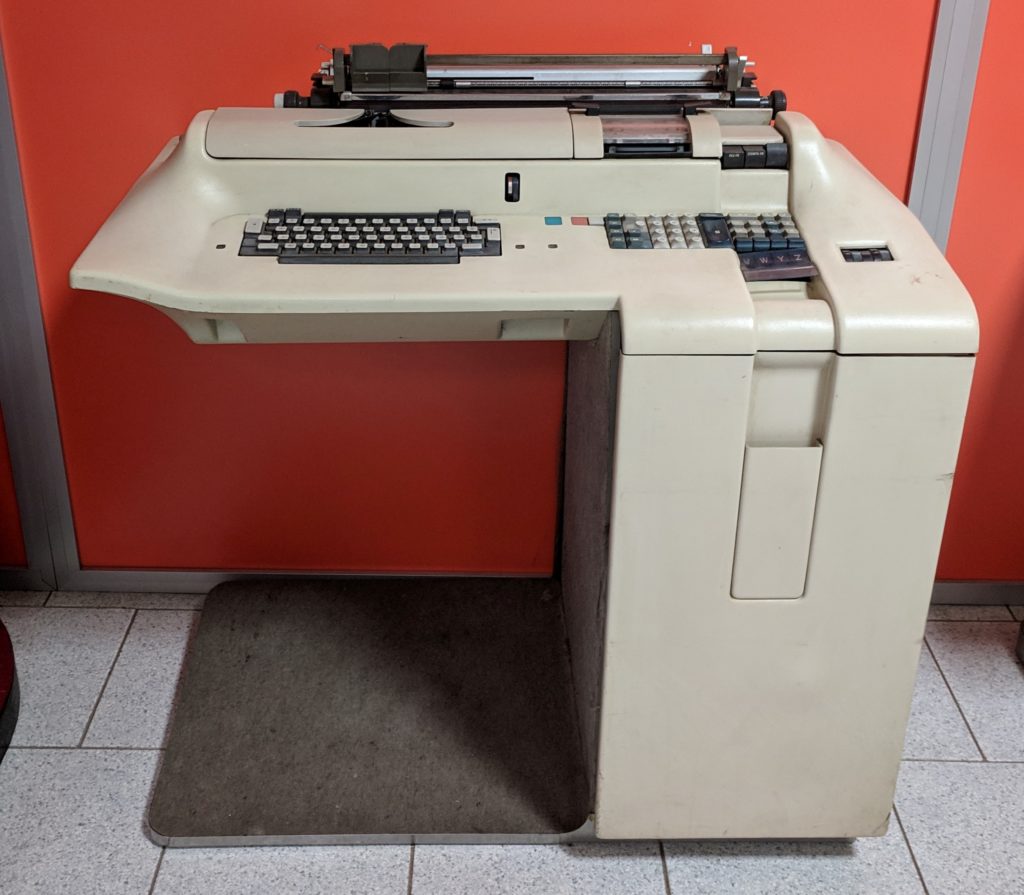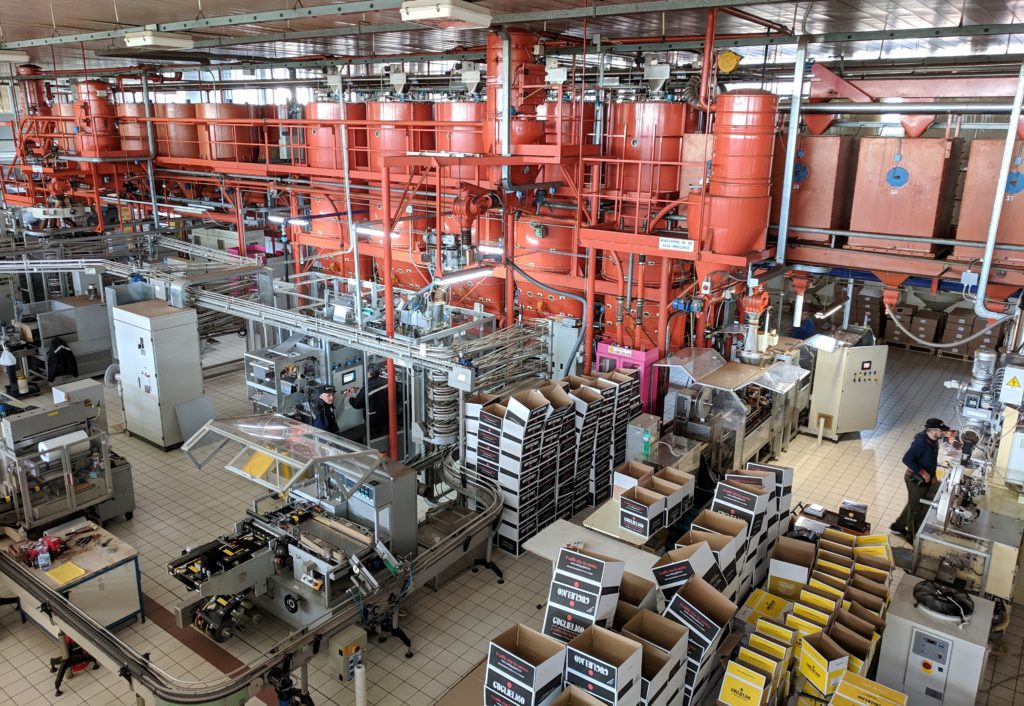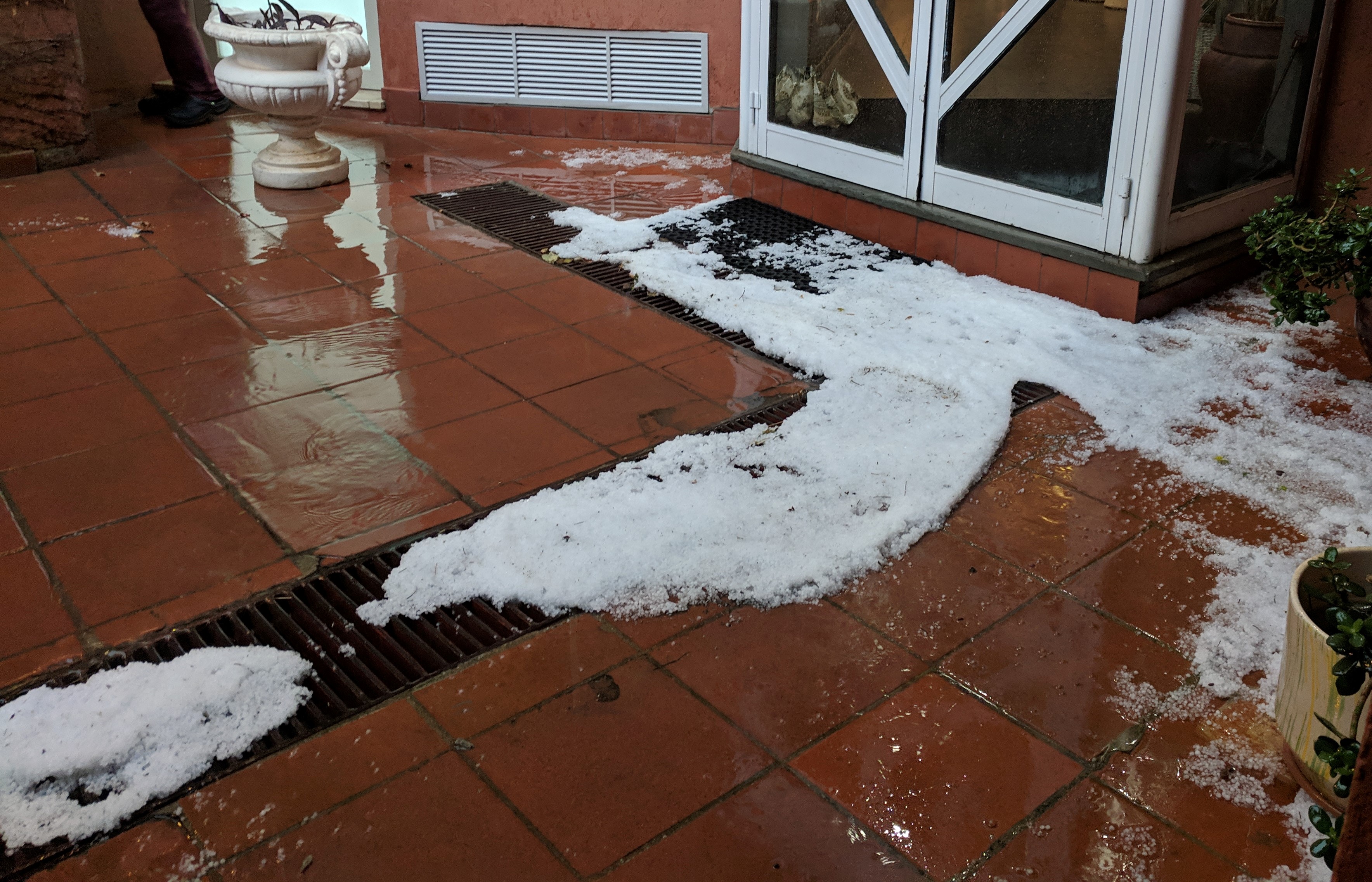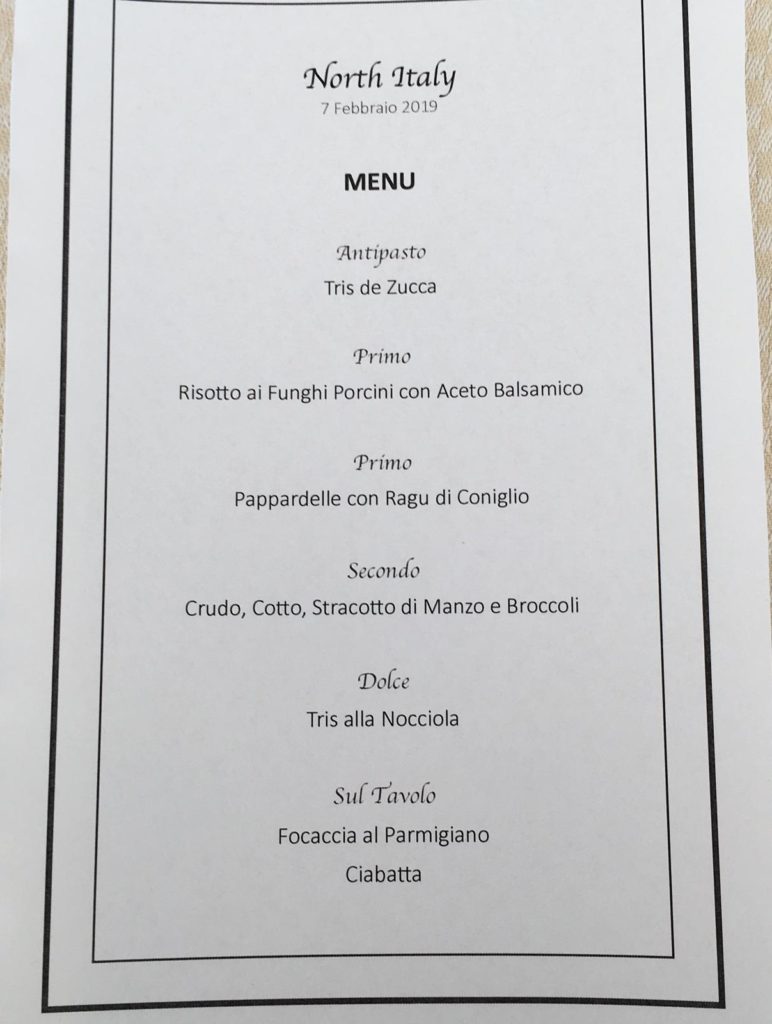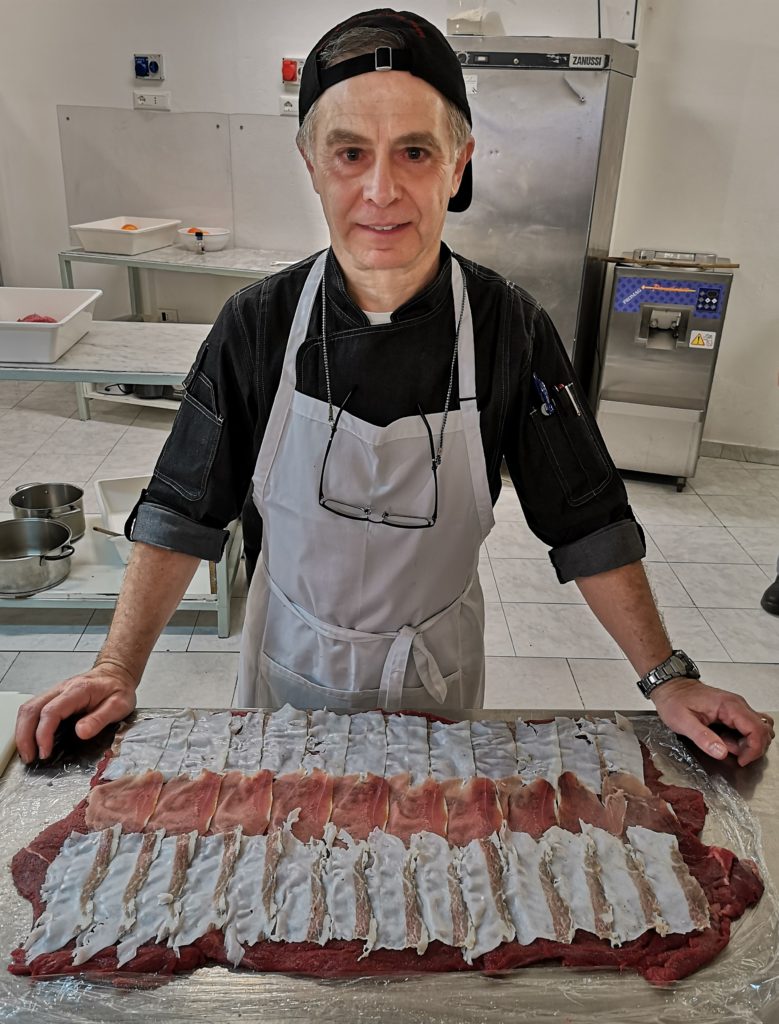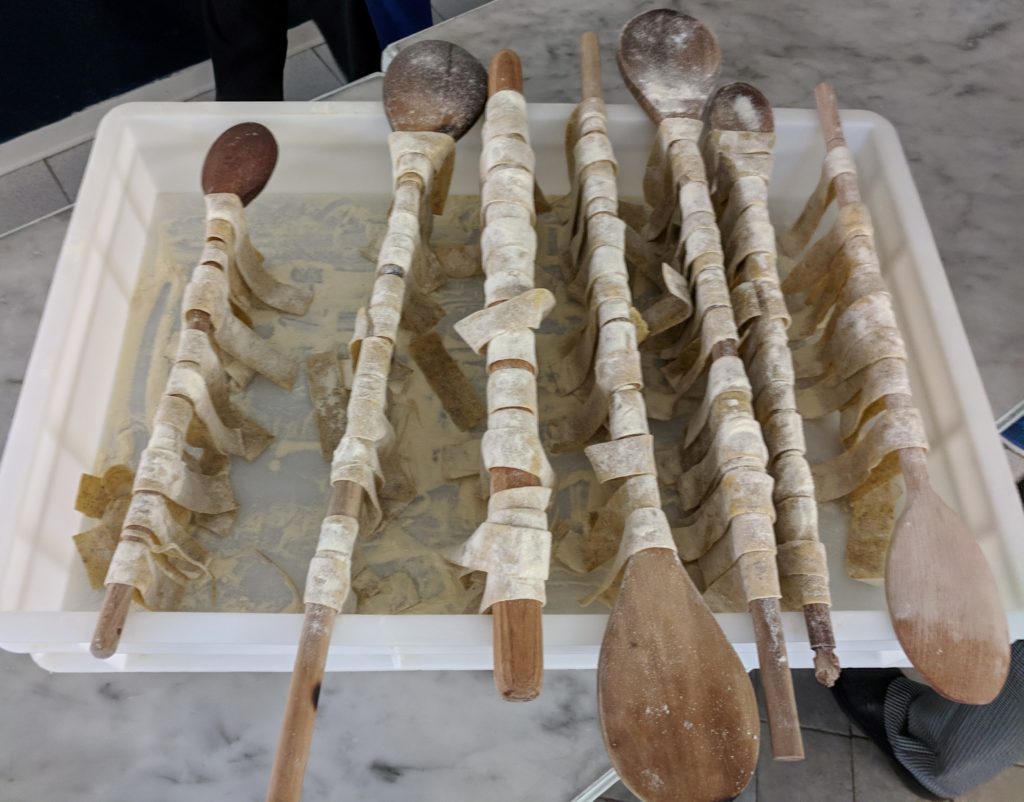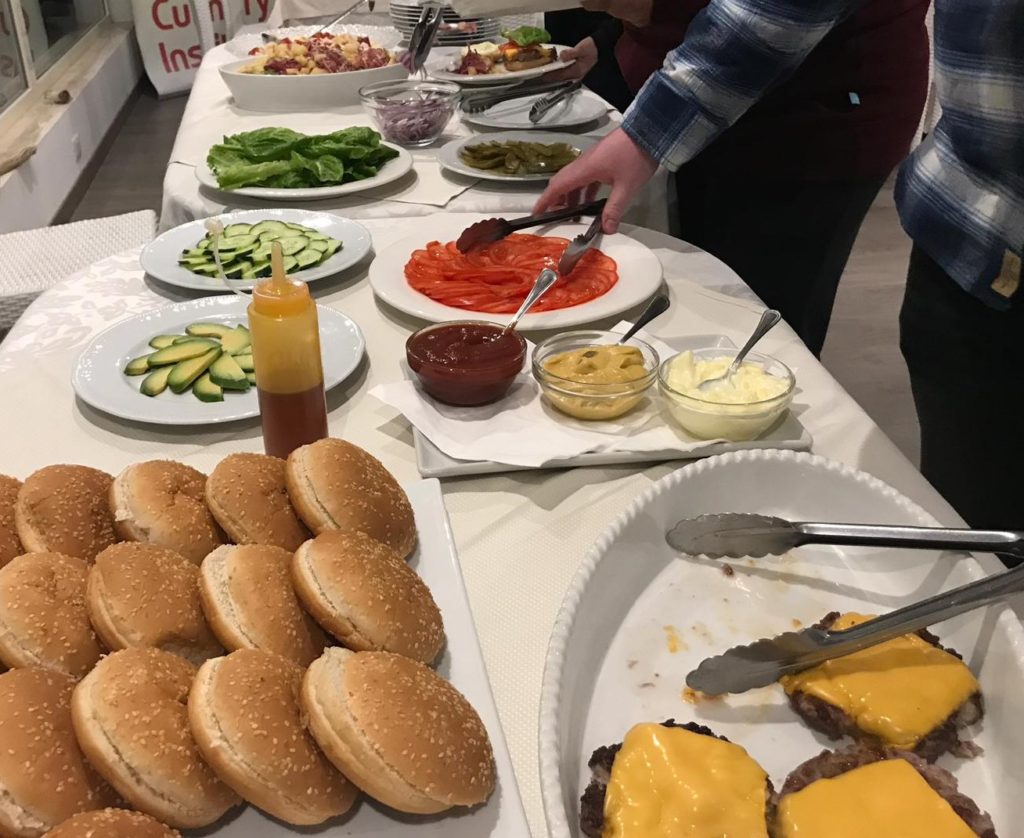April 8, 2019
Cheese Week started on Sunday, March 31st. But first, as has become customary when new people join us for a week, we went out for pizza the evening before. The pizzeria is Il Ghittone in Montepaone Lido, a nearby town. It’s the pizzeria that serves French fries and pizza…the one that has the automatic external defibrillator that I mentioned in a prior post!
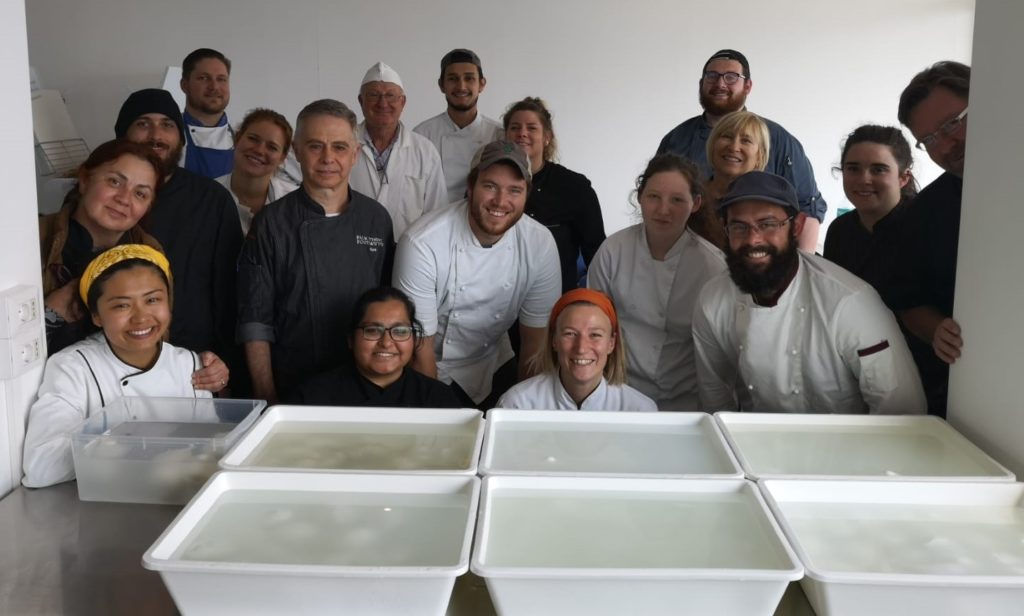
Pizza and French fries were child’s play compared the fat-and-cholesterol-laced week we were about to encounter.
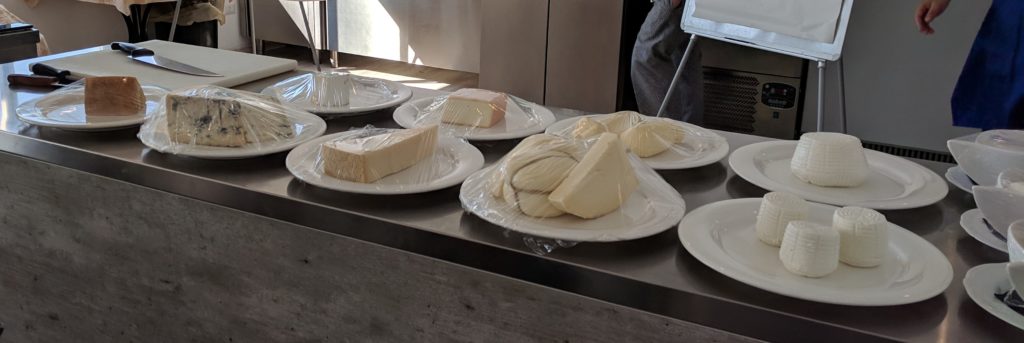
Sunday started out slowly. It was a day devoted to tasting Italian cheeses. It was meant to be an introduction to the coming week.
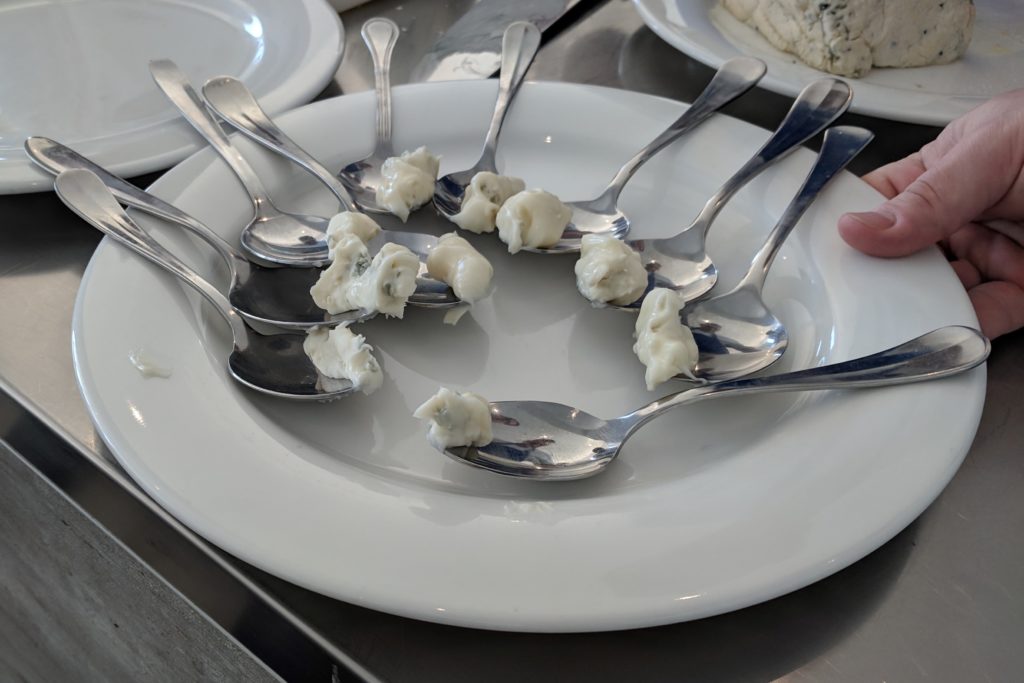
We tasted and discussed each of the following cheeses:
- Ricotta di Pecora (sheep’s milk ricotta) served with orange blossom honey
- Ricotta di Vacca (cow’s milk ricotta)
- Pasta Filata (pizza cheese) [Pasta Filata, in addition to being a cheese in itself, is also the name of an entire family of cheeses that includes numbers 4 through 9 below.]
- Fior di Latte #1 (essentially Mozzarella but made from cow’s milk so it’s not called Mozzarella in Italy)
- Fior di Latte #2
- Provola (not as aged as Provolone)
- Provolone Dolce (“sweet” Provolone, but aged more than Provola)
- Provolone Piccante (“spicy Provolone, i.e. aged longer)
- Burrata (fresh Fior di Latte or Mozzarella surrounding a center of shredded, Pasta Filata [called stracciatella] mixed with heavy cream)
- Burrino (sheep’s milk cheese surrounding a center of butter)
- Robiola di Vacca (much like American cream cheese but a bit softer)
- Stracchino
- Taleggio
- Taleggio with Mostarda
- Formaggio di Capra Semistagionata (partially aged [semistagionata] goat cheese)
- Grana Padana
- Pecorino Romano
- Pecorino Sardo
- Caciotta
- Gorgonzola Dolce
Between #13 and #14 we were served a snack of pizzette (mini pizza) with truffled pasta filata and mozzarella—just to fend off hunger (right!).
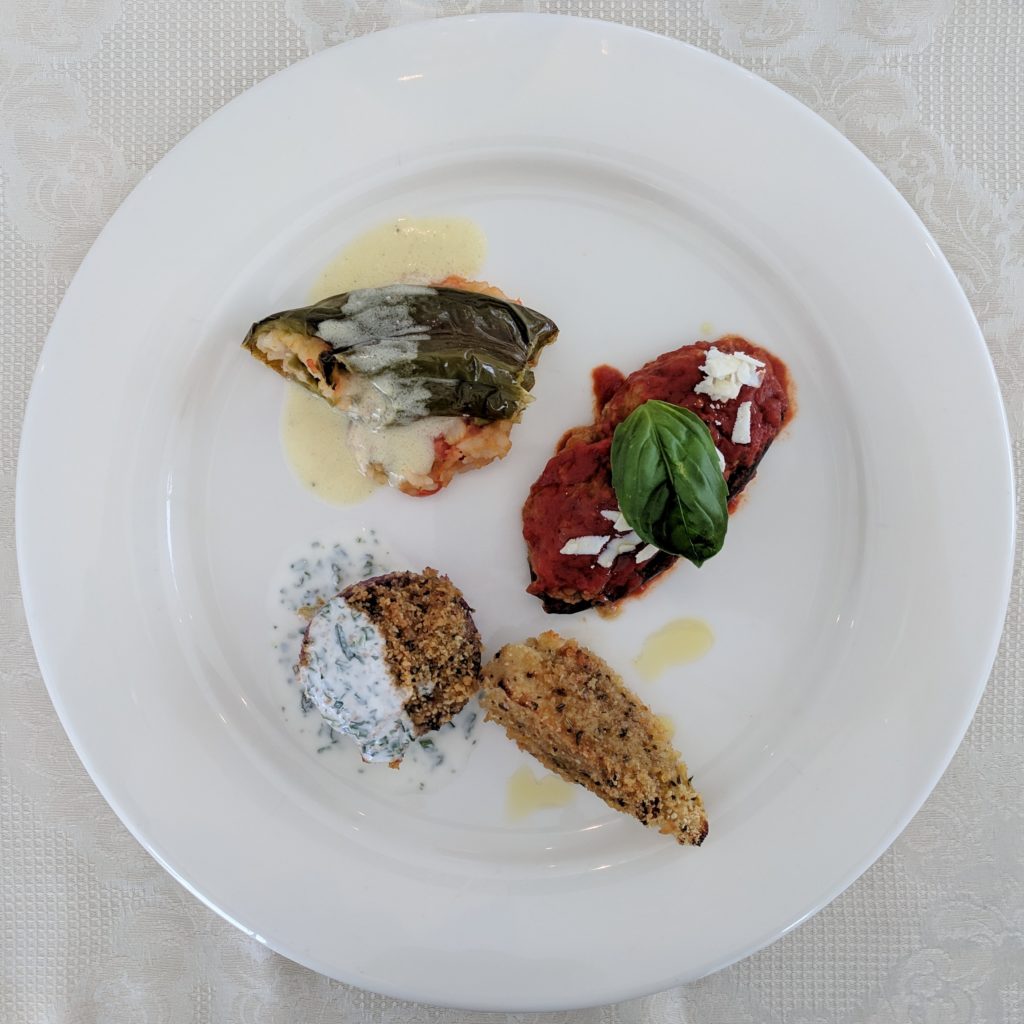
Mid-afternoon we had a cannoli-inspired “snack” made with sheep’s milk gelato (in place of ricotta) topped with chocolate chips, an unbelievable slice of candied orange (not orange peel, but a whole orange!), and a cannolo shell.
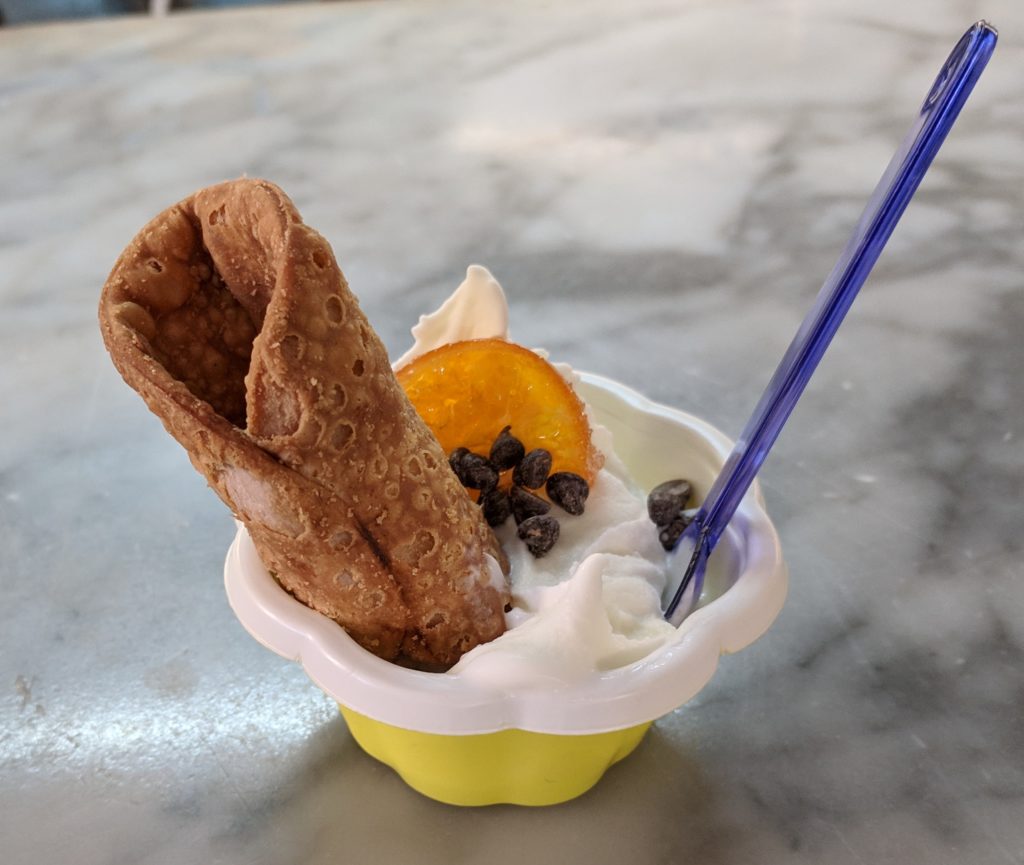
After the last cheese, we had a few hours to recover before having a cheese-inflected dinner. After a couple of statins and some red wine for the resveratrol it was time for bed.
Monday was a day of lectures by Yi-Chern Lee, a milk scientist and Product Manager for Fonterra in New Zealand. But first…Chef John wanted to feed us! We moved from the dining room, which had been set up as a lecture hall, to the kitchen where we were served polenta concia.
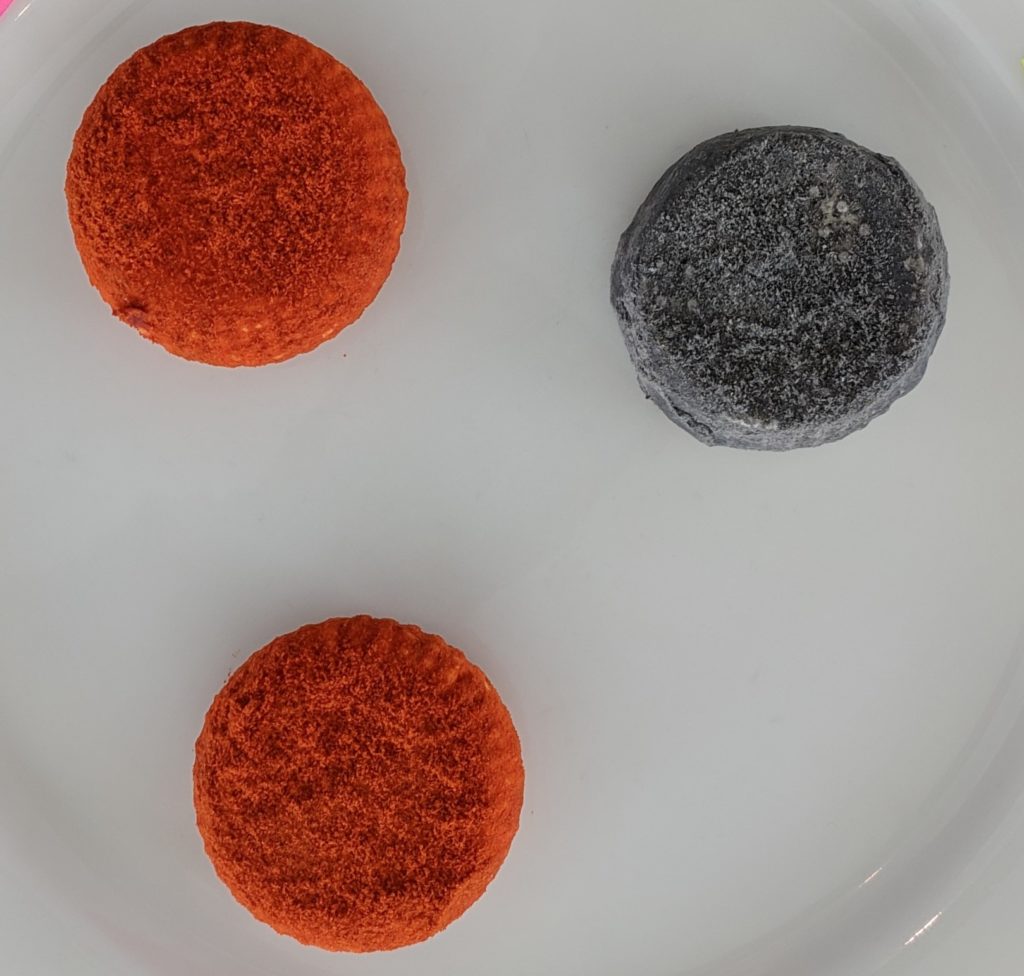
Chef John’s version of polenta concia was over the top and it was exactly the reason that I did not have breakfast before getting to class. I’m sure you’ve figured out by now that Chef John loves to feed people and loves to present them with new flavors. When Chef John is not teaching, as was the case on this day, he is more likely to use his time in the kitchen to whip up one dish after another for us. I figured we weren’t going to get far through the morning before food arrived so I skipped breakfast though I did have a doppio (double espresso).
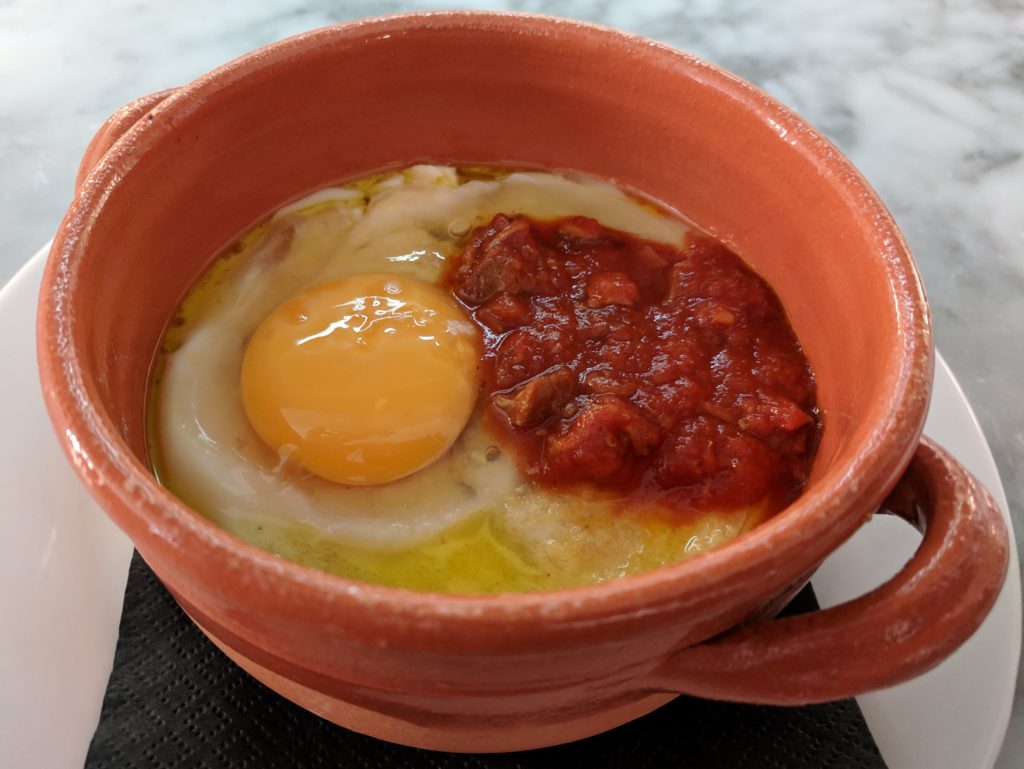
Chef’s rendition of polenta concia consisted of polenta with milk added for smoothness. After cooking it was mixed with Parmigiano Reggiano and porcini trifulata (sautéed and braised porcini mushrooms) and put into individual terracotta bowls with a splash or three of extra-virgin olive oil on the bottoms. An egg was put on each one after which they were baked and then topped with Lamb Ragu.
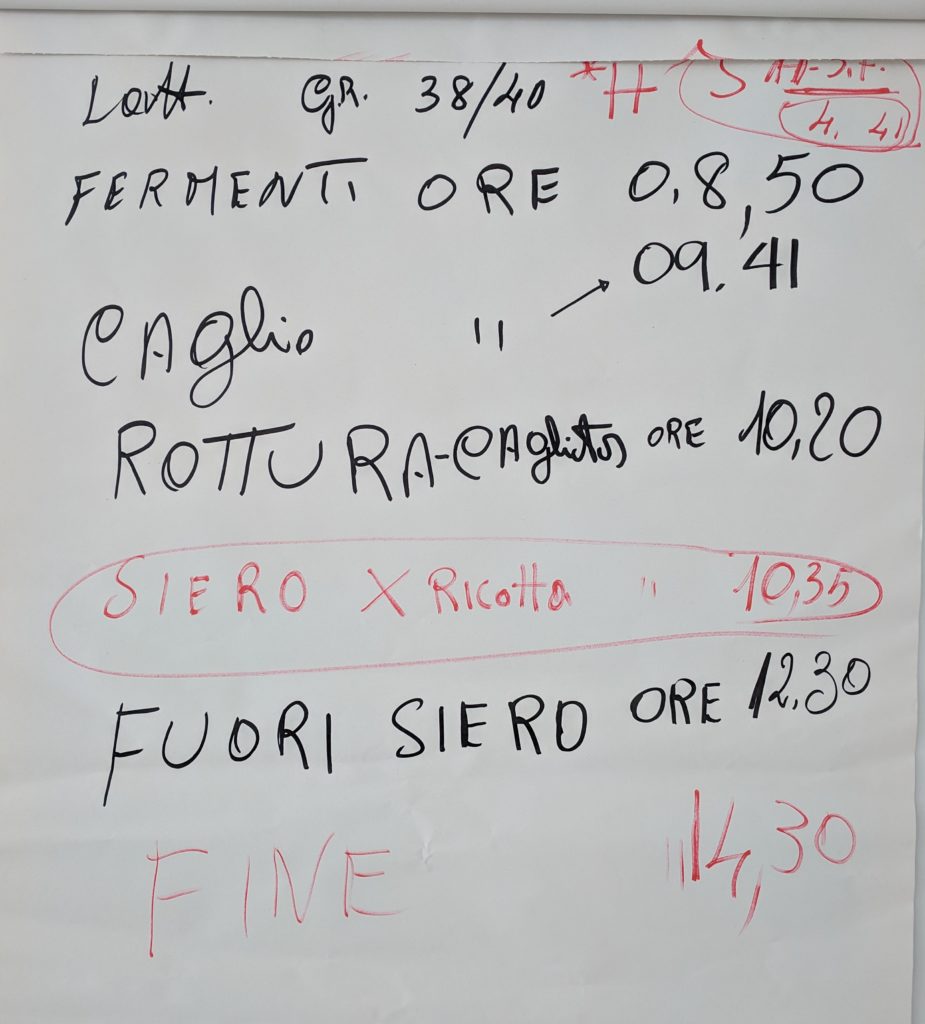
Appropriately fortified, until lunch, Yi-Chern started his lecture. He covered a lot of territory starting with the basic chemical constituents of milk from different animals and factors that affect milk and milk quality. Much of the day was devoted to discussing each of the possible steps in cheese-making. Not all of the steps are used for every cheese but we covered all of the possibilities. I have 12 pages of notes from his lecture.
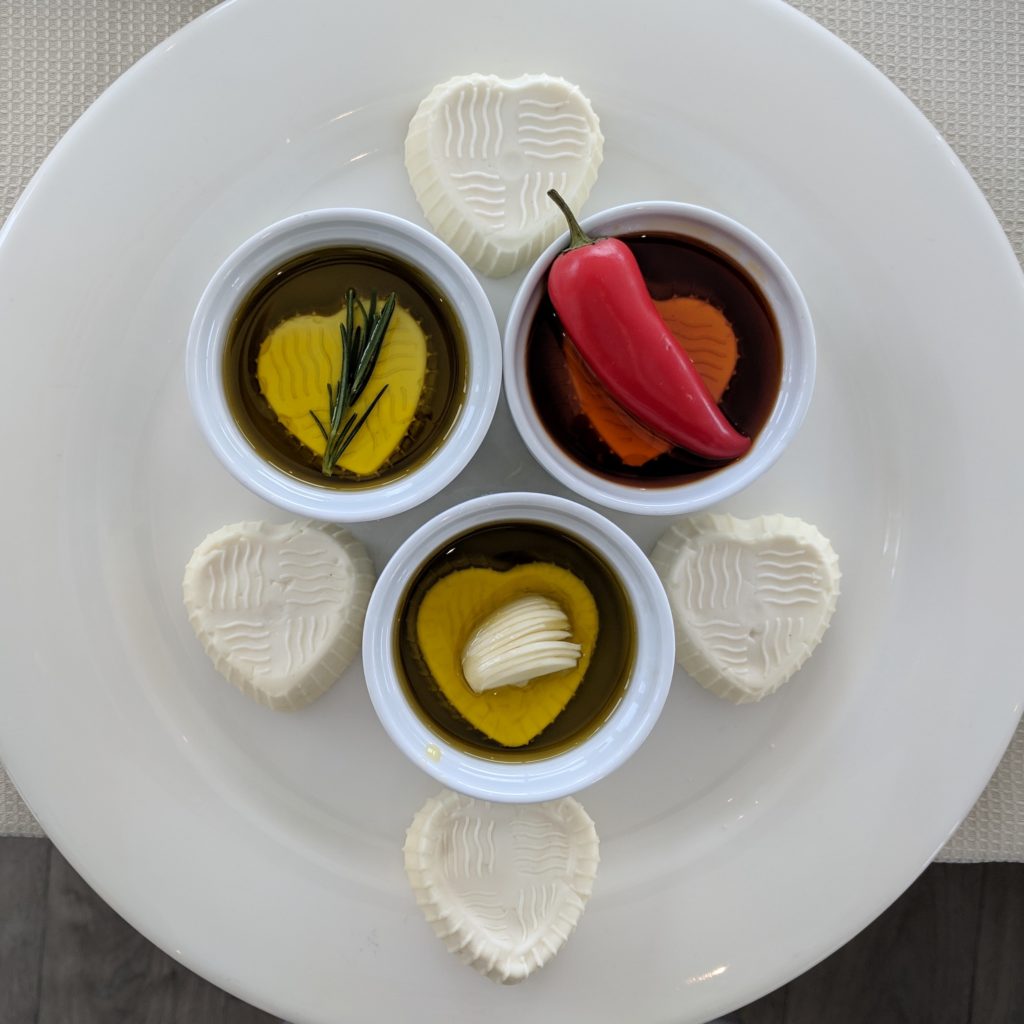
The next day, Chef John demonstrated one of many possible ways to make cow’s milk ricotta. It is pretty much identical to the method I have been using though I learned a few tricks about how to keep it creamy should one want it creamier rather than drier. It’s called direct ricotta in that it is made directly from milk.
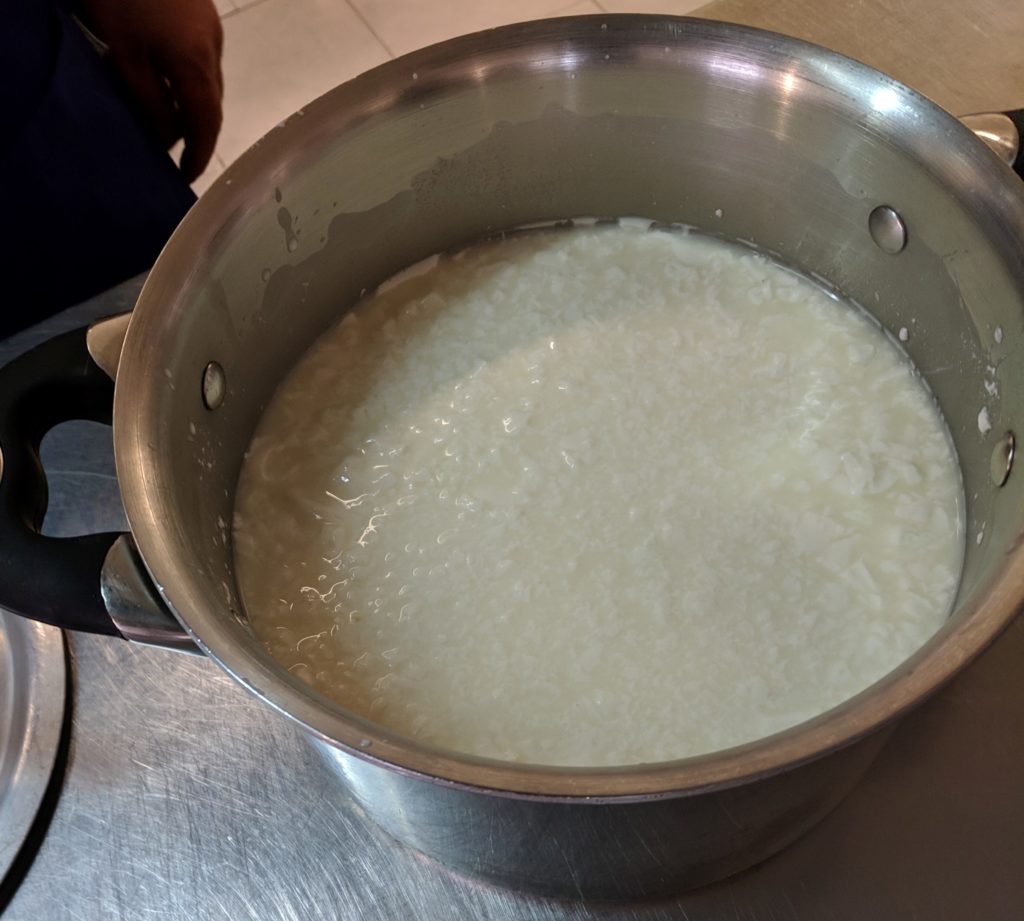
Traditionally ricotta is made from the whey left over from cheese making. The whey is acidified and heated which causes that last bit of protein to coagulate forming ricotta. The yield is very low so unless you are producing cheese on a very large scale it is not practical to make ricotta using this method alone.
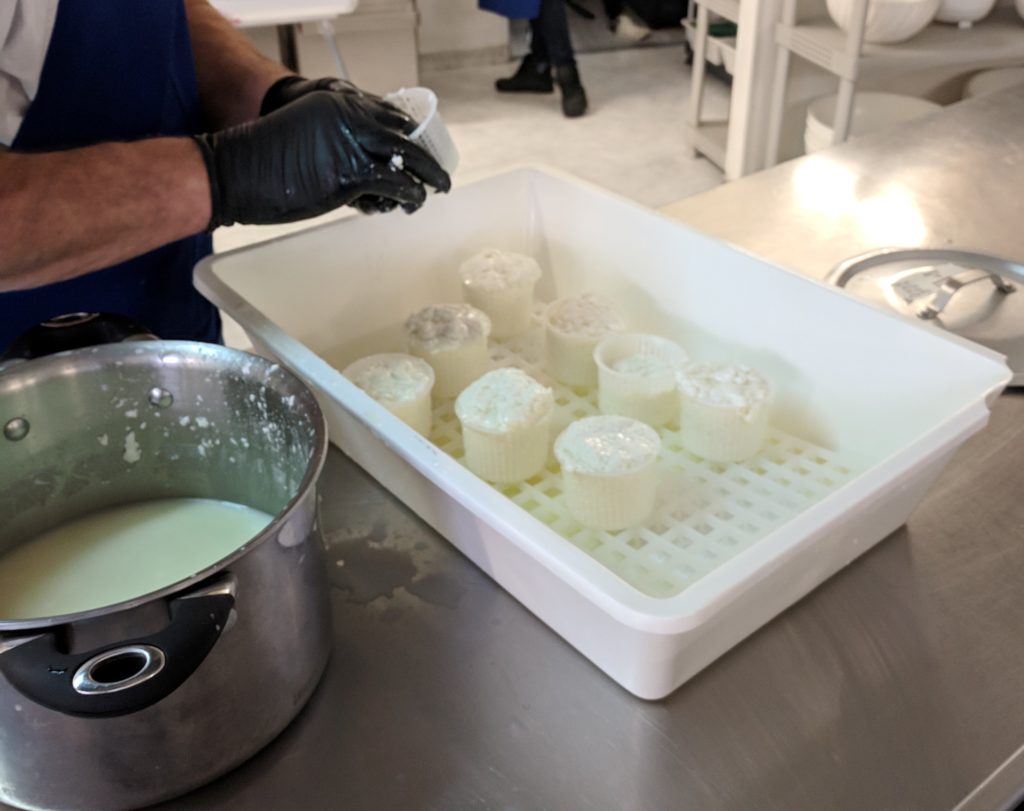
After the cow’s milk ricotta, the rest of the day was devoted to making sheep’s milk cheeses and other dairy products, including:
- Yogurt
- Buttermilk
- Tomini di Pecora (of the following varieties):
- Calabrese
- Sardo
- Fossa
- Toscano
- Luinese
- Pecorino Romano
- Pecorino Tartufo
- Piacentum Ennese (with saffron)
- Pecorino with Oregano and Peperoncino
- Pecorino with Green Olives
- Canestrato
- Pecorino Porcini
- Pecorino with Arugula, Roasted Black Olives, and Sun-dried Tomato
Wednesday was devoted to learning to make ricotta and mozzarella from Maestro Salvatore Postella, who has been making mozzarella by hand for nearly 50 years. He says his largest production was a day when he made 6000 balls of mozzarella…and not those tiny little things, either!
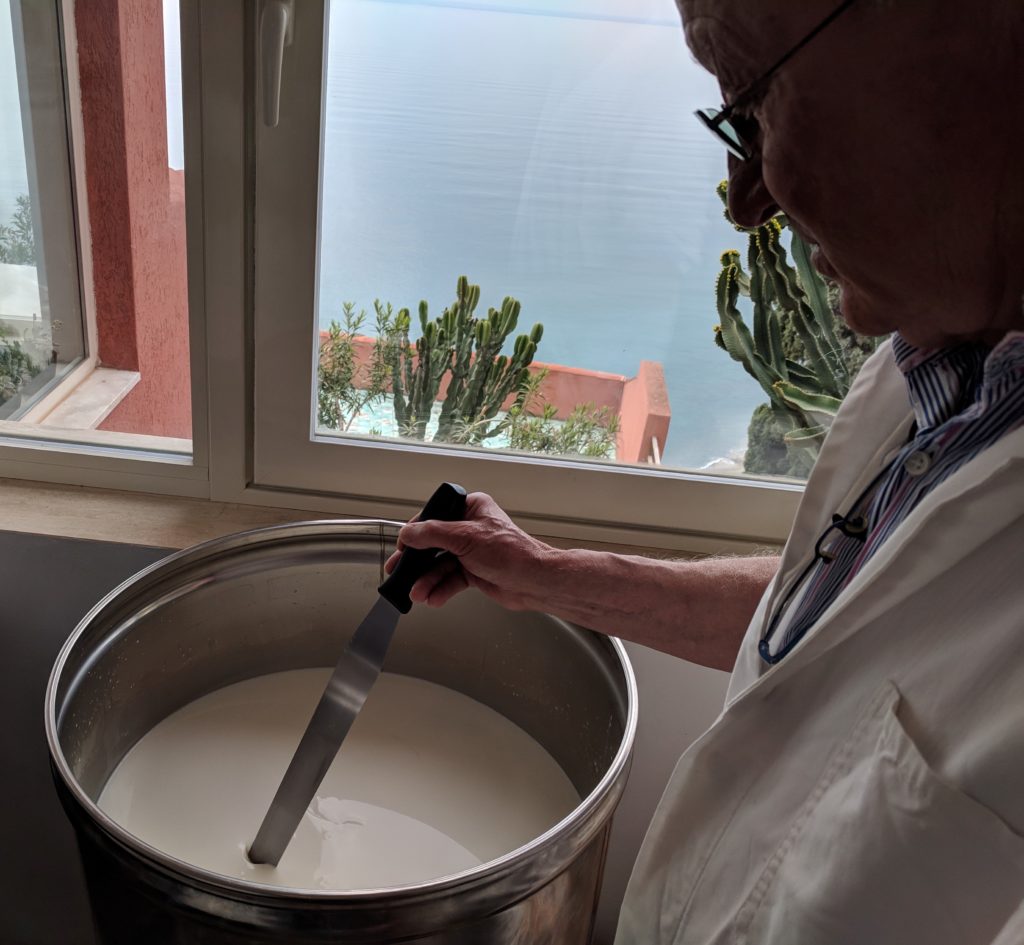
We started the process at the beginning by heating 100 liters of fresh cow’s milk. Technically, this is fior di latte, not mozzarella, since it is made with cow’s milk instead of water buffalo’s milk. The milk needs to be heated, starter cultures added then rennet added, curds cut in large pieces, curds cut in small pieces, curds matured in the whey, curds drained and formed into a large block, block of curds cut into small pieces, curds heated with water at 90°C (194°F) to pasteurize them and to work them until stretchy before forming into mozzarella balls.
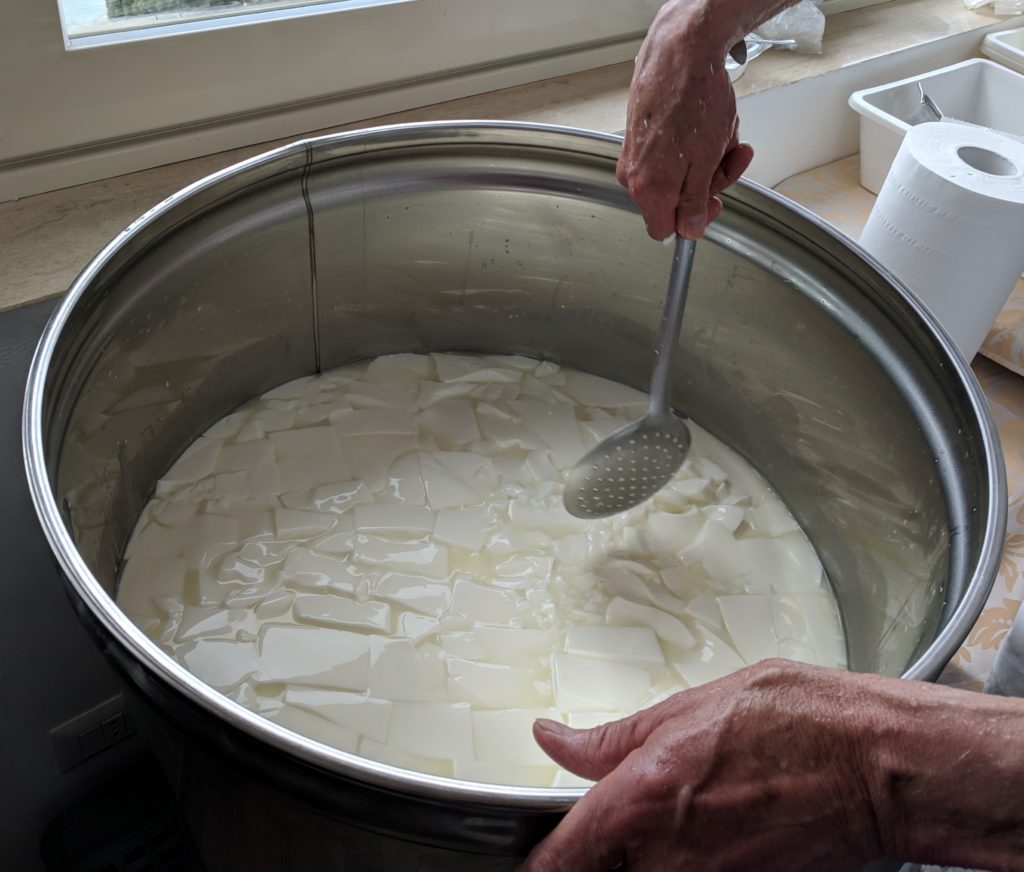
Working mozzarella means putting your hands into water that is close to 194°F! At my house in Santa Fe, water boils just below 198°F. Imagine putting your hands in that!!
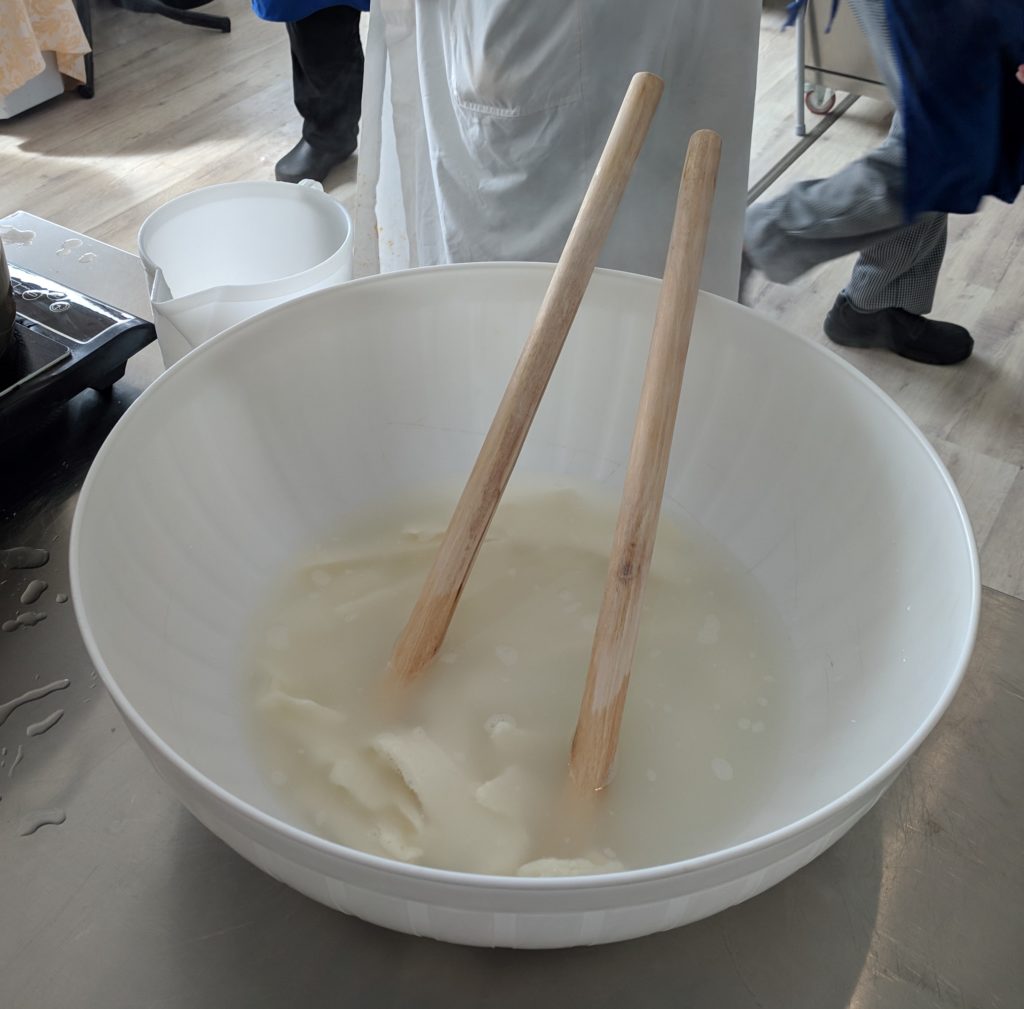
Now visualize making 6000 balls of mozzarella on the same day!
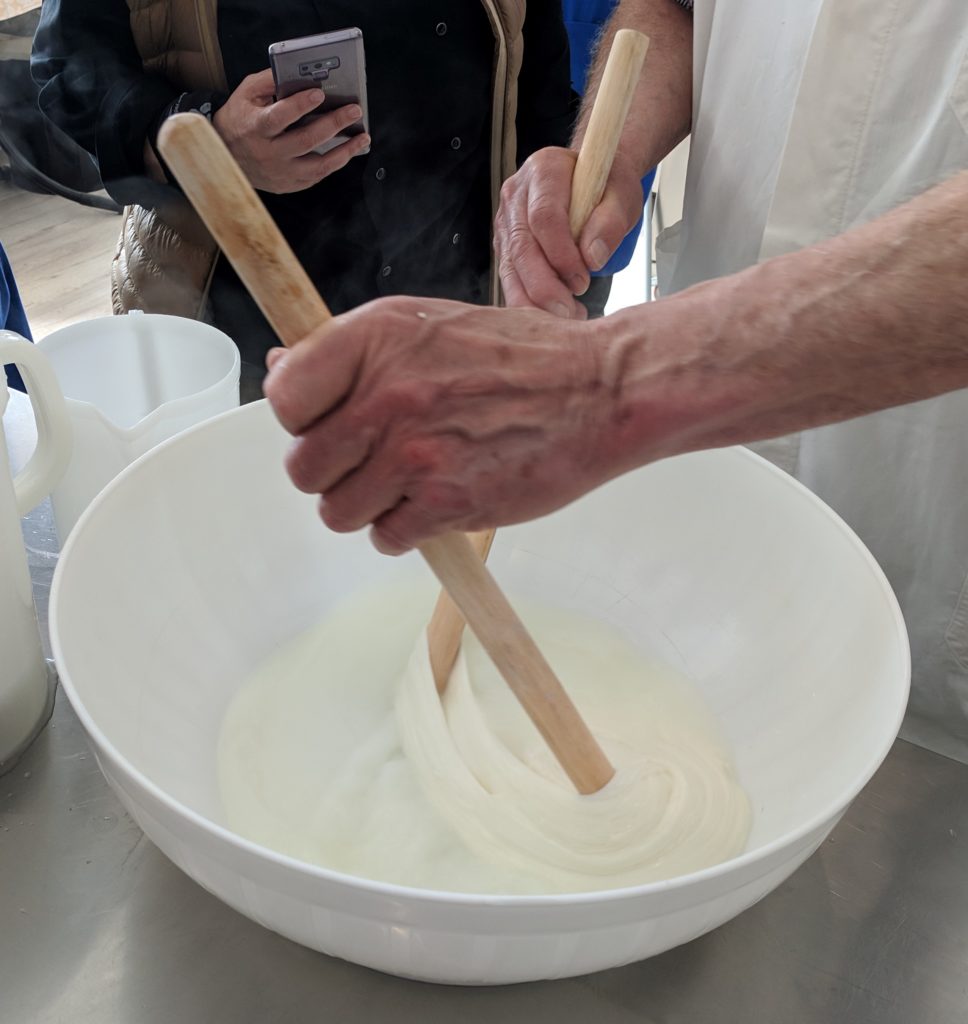
In any case, Maestro Postella is amazing. The beauty of his movement with just a gentle flip, then almost caressing the curd followed by three small twists and he’s formed a ball of ethereal mozzarella. Ours, on the other hand were like baseballs! But, hey, he’s done this for 50 years. Besides, continuing to work the cheese takes it from mozzarella territory to pizza cheese to provola.
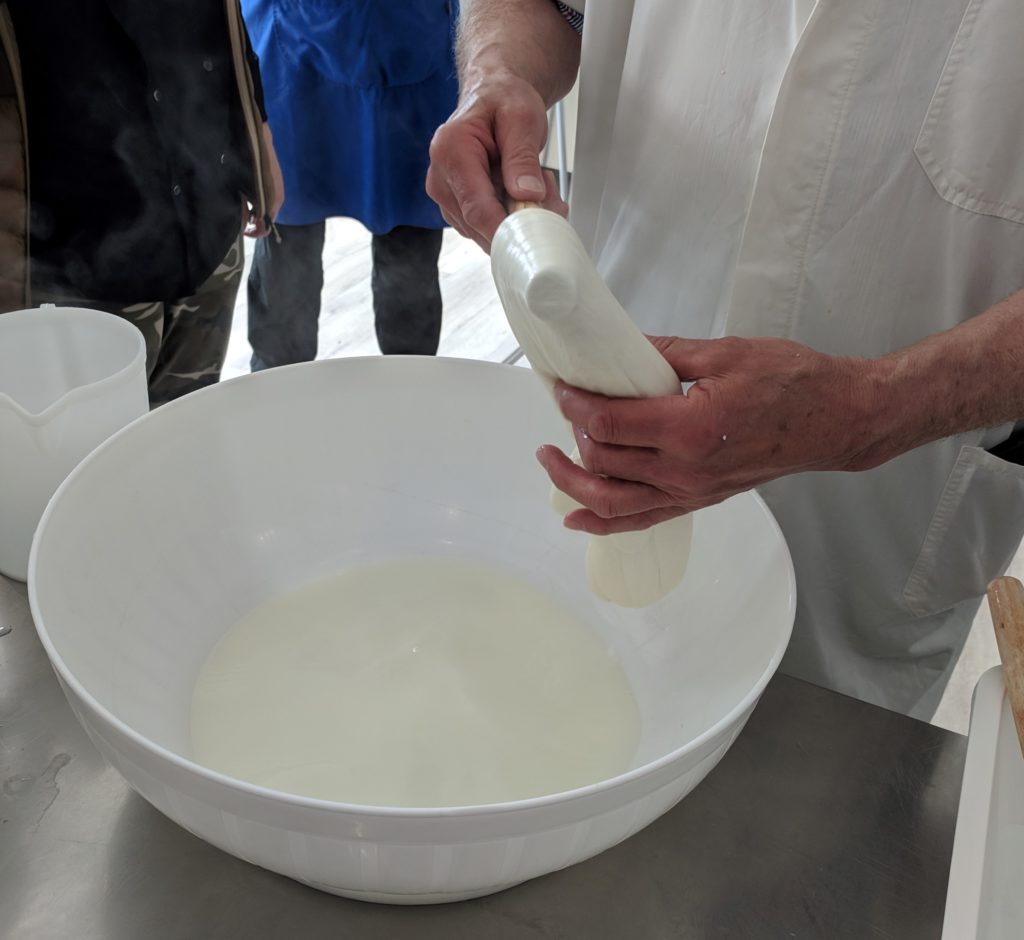
After doing a “play” mozzarella when Maestro Postella invited us to try with the odd bit of curd, I decided to make provola when we were each given an actual portion of curd to work later in the day. The “play” mozzarella coupled with my experience trying to form mozzarella back at the beginning of the course (in January) convinced me that one or two more attempts wasn’t likely to gain me more skill. I decided to try to make something where the extra working of the curd was actually a requirement. Getting some pointers on making provola could actually be helpful in the future if I decide to delve more into cheese making.
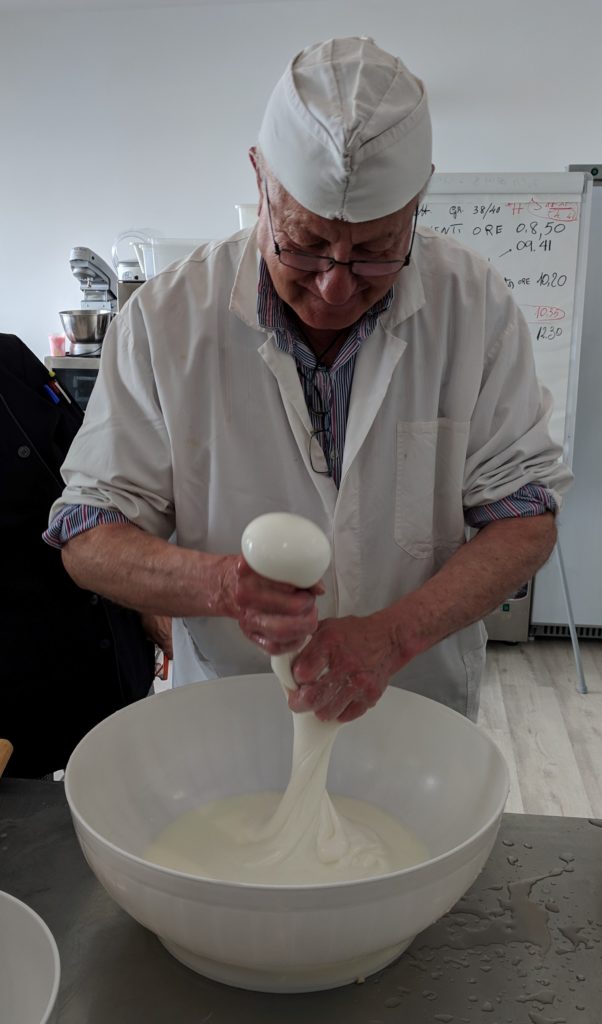
The next day, Chef John demonstrated the difference between mozzarella made by Maestro Postella and mozzarella made by us by breaking one of each open. Ours just couldn’t compare. His was light, fluffy, and still oozing with liquid, just like good mozzarella should. Ours really was pizza cheese!
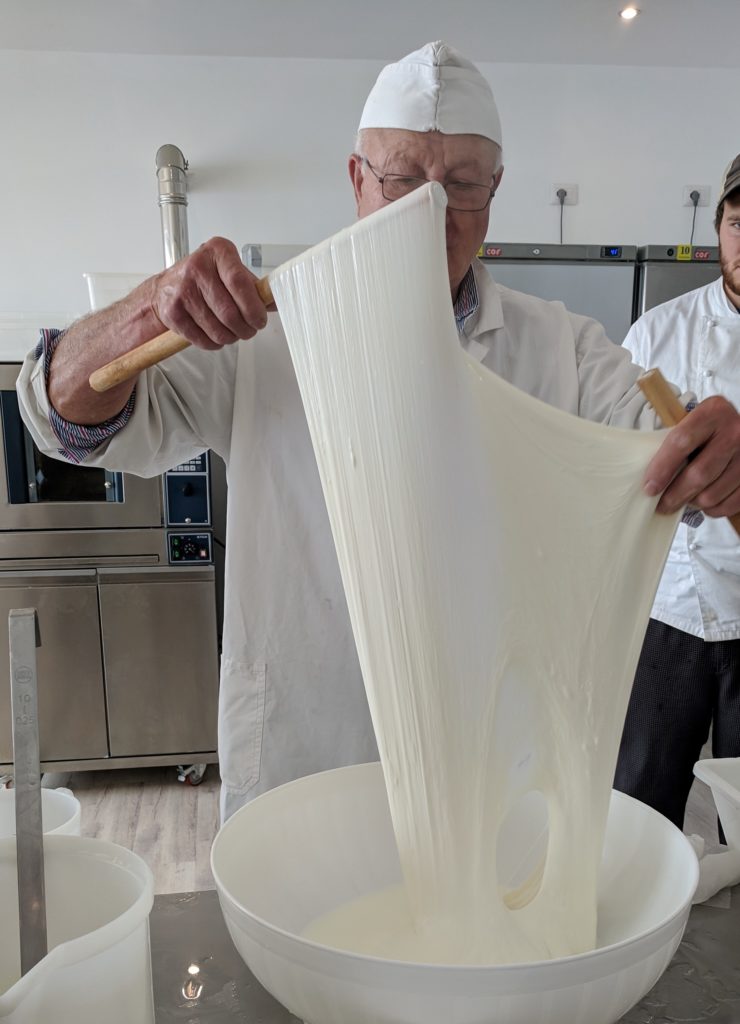
When Chef John pulled a provola out of the bowl of “our” cheese, he asked the kitchen staff (in Italian) who had made it. (I did.) The answer came back in Italian and was never uttered in English. He said that it was well formed and of the right texture. I felt pretty good about that!
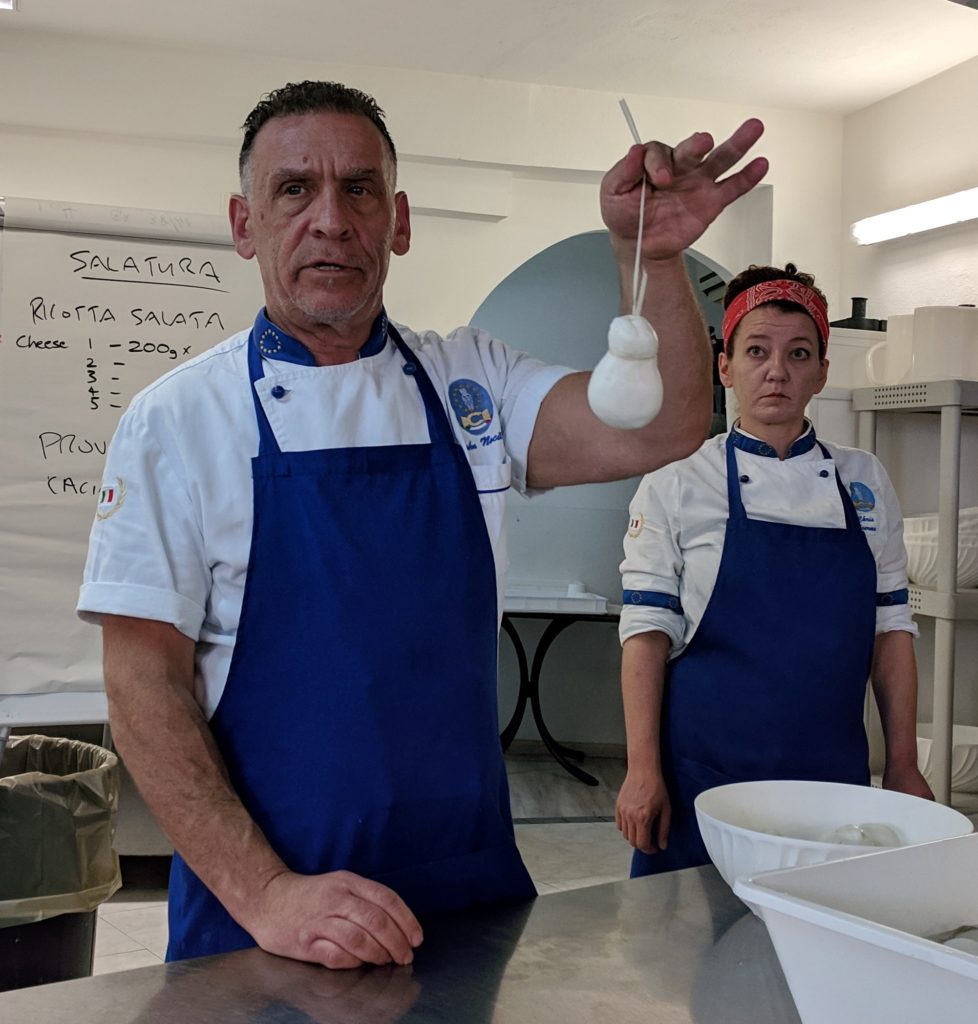
But back to Wednesday. Maestro Postella made burrata, for which several of us shredded pasta filata to make stracciatella. He also made ricotta starting with the whey from making curd for mozzarella. As noted above, this is the traditional way to make ricotta, which means re-cooked. Maestro Postella used a hybrid method, whey for acidification but with the addition of milk to provide enough protein to make a reasonable quantity of ricotta.
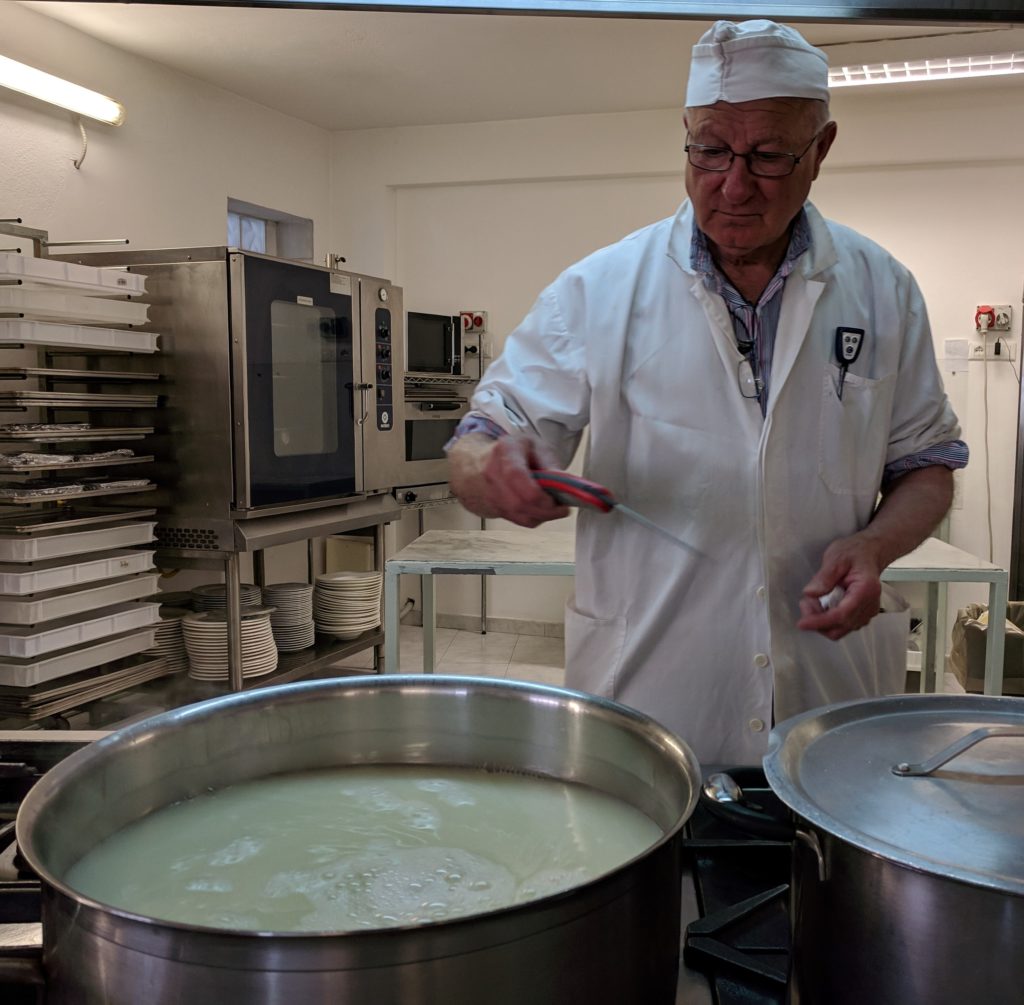
Ricotta is made by taking whey (or whey and milk or milk and cream), heating, and then adding an acid such as lemon juice or vinegar to cause the proteins to coagulate. It squeezes the last little bit of cheese out of whey that has already been used to make a primary cheese. You would imagine from this, and you would be right, that way-back-when ricotta was the food of the poor. No longer…obviously!
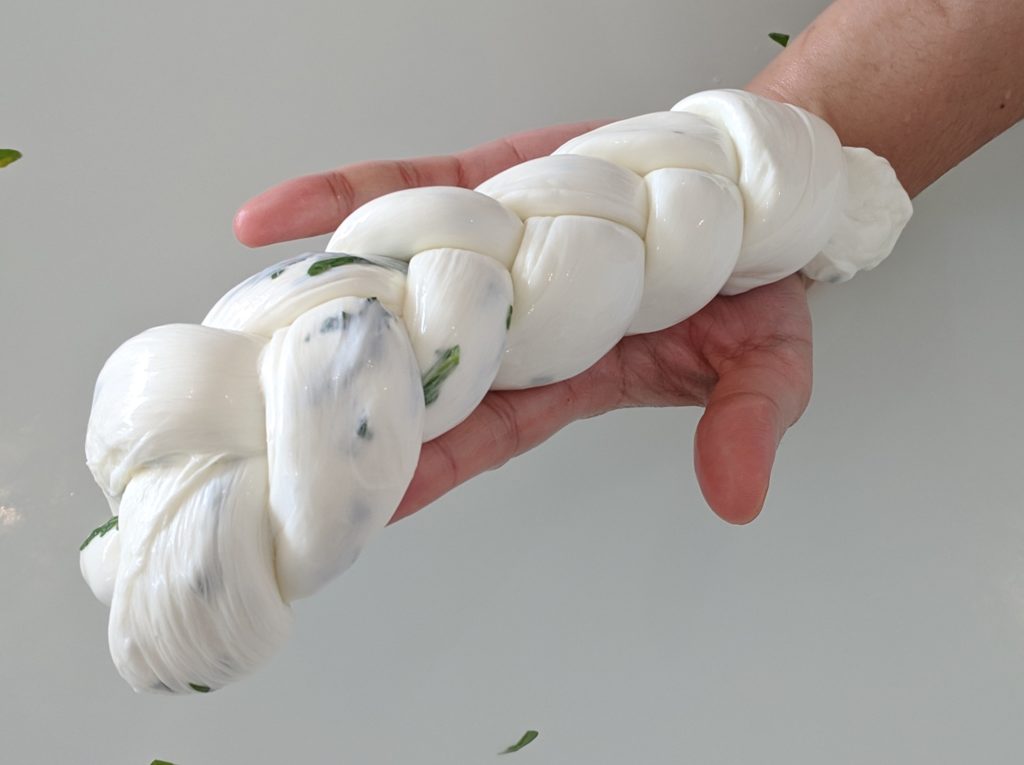
On Thursday we started out learning about different ways to salt cheese. The rest of the day was devoted to the making of cheese and other dairy products from cow’s milk, including:
- Caciotta
- Stracchino
- Camoscio
- Mascarpone
- Taleggio
- Gorgonzola Dolce
- Cream Cheese (American)
- Ricotta Salata
- Caprino (a fantasy cheese made from goat and sheep’s milk)
- Grana (type)
- Fontal (type)
- Crème Fraiche
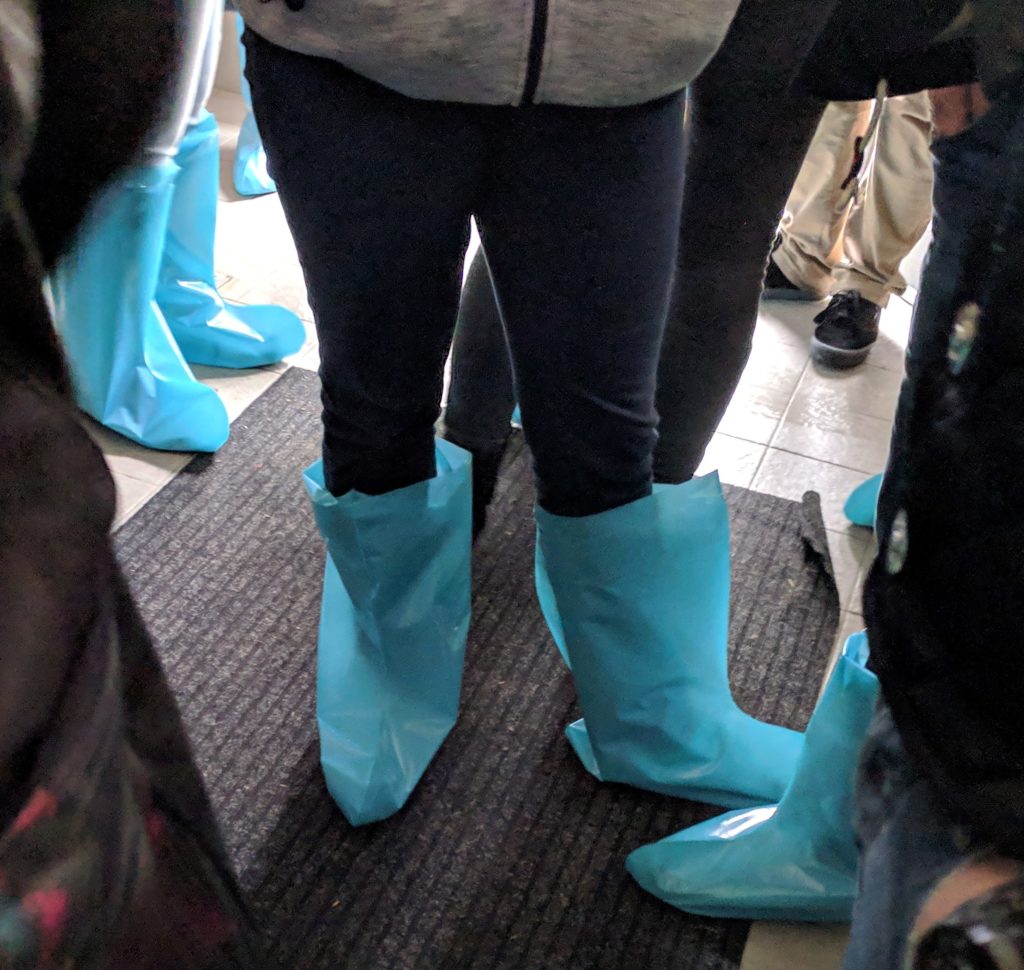
Cheese Week wound down on Friday with our last visit to the open-air market in Soverato followed by a visit to an artisan producer of buffalo mozzarella and sheep’s milk cheeses.
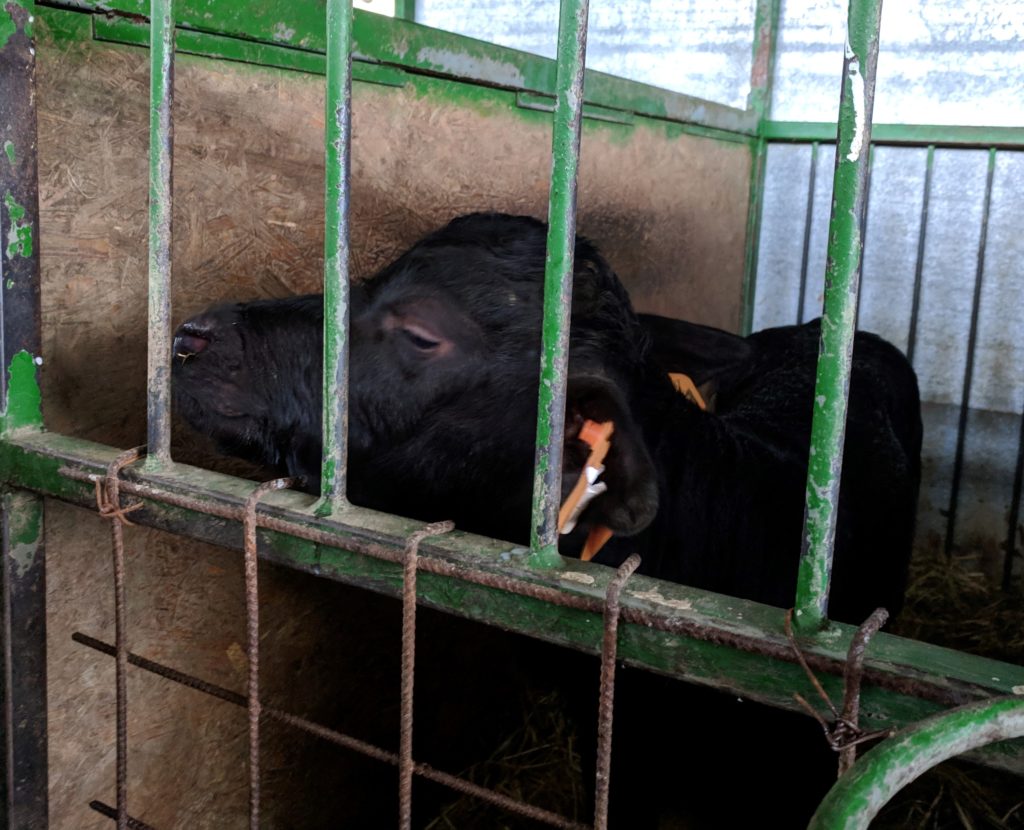
Back at school, after lunch, Chef reviewed all of the cheeses that had been made during the week and recapped the salting, aging, and conserving processes for each. Afterwards the four Cheese People went into the kitchen to make their own cheeses. The Masters students were briefed on the details for our next Menu Execution, our last effort before graduation.
